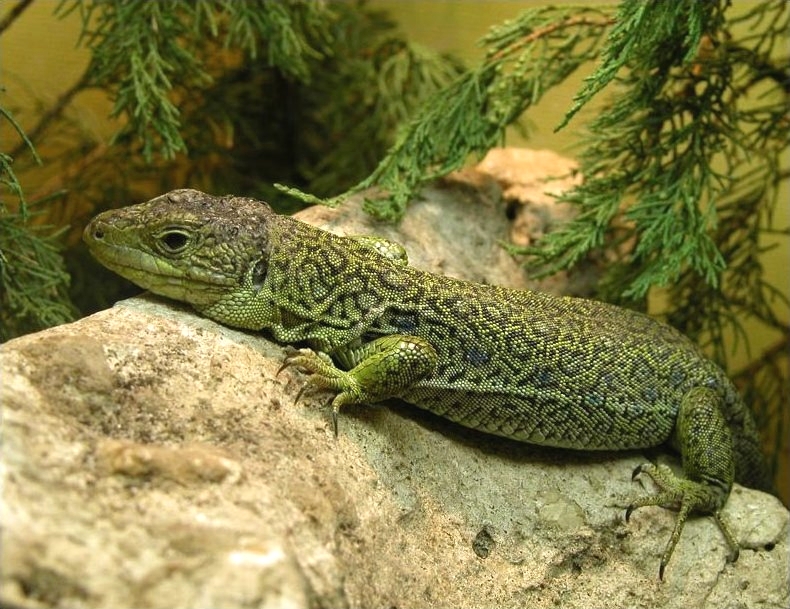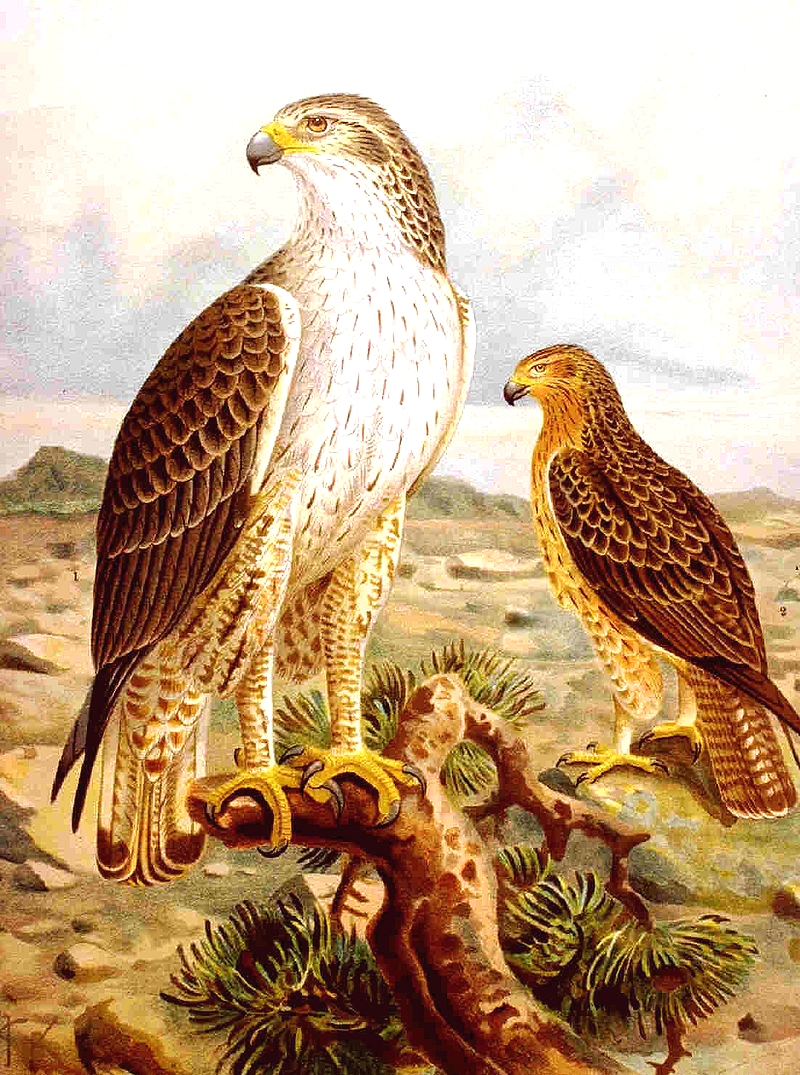Les Baux and the old
farmhouse
Two episodes are shot
here:
43
Message to Geneva
and
44 The Electors
Let's start with beautiful
Les Baux. The
French 'bau',
Provencal 'baou',
that in the south also occurs in other place names,
means a steep, overhanging
rocky point, in this case of the Alpilles. This began the history of the rock,
which was already
inhabited at the time of the Celts,and even during the new
Stone Age. That meant wars, but also prosperity.
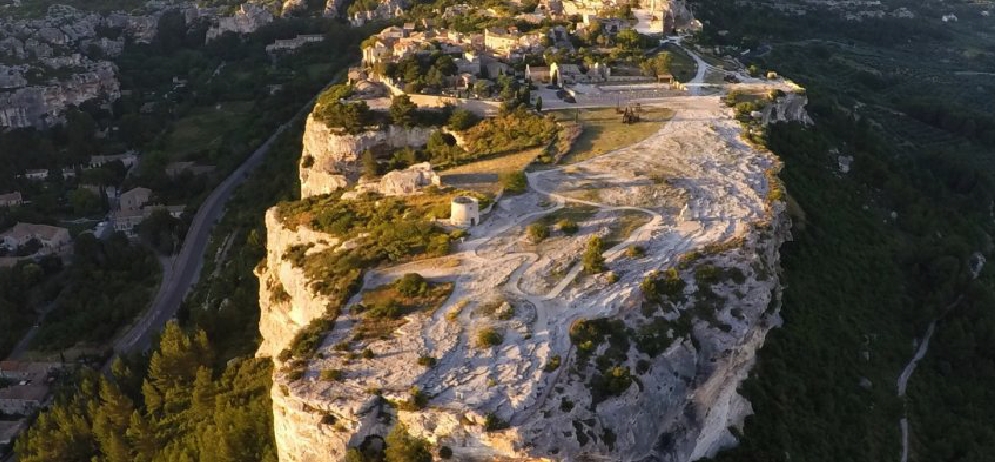
This photo shows the difference
in heigth of this
rock in the evening sun. Les Baux does a great job at showing you a structure that is, hundreds
and
hundreds of years old, and crumbling. All the climbings are for your own risc. With
children you really need to keep them with you. I once went on top during a
storm..
later we found out it was a thunderstorm. It was very rainy, misty
and a mistral was blowing strongly. To get on the highest tower you can to take a risky
steep stairs.
Later an enormous strike of lightning hit the tower. The whole castle was shaking. People with fear of heigths better don't look down and go with calm
weather.
Almost the whole castle is open and it's amazing! Below a stunning
place to view the whole surroundings! The stairs to that place are a challenge and
an adventure.
The highest point This use to be Les Baux
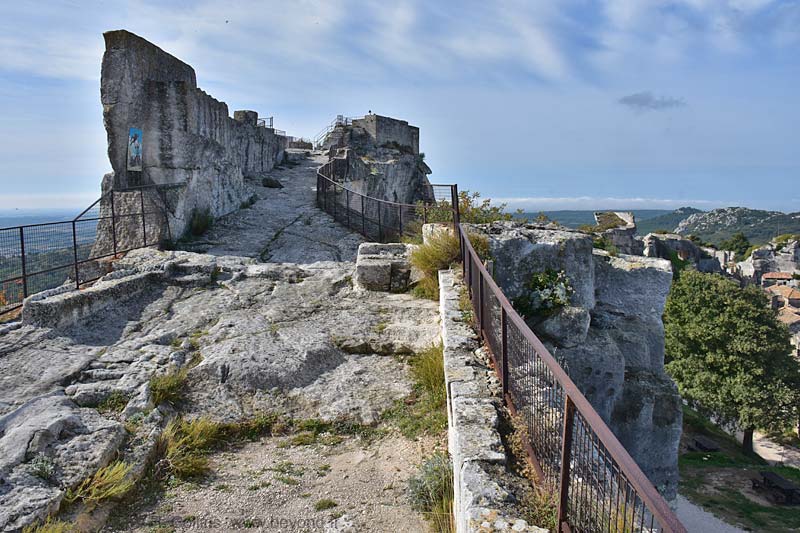
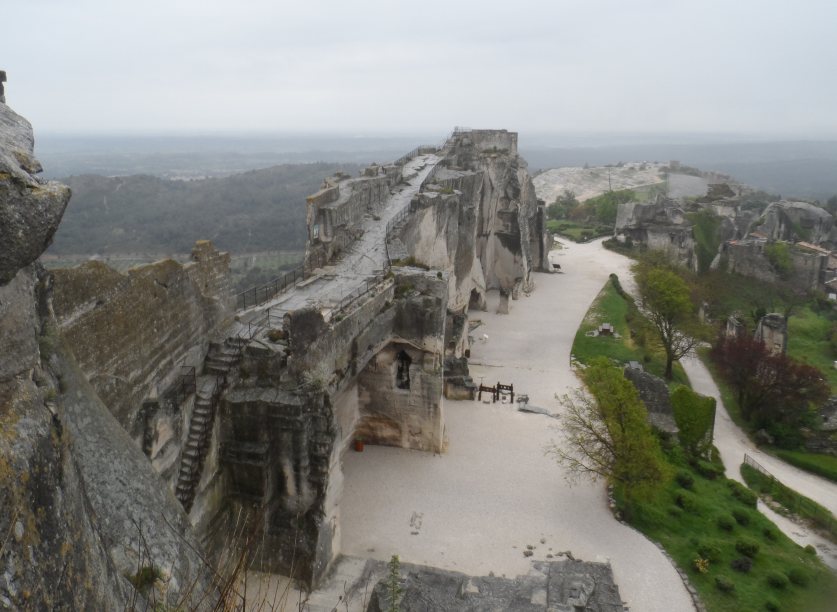
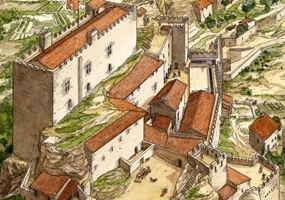
Les
Baux de Provence, back to the Middle Ages
In the summer months,
the medieval village of Les Baux de Provence is completely occupied
by tourists.
The village is visited by 1.5 million people annually. You can only get there on
foot, because cars are banned from the
village.
Only
22
people live in the high village, the entire village has
381
inhabitants. It makes
sense that Les Baux is so loved by tourists. The
villageis
beautifully situated in the
Alpilles
around the Château des Baux.
Les Baux is
included in the list of "plus beaux villages de France" (one of the
most beautiful villages in France).
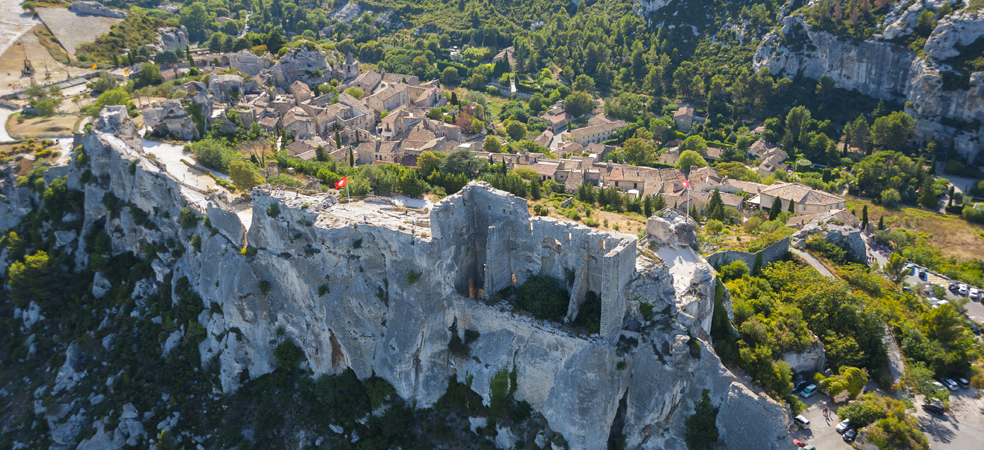
The castle of Les Baux was a massive fortification on a site that, because of
its ideal situation for defense, has been inhabited since at least two centuries
BC. References to the castle pop up
starting in the 900s AD, and the court there
had a reputation for its finery and pomp. (A display on dining quoted a fragment
from a travelogue where, if I recall, French travelers were being marveled
at by
other travelers for their use of tools, or something like that.) As you can
see, the castle doesn’t look like a lot today. Why? Because it was built a
thousand years ago, and in the course of
history, demolished a couple times when
the occupants lost a key argument. Today it’s a major tourist draw and no one
has tried to rebuild its walls. Instead they draw your attention to the parts
that,
eloquently, remain: a chapel, an arch etc.
Bauxite
Some of the world’s first bauxite mines were in the region around Les Baux. Bauxite is an aluminium mineral consisting of one or
more aluminium hydrates. Discovered during the 19th century
in several parts of
the world it was from samples from Les Baux-de-Provence that in 1858 double
aluminium chloride was successfully made from which the metal is easily
extracted.
This success earned the village of Les Baux-de-Provence the privilege of
having bauxite named after it. France remained the largest producer of bauxite
until 1939. The aluminium extracted
from bauxite has been used in industry since the end
of the 19th century. It is the most commonly used non-ferrous metal: light,
stable, a good electricity and heat conductor and endowed with
good mechanical
resistance in certain alloys. The name
bauxite (Aluminium
ore) is derived from the village name when it was first discovered there by
geologist
Pierre Berthier in 1821.
The ore was intensively mined until its exhaustion
at the end of the 20th century.
The steps in the middle of the castle
These steps were nearly 1000 years old. According to the
sign at the top, many people never went back down–they were tossed from the top
as a punishment. But to access the highest points at Les Baux,
one must climb
and navigate some rocky paths and stairs. The worn out steps showing their
incredible age. The steep steps on the edge of the castle. Below the photos of the stairs on the edge of the
castle.
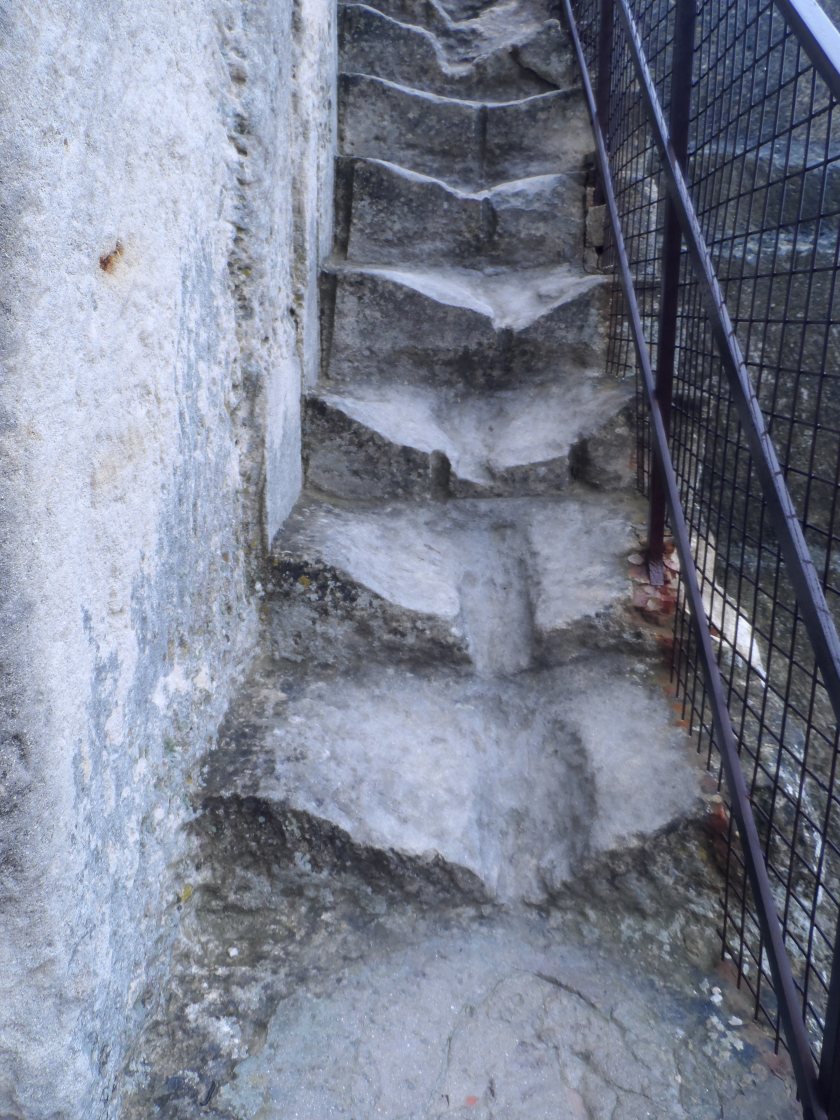
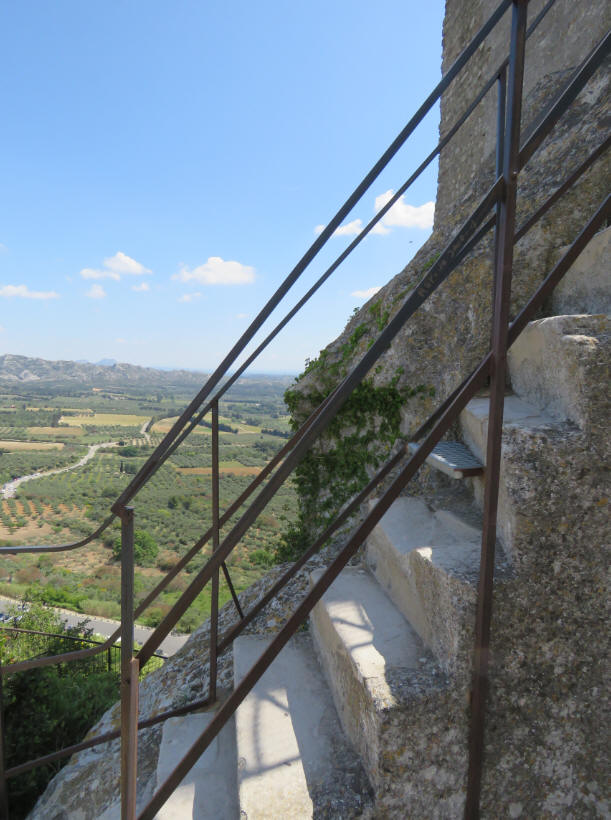
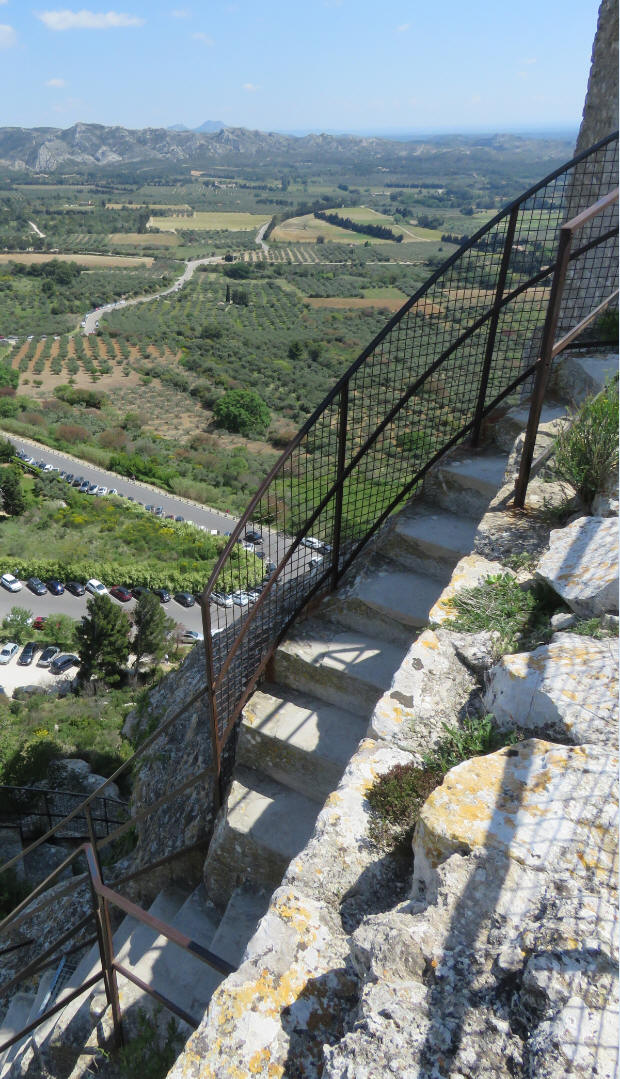
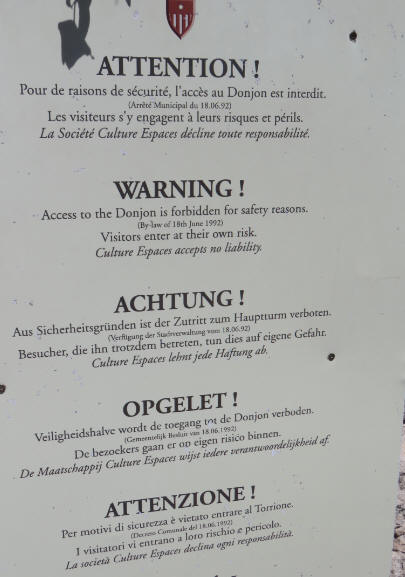
More photos and information at the bottom of this
page.
Episode: The Electors - Les Baux plateau
'The Electors' started in Les Baux at the
plateau and the
dovecote. Then they switch locations:
the old farmhouse near Arles, Montmajour and
Tarascon
Below: Brother, sister and their father (The duke of
Bern), one of the duke electors can make a difference for Gessler with votes.
Left: Cagnard, son of Cagnard horsestunts.
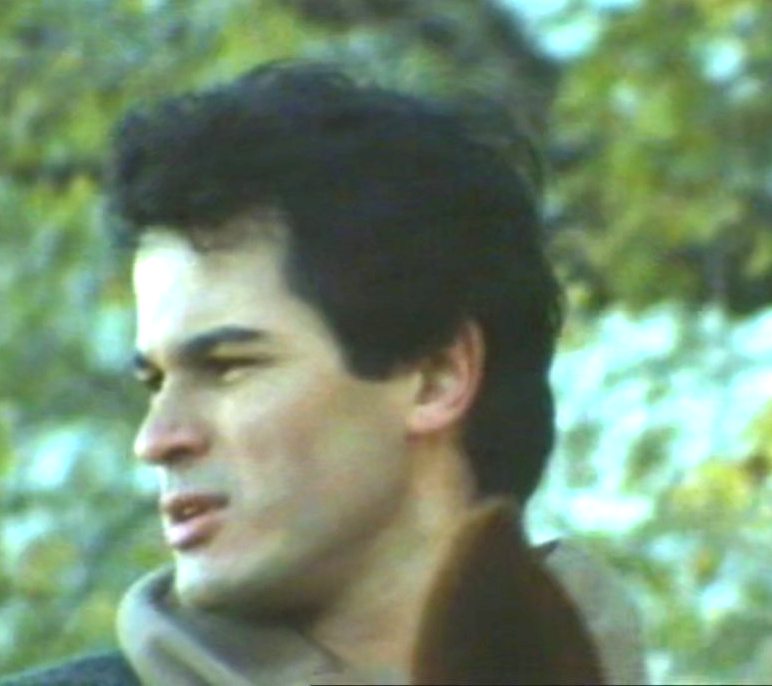
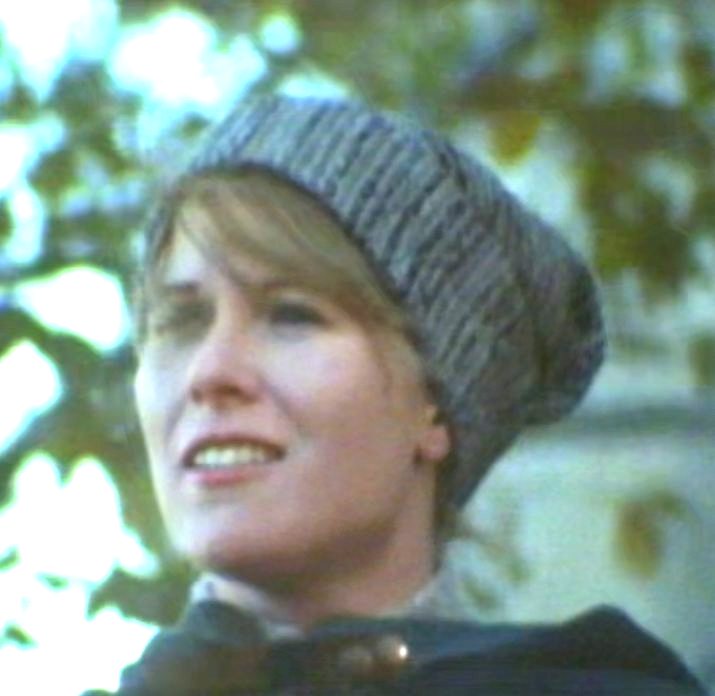
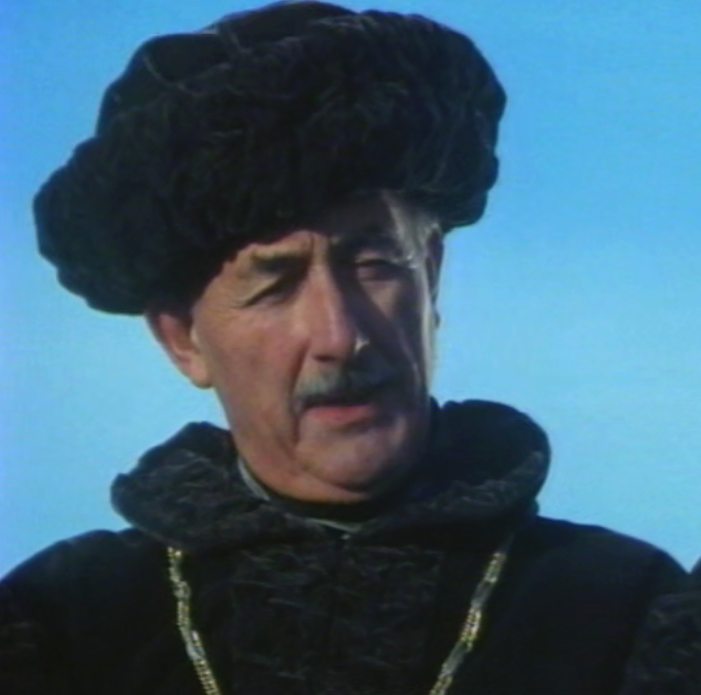
1987
2014
Les Baux, during the middle ages.
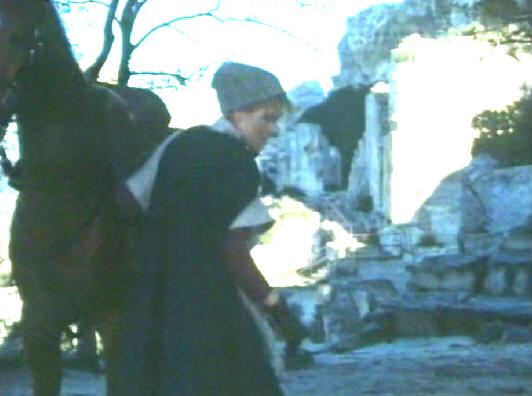

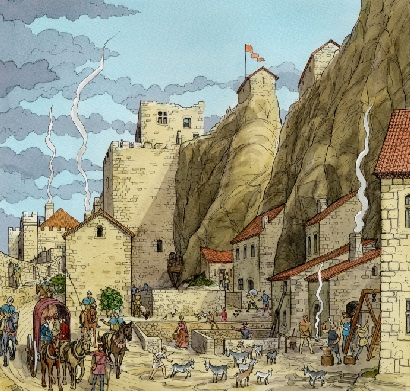
1987
Between the castle and the old town
2017
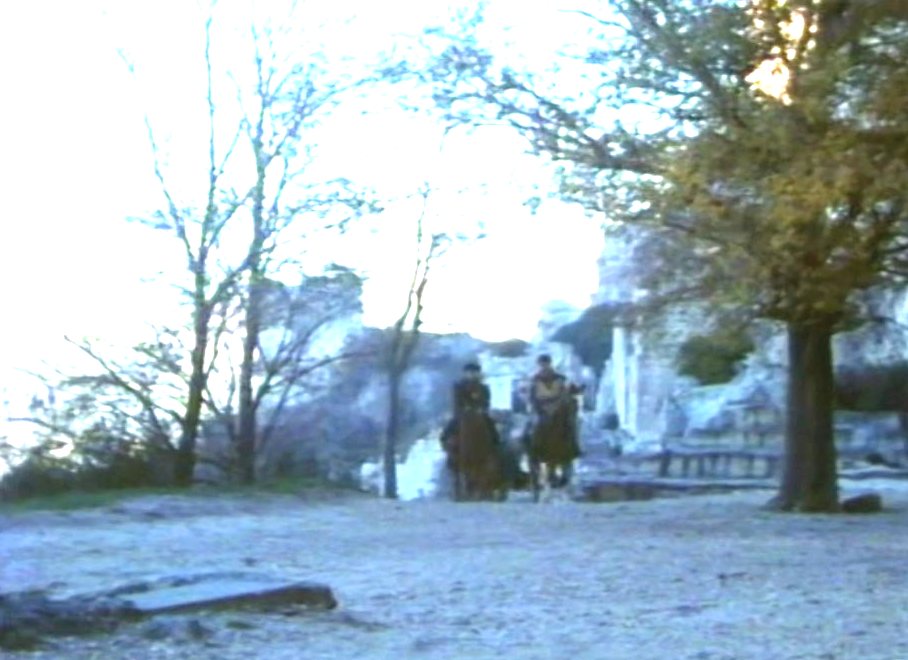
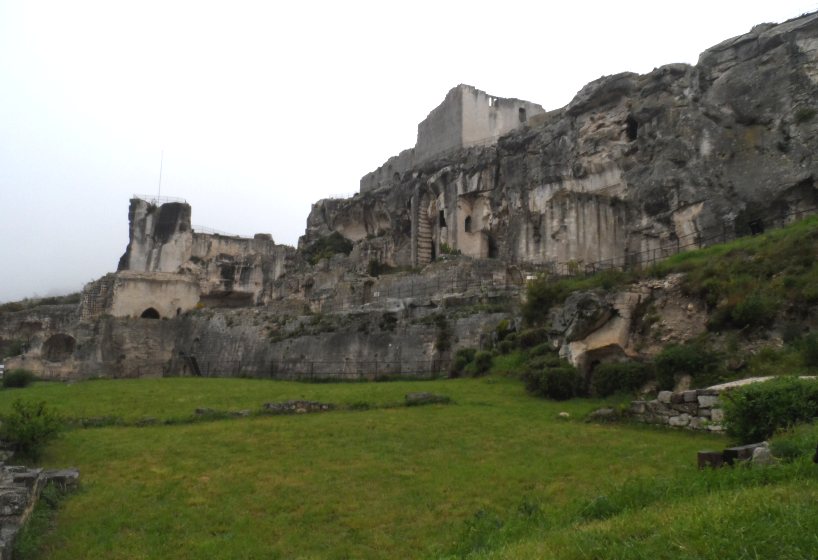
At the beginning of the plateau
- Horst is expecting the duke of Bern, one of the electors,
who can make the difference for Gessler.
Location: West side of the plateau
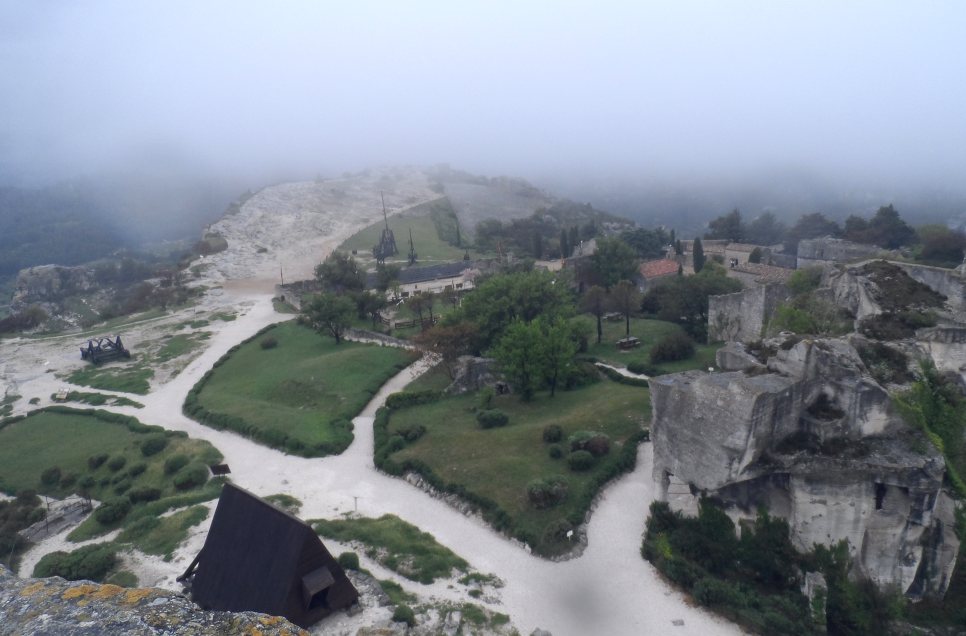
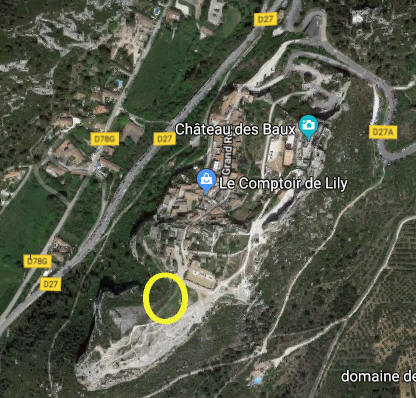

The second photo of the left: I believe this is William Gagnard, son of Andre
cagnard. He and his father design equistrian shows.

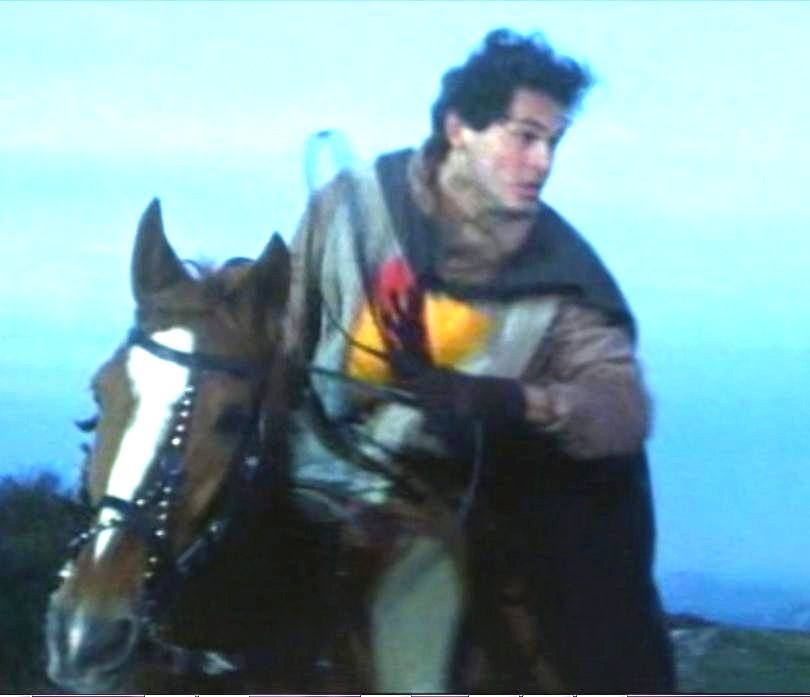
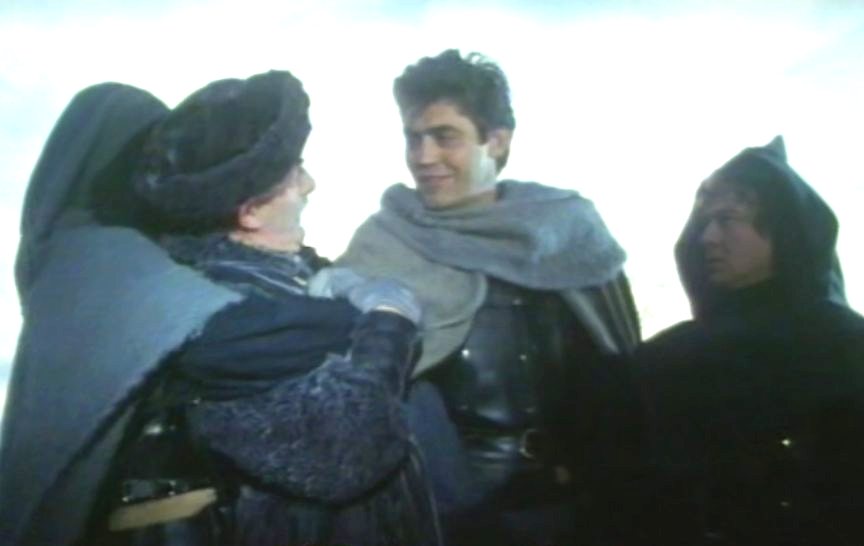
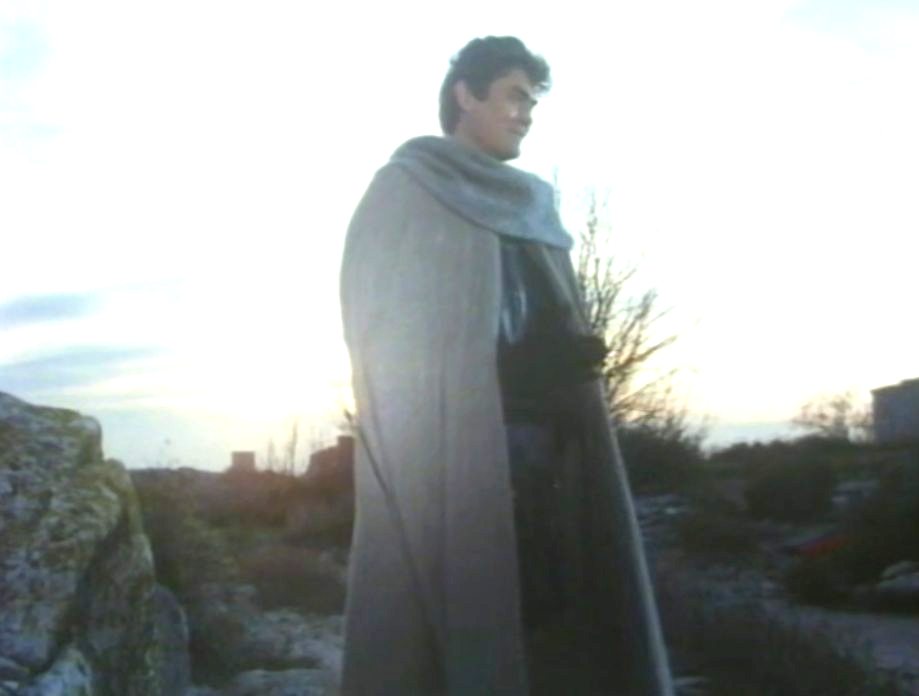
The hunt -
Nice shots on this plateau. During the summer too toeristic, even back in the 80
ties.
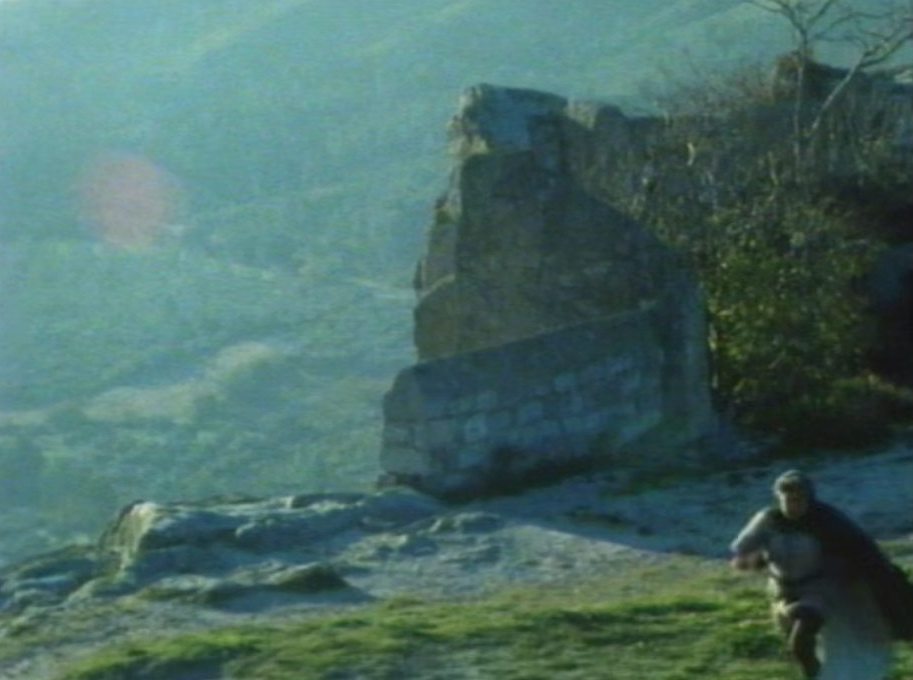
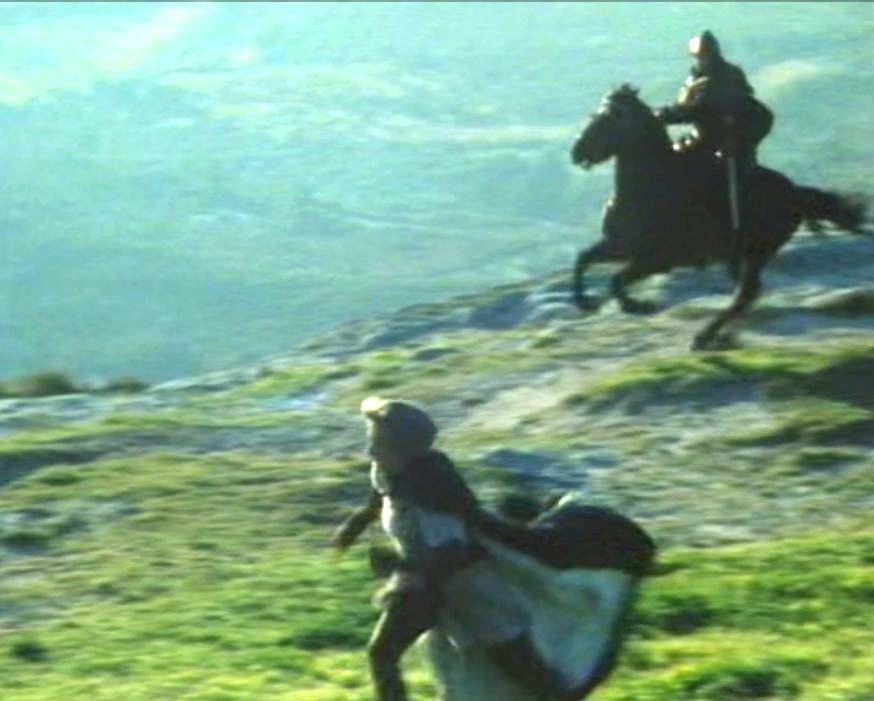
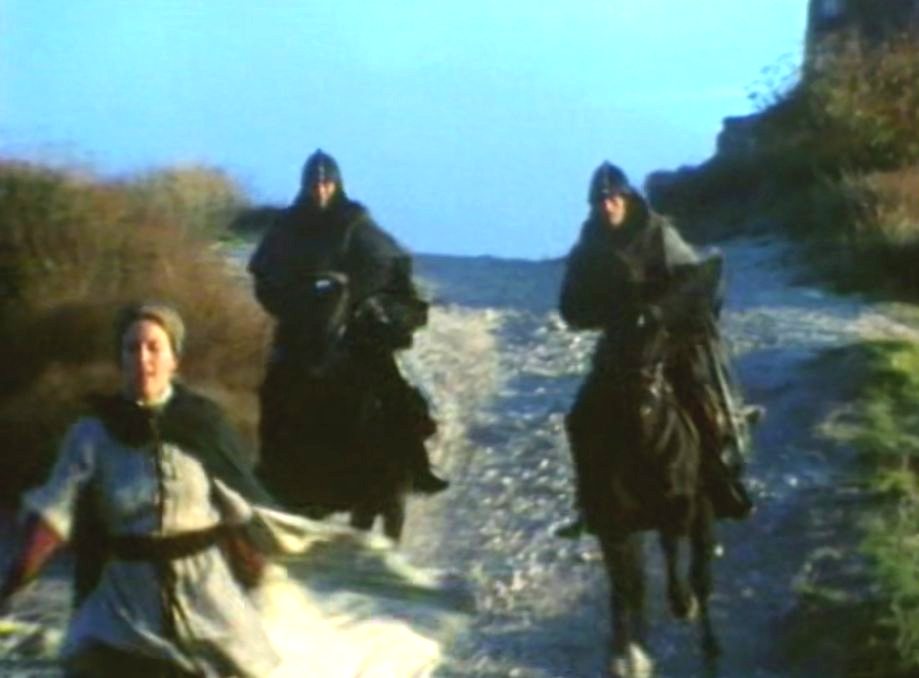
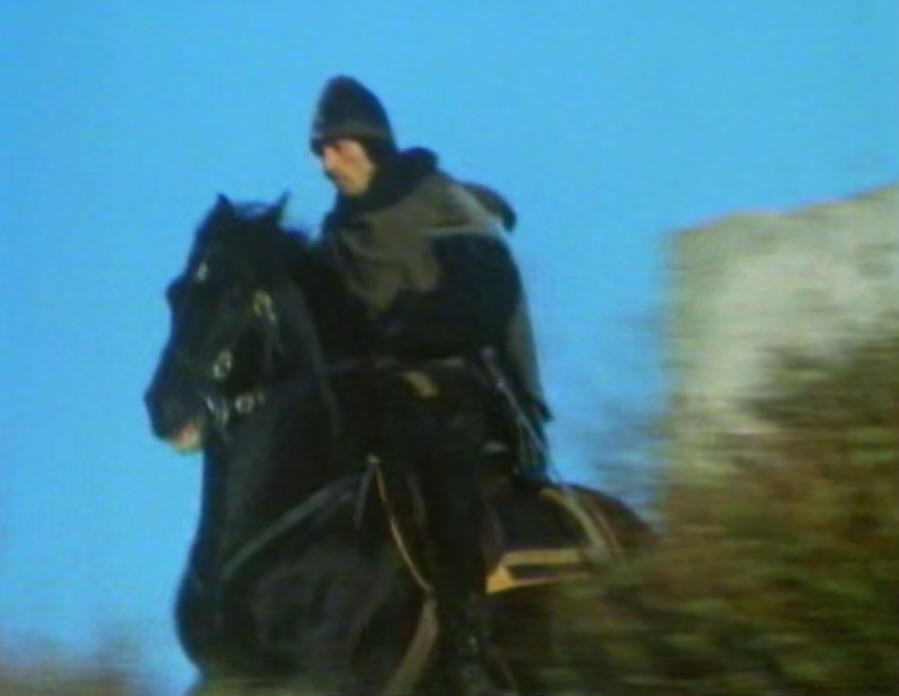
It was recorded on this part of the plateau. Left the road to the castle.
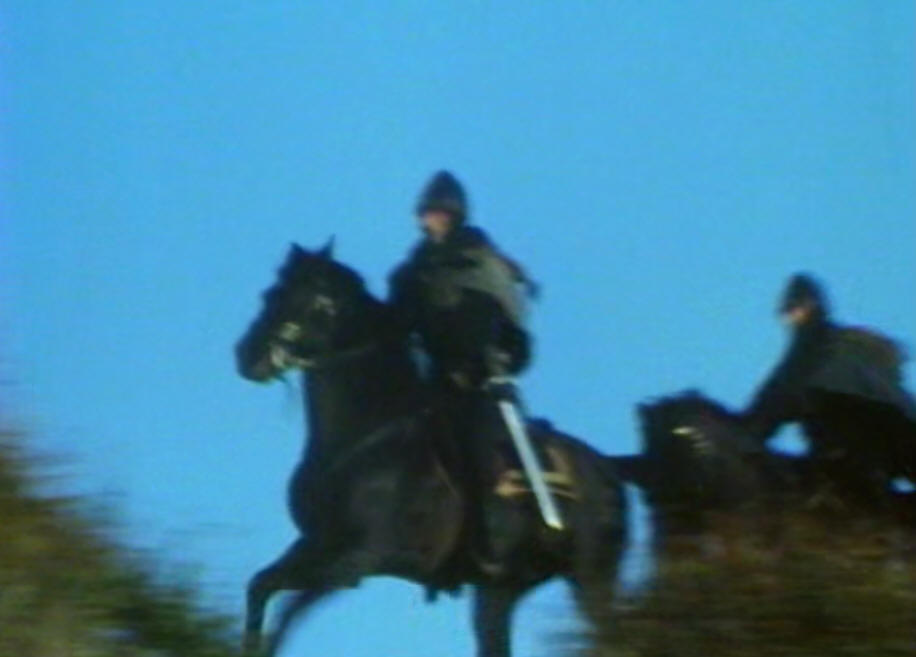

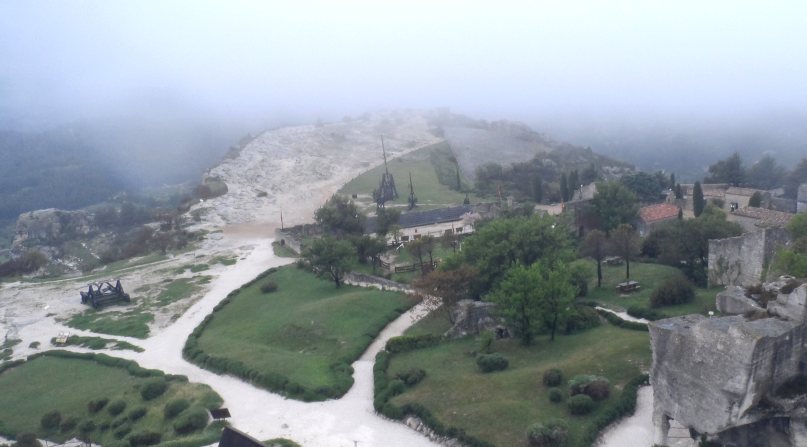
The Dovecote Les Baux
A drawing of how those pigeonniers must have
looked like a hundred years back.
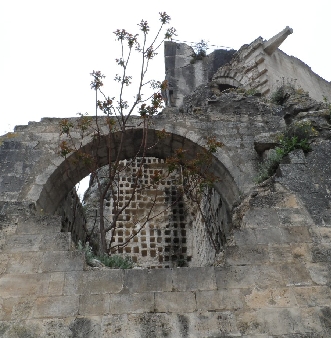
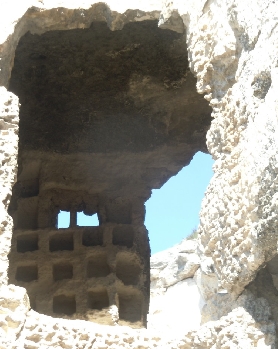
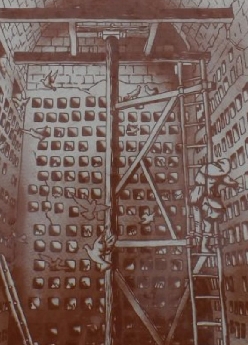
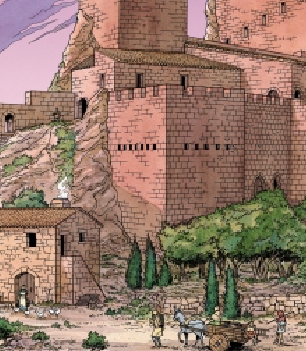
The right to own a dovecote was originally a
lordly
privilage that was abolished in Provence at the end of the
17 th century. Succulent pigeons were much appreciated fare on
noble
tables, while their droppings played an important role as fertiliser. Not all
the birds were killed for food.Some were used as a carrier pigeons, as they
could swiftly bear messages
over long distances with minimal risk of
interception. The dovecote opens to the south, sheltered from the cold blast of
the mistral inside, the nests are hollowed out of the
soft limestone.
The castle
has two dovecotes carved out of the rock, this one and another in the outer
farmyard.
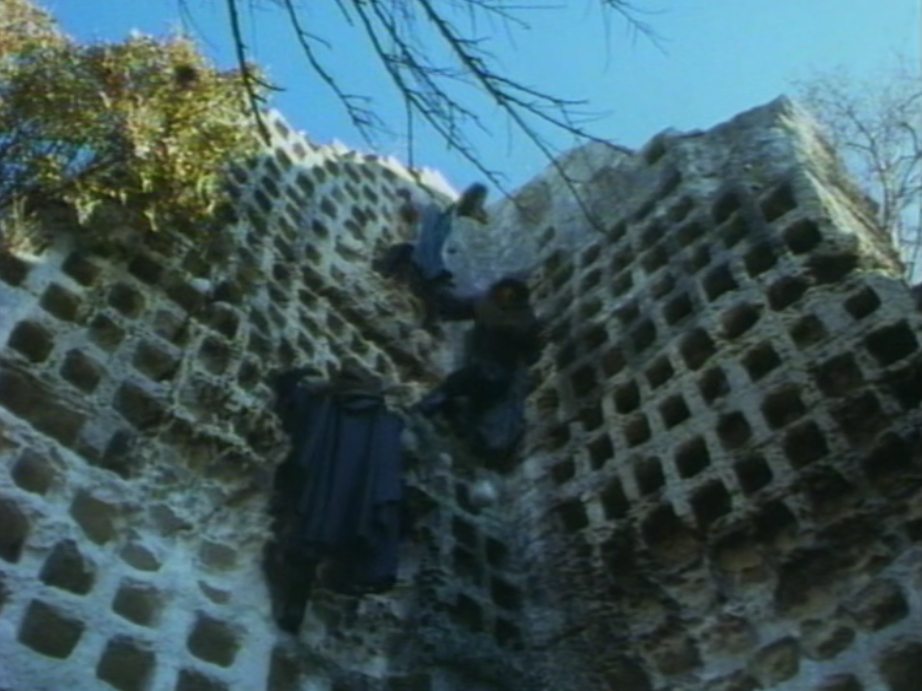
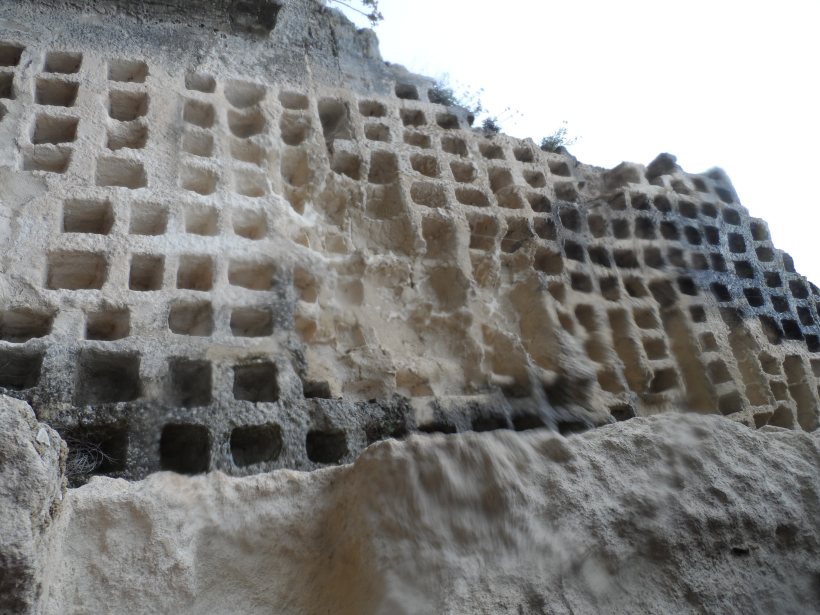
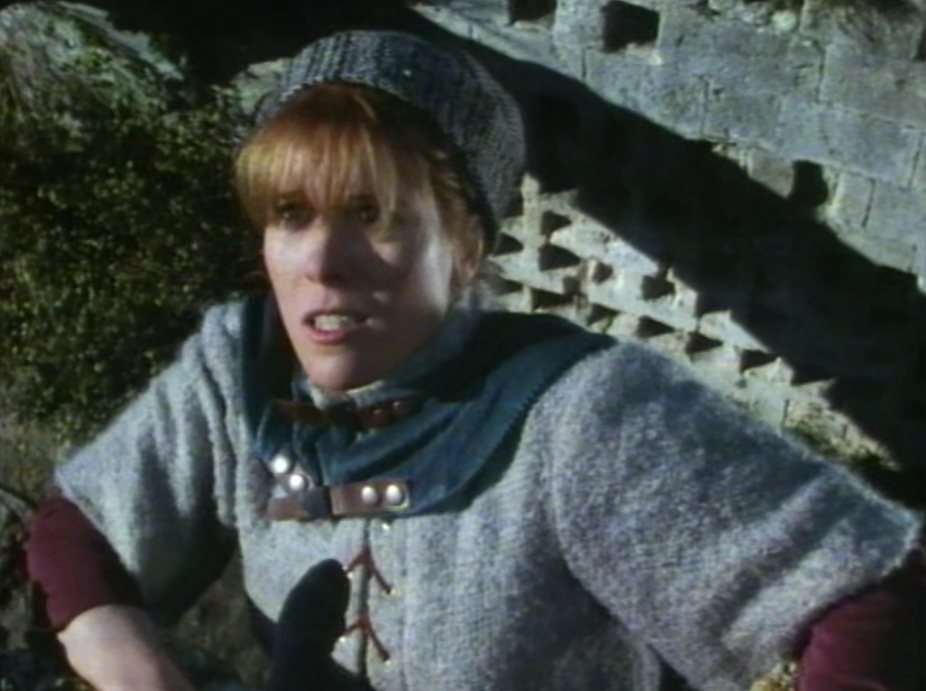
The floor used to be on the same level as this
arcade! But in
time they probably dug it out. The arcade is also restored. So the wall under the arcade is visable again.
You can see a level difference nowadays! Perhaps to protect
the pigeonniere against visitors or they want to show the orginial part of the
wall around the pigeoniere.
Scene:
The duke's daugther climbed the dovecots hoping to get rid of her enimies.
1987
Here the girl walks on the same level into
the place.
2014
2014
See the level difference nowadays
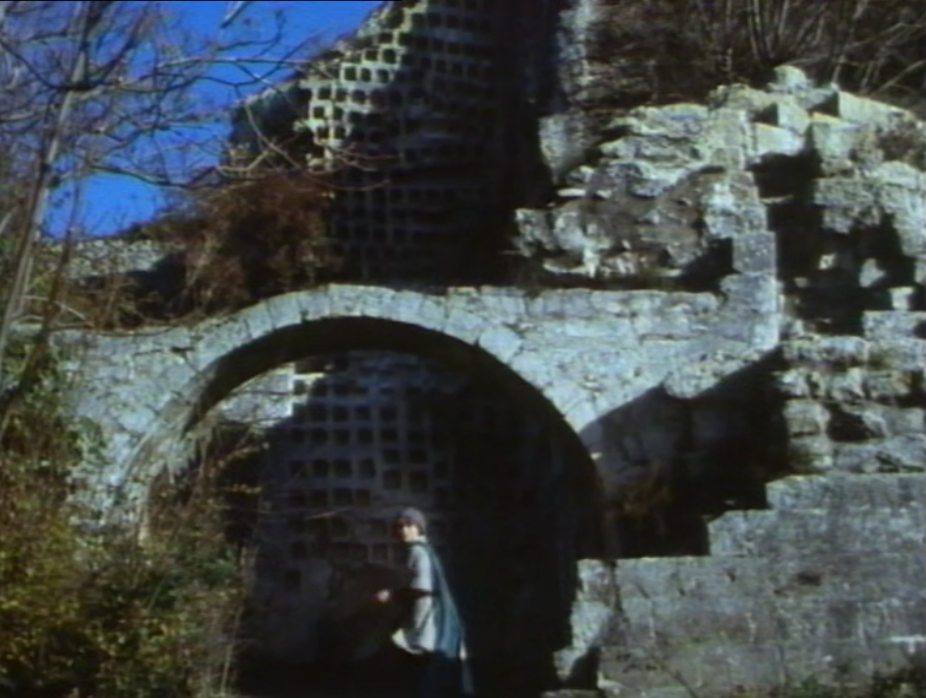
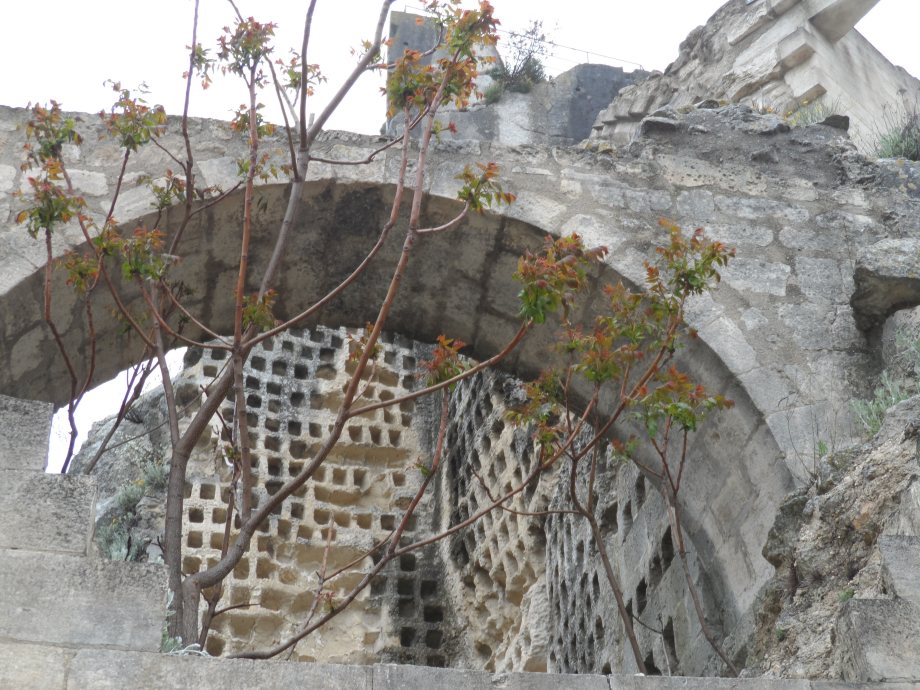
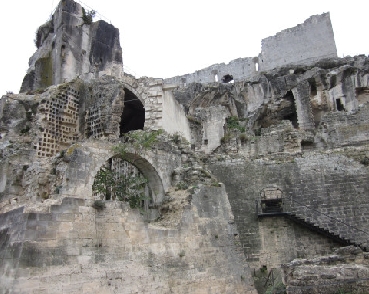
In front of the arcade
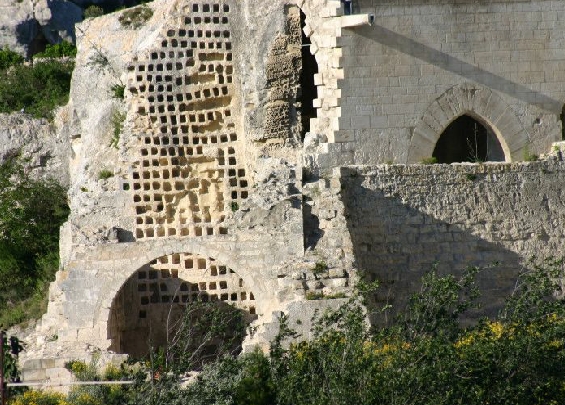
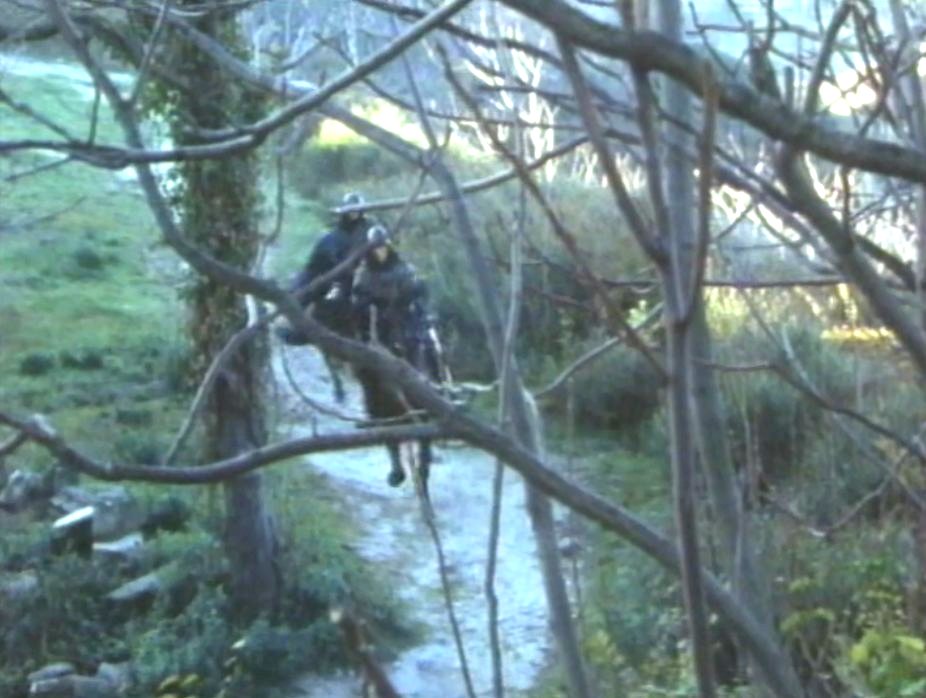
The erosion of the Sarrasine tower
The tower seems to be plagued by erosion, the tower is
held together by anchors and has all kind of bursts. The two photos are made
from a different angle but
at almost the same time. The tower seems to be
standing crooked. The different stone blocks of the towers are connected to each other by
anchor/plates.
1987
2015 The tower you see in the background
2015
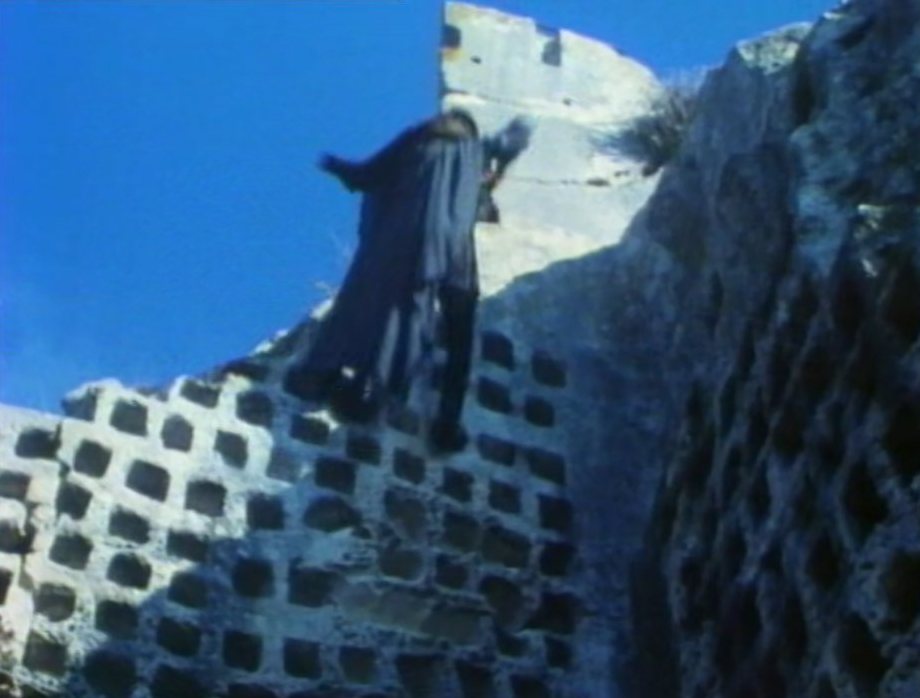

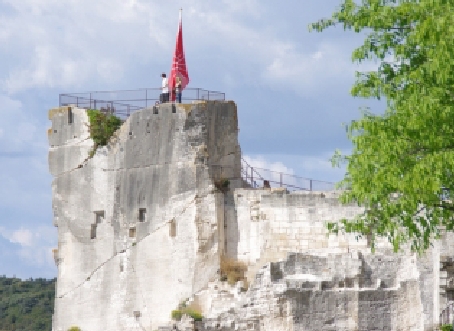
The tower at
2019 with the dovecotes left of it.
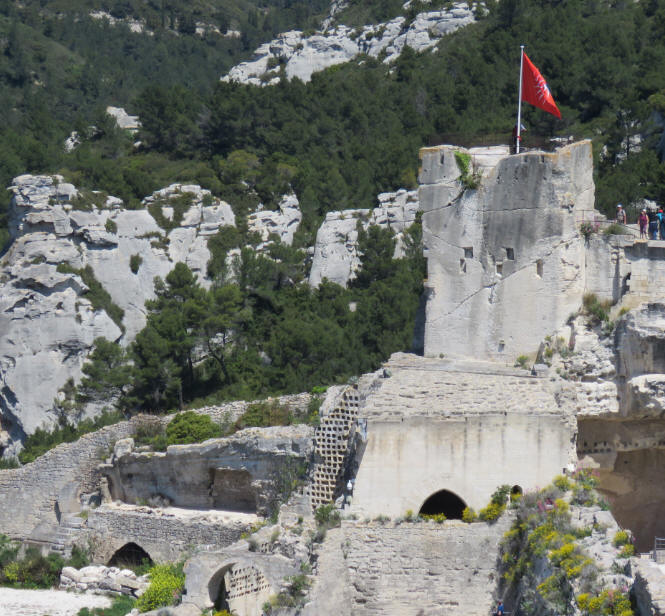
Les Baux the plateau in
´Message to Geneva´
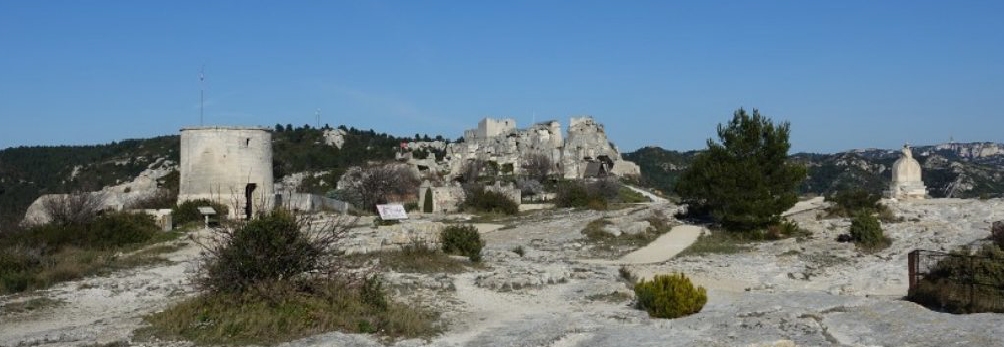
The ridge
- In
'Message to Geneva.'
They are sitting on the plateau with this rocky silhouette
in the background.
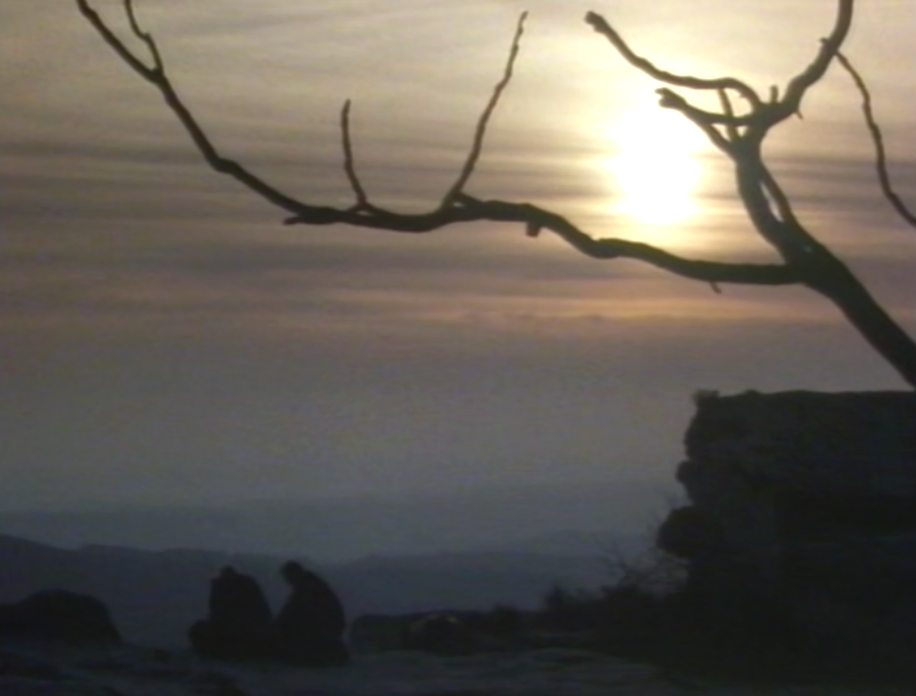
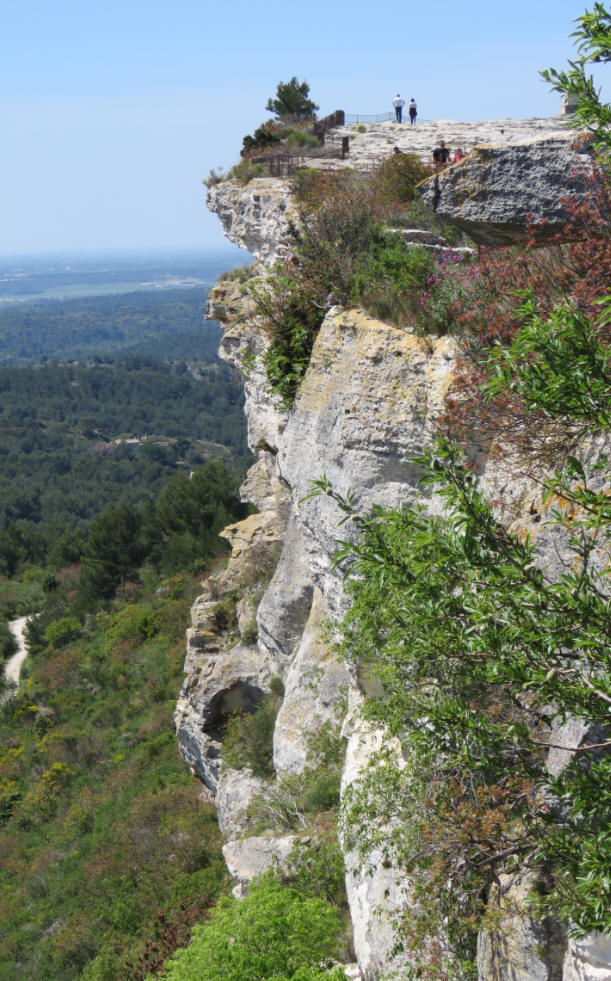
Great
plateau! With an old water reservoir, mill and a monument. A nice view! The photo is taken from the plateau.
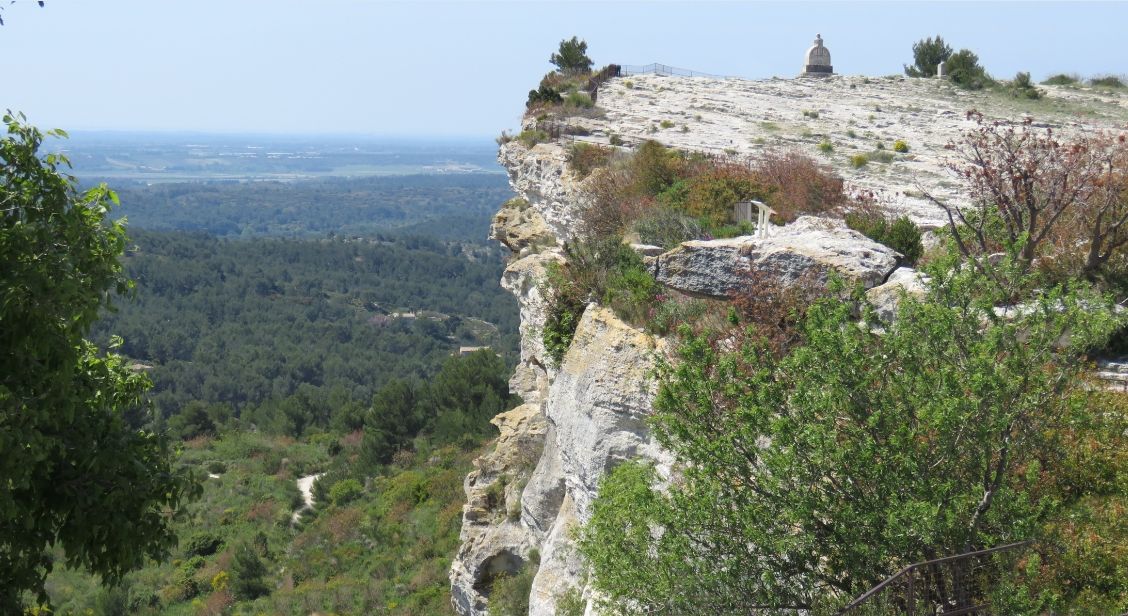

1987
The first rock is Tell on. Camera view is a little bit more to the right.
2018
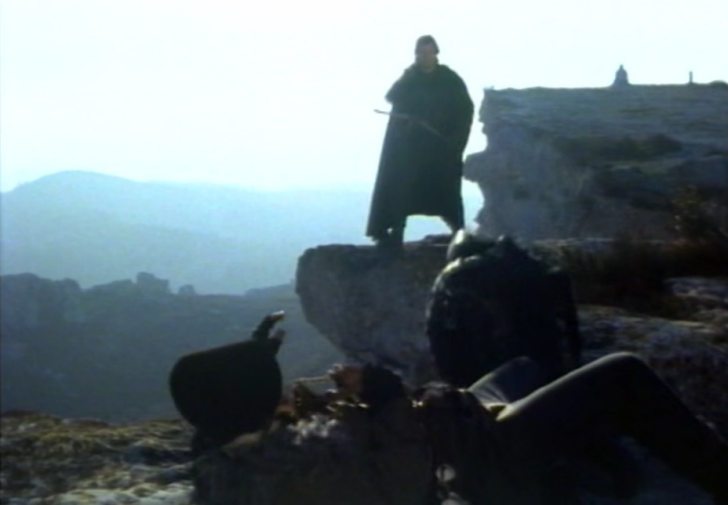
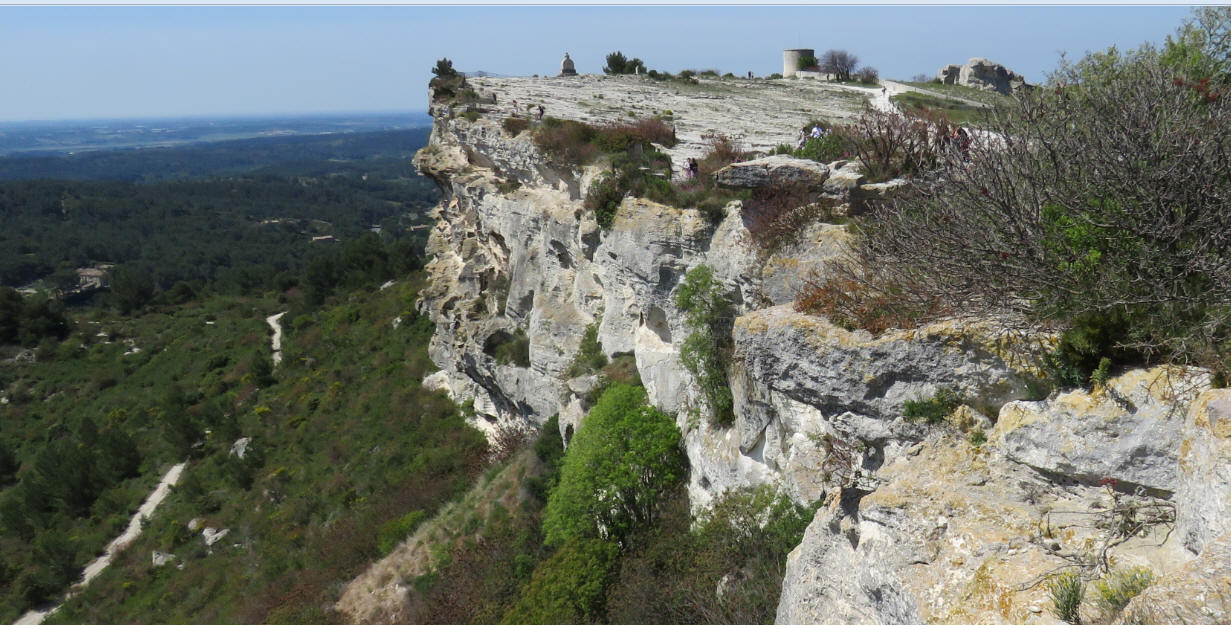
The rock with the bush on it.. This ridge now has
fences everywhere
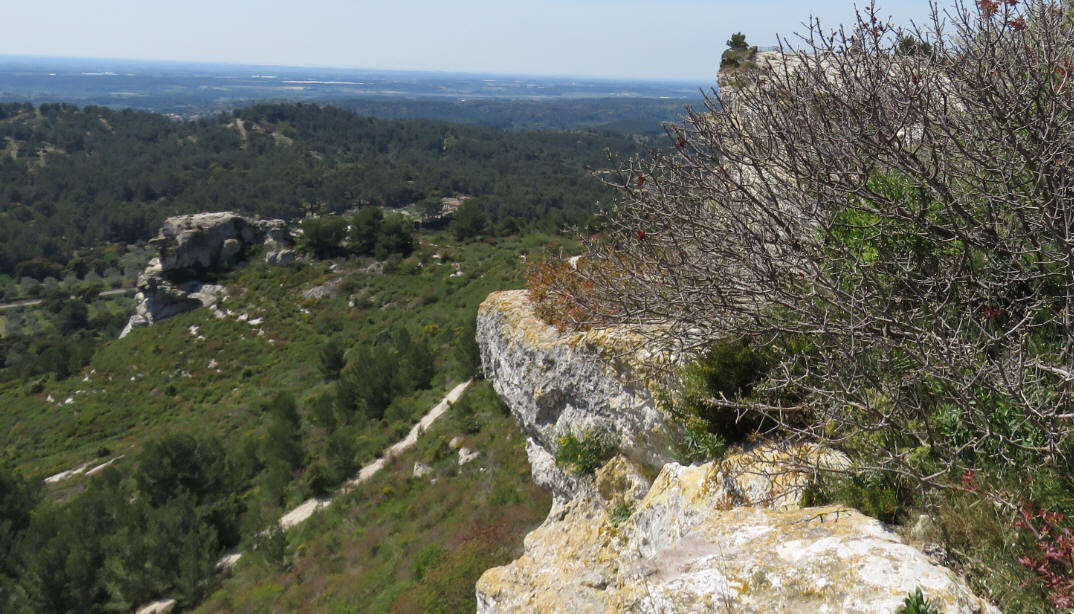
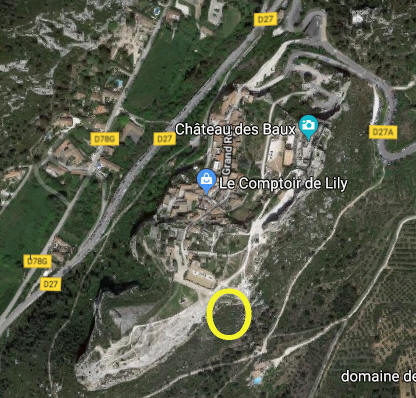
1987 Tell and
Albert heading to Les Baux
2014
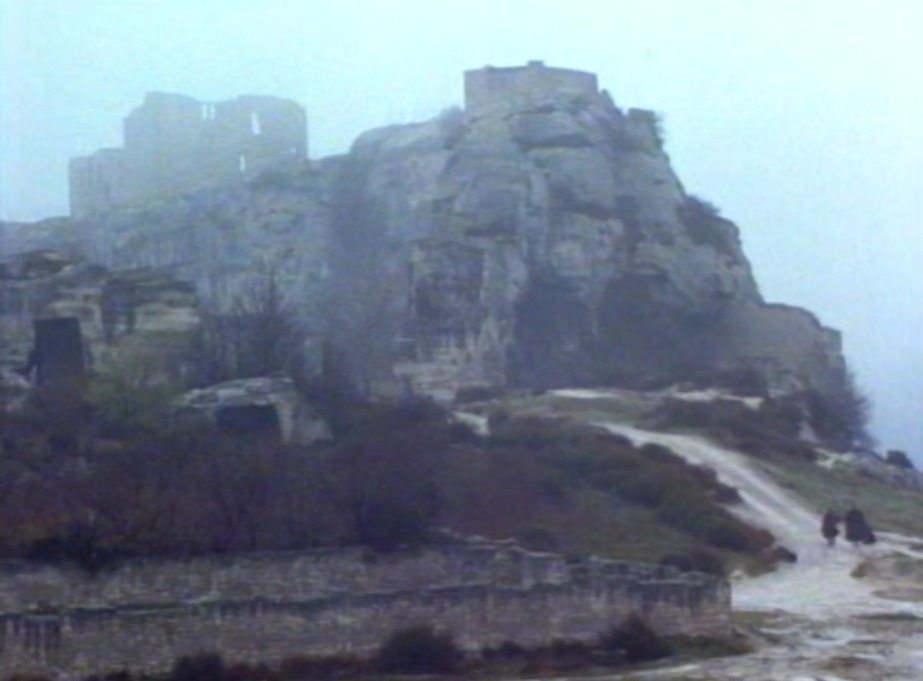
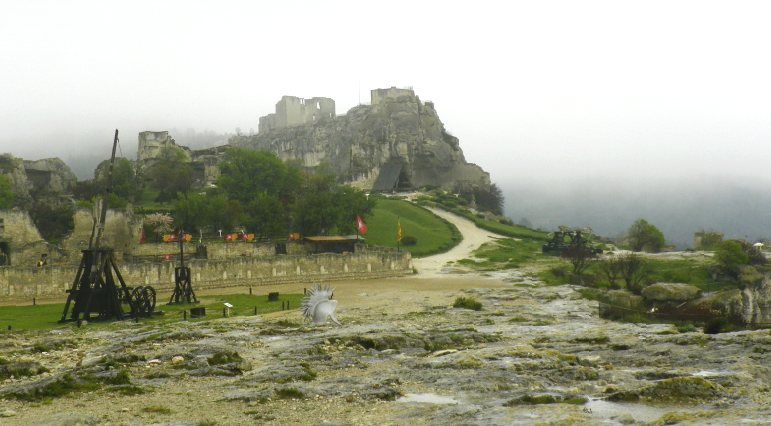
May 2019 with small lavender fields
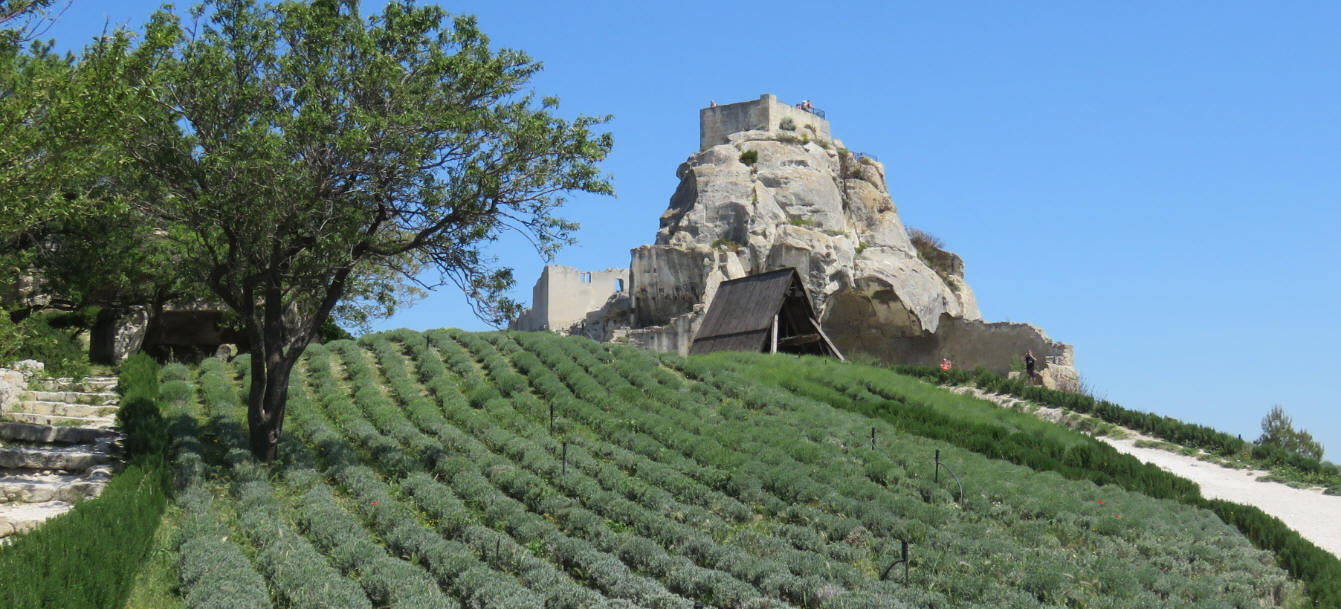
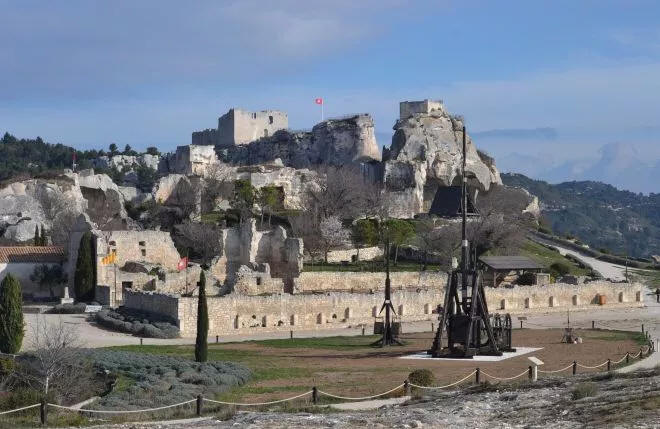
Nice view
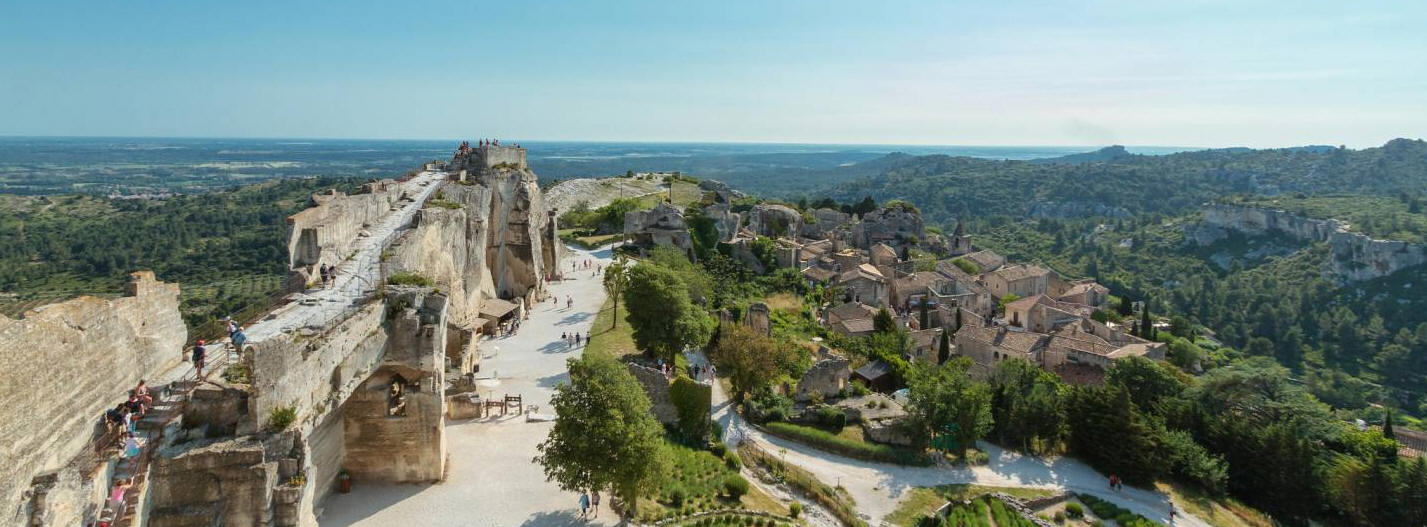
The ribbed rocks
Beautiful part of ribbed rocks of the massif des
Alpilles, these ribbed ones can be seen in Crossbow. They are east of Les Baux
castle.
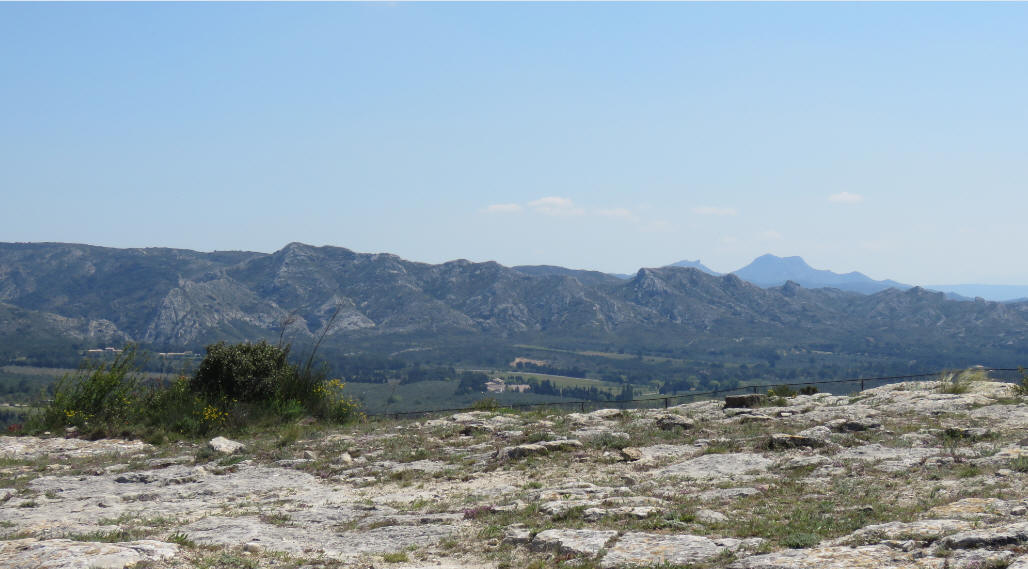
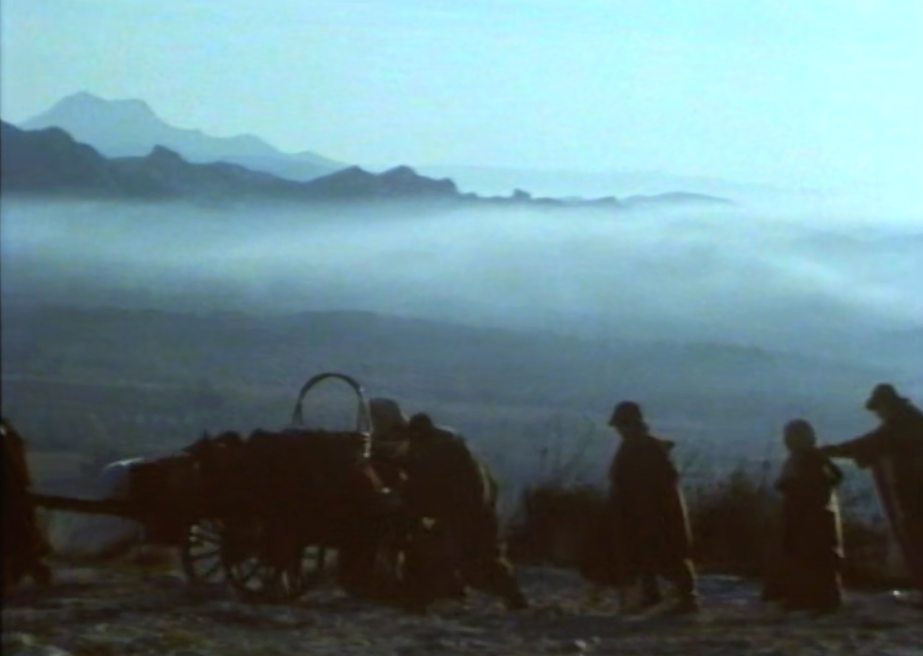
Above (shot from Message from Geneva) and below
the same place
´Message from Geneva´
(same spot as Amnesty -
right picture)
(the only shot of Les Baux
in episode
´Amnesty´)
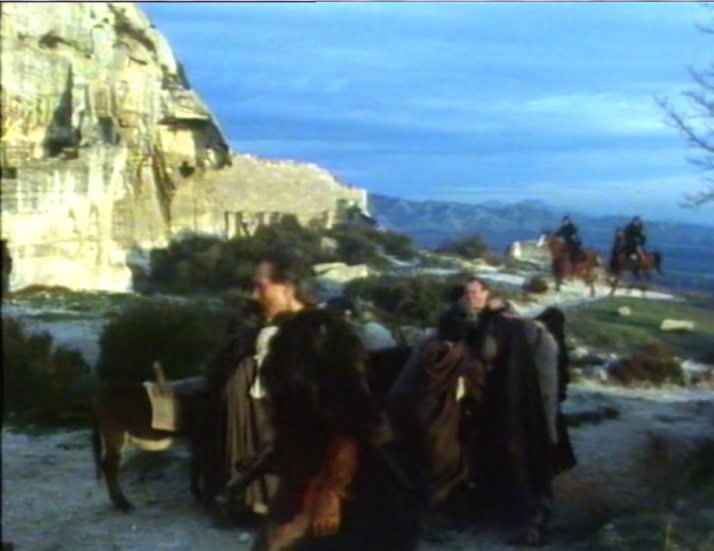
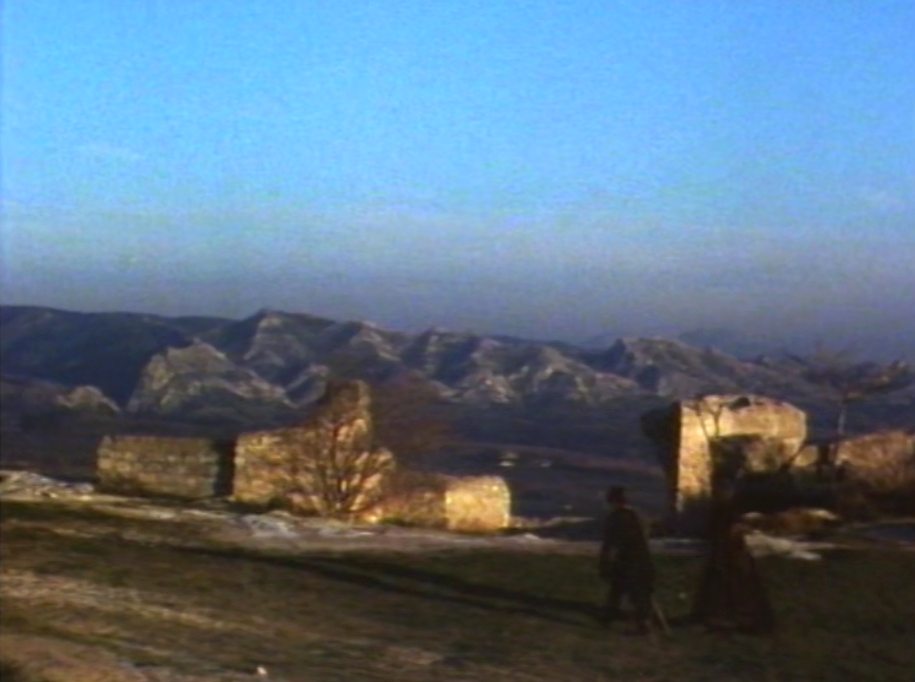
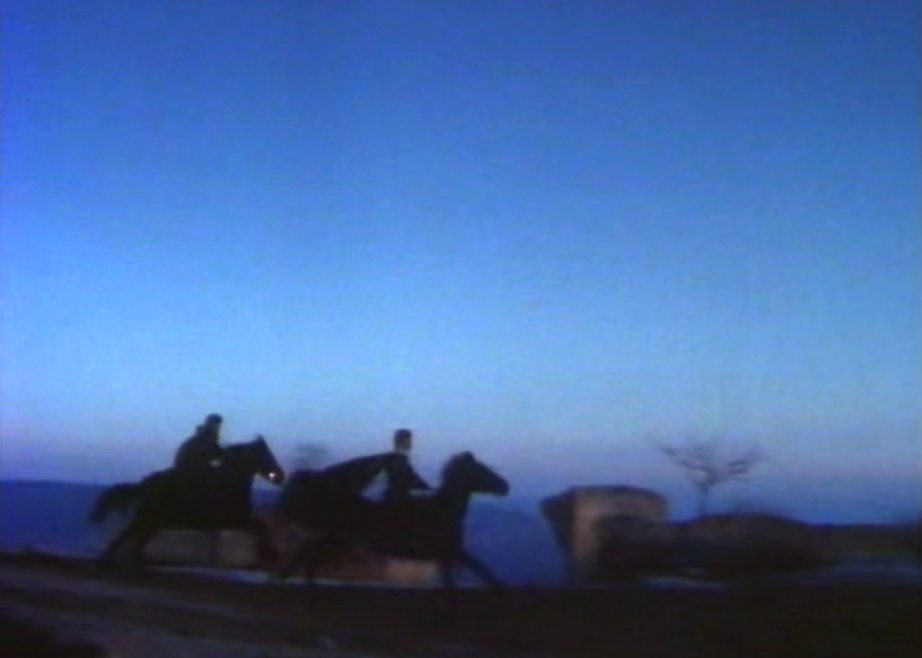
The ribbed mountains in the back. About the monument you can read more down this
page. On the plateau
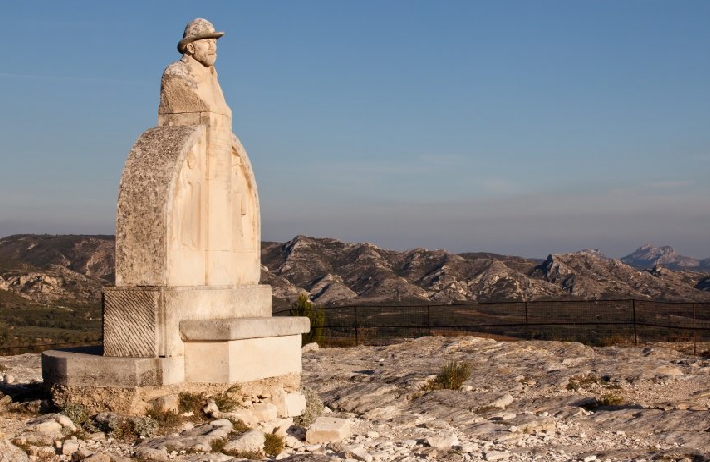
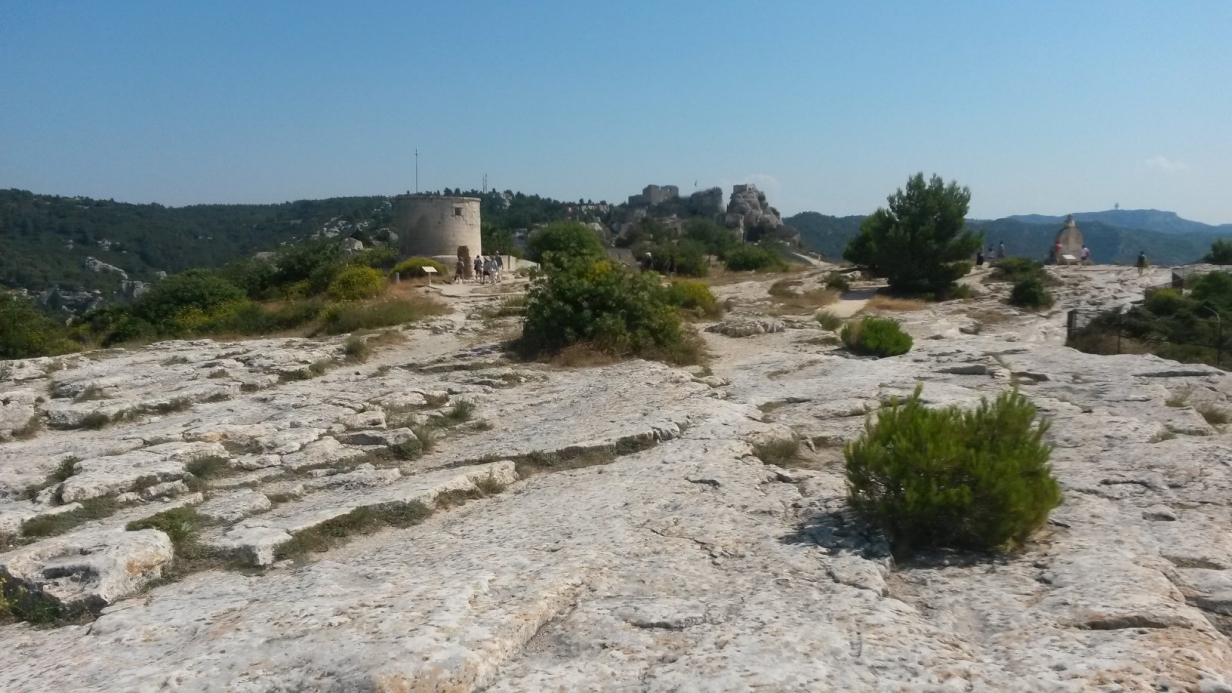
The old windmill
and the monument
'Message from Geneve` at Les Baux plateau
1987
2014

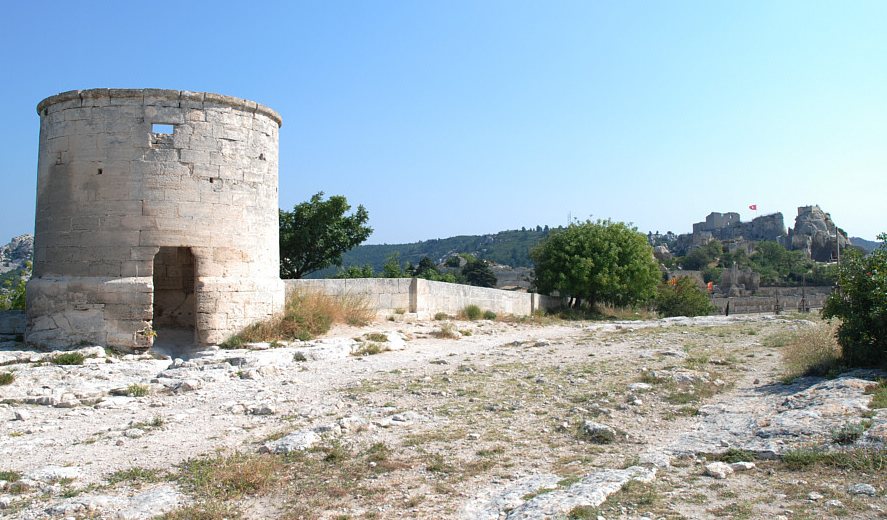
The Baux outcrop, on which
the monument stands, gave its name to the site because ‘bau’ in
Provencal means a rocky escarpment. The steep escarpment, which is
between 20 and 45 metres high, provided the castle with a natural form
of protection against an attack from the plain below. The carved
stone face of
Charloun Rieu
will now forever gaze over the extraordinary
panorama that stretches out before him.
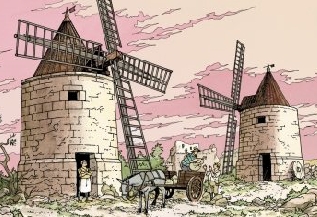
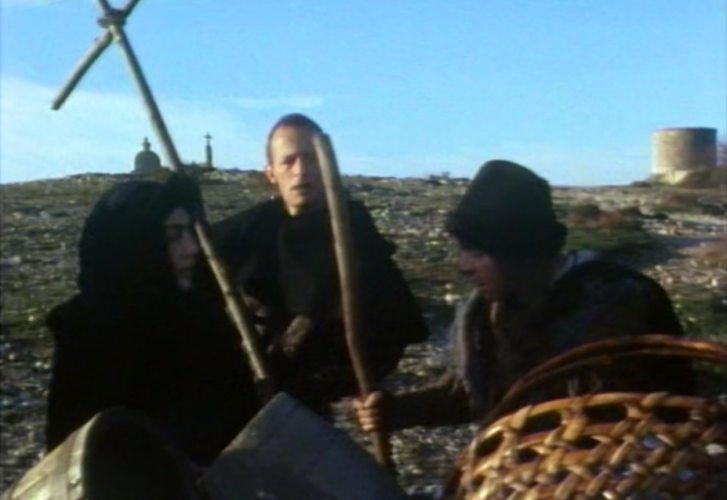
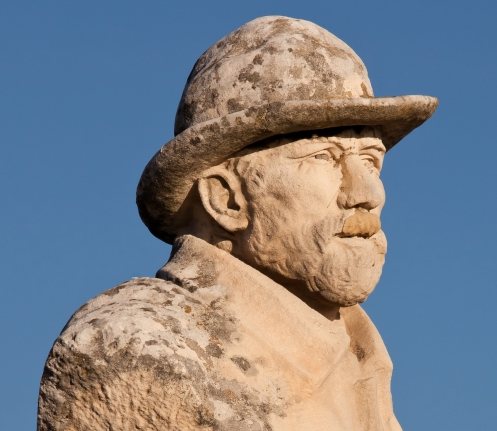
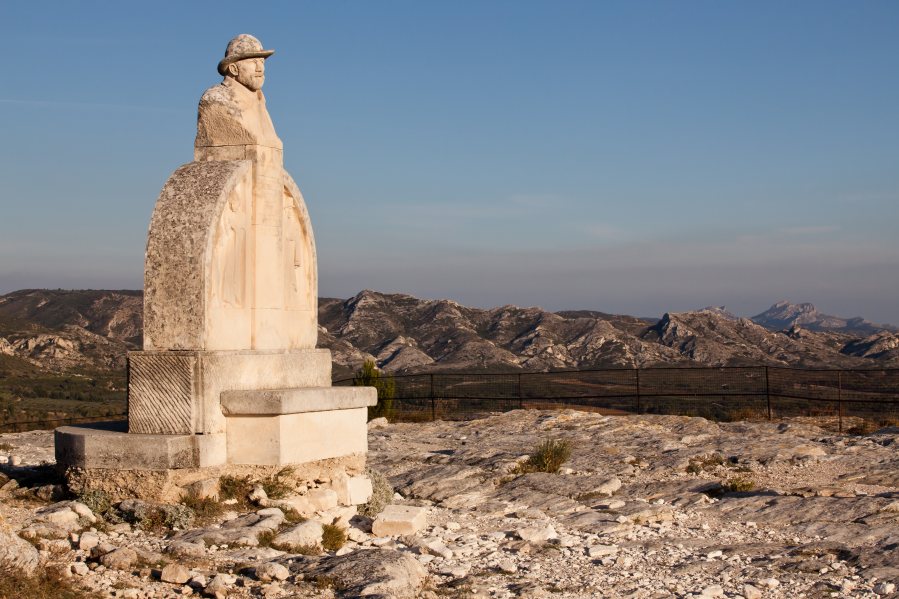
For some
reason the cross is taken of the pedestal or it was put there for this
scene..
In opposite

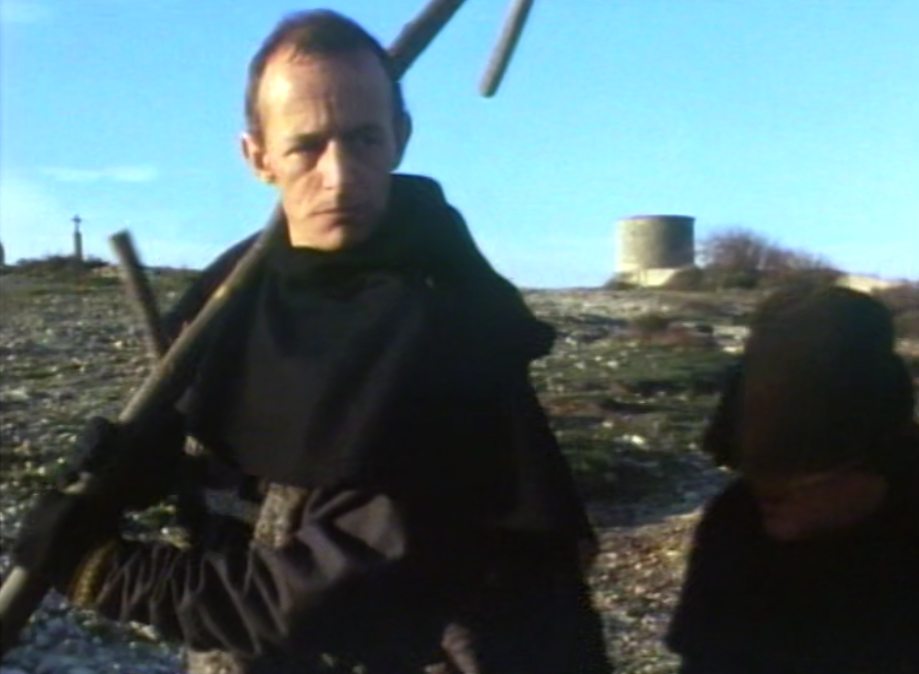
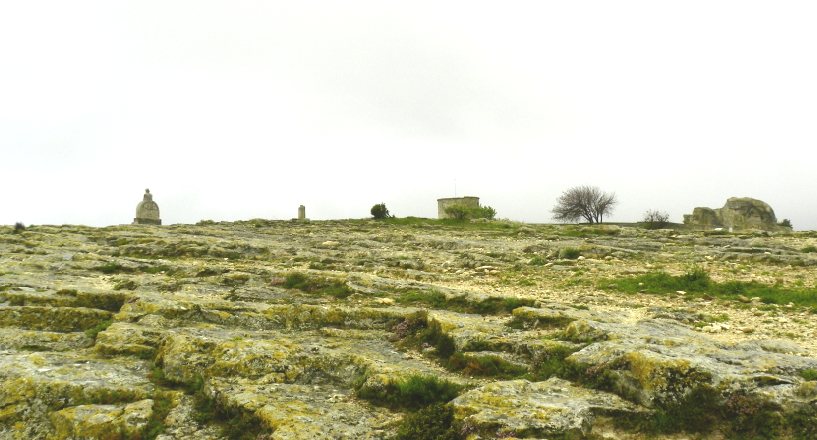
The Monument to
Charloun Rieu
Why is this place so important
?
A major figure of Provençale poetry,
Charloun Rieu’s popular
form of poetry left a lasting mark on the region. His bust,
which stands on the outcrop,
overlooks the Vallée des Baux.
Created in 1930, the monument is the work of the Marseille
sculptor Botinelly. It was erected in honour of the poet
Charles Rieu. The farmer, who was
born in the village of
Paradou in 1846, was the eldest son of ten children. He was,
therefore, quite naturally destined to follow in his
father’s footsteps as an agricultural worker.
He initially wrote poems in French, with some success.
Frédéric Mistral subsequently encouraged him to write in his
mother tongue, Provençal. This is how Charles Rieu, who
became
known as Charloun dou Paradou, became part of the
movement for the renewal of the Provençale culture and
language in the nineteenth century. His Chansons du
Terroir, Nouvelles Chansons
du Terroir, and
his Derniers Chants du Terroir were published
between 1897 and 1904. Charloun Rieu also published a
translation, in Provençal, of Homer’s Odyssey (L'Oudissèio
d'Oumèro).
1986 1986
1986
2015

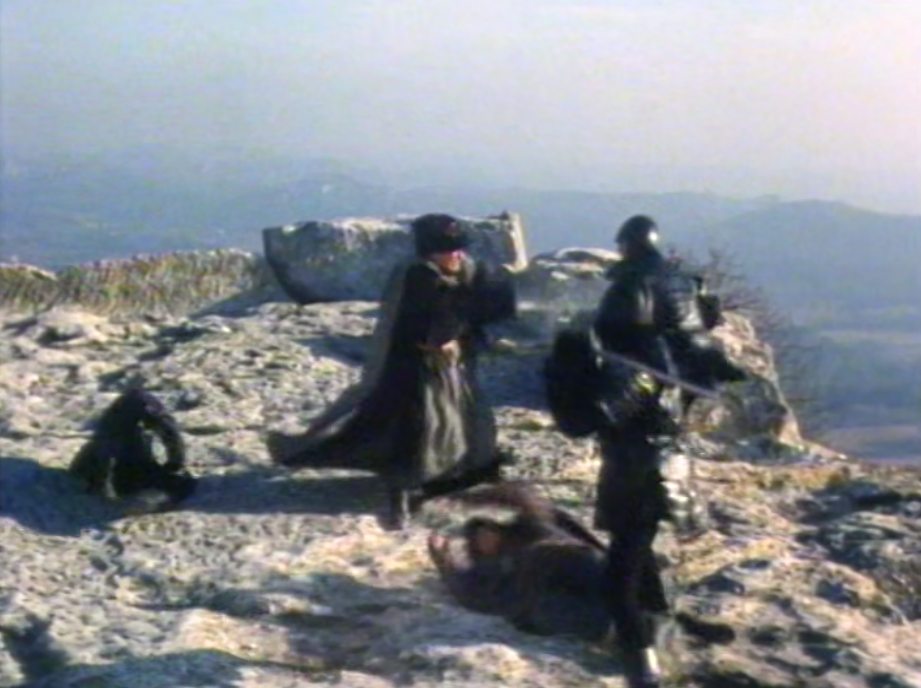
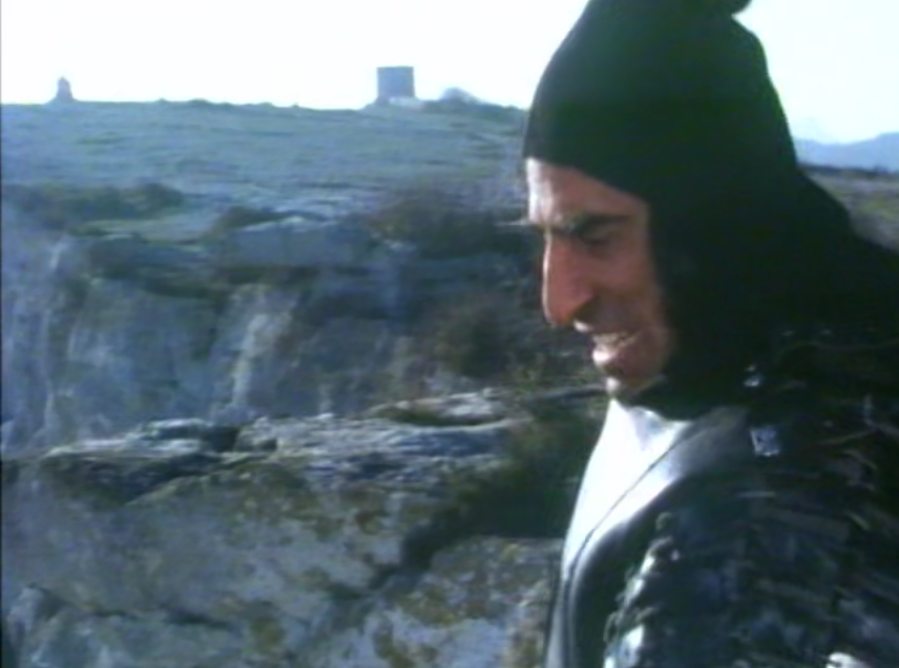

The ‘Quiqueran’ Hospital
1986 Between the caves and the plateau, this ruin is almost attached to the Quiqueran
hospital, you see the hospital on the right of Tell 2014
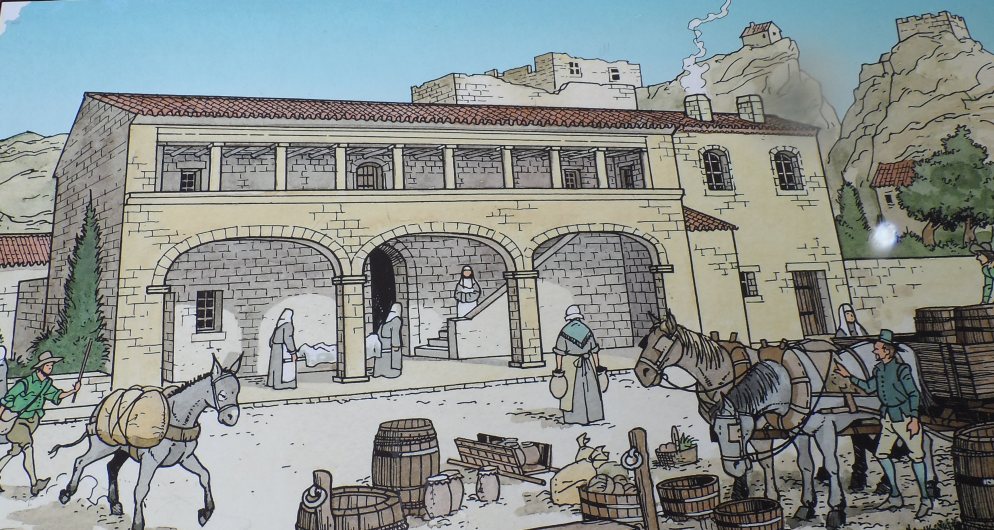
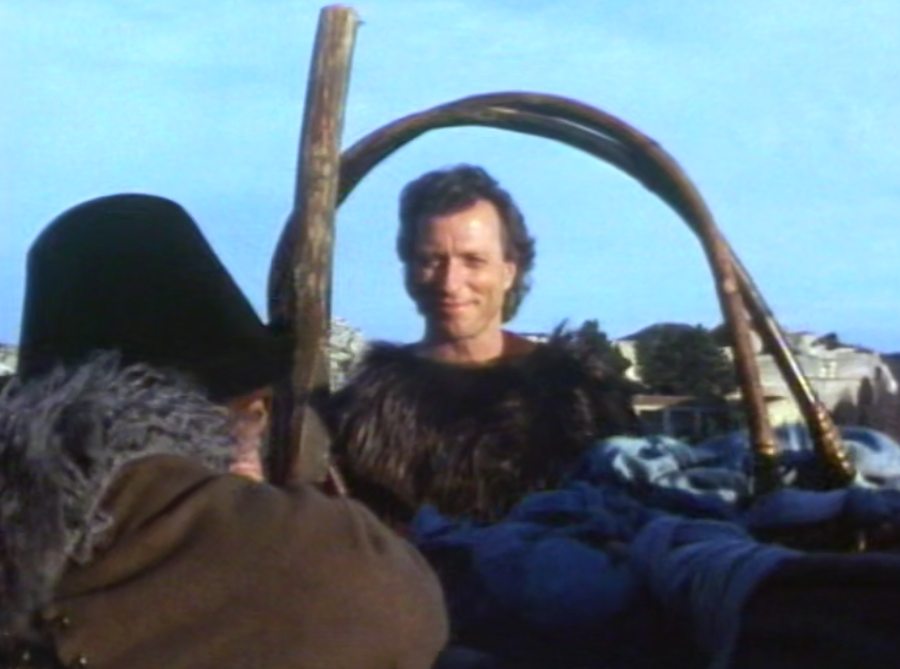
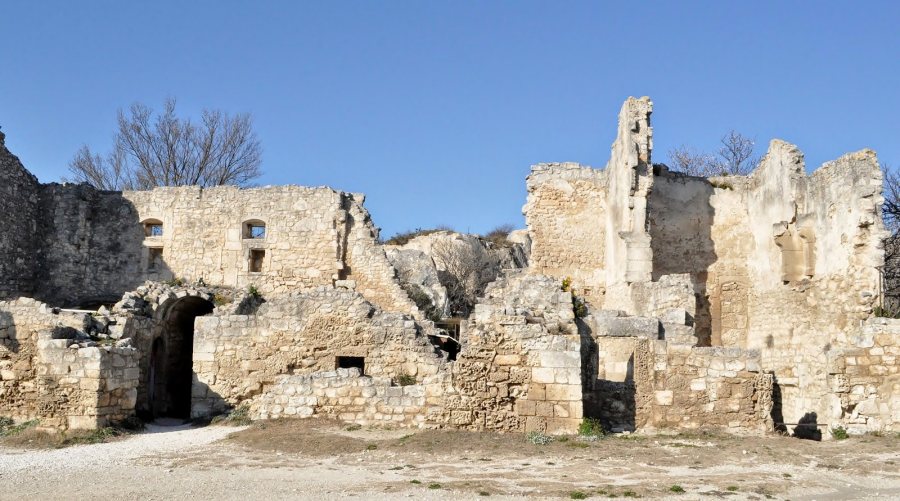

Why is
this place so important ?
The ‘Quiqueran’ Hospital
attests to the finesse of the ordered and sober style of the
classical
Renaissance, which was in vogue at the time.
Housing the poor and the sick, it
was a very important
building in the Cité des Baux.
The hospital was built
in the
sixteenth century during the Wars of Religion, on the wishes of
Jeanne de Quiqueran, the wife of Honoré des Martins, governor of
Les Baux de
Provence. Later renamed the ‘Hôtel Dieu et Charité des Baux’, it did not
close until 1787. The ‘charitable institution’ operated thanks to
contributions made by individuals,
and which their descendants continued to
make from one generation to the next. Some of them were in the form of
money, but most of them were donations in kind, in the form of wheat,
wine,
or oil. The hospital was
composed on the ground floor of a portico comprised of three large arcades
and, on the first floor, of a gallery ornamented with colonnettes supporting
the roof.
The entrance was on the other side, to the north, on a road that
was once lined with houses. The facade was devoid of decoration and very
austere. On the northern façade of the ‘Quiqueran’
Hospital,
an arched opening provided access to the
garden of medicinal plants. The
plants grown in the garden were used to treat the patients.
In the second
half of the eighteenth century, the Quiqueran ‘charitable
institution’ still contained six poor people, six patients, and a
maid who lived
on the premises. After the Revolution, owing to a
lack of means, it was transferred to the
Hôpital de Maussane, where
its archives can still be found.
The cave dwellings
The cave dwellings form a separate district,
which was entered in 16th century land registries as the
“Baume de Roucas”. In the Occitan language, “Baume”
means cave and “rouca”
means rock. It was
therefore a district of cave dwellings, which must have
resembled those in the second outer courtyard.
In the first house, you can see the shaft of a chimney
worked into the
thick rock, stairs dug in the wall and
cavities where a floor would have been fixed. The house
would have had a ground floor and a loft with a fairly
low ceiling. On the ceiling of the second house,
there
are handles dug out of the rock where items could be
hung and herbs or hams could be dried. This house has
two chimneys, to the left and right of the entrance, and
two carefully worked
windows. One looks onto the château
façade and the other onto the village.
1988
2014 They used to sit right
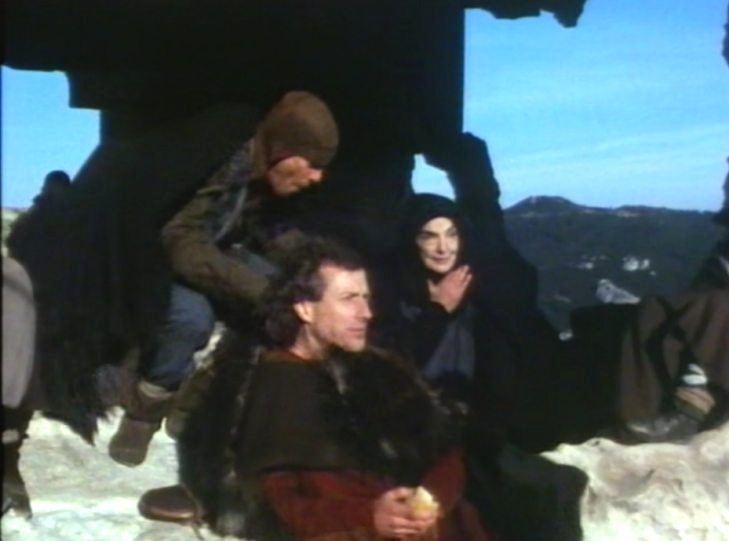

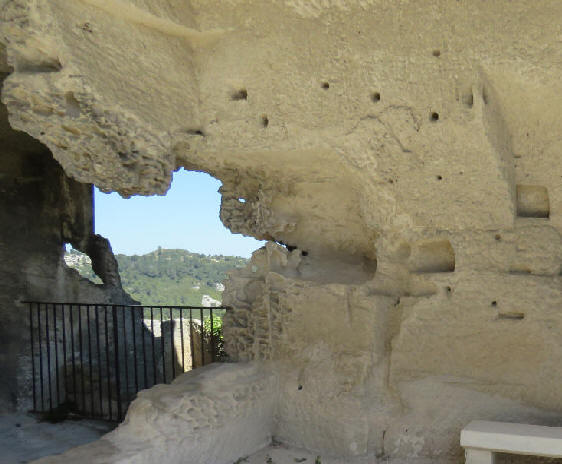
Above: Probably the left hole in the rock is
changed
into a window probably for extra safety for the visitors...
Made in 2019
Heavy erosion
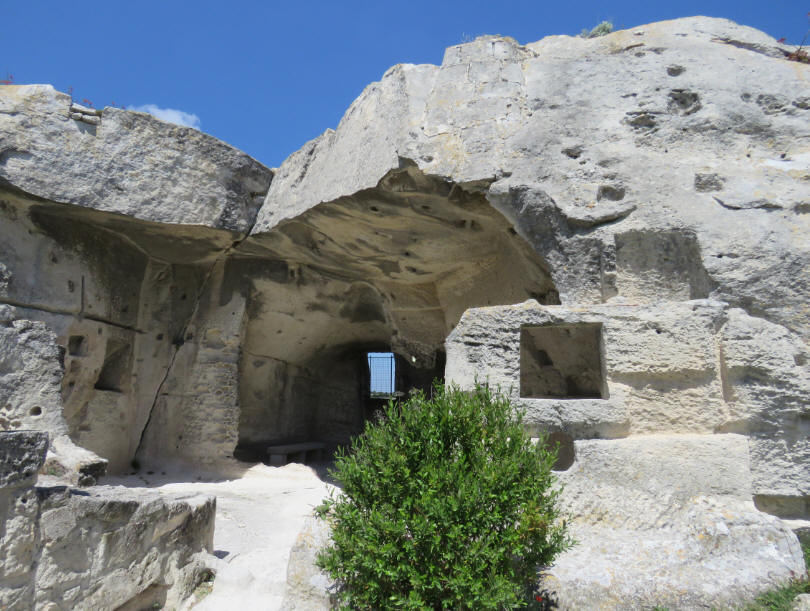
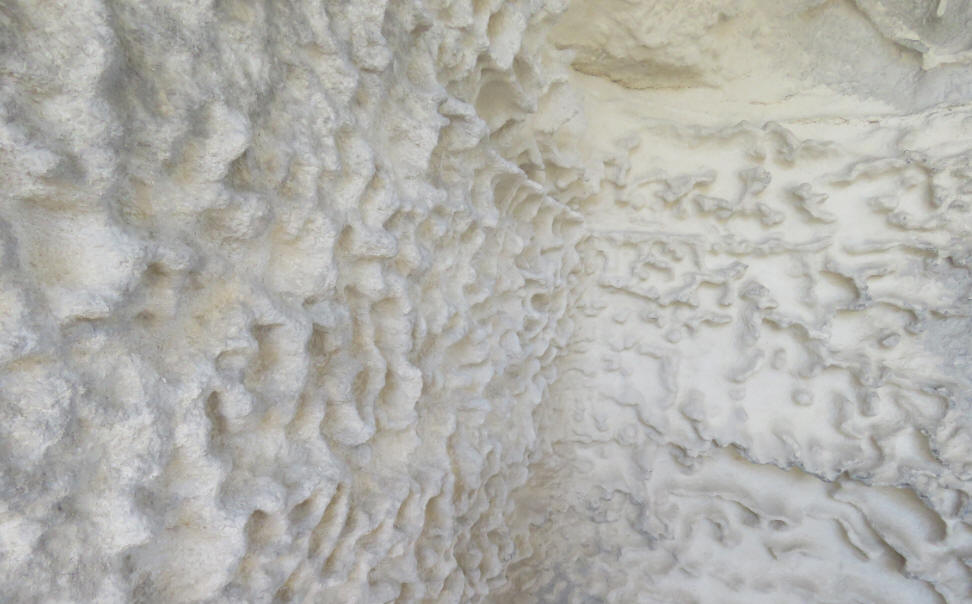
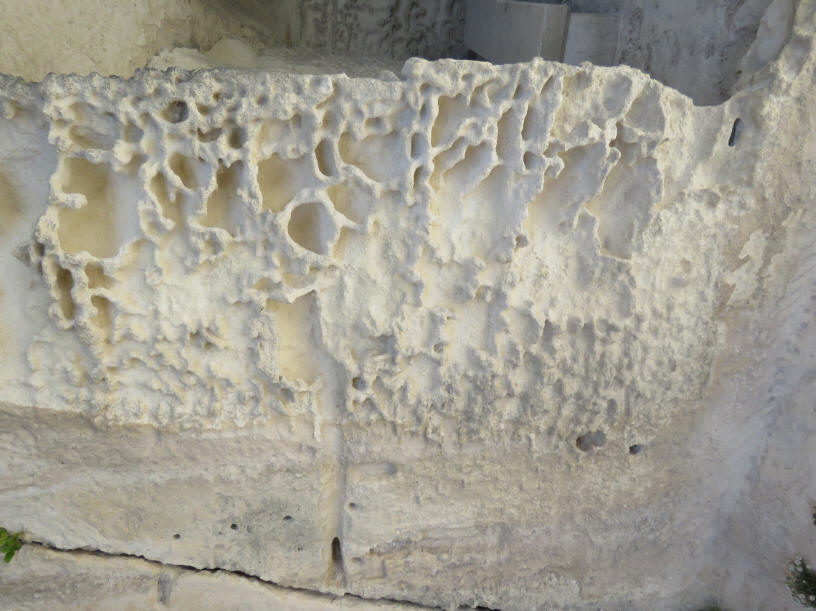
The heavy erosion was already there
(1987)
Coincidentally
this photo seems to have been taken at the same point, slightly different camera
point. Zoomed.
1987 2019
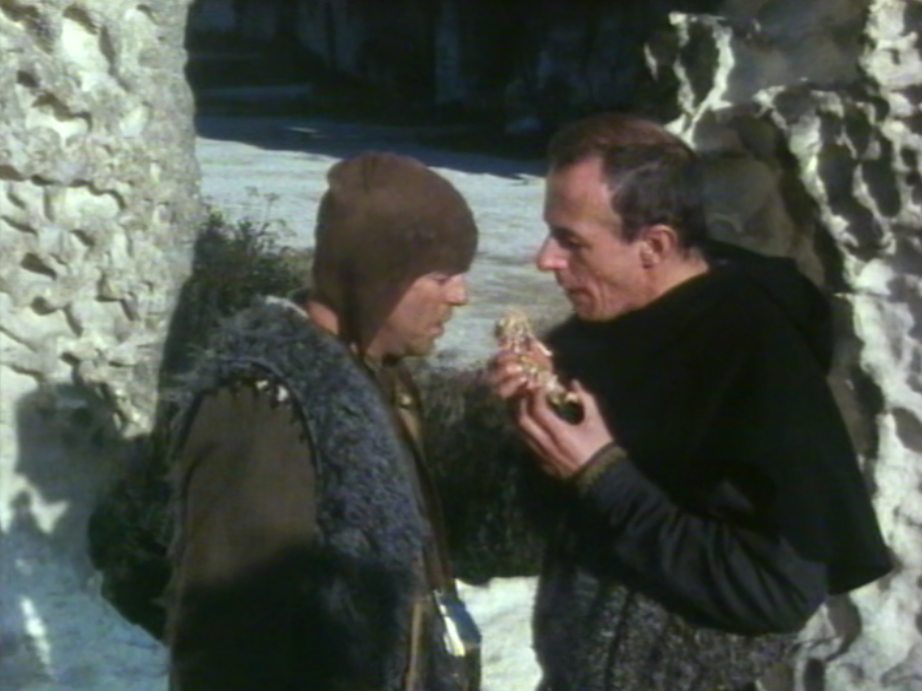
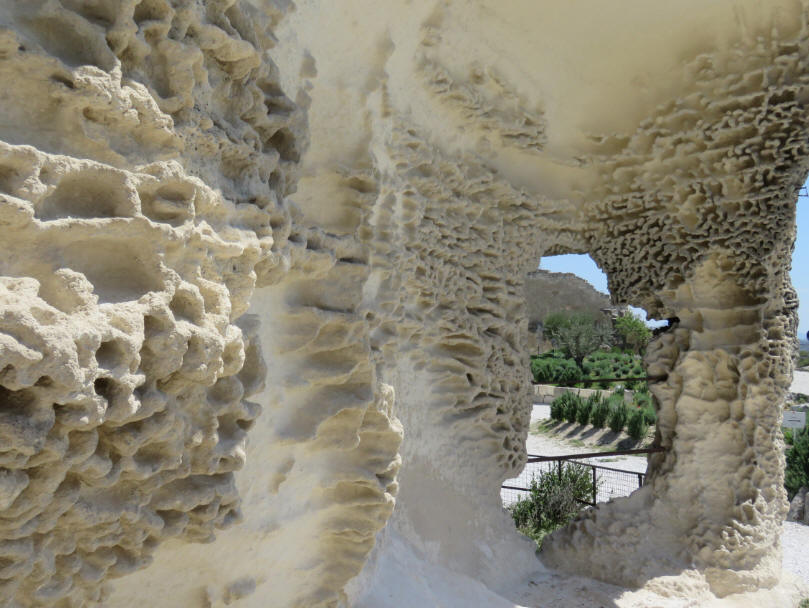
1987
The Crossbow shot is made 90 degrees to the right
2019
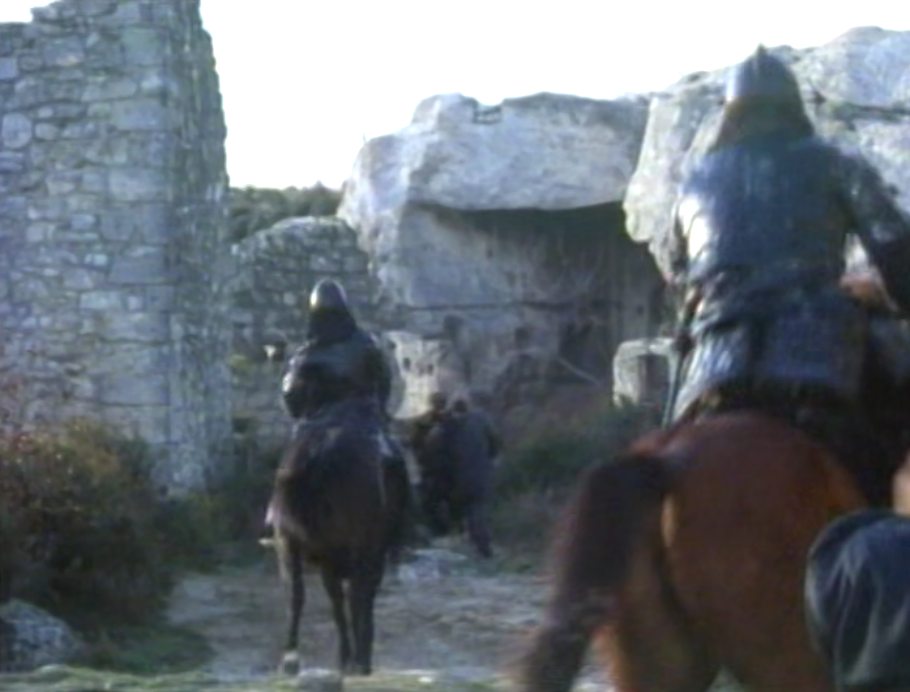
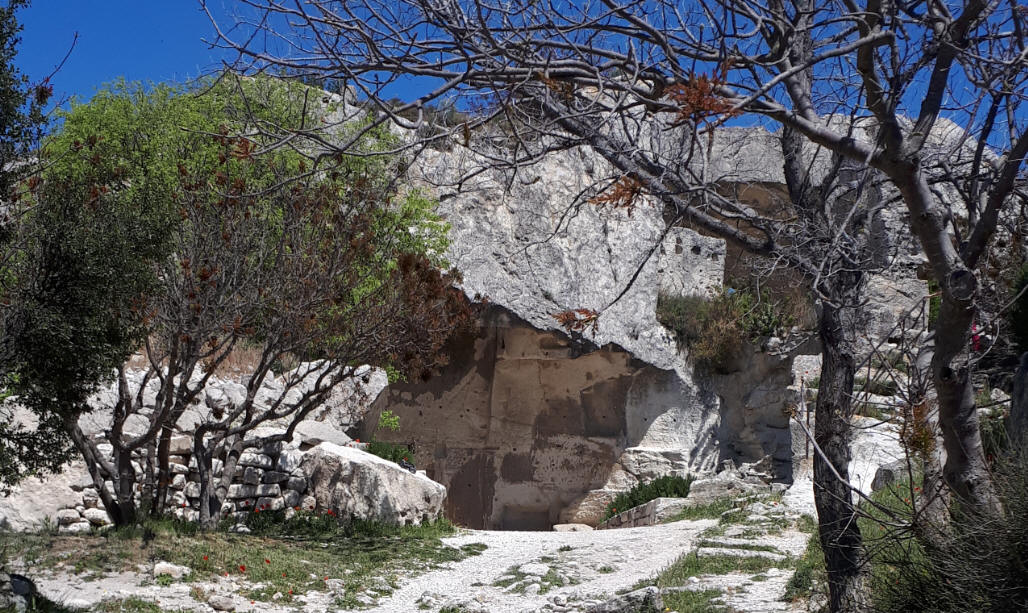
1987
2018
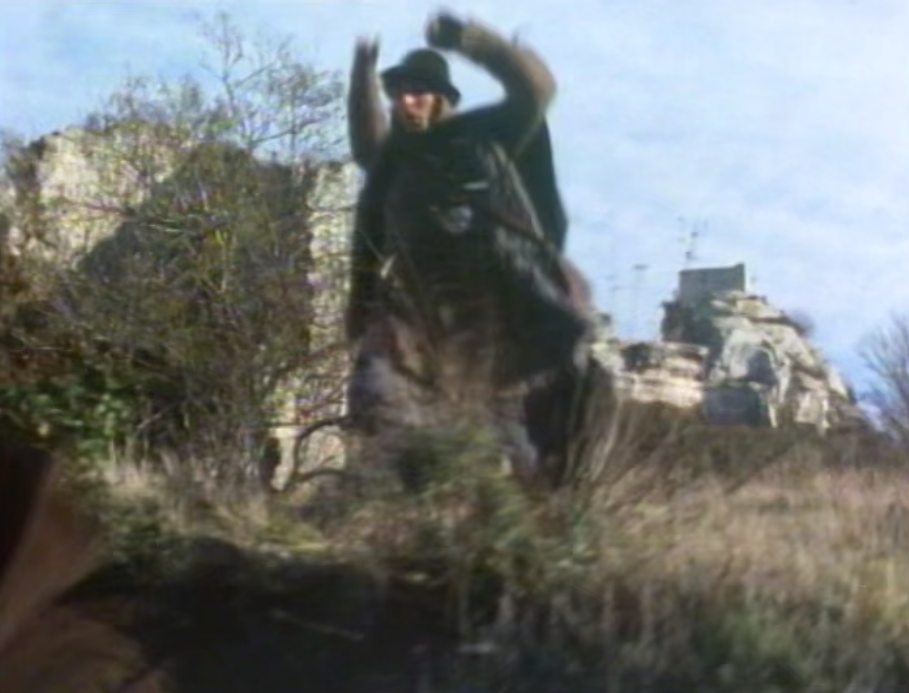
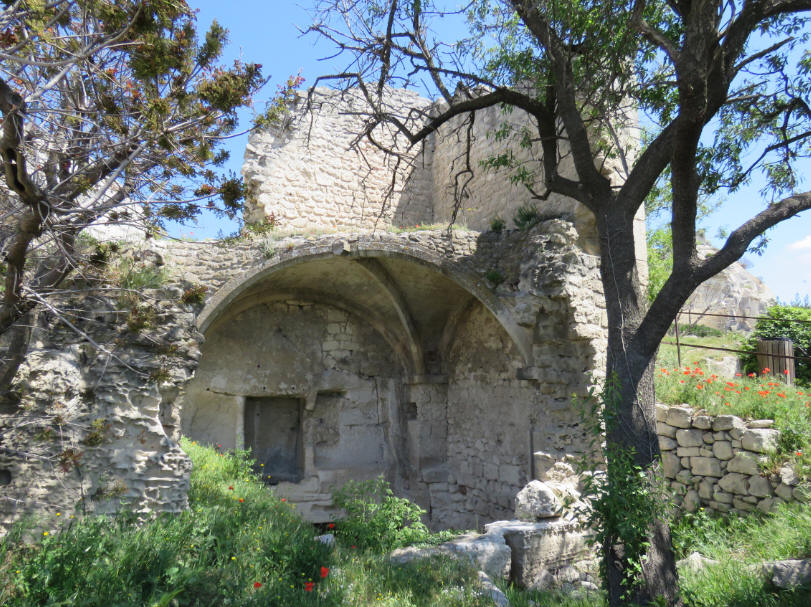
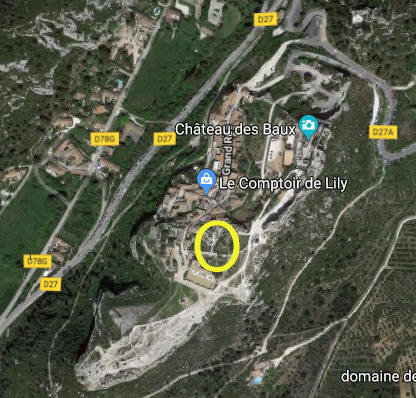
The little wall on the right picture (they
were hiding in front of this walls). In the back you can recognize the rock formation.
1987 2014
1987
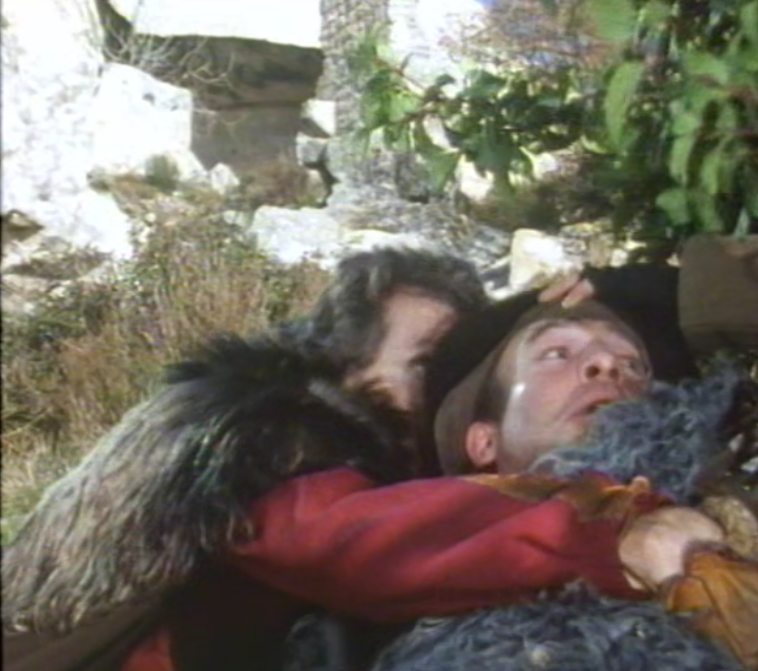
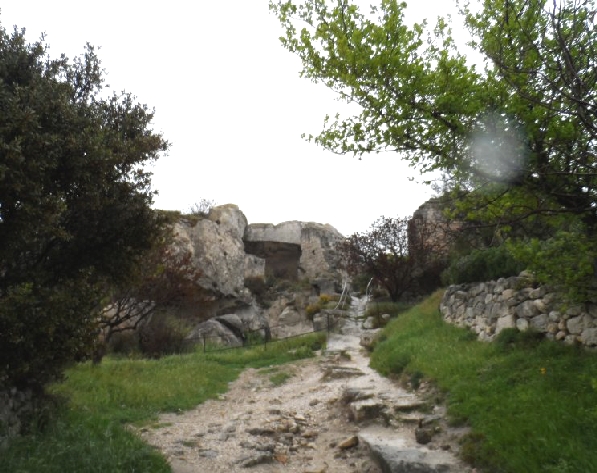
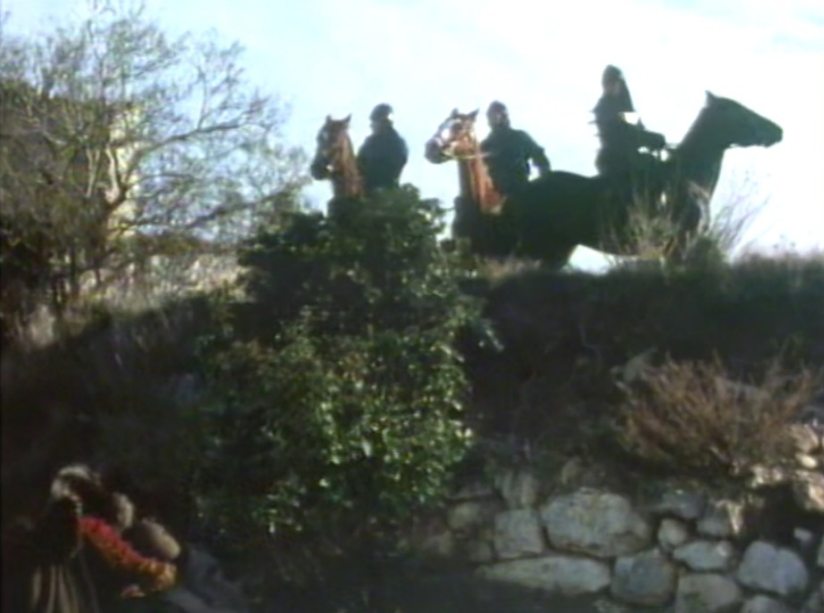
Chased by the Black knights.
The place Albert and
Tell hiding, 2018

The bakery exterior in Les Baux
The
exterior bakery scenes are fimed in
Village Les Baux. The
interior and porch in an ancient farmhouse
near Arles.
1987
2018
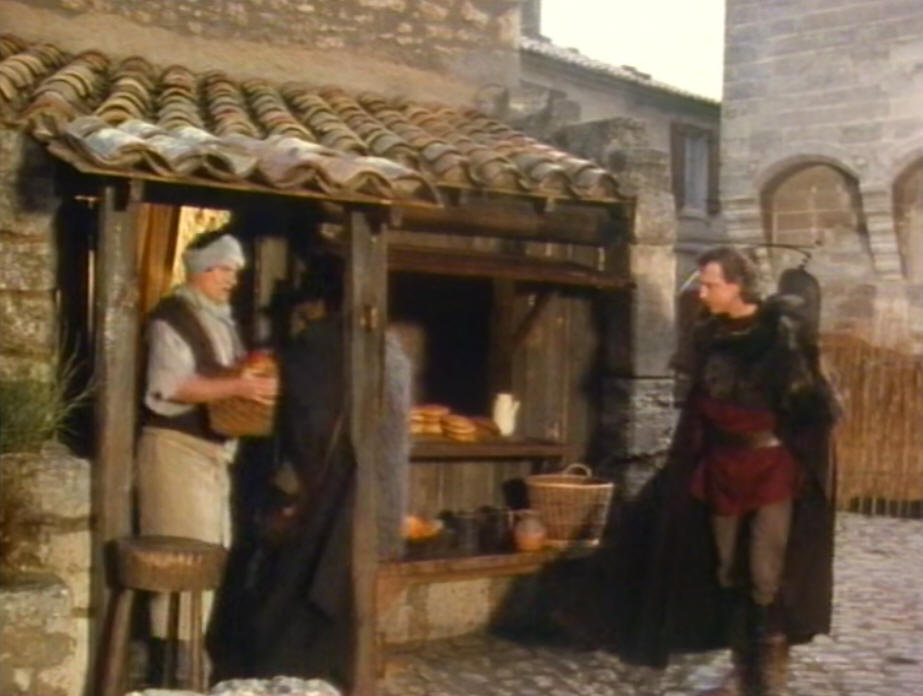
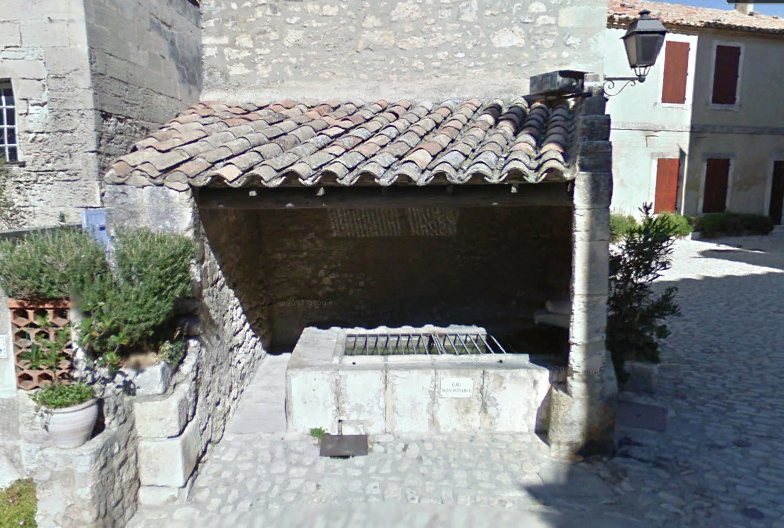
Next to Eglise Saint Vincent.
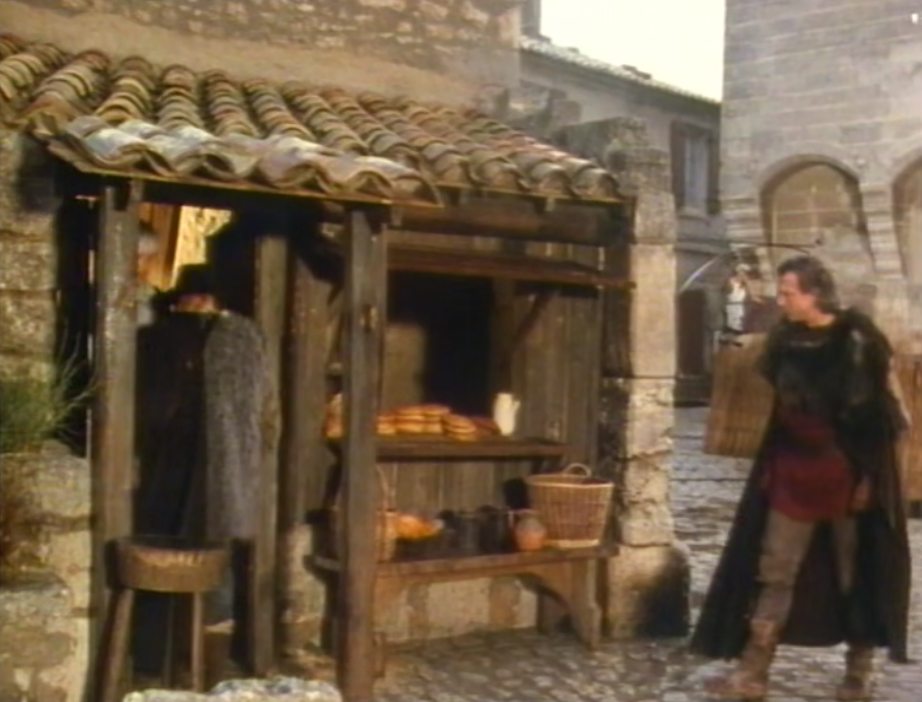
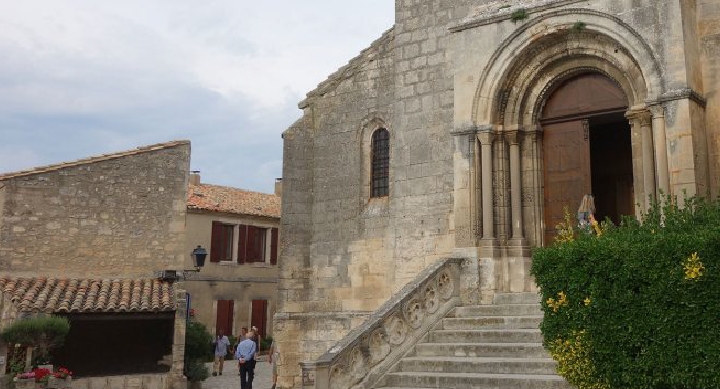

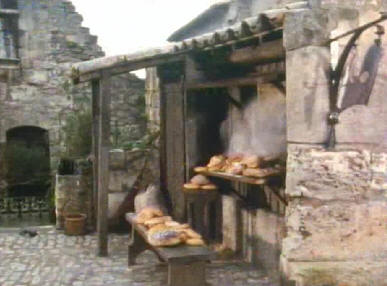
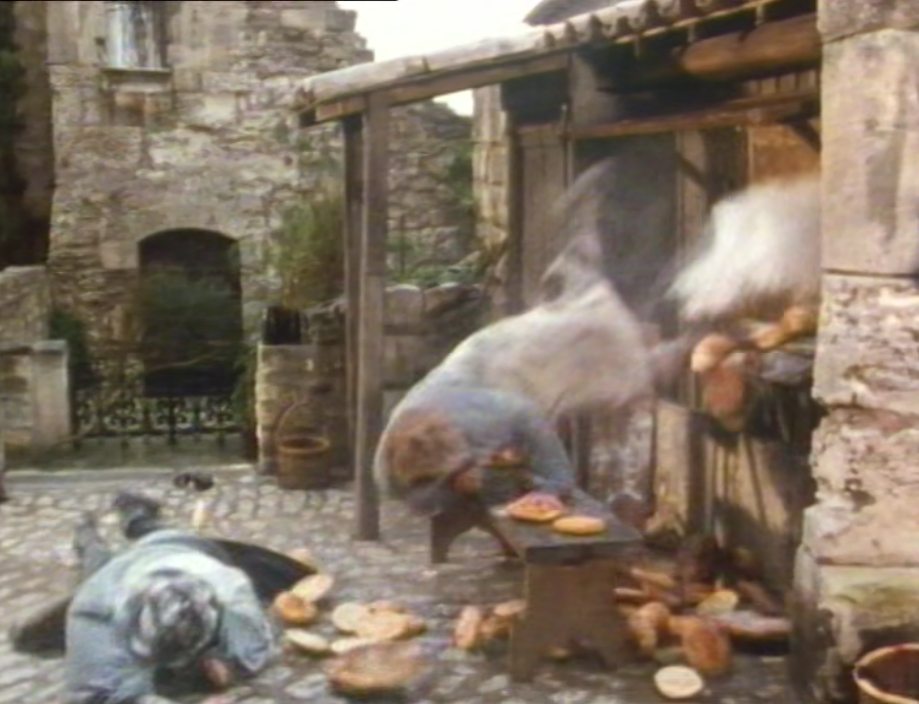
Unbelievable how they managed to turn this small
lavoir into a bakery facade.
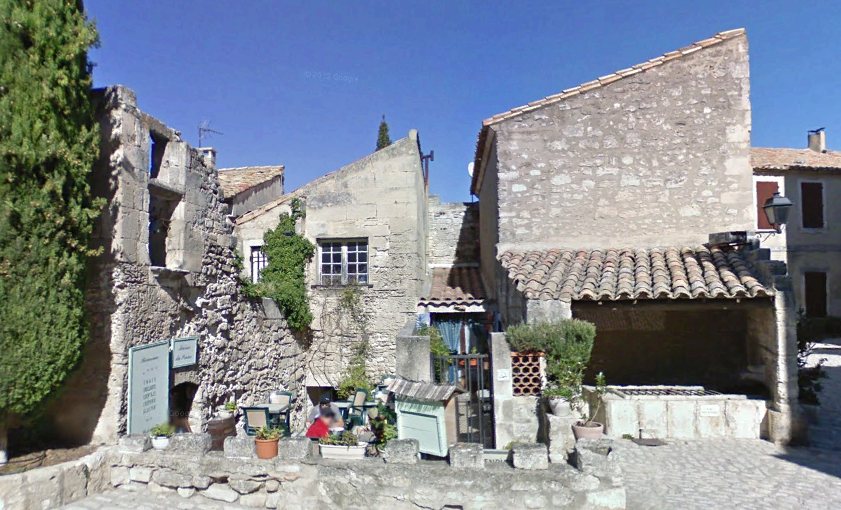
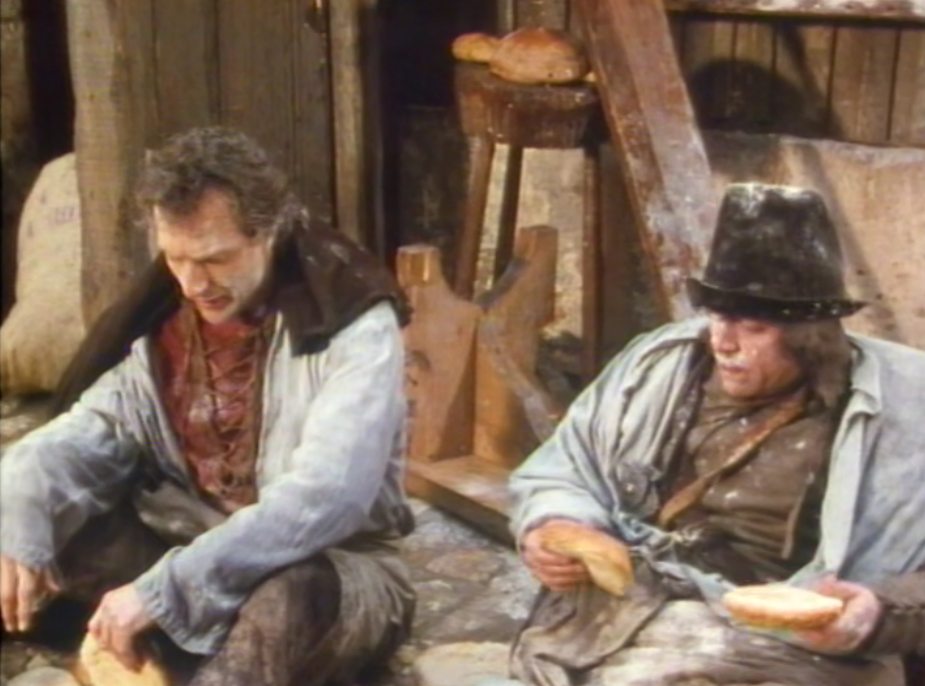
Look at the recognizable
stairs behind (photo on the left). The stairs of Eglise Saint Vincent.
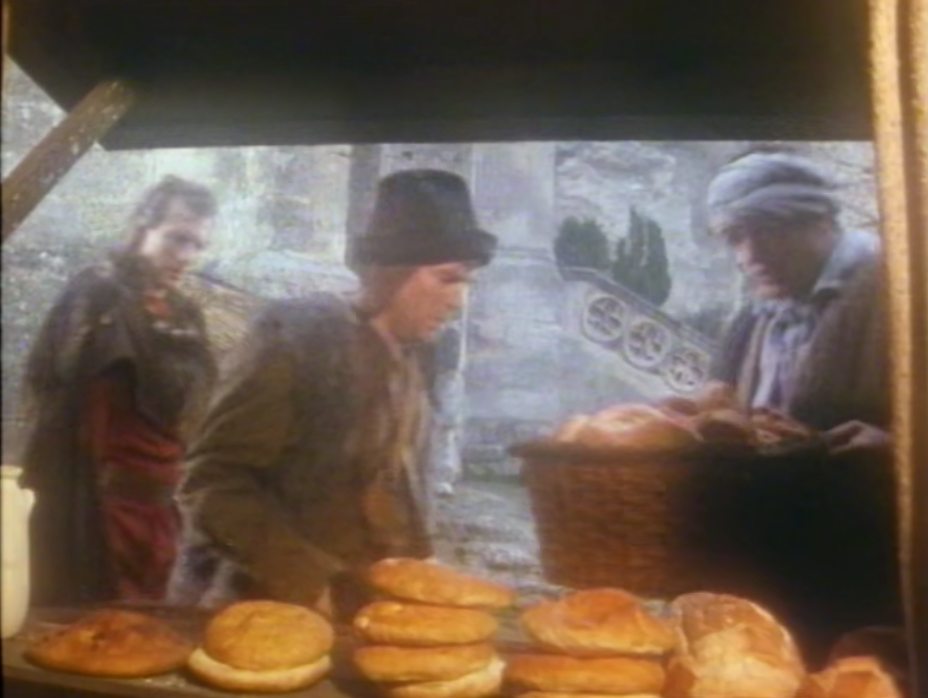
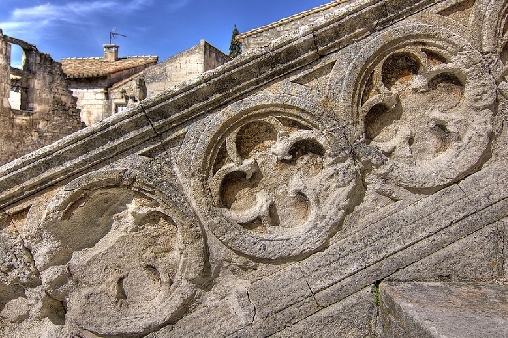
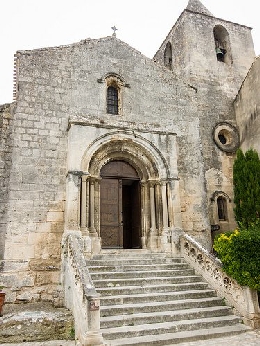
Later in the episode, this square is
the
final scene (execution with the axes).
The old farmhouse
The exterior is 'the inn' (episode
Message to Geneva) and the interior decorated as 'the bakery.'
And interior and exterior
in 'The Electors' (Where Horst hides the duke of Bern)

This location is found with the help of
Mr Lyman
and my husband Patrick. Without mentioning the road we would never have traced
it.
The two gates
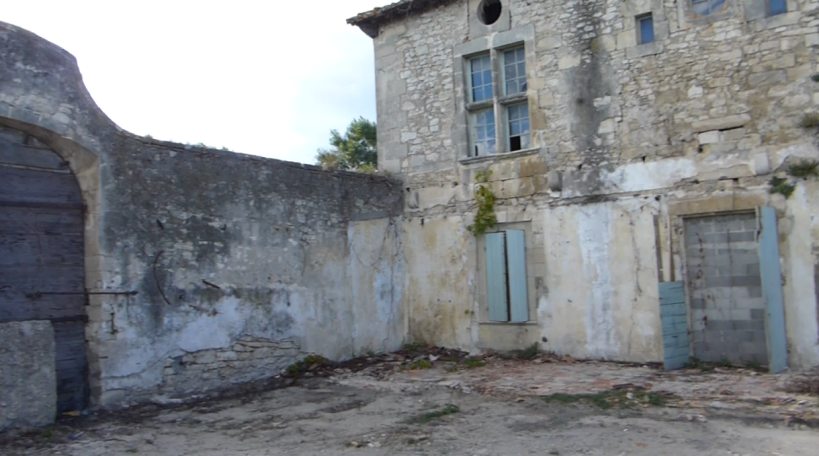
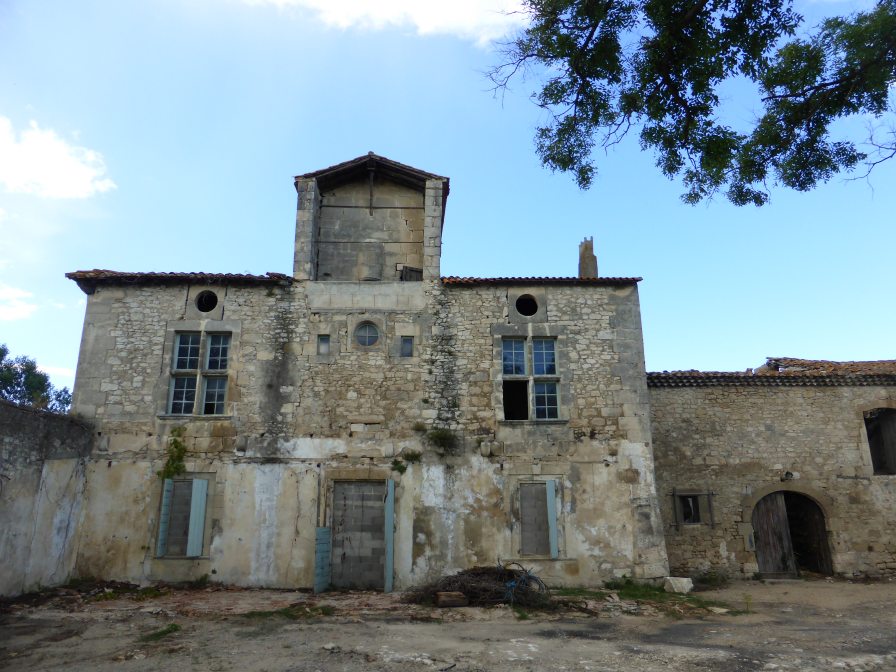
1987
2015
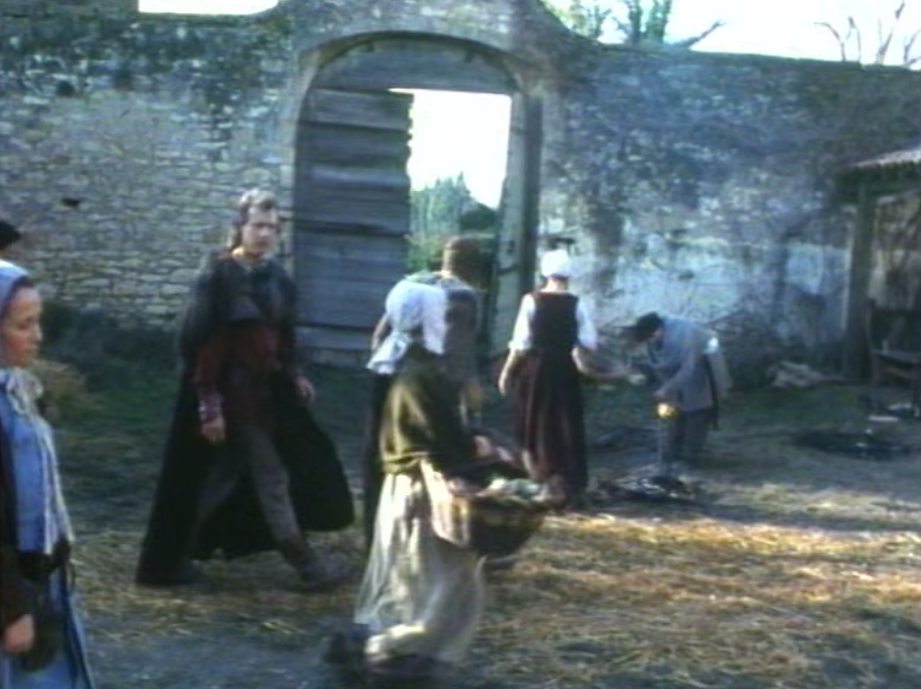
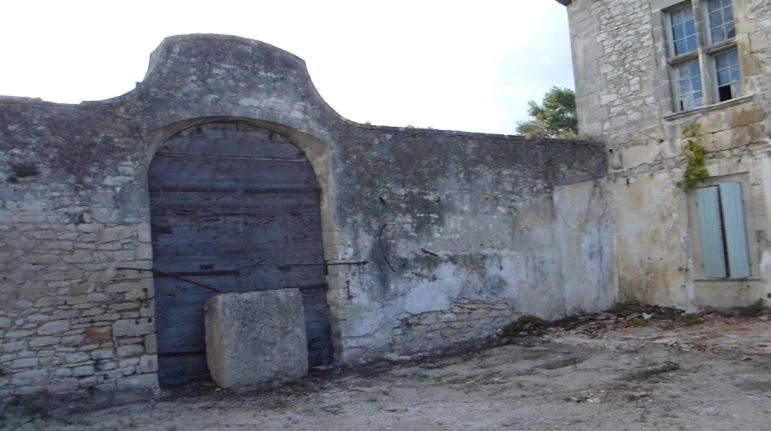
1988
2015
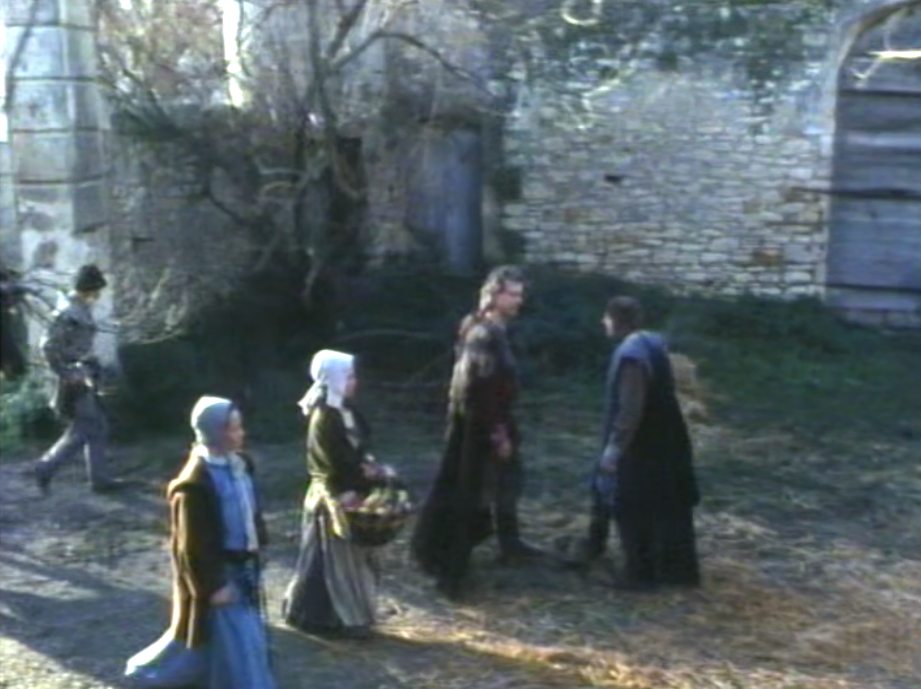
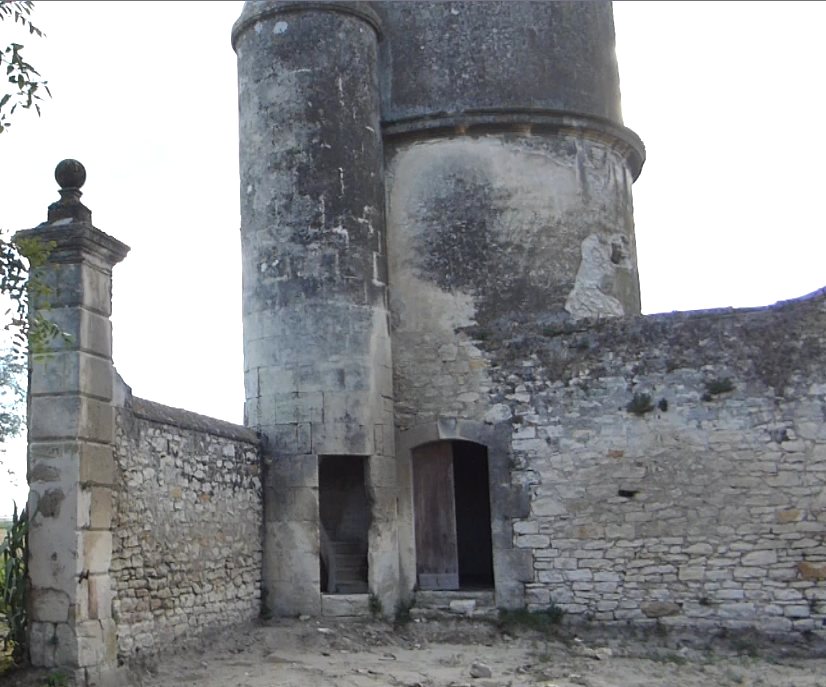
To Compare:
one photo of the Electors, Tell incognito. Here the gate is open
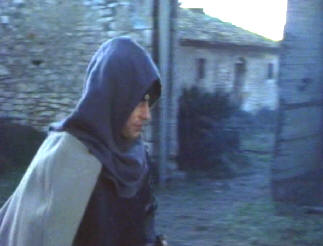
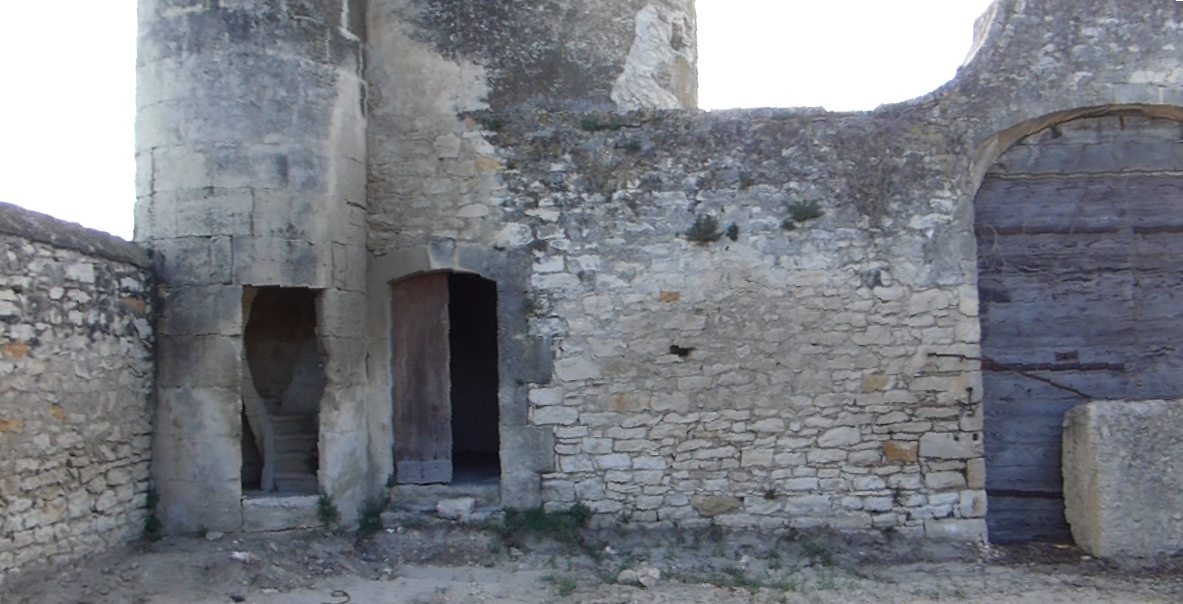
2015
2015
1987
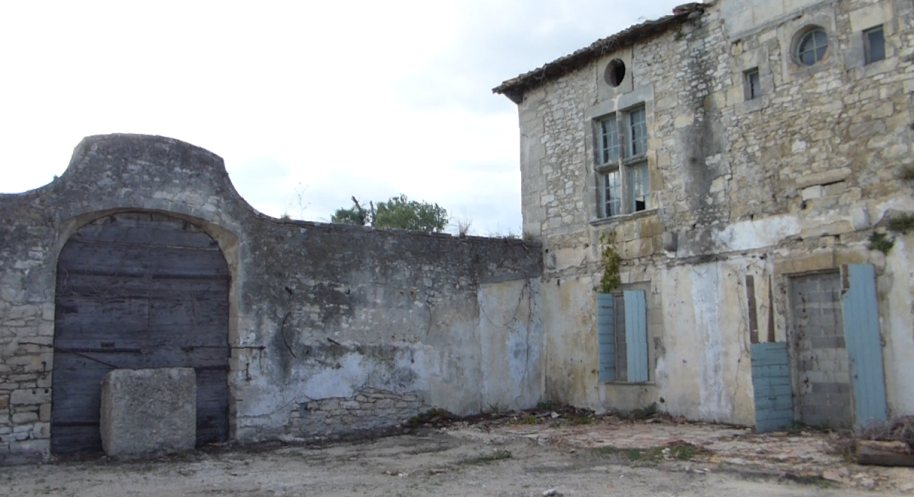
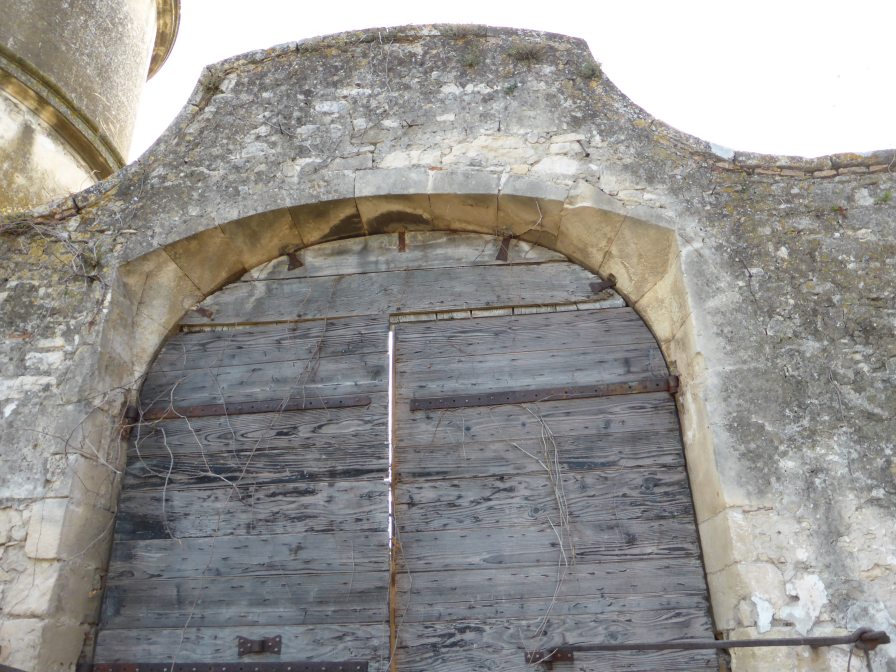
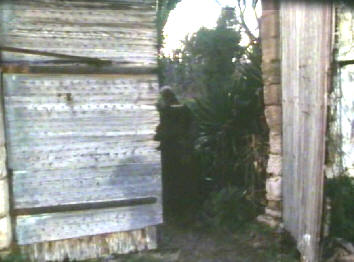
The state wasn't that good during the shooting
but at the moment it can't get any worse...The porch is damaged and every
window is. The door is blocked with blocks of concrete. 2015
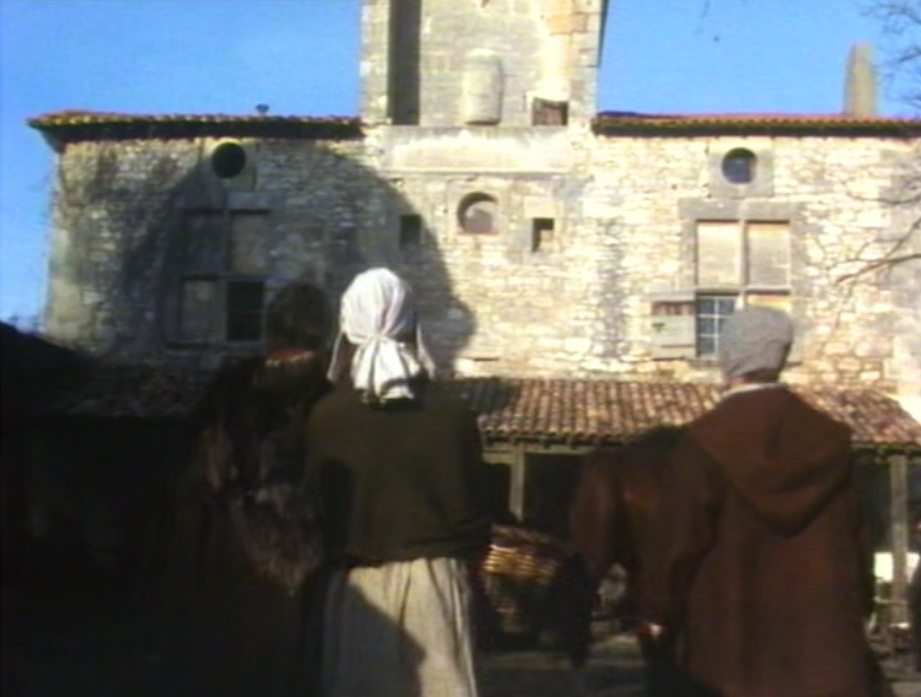
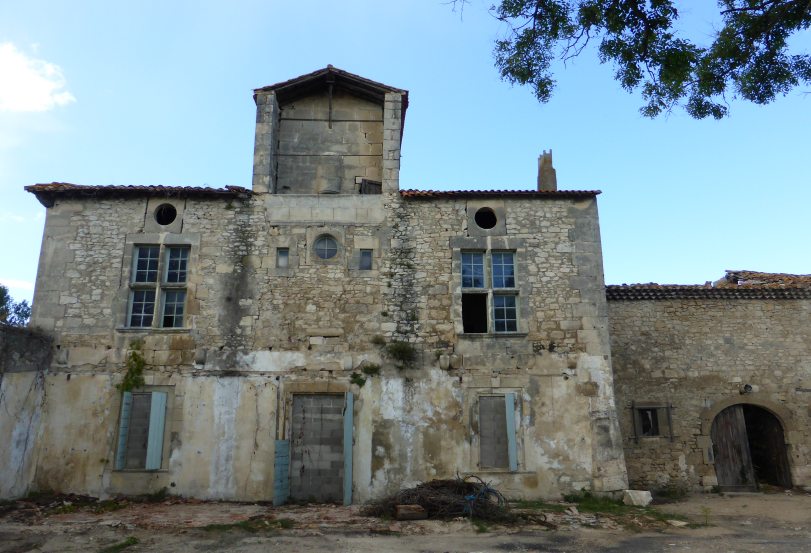
2015
1987 Around 2019,
the container is removed. A much better view!
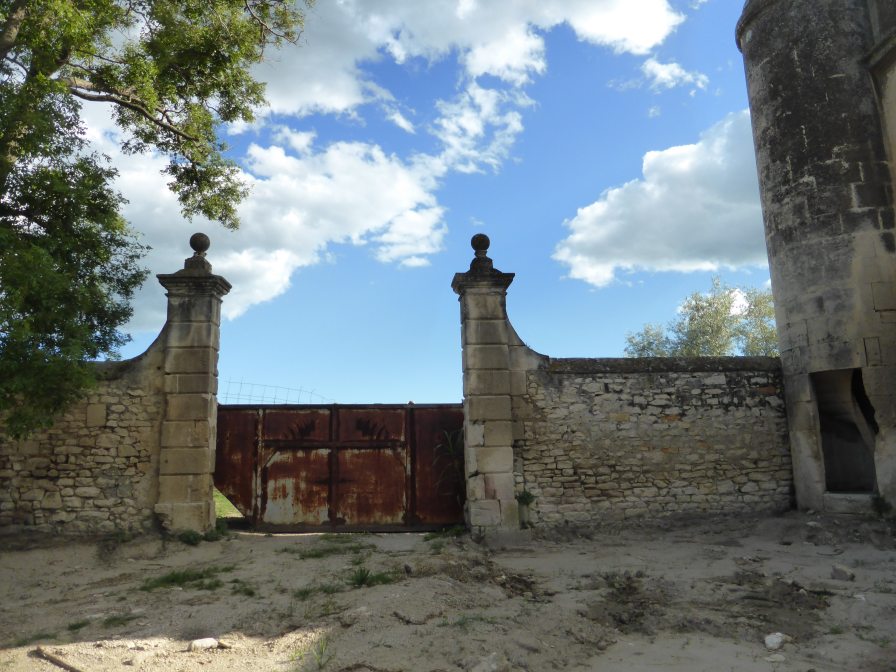
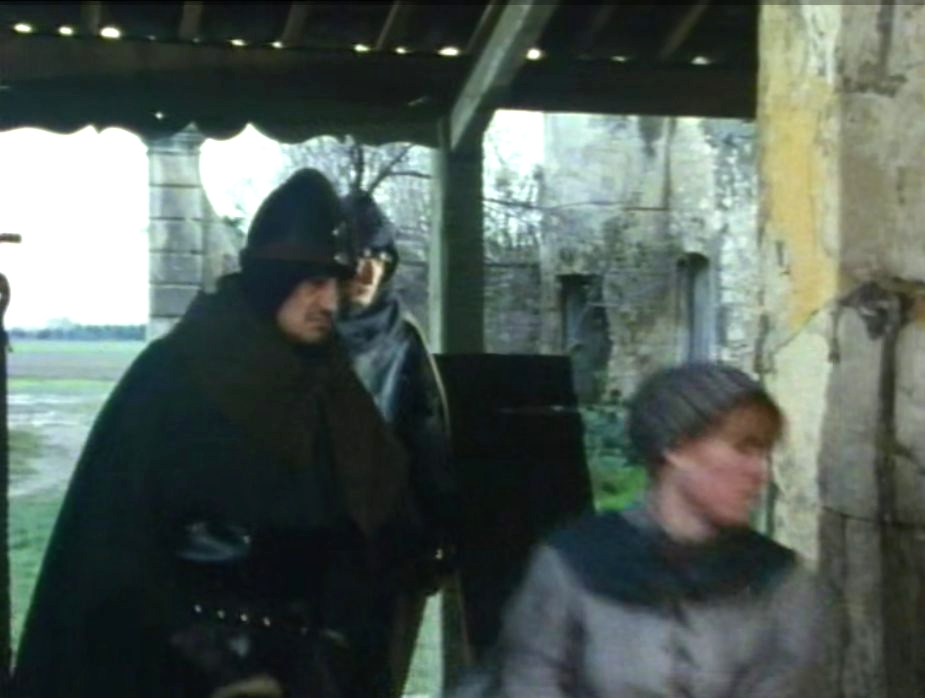
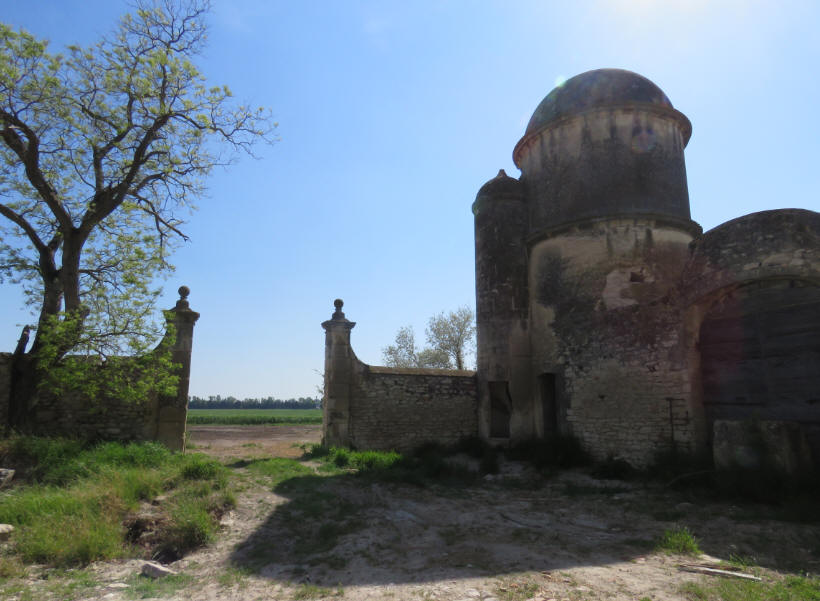
The doors of the tower
The porch
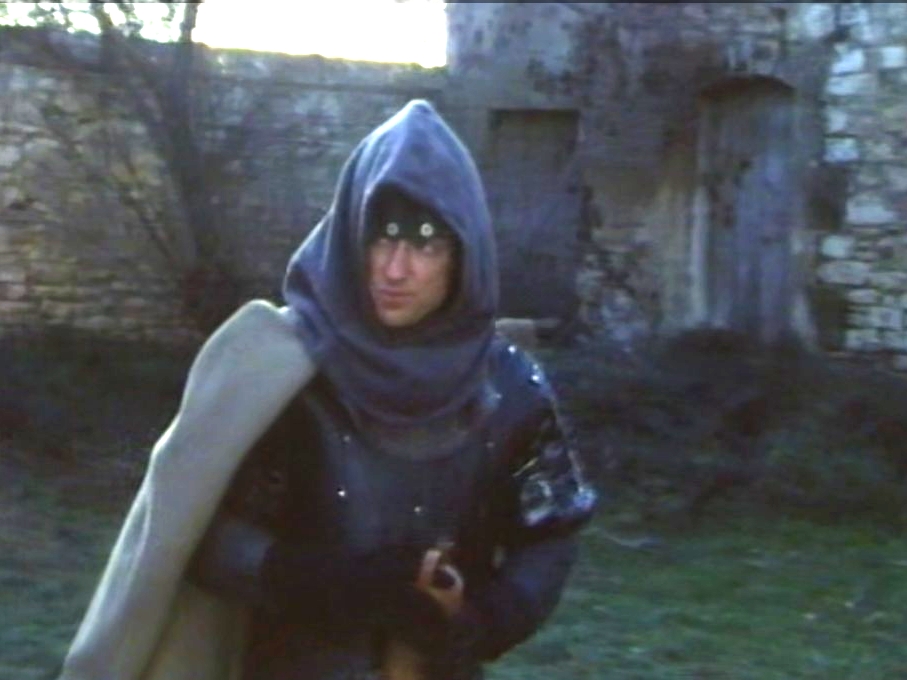
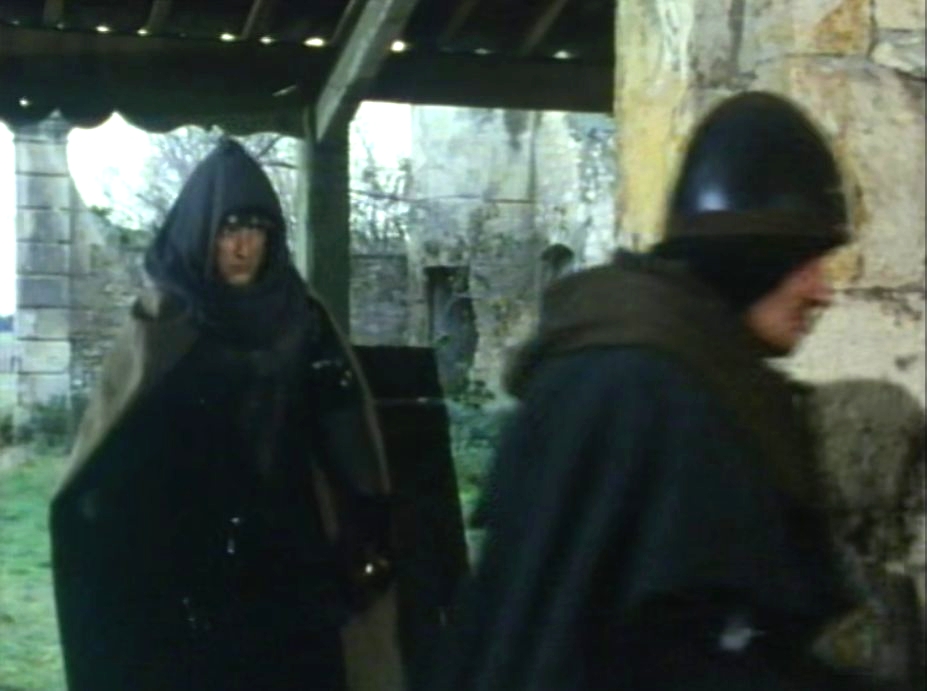
Episode 'Message from Geneve.' The old farmhouse
is the interior and Les Baux the exterior (next to eglise Saint Vincent).
Tell and Albert are thrown out of the bakery, the
shot switches to a short exterior shot of Les Baux. Complicated.
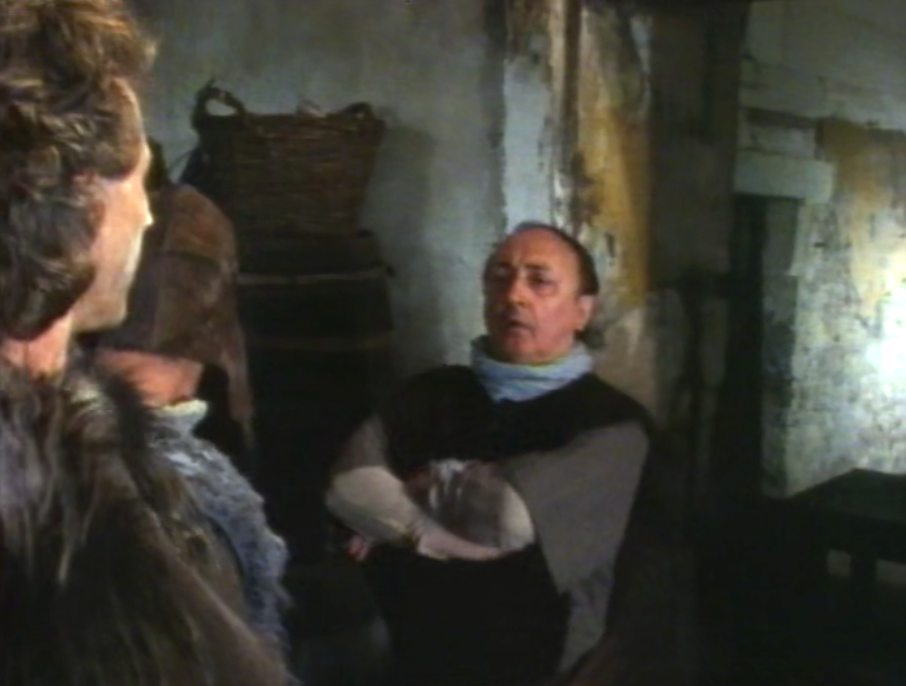
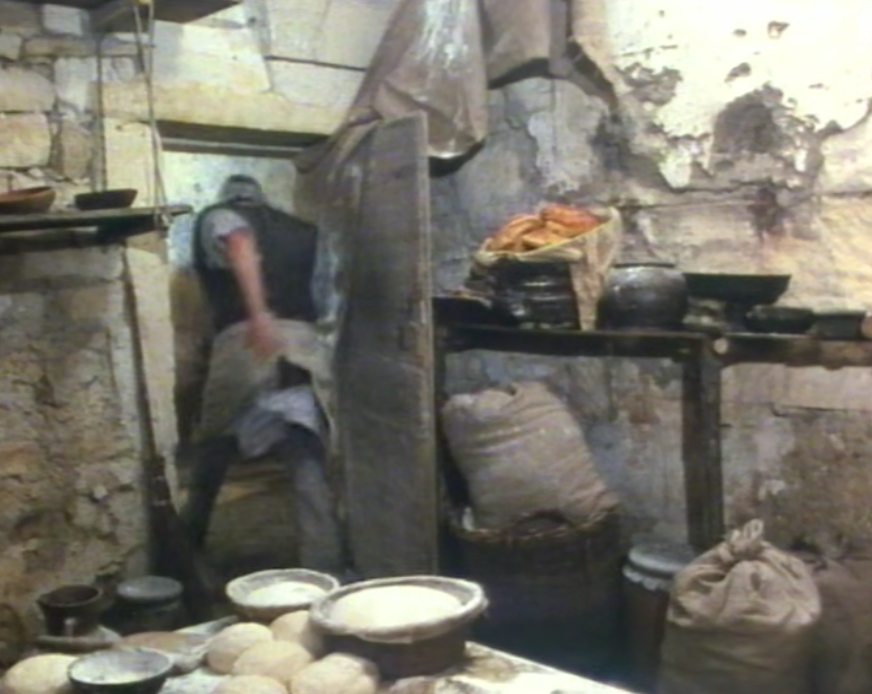
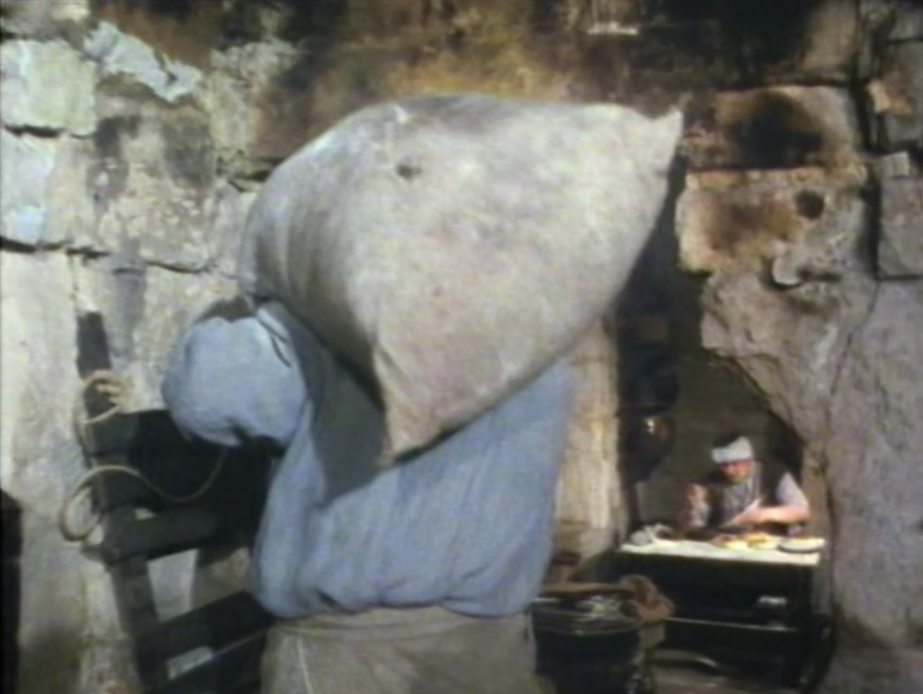
Left
below room 2 and on the right side the window of room 1
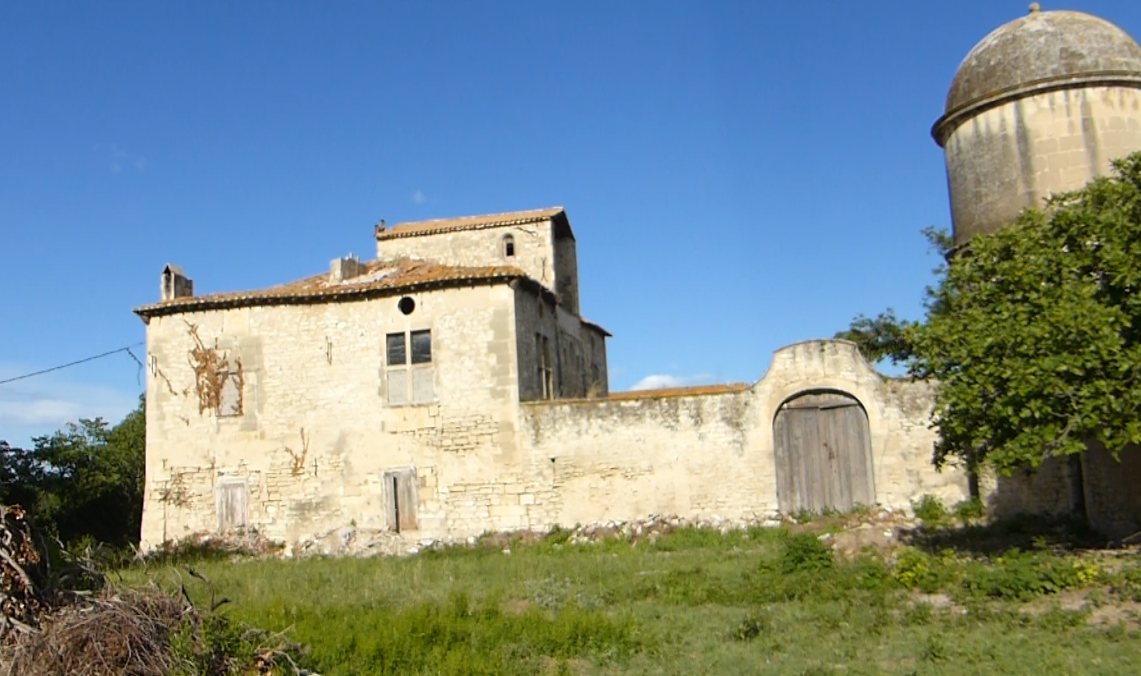
Room 1
The room, they always walk
in first (in both episodes)
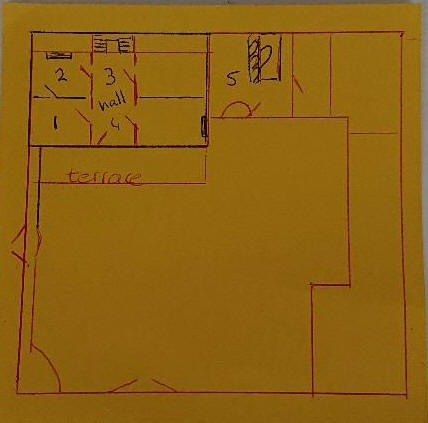
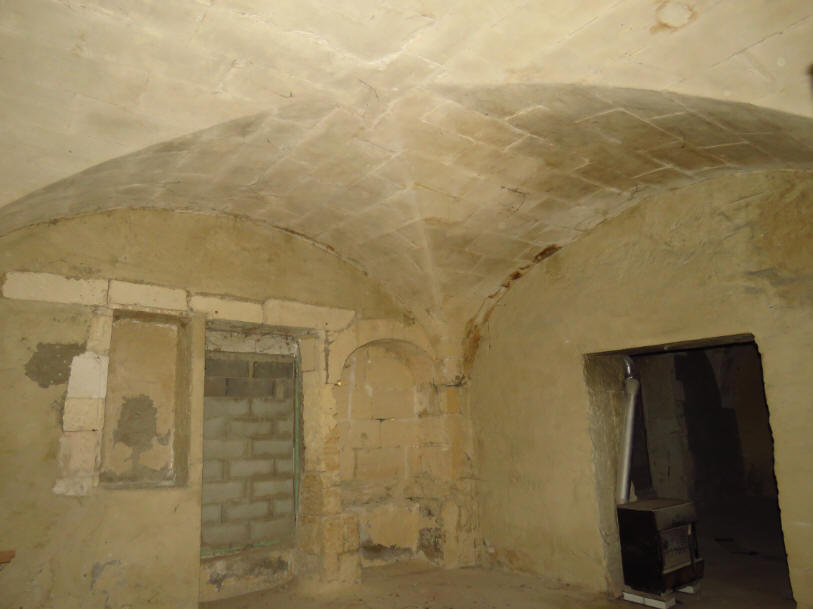
Scene: The baker's custumer base, in room 1
Albert and Tell looking
for a name in the baker's customer base here, shot of the biggest window of the
westside. It's nowadays closed by blocks.
The
original window frames have been preserved and are inside. I am hopeful that
they will be replaced once again in their original state.
First room
left of the main building (ground floor).
2019
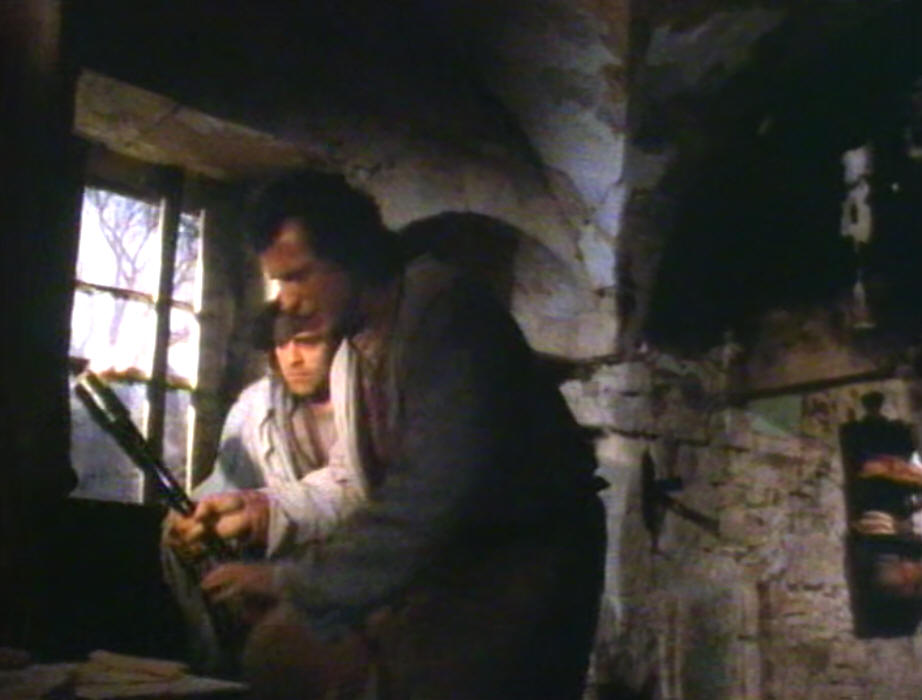
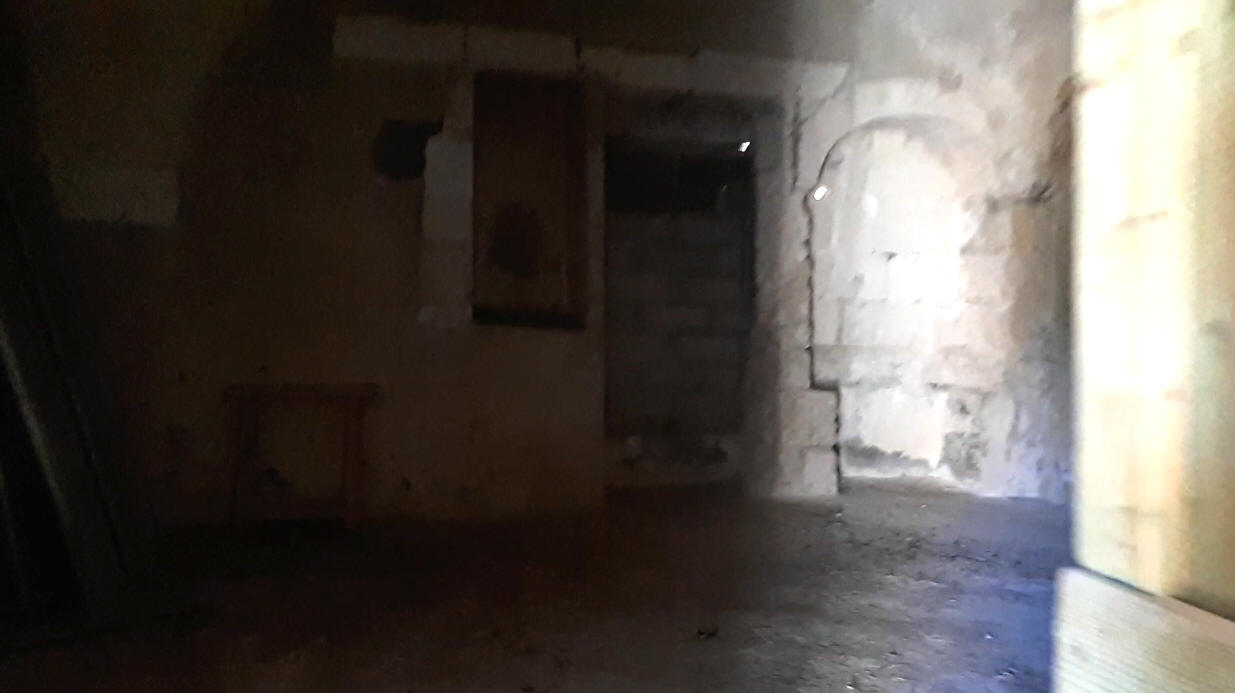
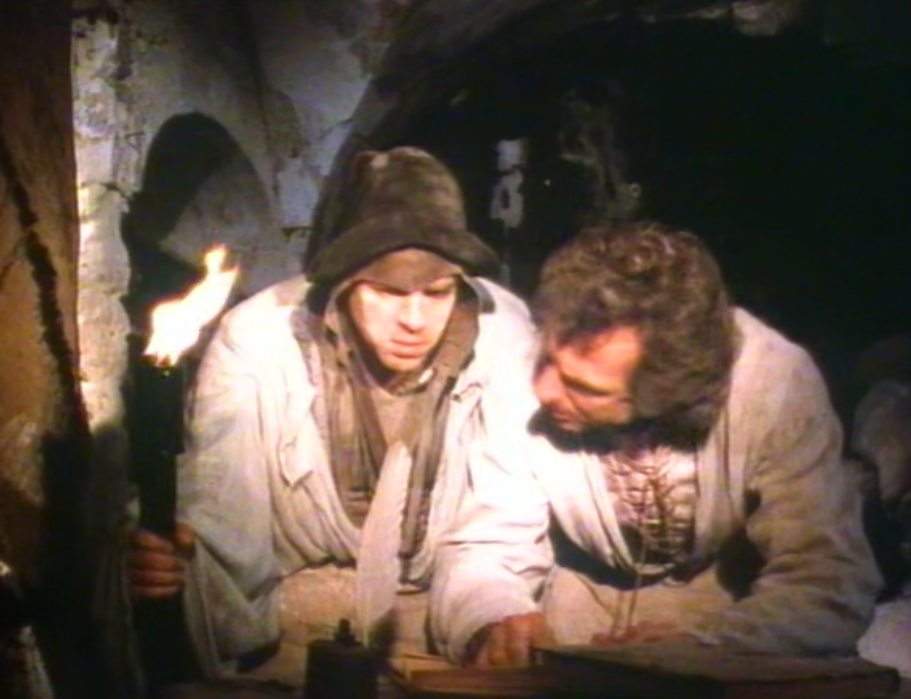
1987 This
is the largest window in the room, below they only filmed the narrow window 2019 Through the door below you enter the second room, where the baker is.
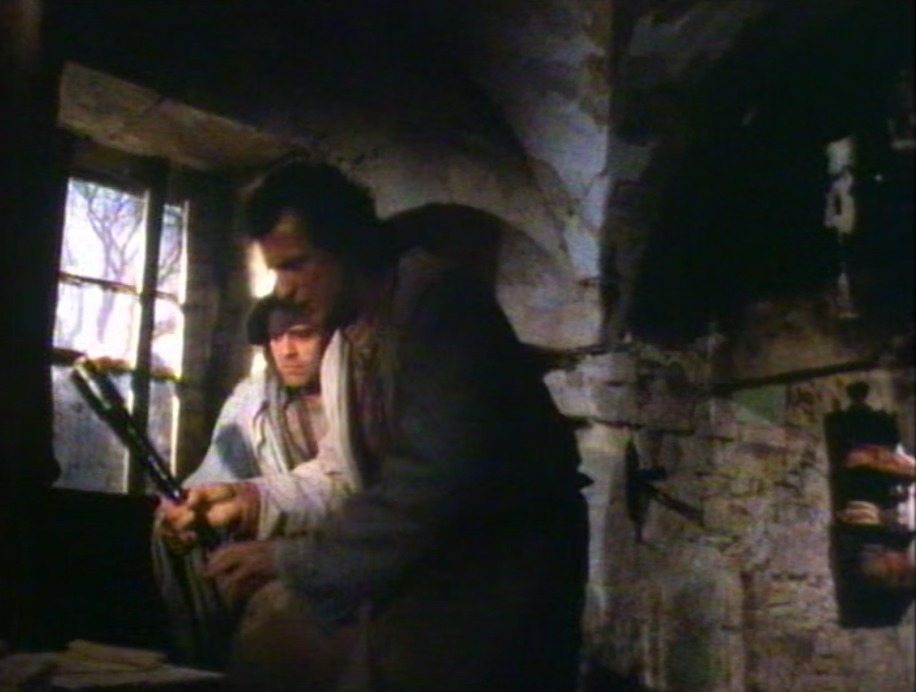

Bakery scene, room1
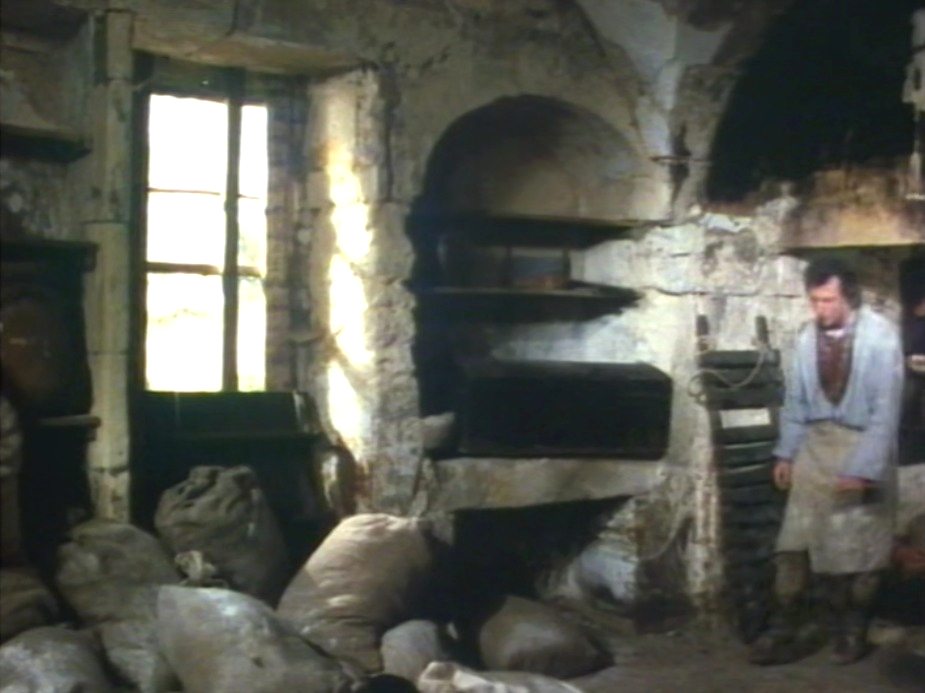
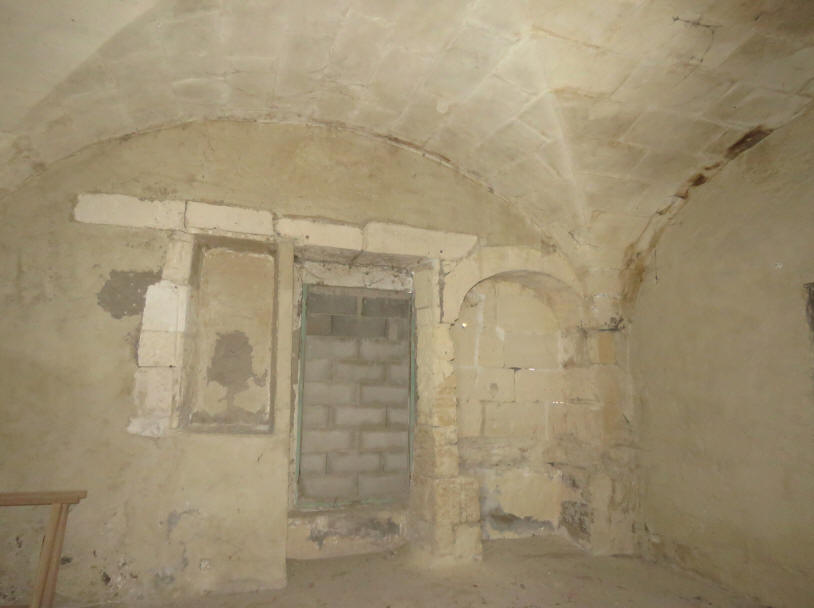

Fight
between the security soldiers and Tell
Scene: Tell enters the room incognito to help the girl to free her brother and father.
So that they can continue their
journey and still vote, but it goes differently. Room
1 in 'The
Electors'
This is the smallest window
The door
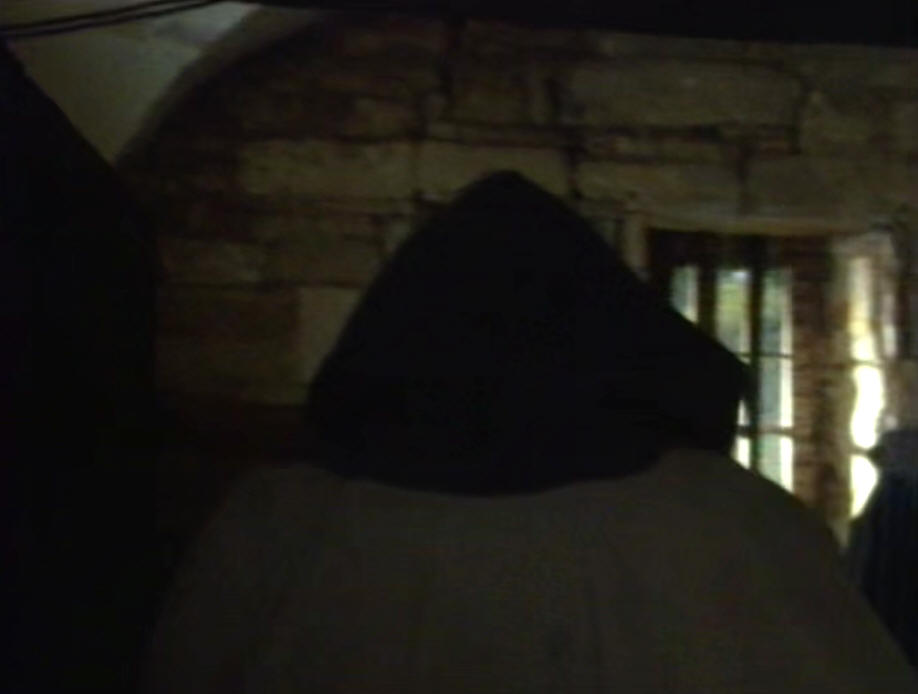
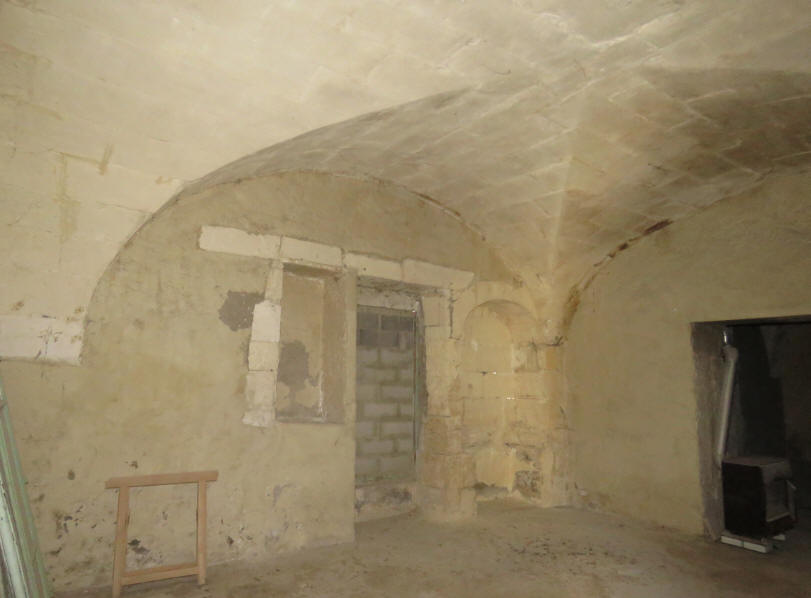
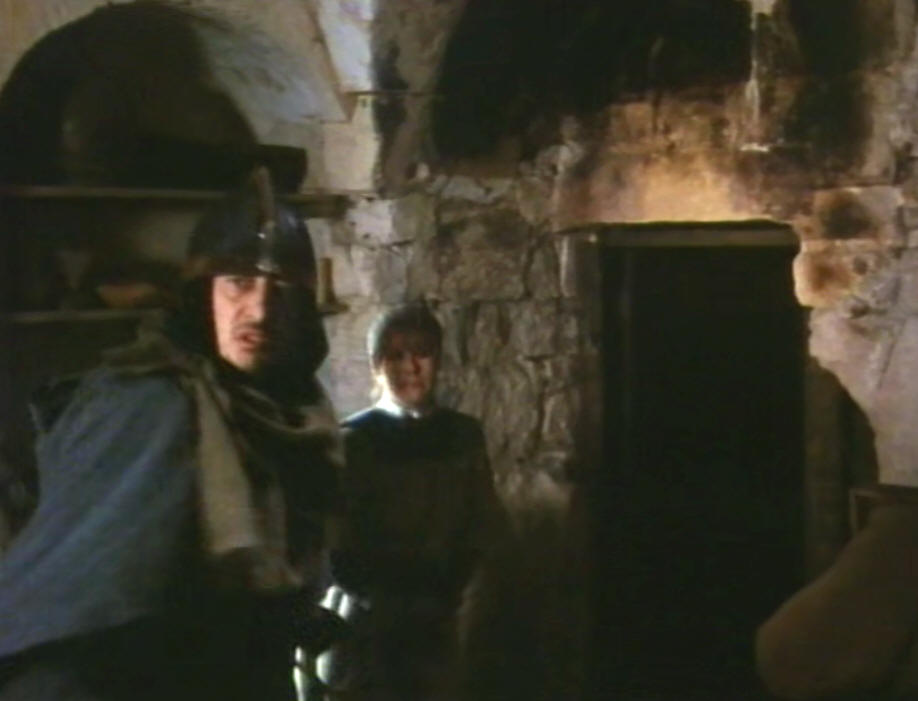
For those two episodes they used different angles, the photo below proves it's the same building.
The Electors The Electors
Message from Geneve-bakery scene
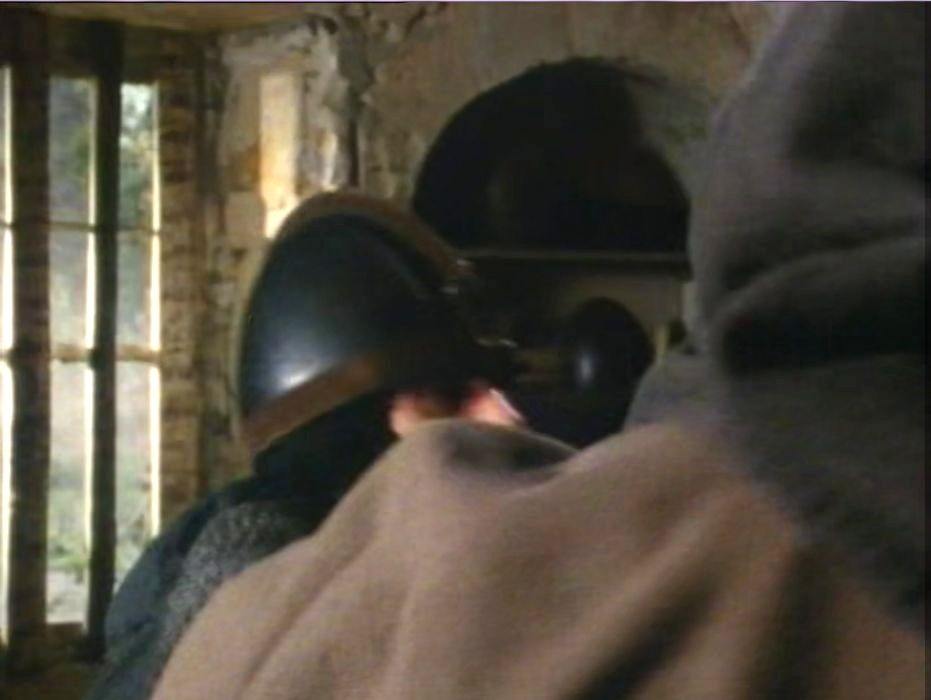
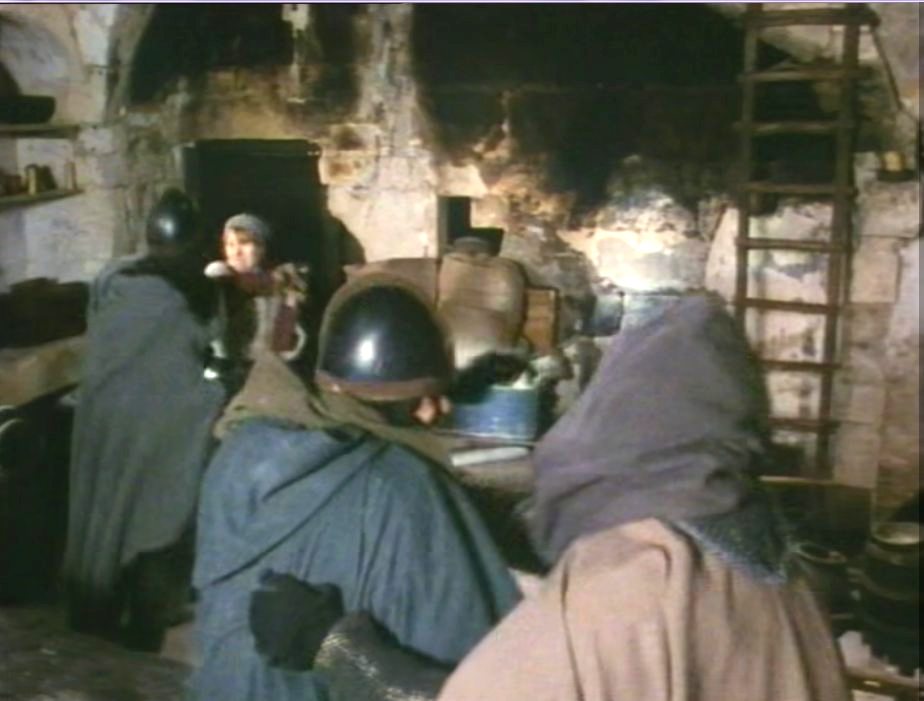

|
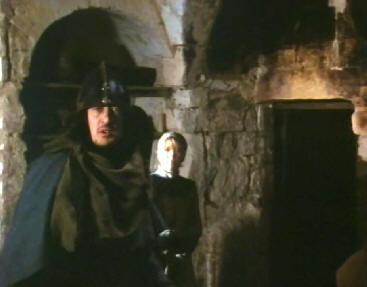
There used to be a gap in the wall,
see below. That's where the new door is nowadays.
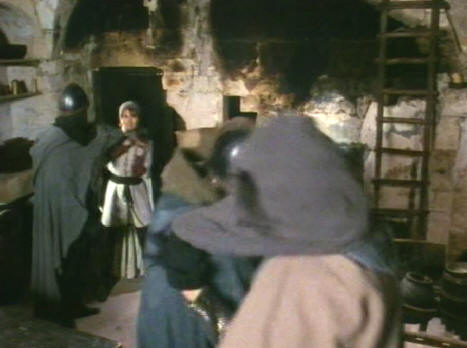 |
The
right door is removed to the middle of the wall. And is replaced for a
wider one.
 |
The other side of room 1.
Photo
made from room 1. Photographer is looking to the entrance hall
The closed window you see below is at the courtyard side.
The wall is
plastered and the door has since been replaced. Some doors in this building are still original.
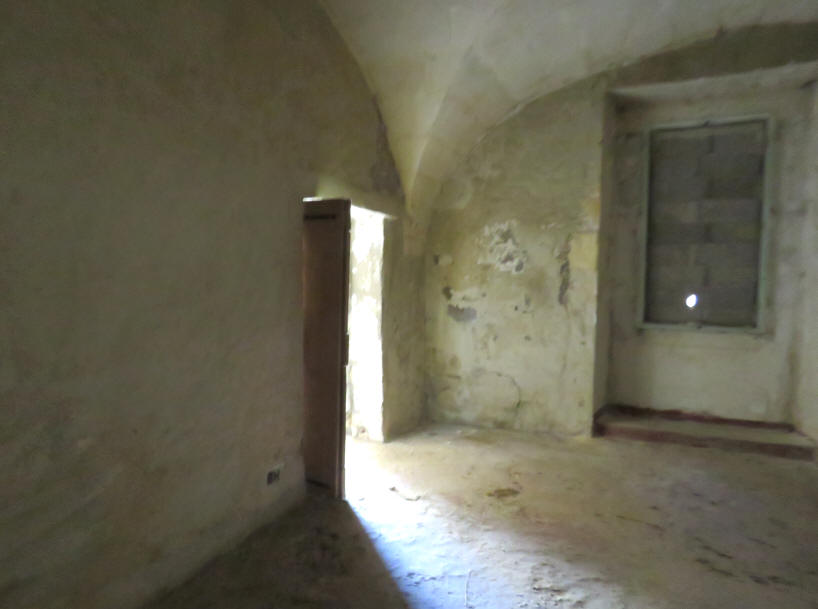
Below some Crossbow stills of this door.
Horst falls
into the room and takes the door with him
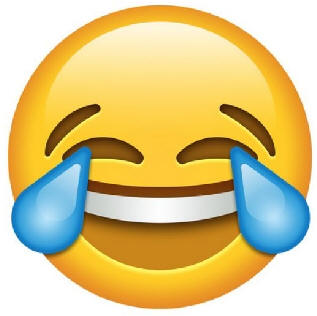 (the
orginial door stands right).
(the
orginial door stands right).
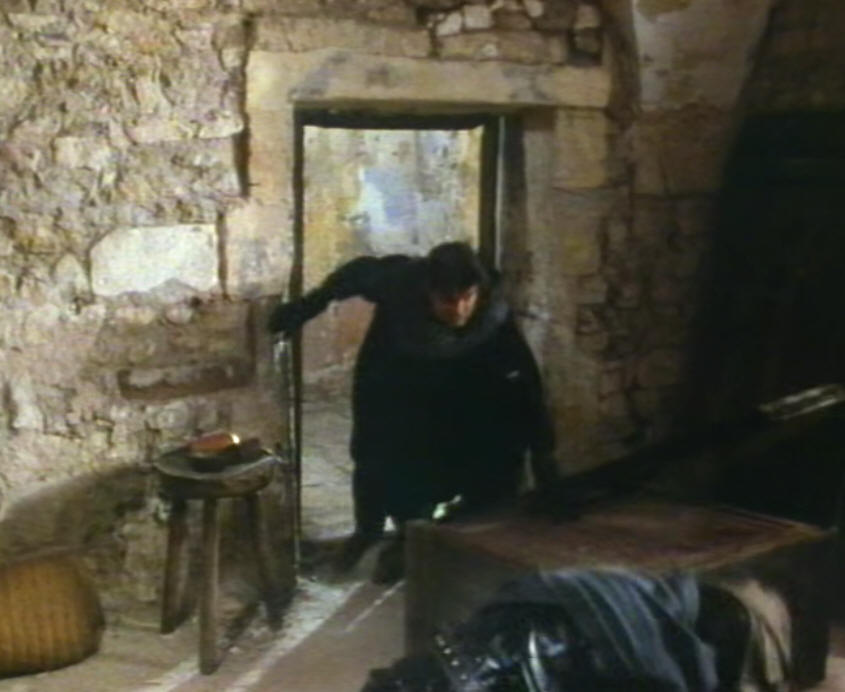
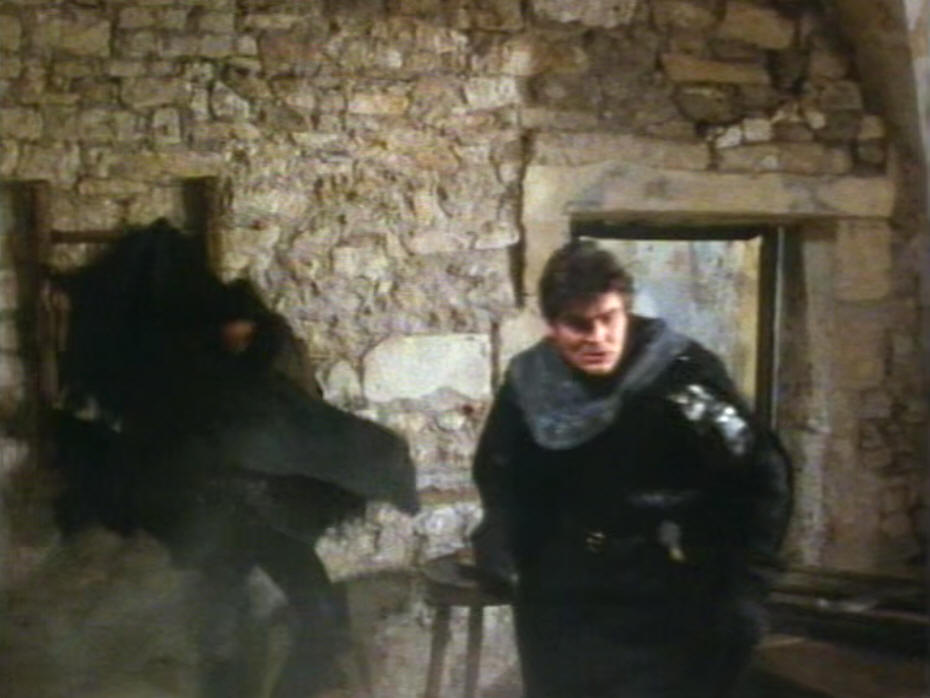
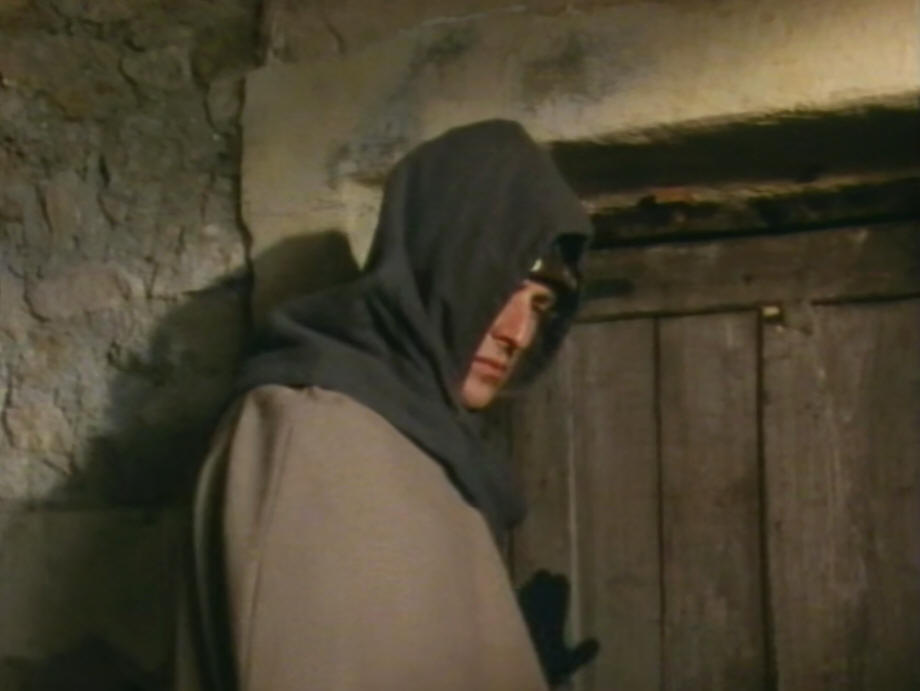
Horst and Tell entering room 1 In
the back the window west of the building, still room 1 (the smalles window again)
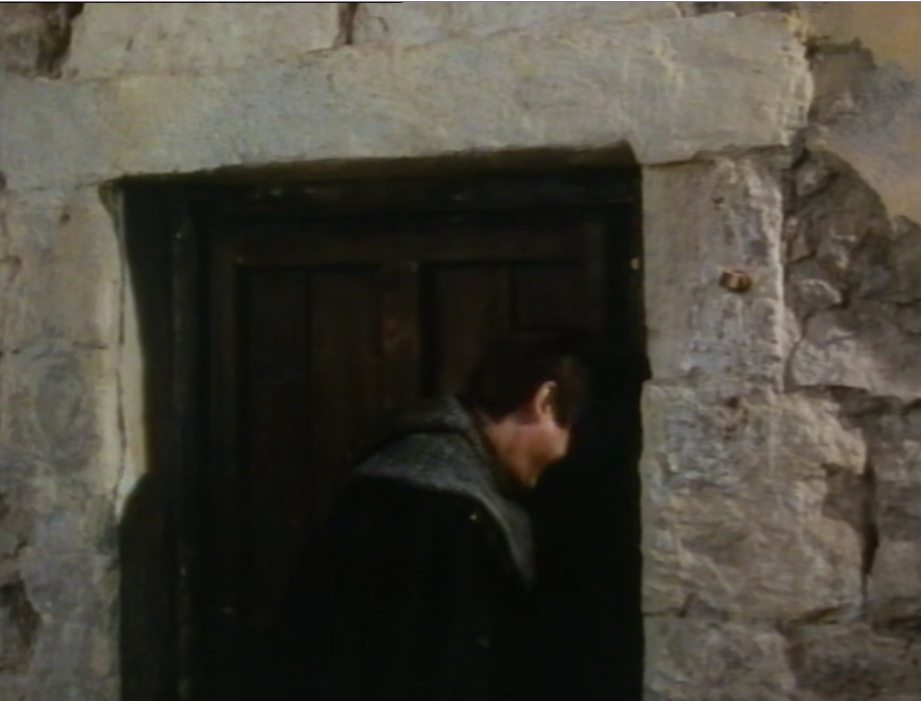
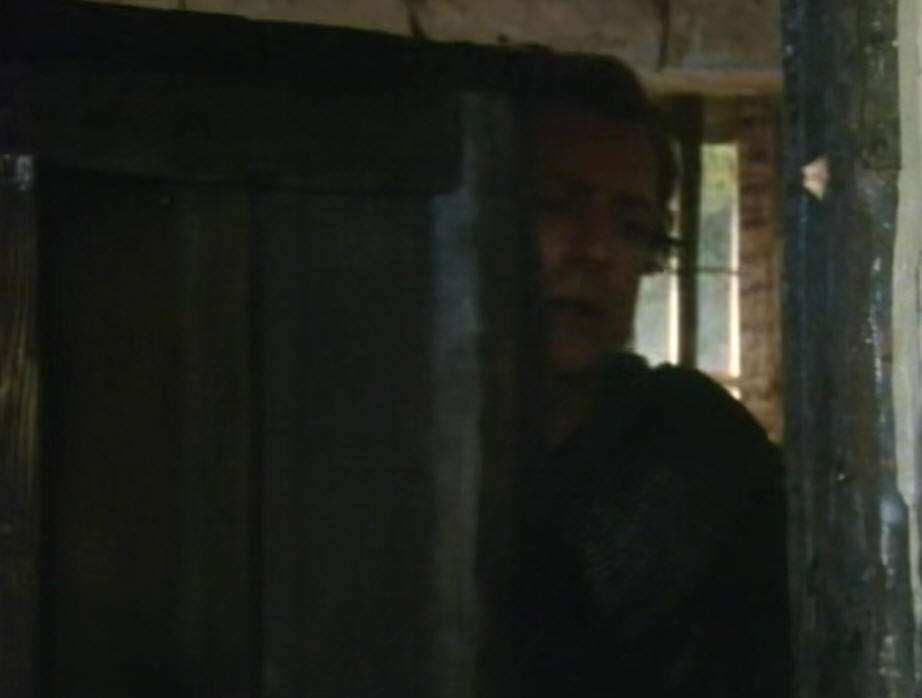
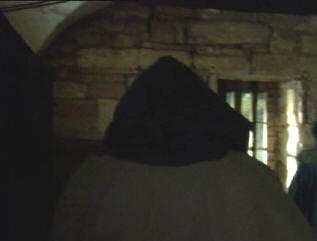
All the windows are closed with bricks nowadays. Some
original window frames are present, I hope to perhaps place them again one day.
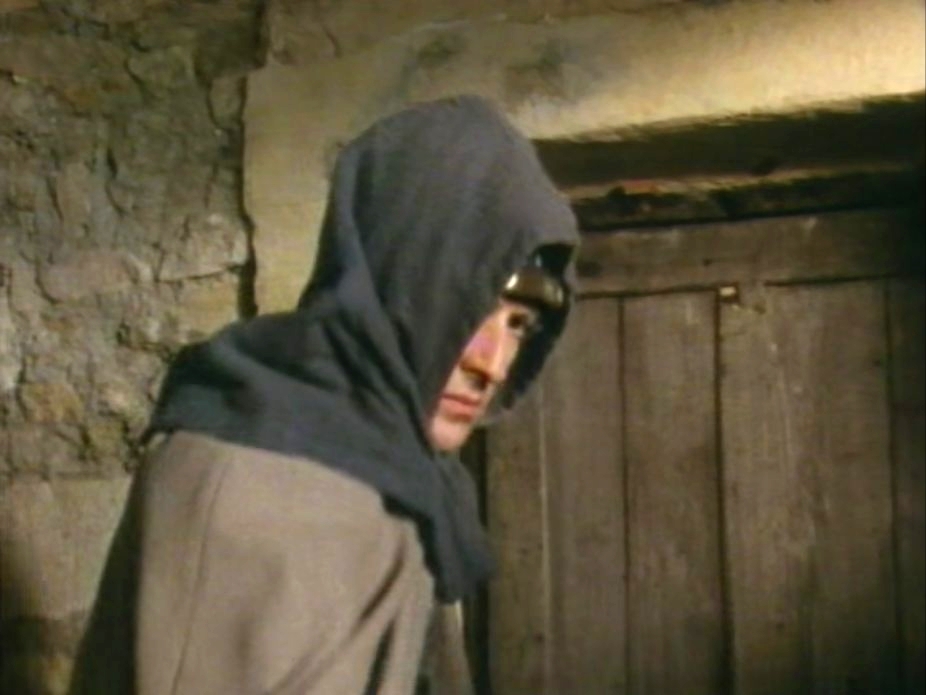

Bakery fire
scene
Albert
accidentally hits the curtains with his torch and a fire starts (still
room 1)
They closed this window in
the bakery (room 1,
window Southside attached to the courtyard) The window behind Albert.
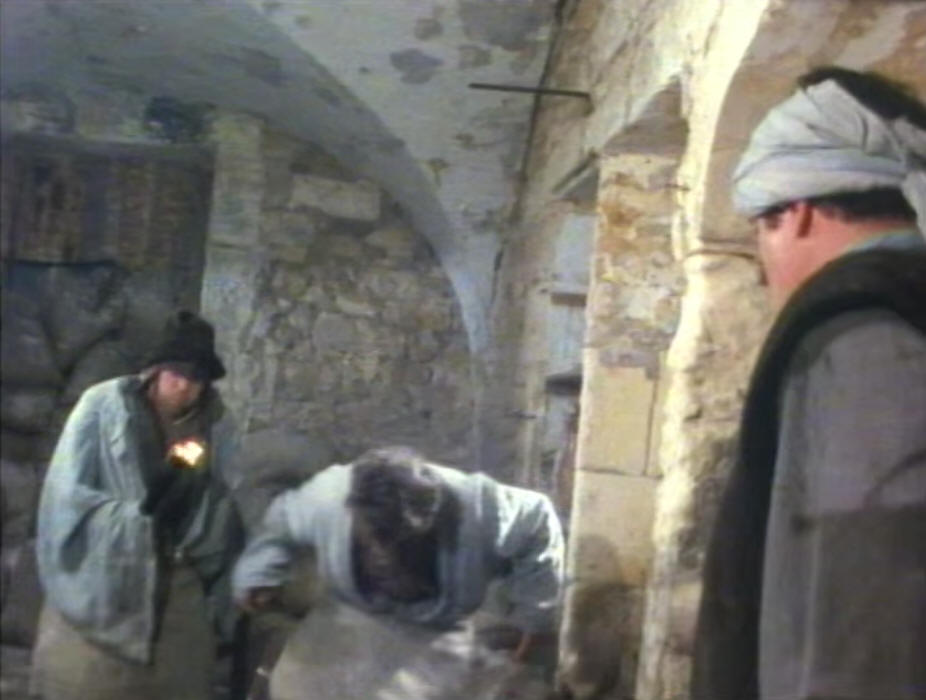
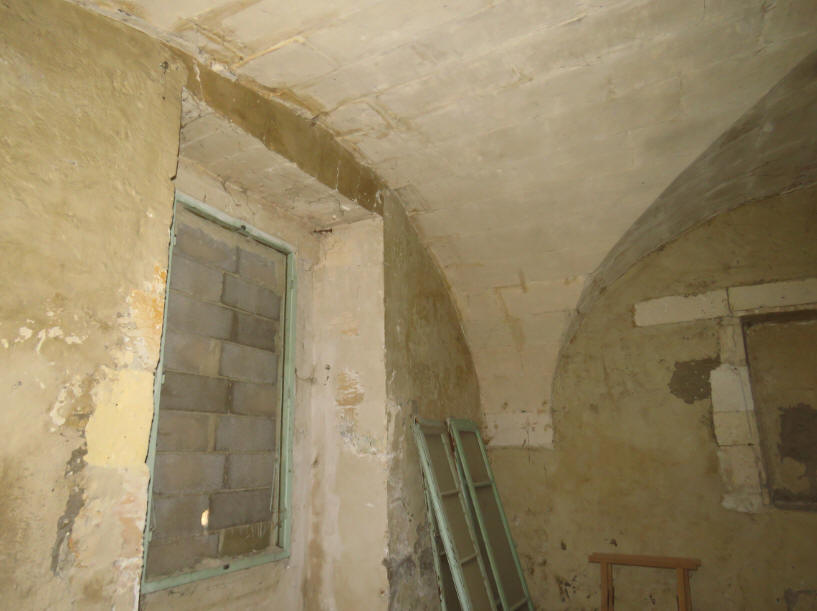
Episode The Electors -
Transition of the scene: from room 1 to room 2
This doorpost is damaged, so they put a shelf against it,
probably not knowing there was carved on it.
Electors
- Doorpost seen from room 1
Message from Geneva
Electors
- Same doorpost from room 2 (you see the shelfs behind Horst
of room 1)
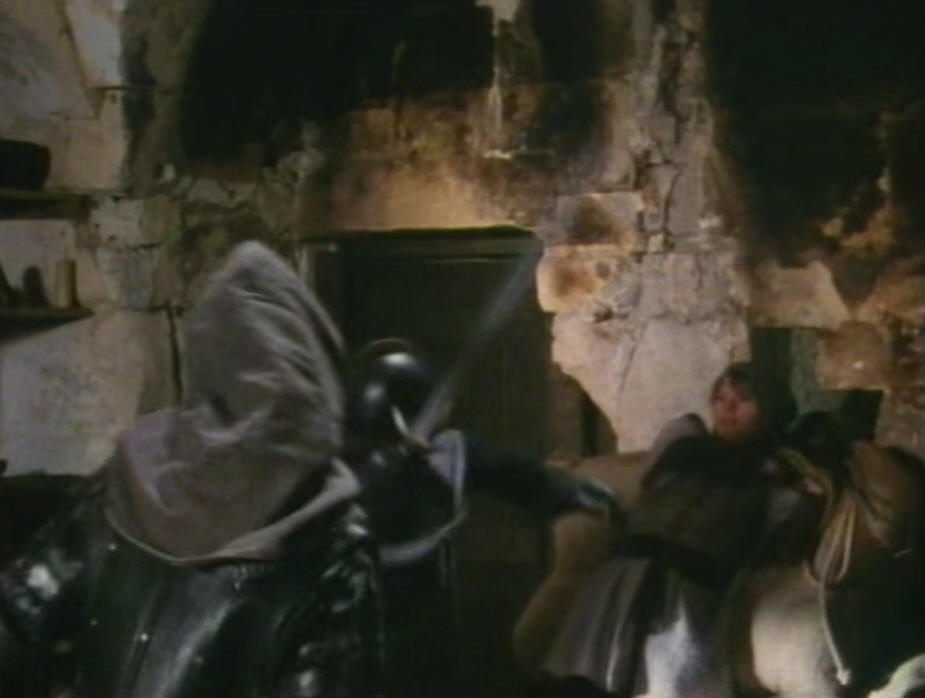
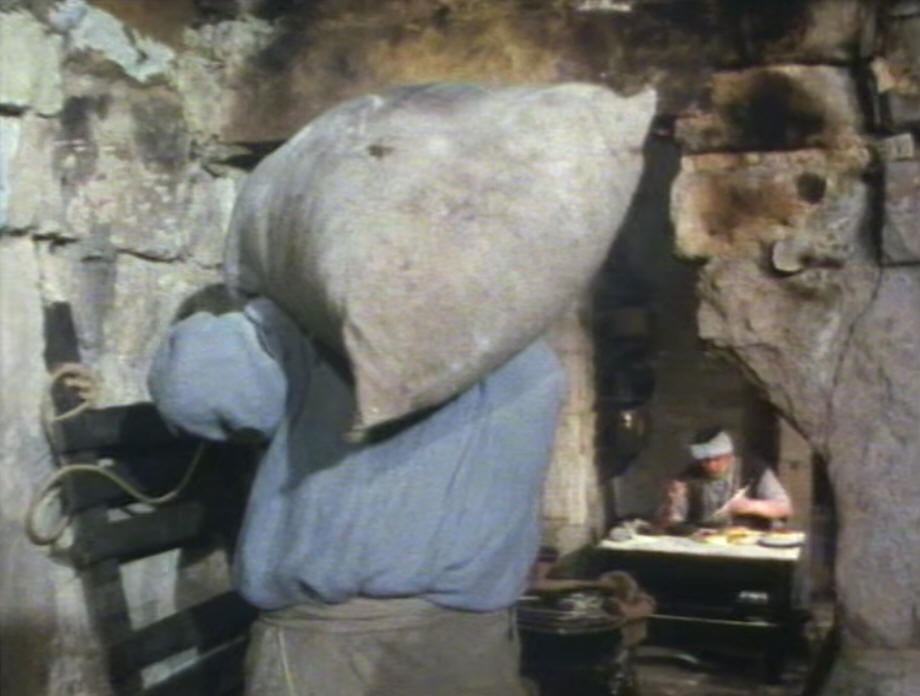
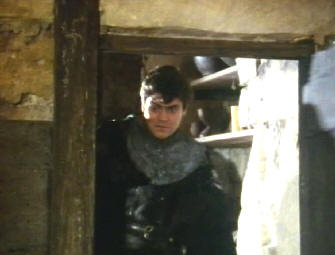
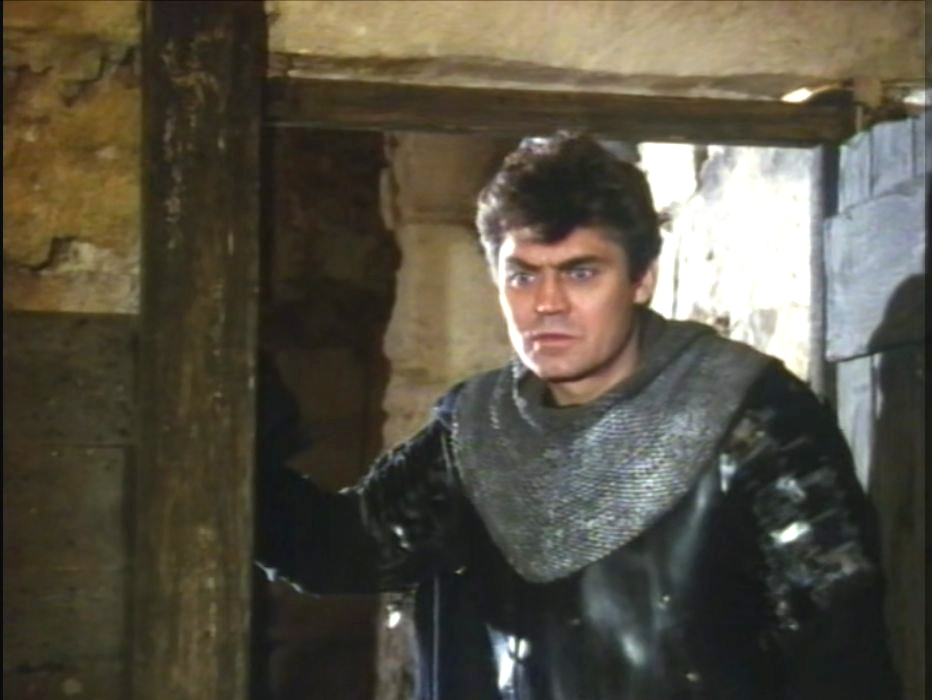
The scene
with Horst and Tell (The Electors) is made from room 2. It's this wide door that
gives acces from one to room 2
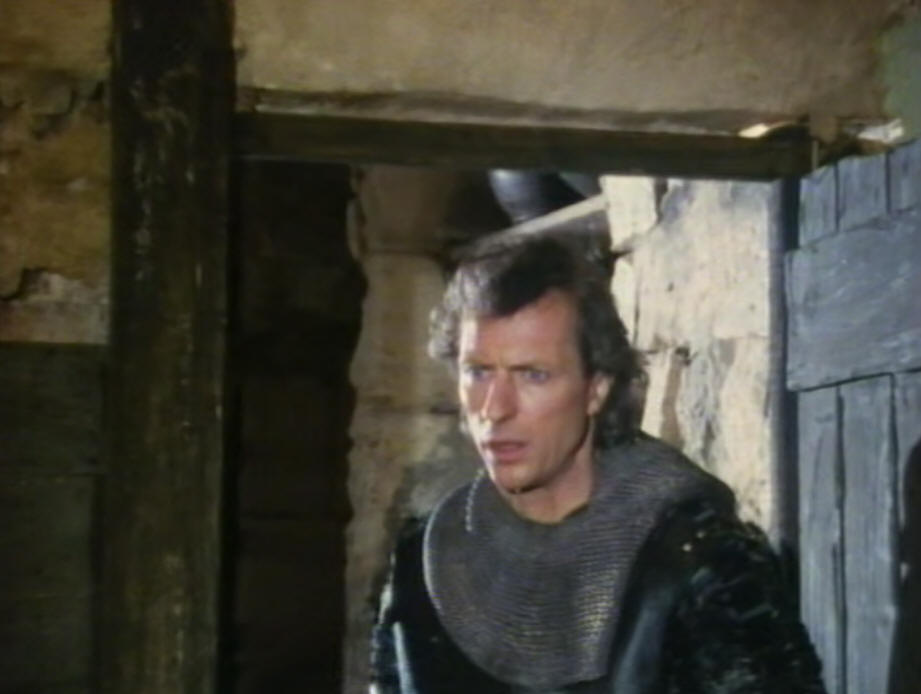

The Second room
Second room in Message to Geneva, this window was
never into sight (in episode message from geneve the bakery they only filmed the
fireplace and right of it)
Room 1 and 2 are almost identic except the fireplace.
This window is west of the building (room 2)
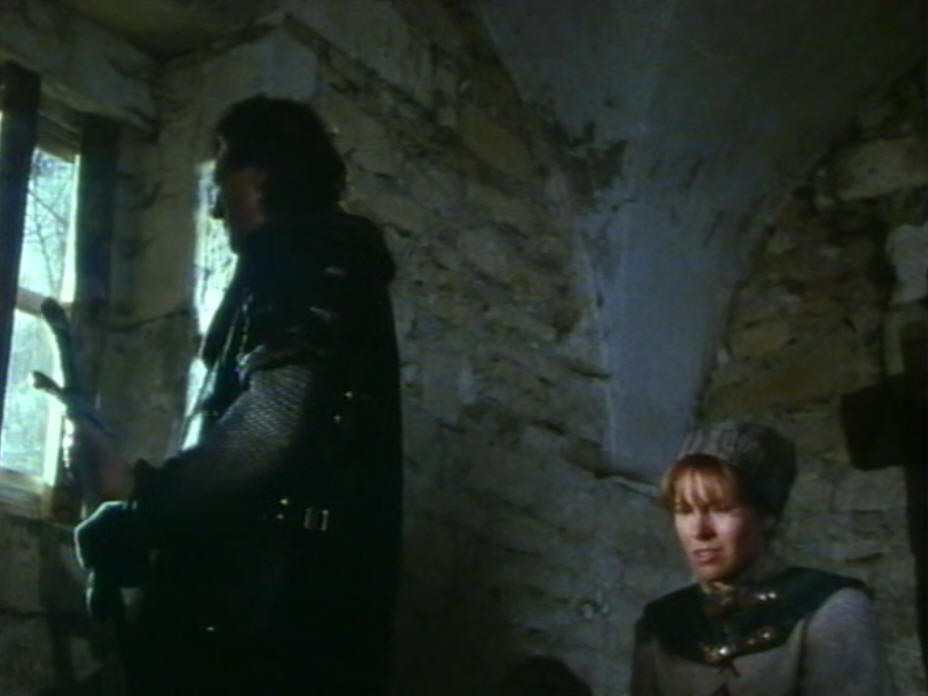
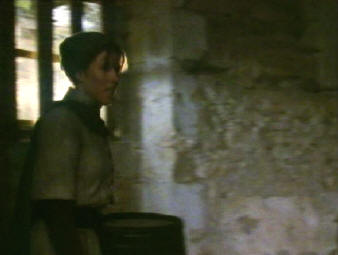
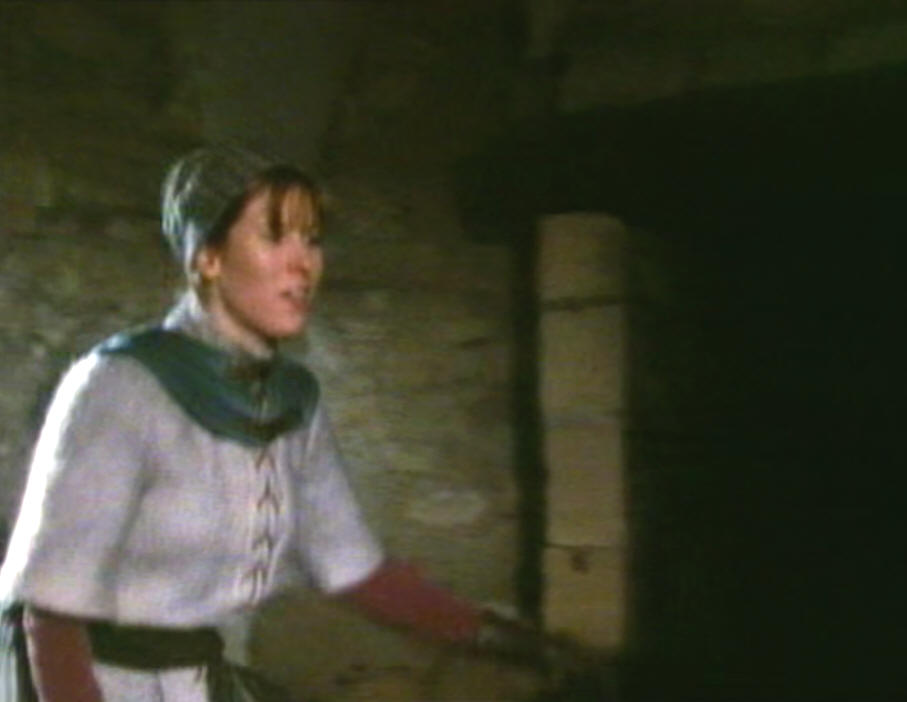
The scene: They the duke,
her father.
Location:
room 2

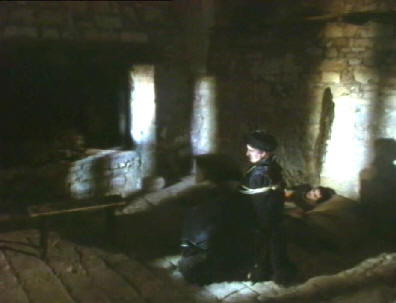

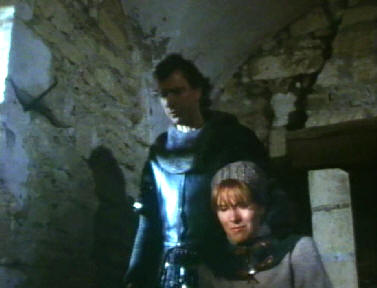
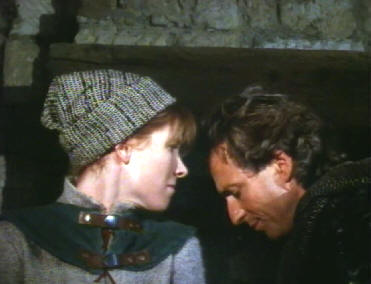
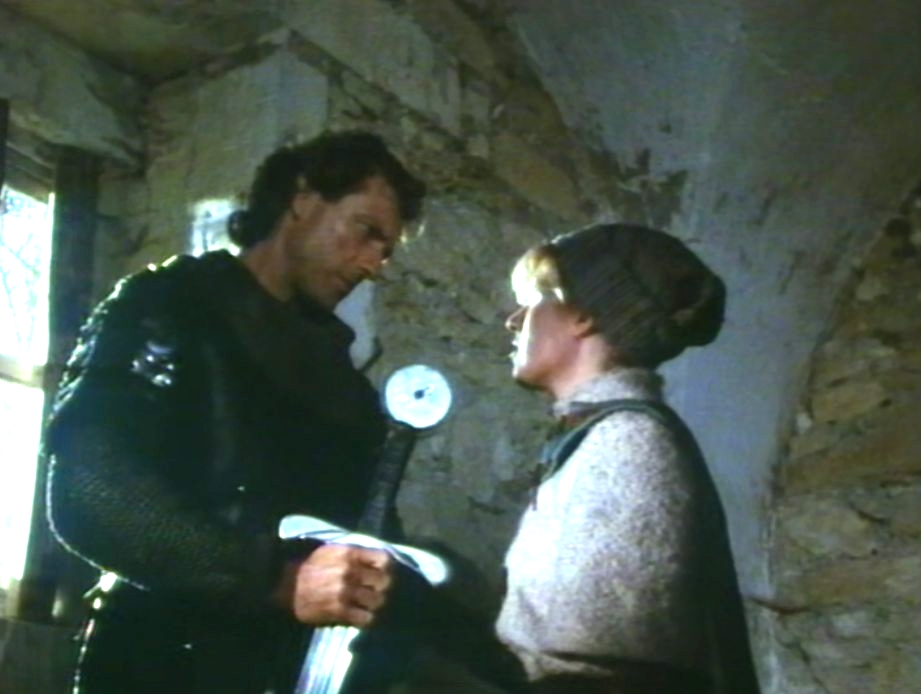
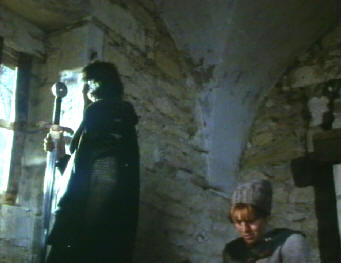
Second room, main
building. The fireplace is radical restored.
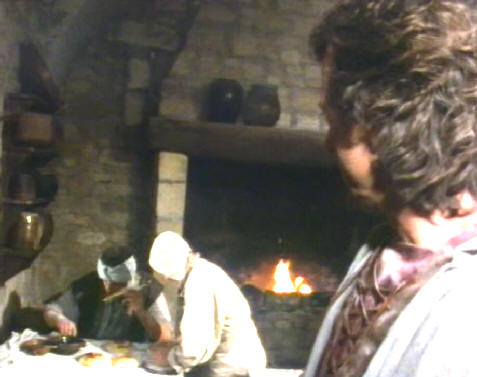
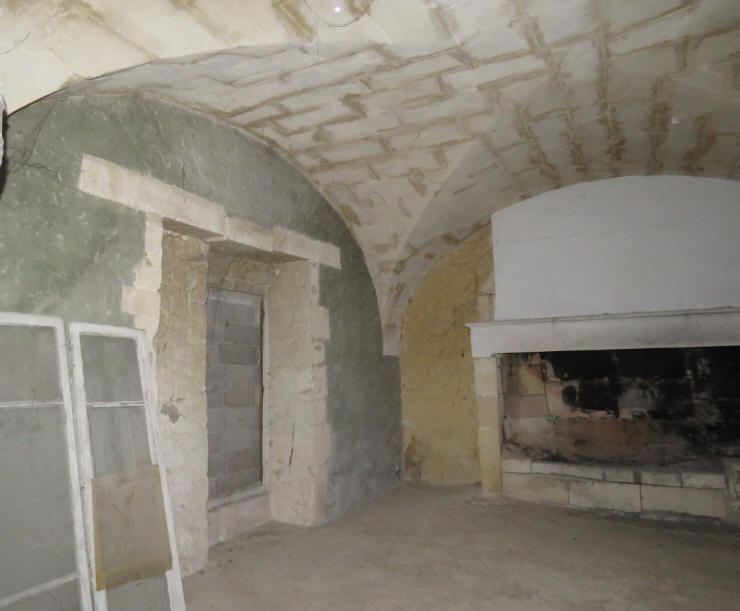
To Compare
- 3 scenes in room 2
1 The duke and his son are found, room 2
2 The room, the baker is working at the table
3 The daugther of the duke and her grief
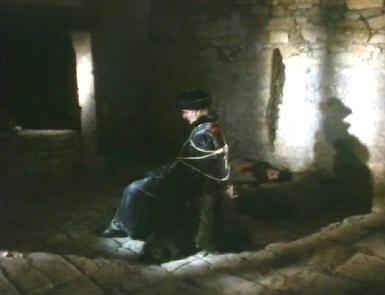
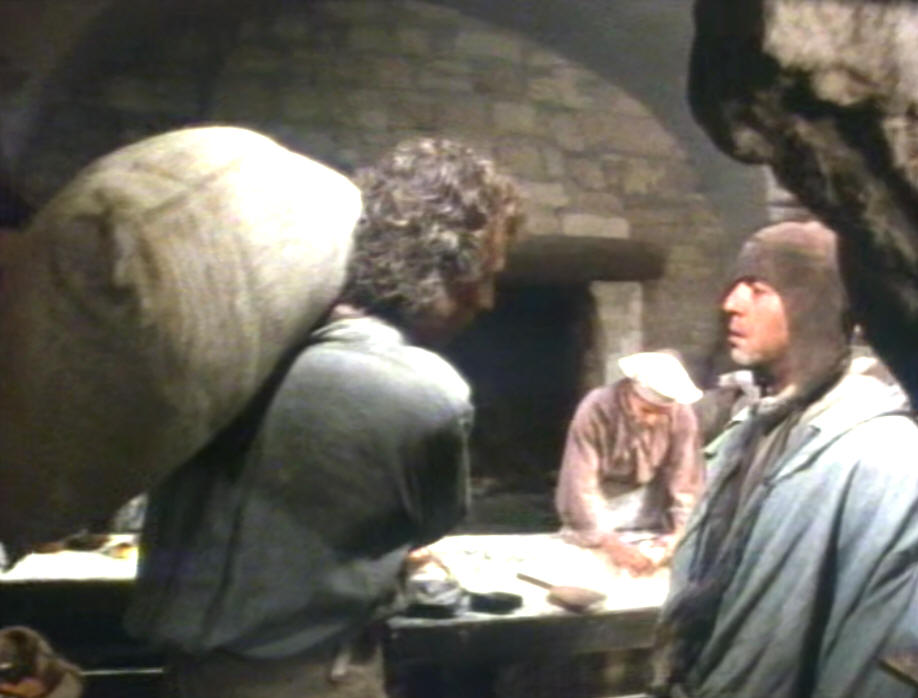
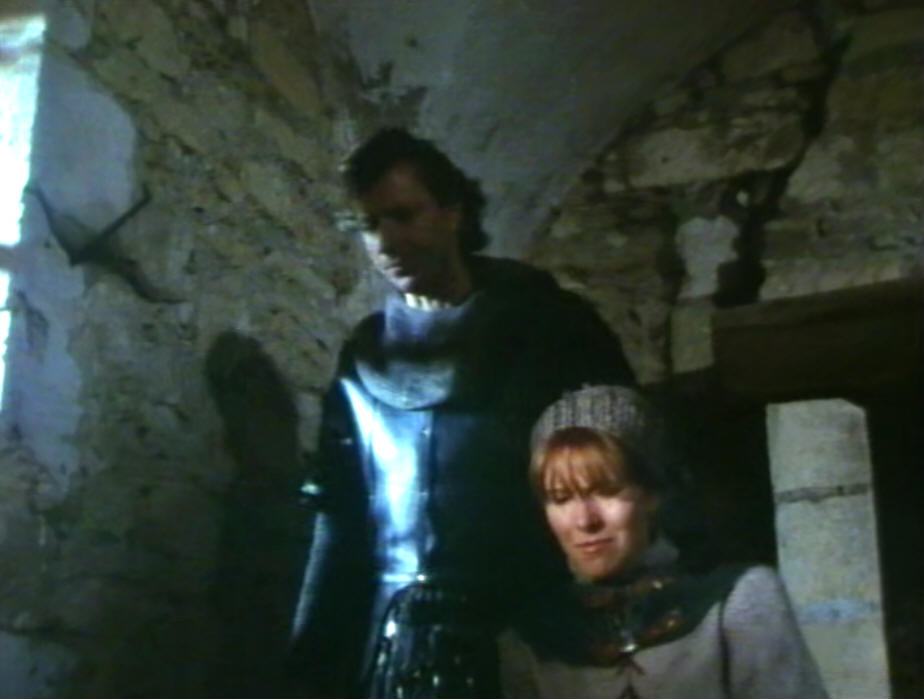
Scene:
It seems a struggle to discover the secret words...to recognize the man they are
looking for.
Tell carefully tries to get information about the person they are looking for
through the baker.
The
baker doesn't seem to be the right person, he becomes slightly annoyed. Tell's
interest made him even think Tell has the intention to steal his recipe for his
almond tarts. Which causes trouble.
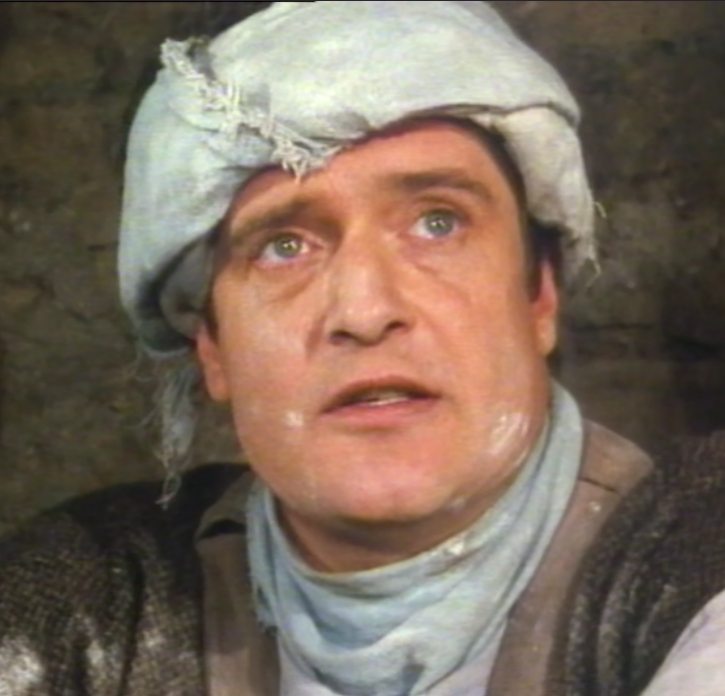
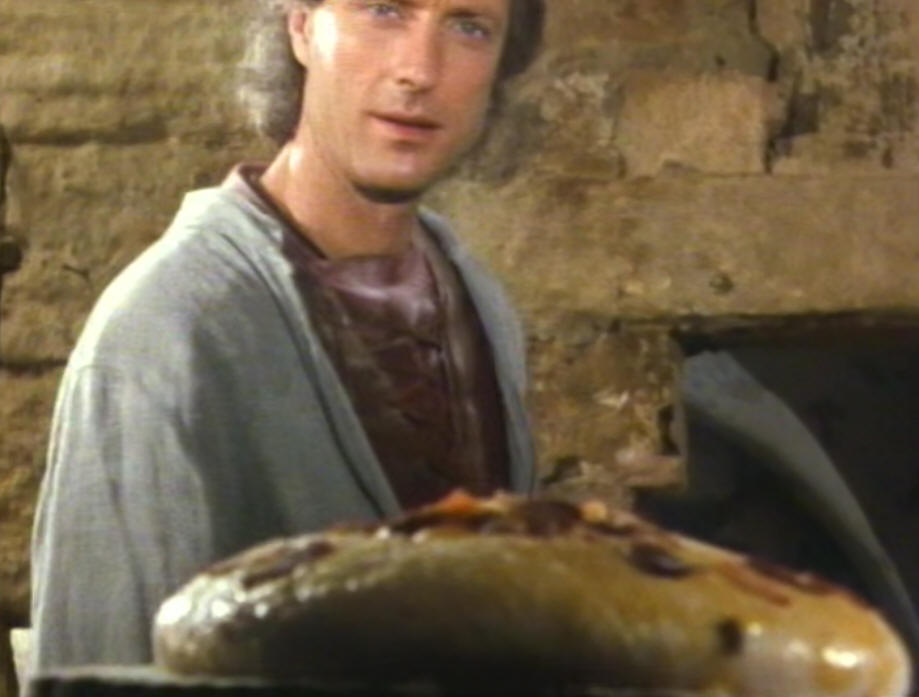

Scene:
Tell takes the job seriously
but Albert is lounching a lot. Time for a change ;) Tell gave him one of the flour bags
which made him fall. location:
Room 2. 100 percent sure of this place, but all plastered.
The fireplace has been changed a lot.
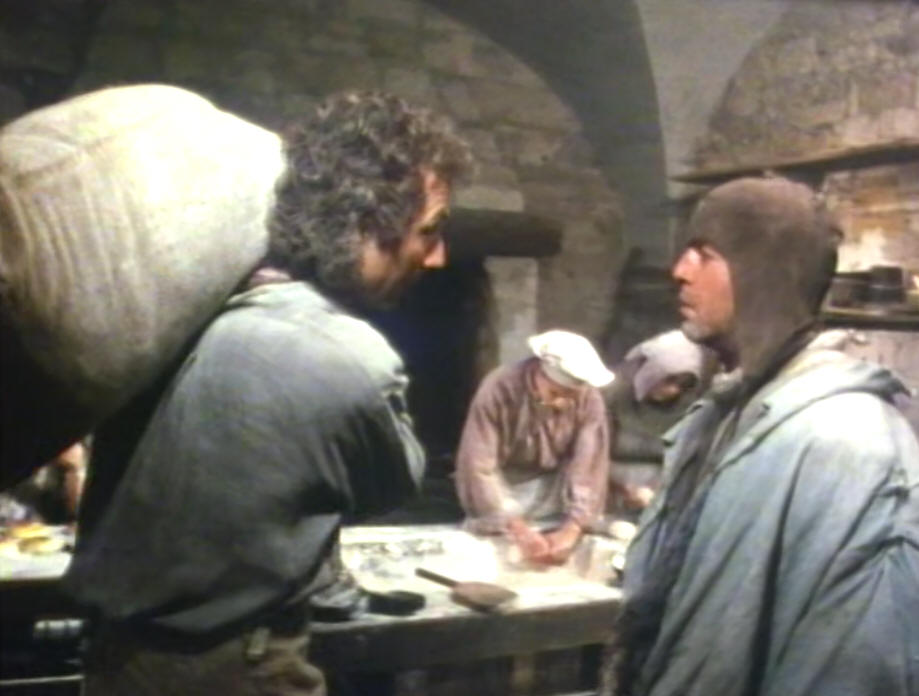
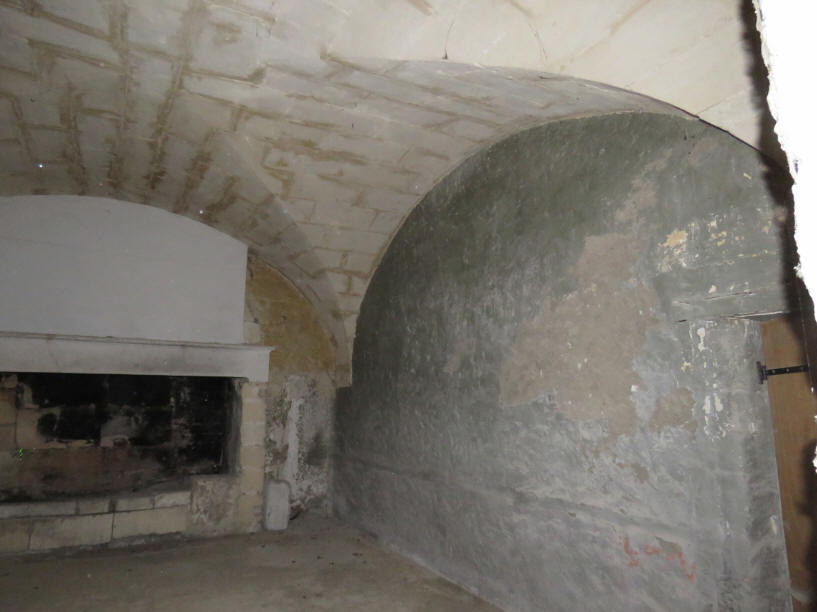
Albert spends his working time tasting almond
tarts.
Once caught by Tell, he tries to convince him that he is looking
for a clue in the cakes.
To Compare
a scene:
The wooden doorpost shelf is in the next
episode no longer there.
Straight view from room 2 into room 1. It confuses
me that the left doorpost shelf is gone (other episode).
Shot
Message of Geneva, the bakery 43
Shot of the
The Electors
44
Message of Geneva Bakery
43



Map
Amateur drawing of the farmhouse ;) Left above is the main building devided into
4 rooms with a hall in the middle. The main building is the highest building.
It consists of 3 levels: ground level, first floor and second floor.
Crossbow was only filmed on the groundfoor (as far as I know). So you might say
this
is the groundlevel map. The outbuildings on the right do have 2 levels. I drew
also terrace is in front of the main building. Here Albert plays Checkers scene
with
Tell's money (Message of geneve). In the middle you see the courtyard with two
gates (left and below). The semicircle (left below in the corner) is the double
tower.

From room 2 to the hall
In Crossbow they managed to make a shot in the position you don't see the doors of the rooms
in opposite.
2019 Then the baker walks out through the right (right
above) door into the hall. This door has been replaced for another one. 1987
Graffiti on
the wall of the hall.
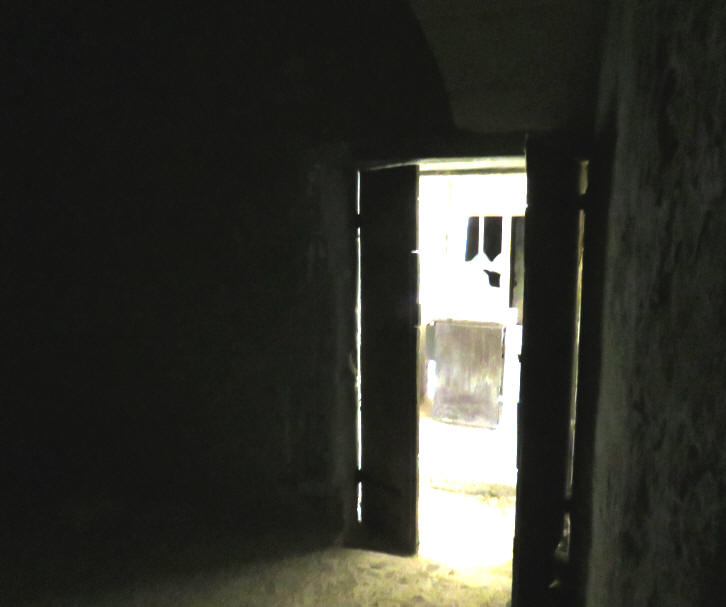
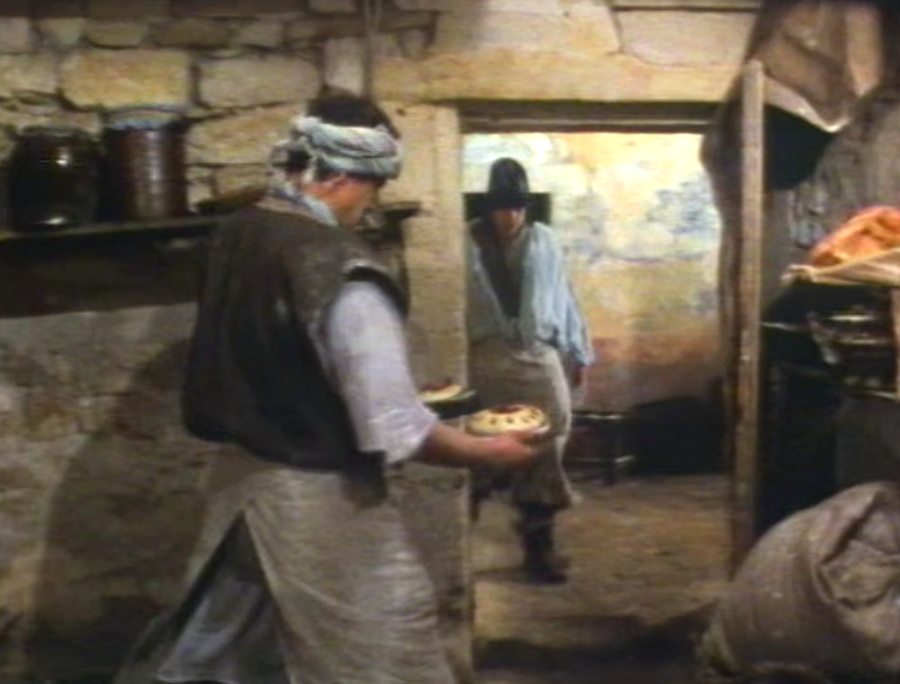

Trouble
Scene:
Fire and trouble, the baker is on his way and
sick of it. Tell tries to solve Albert's problems but he is unstoppable and
a comic scene starts.
Tell comes from room 1 and enters room 2, where
the baker sits at the table. Compare the right door above, it's totally
renovated.



On the run from room 2 to the hall
3 (and to room 5 the Flour fight)
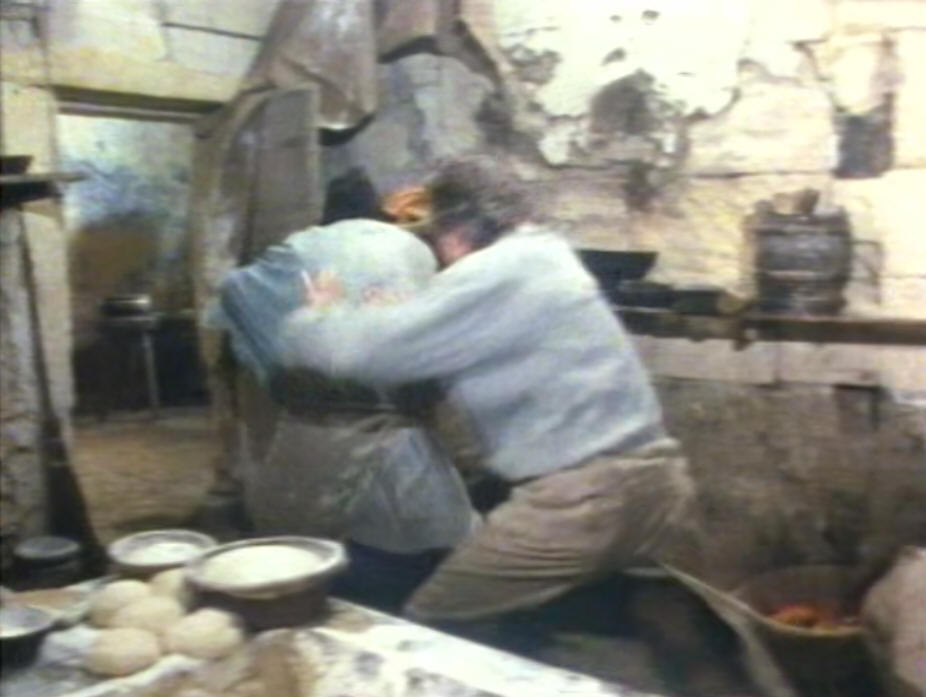
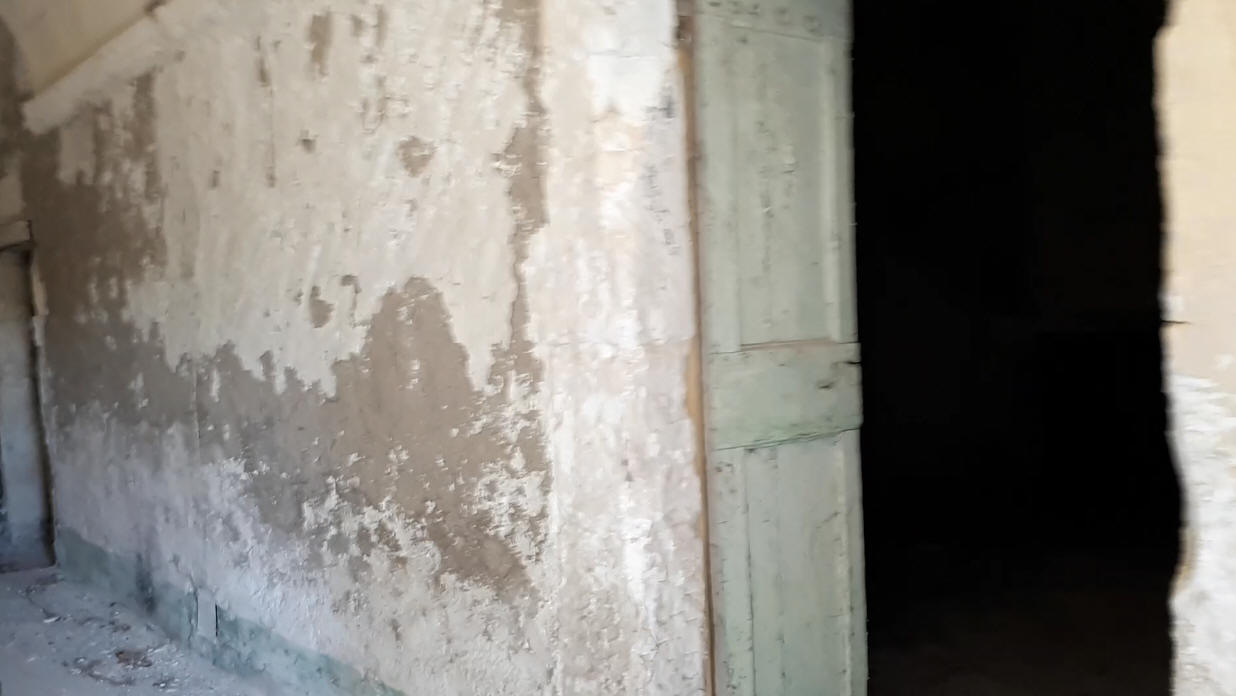
Room 3
We think
no scene
is shot over here in room 3.

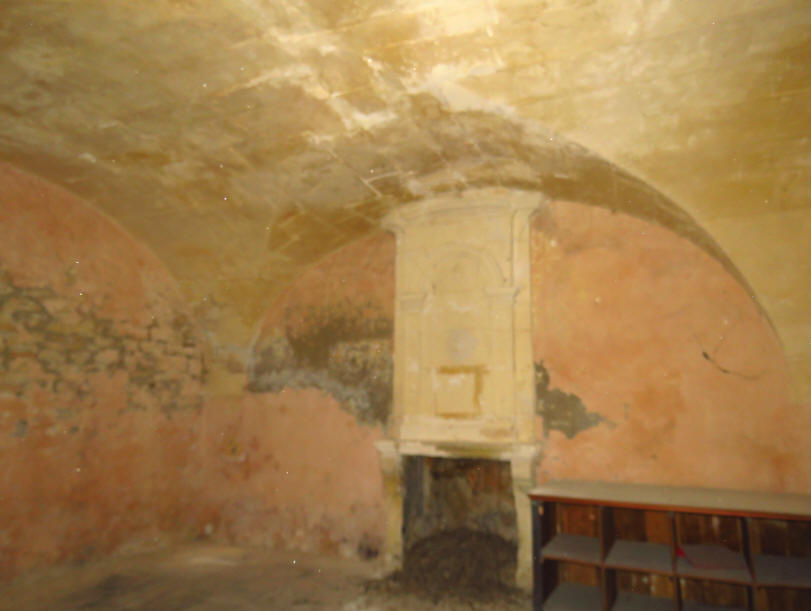
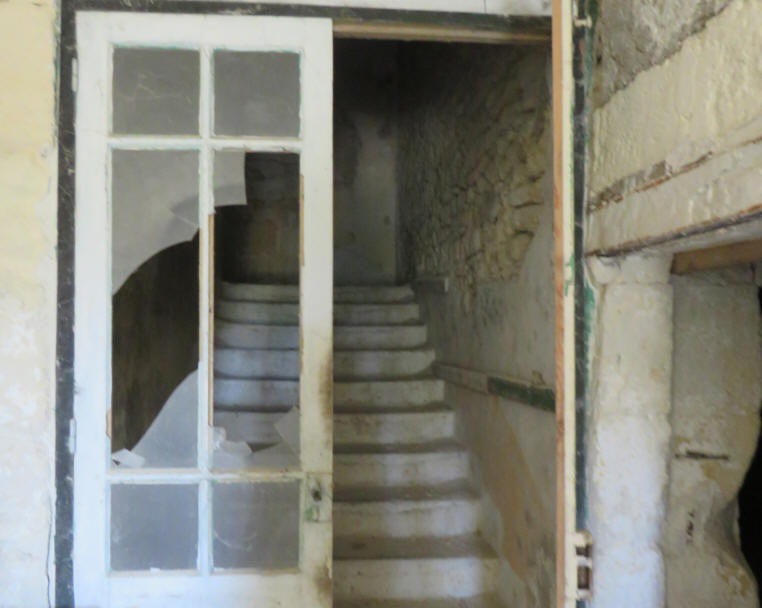

The flour fight chaos
The flour fight room with the white stone oven
-
Room 5

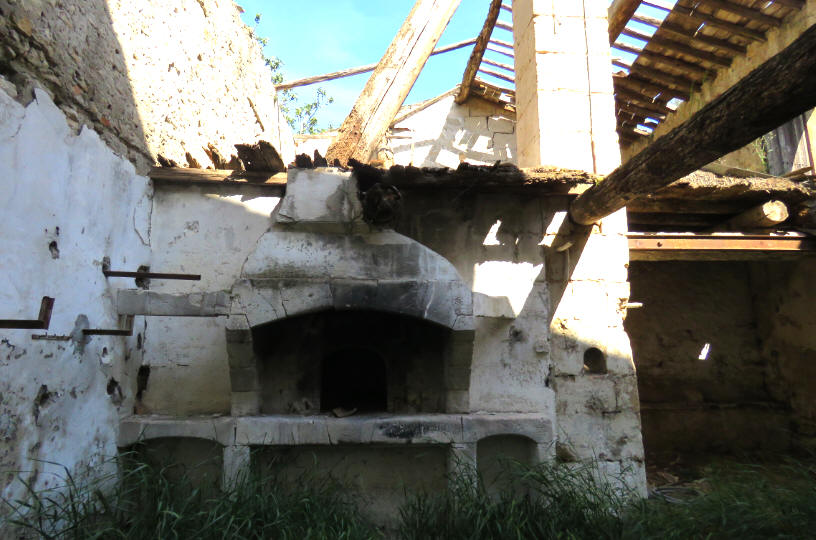
East wall of room 5
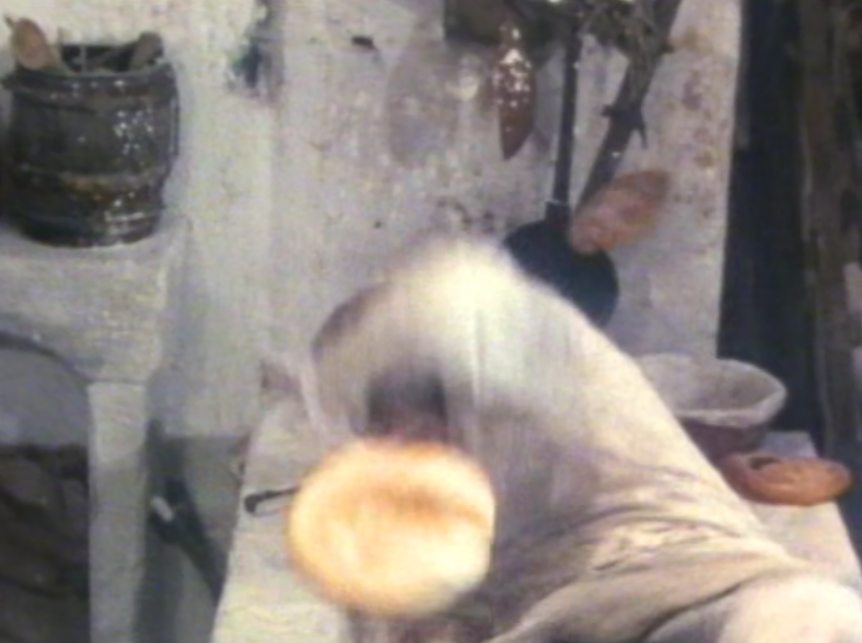
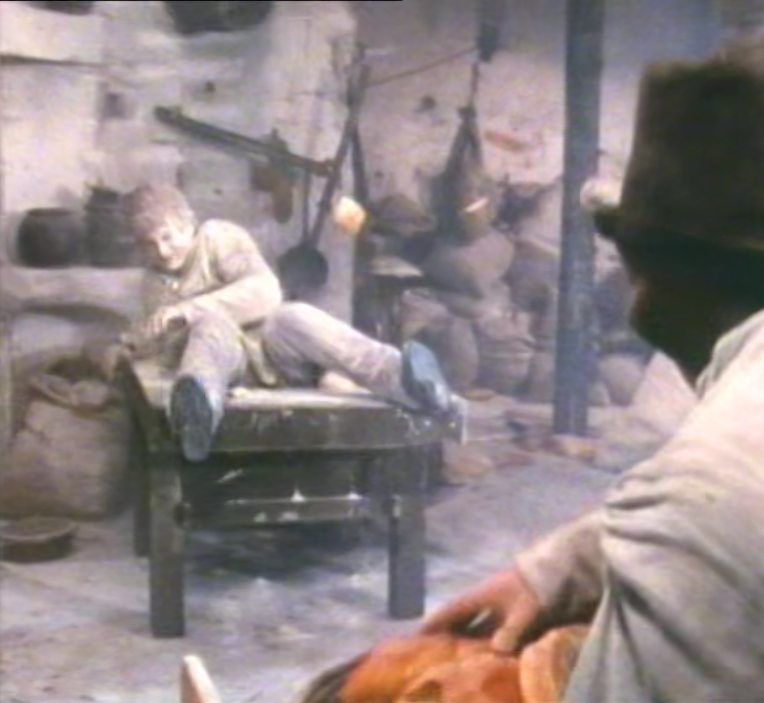
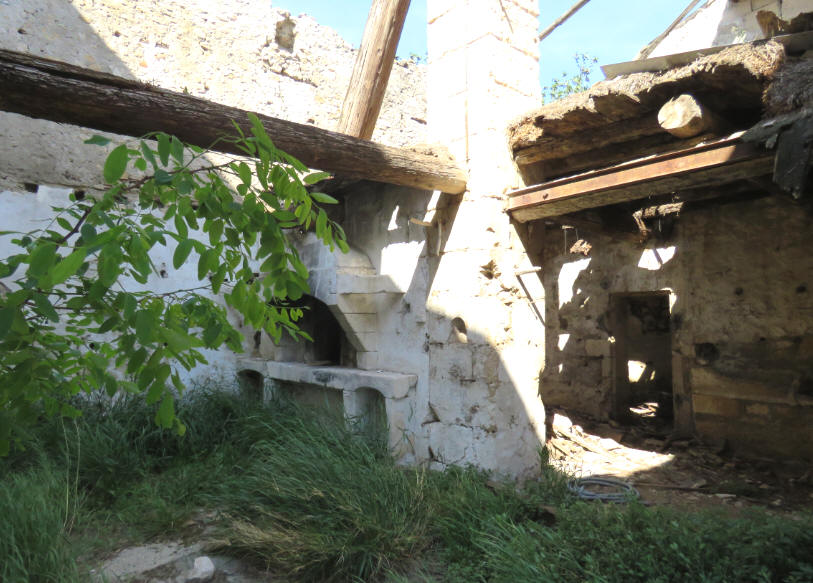
2019 Left side of this
wall and
the right side of this wall
2019
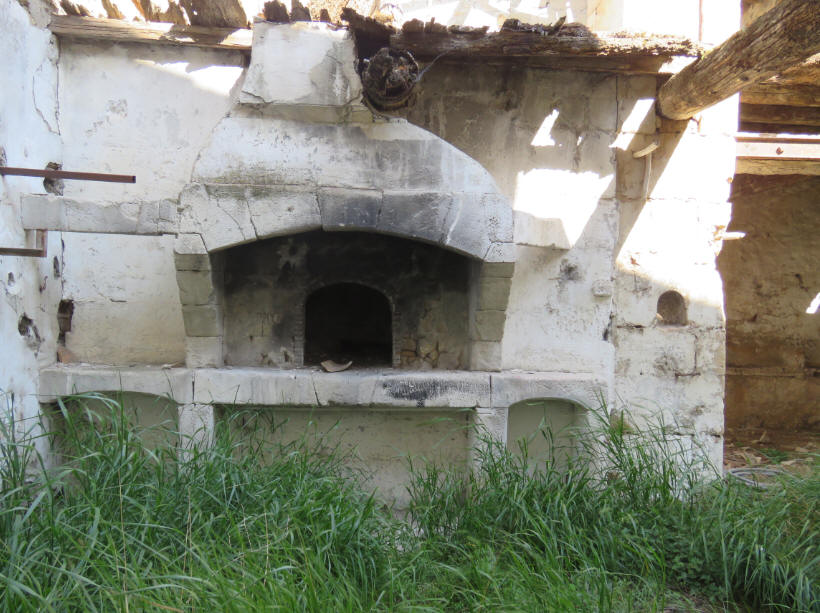
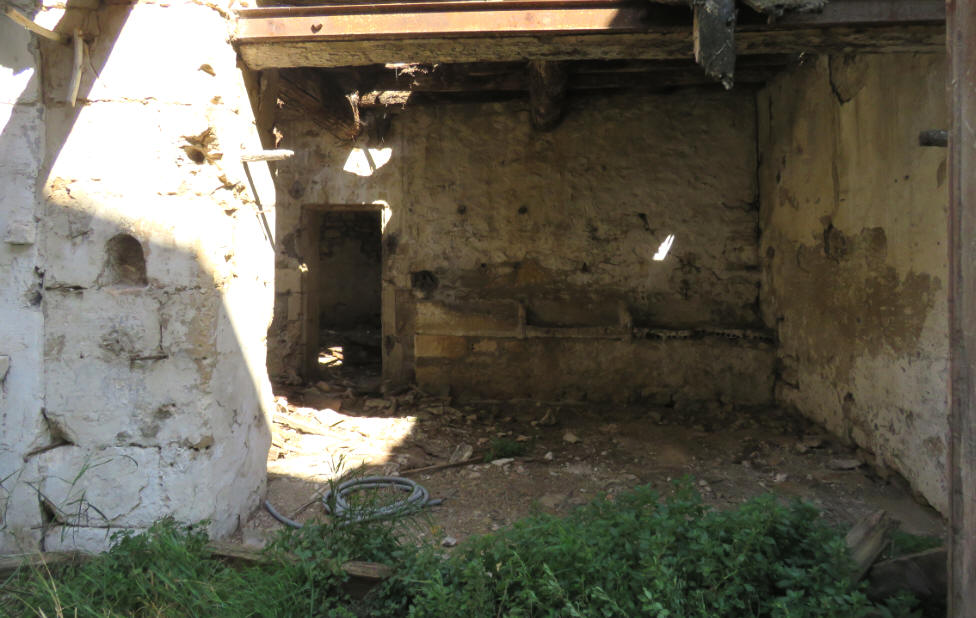
This scene is
shot in the corner
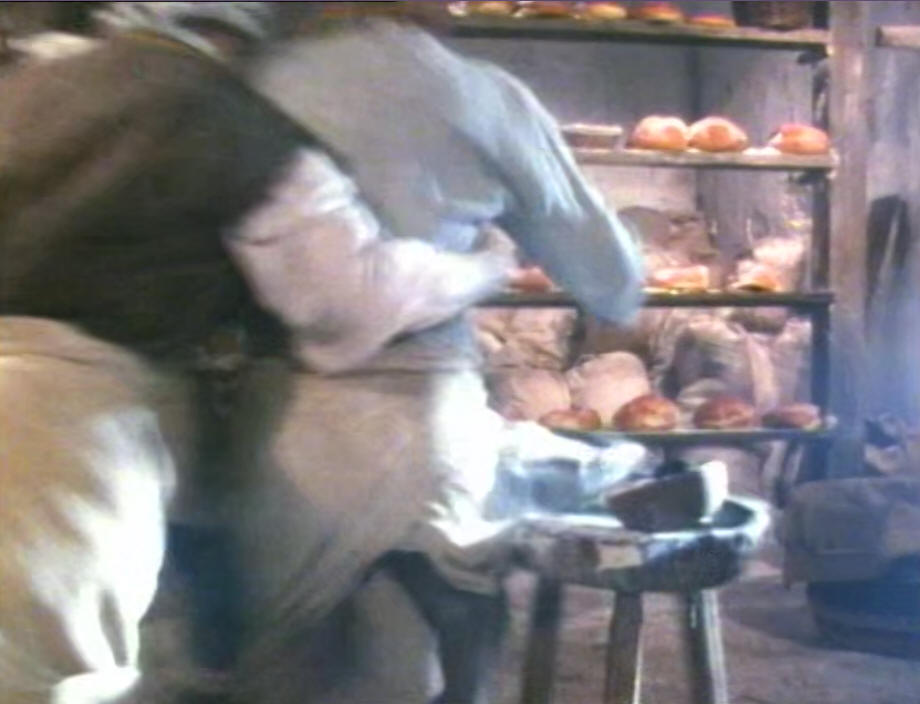
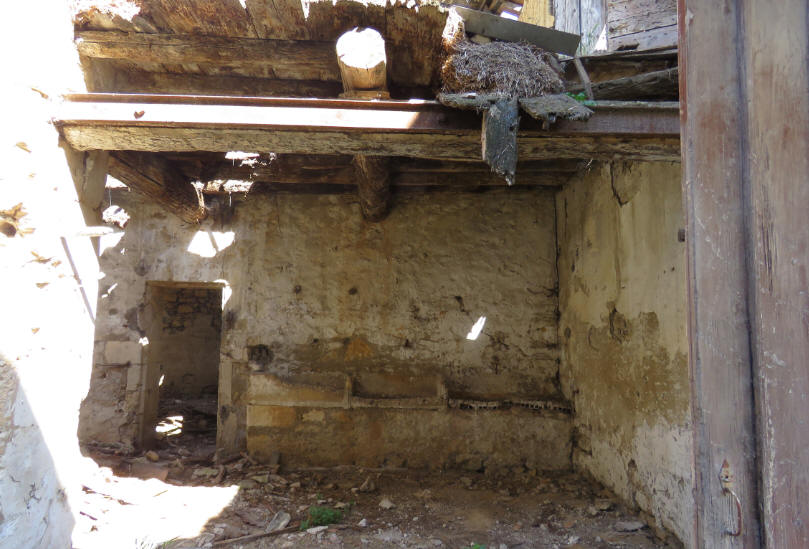
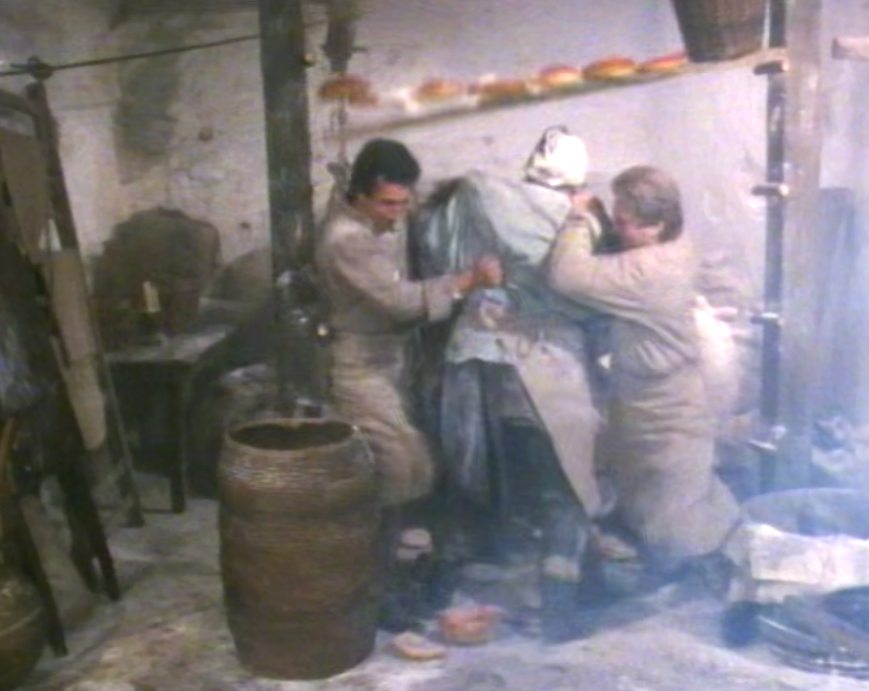
The
right wall, the wall structure is still the same


One shelf is still there... There used to be more shelves around
2015, but
all damaged and thrown in a container.
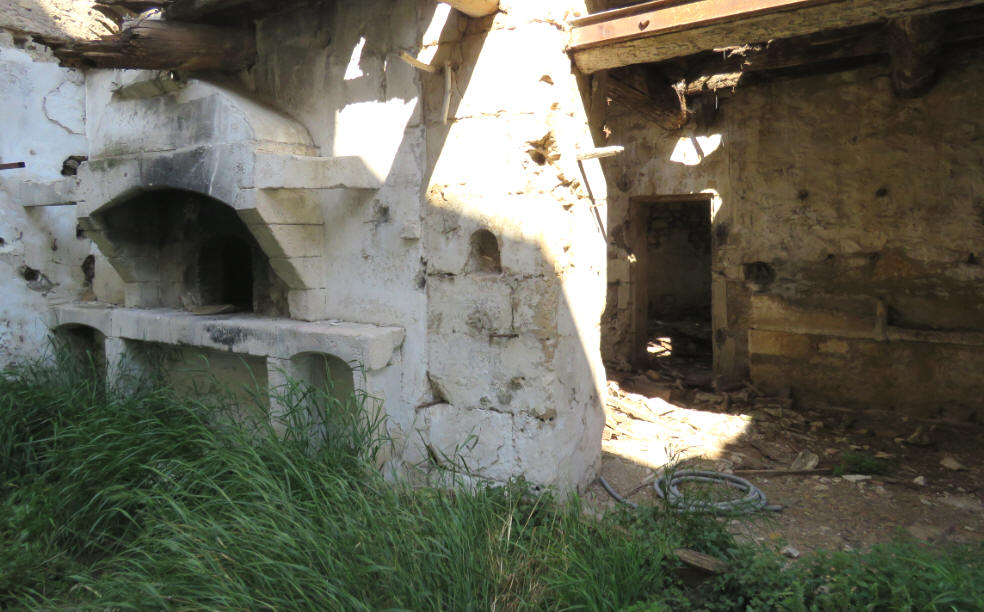
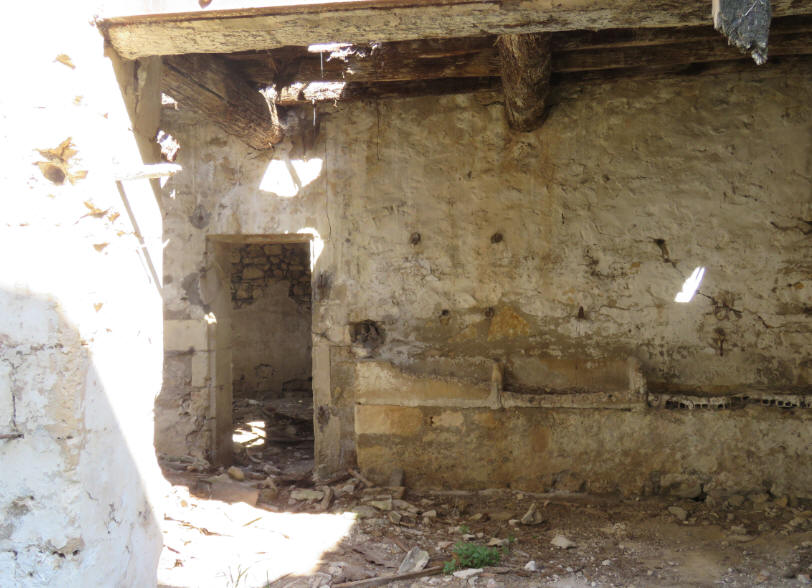
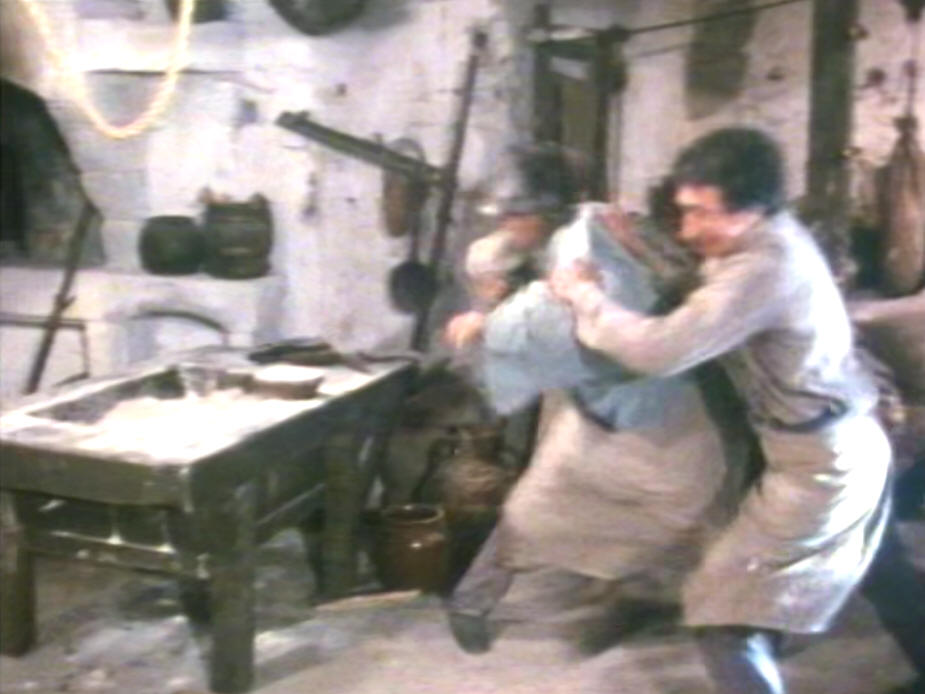
1987
2019
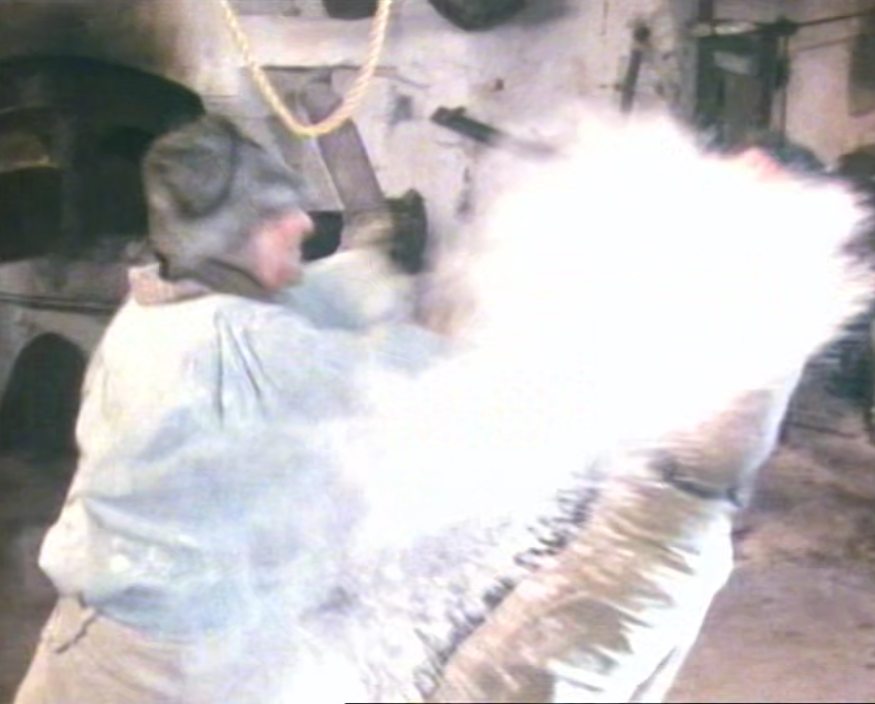
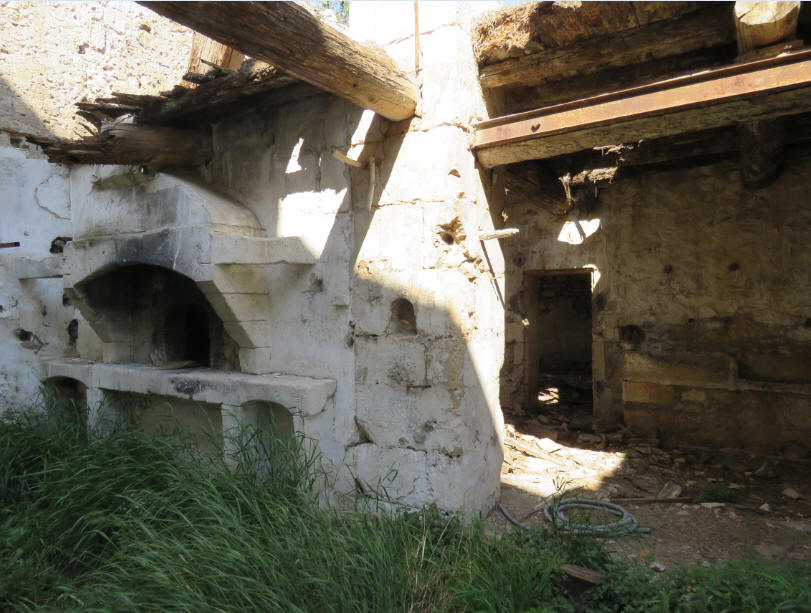
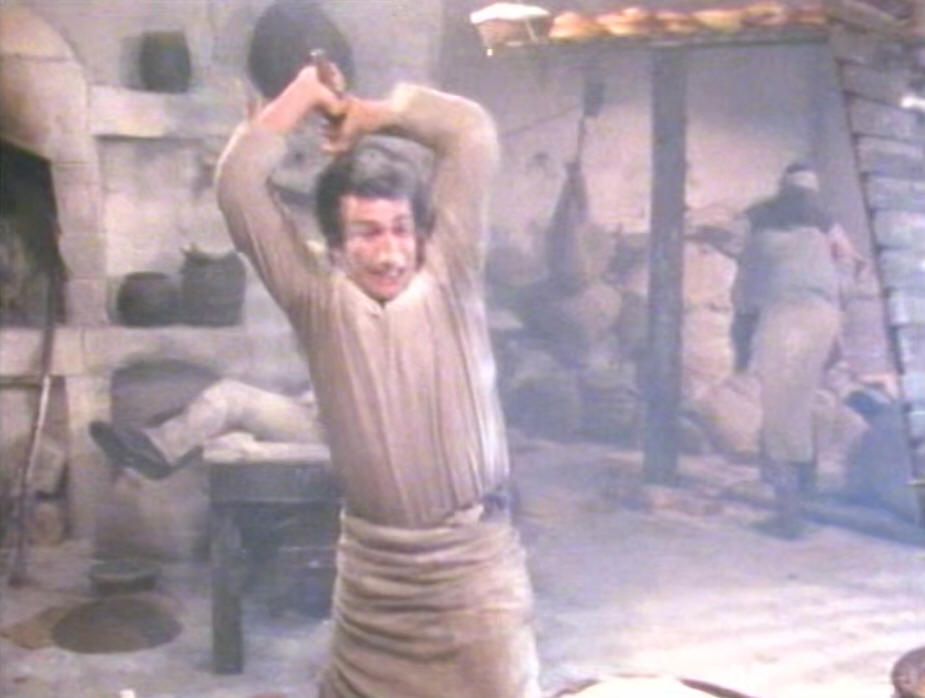
West wall of room 5
1987
In opposite of above (here the east wall). Albert keeps throwing tarts around 2019
The ridge of stone is overgrown with grass
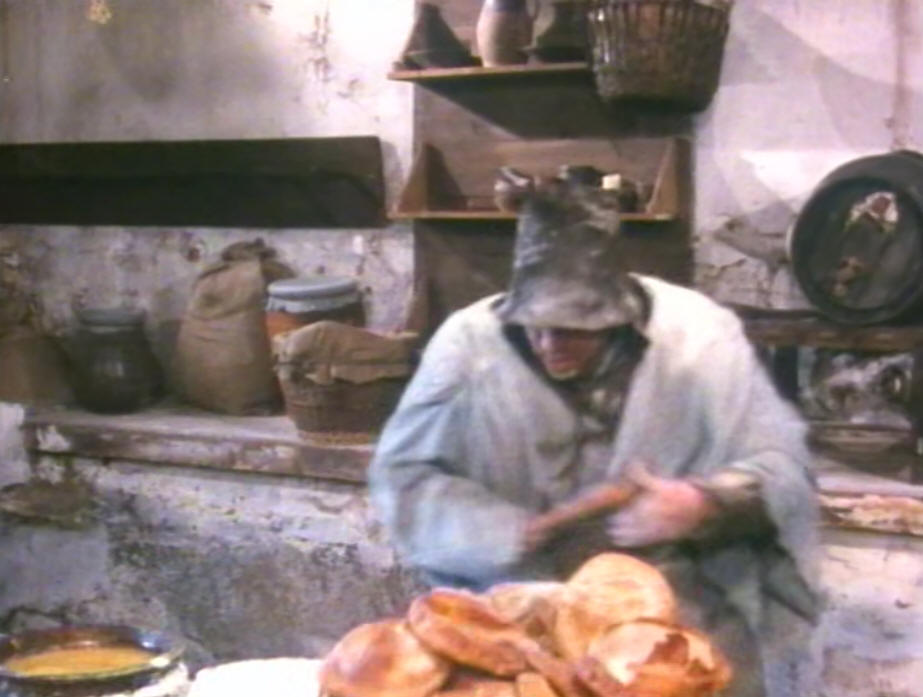
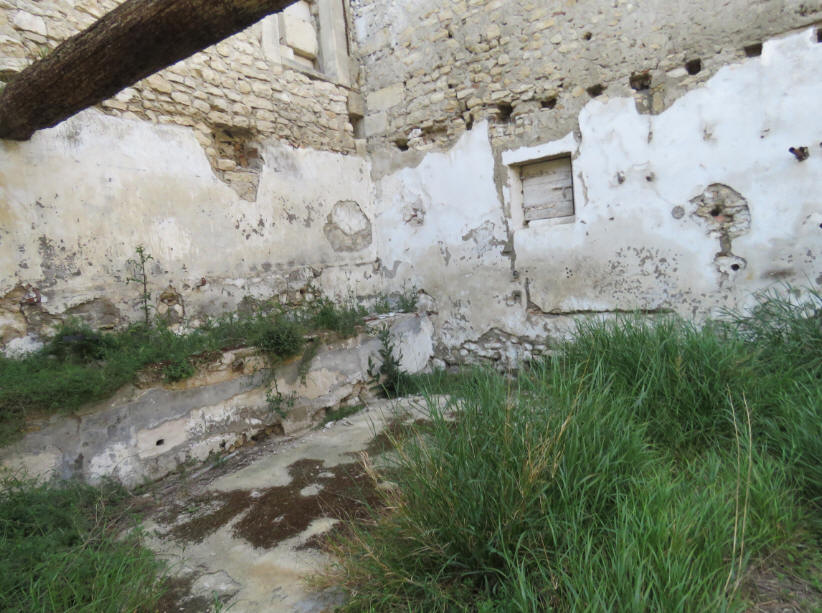
1987 They avoid filming this wide door
(left of the room), one shot with a lattice door in front of it (you
can see behind Albert) 2019
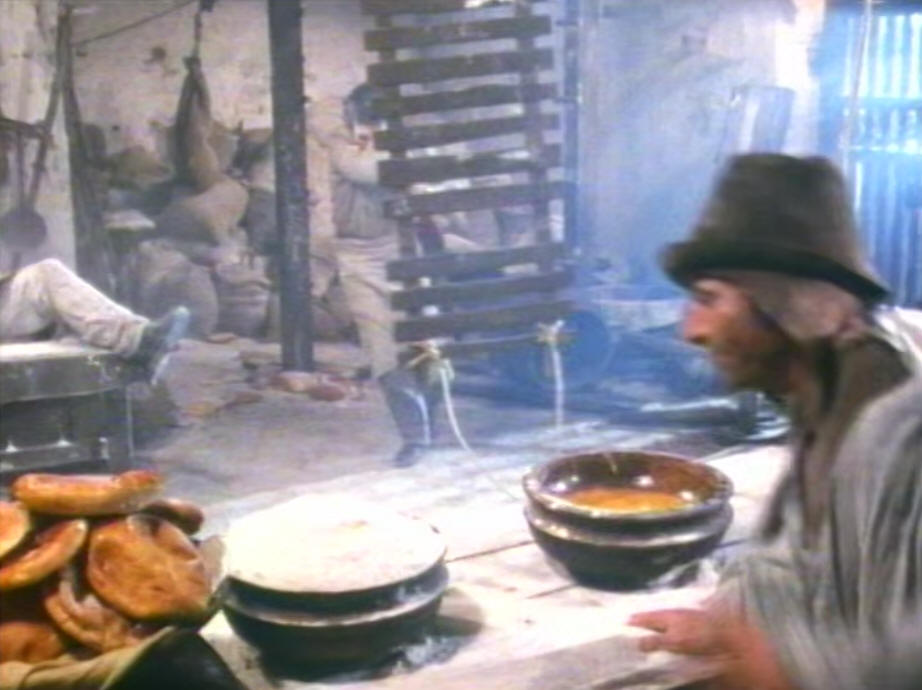
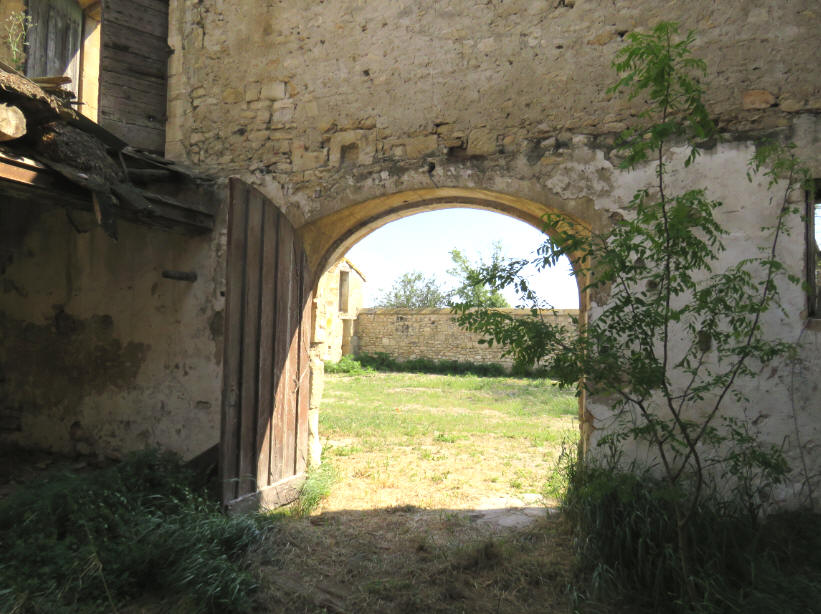
Room 5 around
2014/2015. The roof is fallen down.
On the wall you can see there were more shelves still on the wall.
Nowadays this
room is cleaned but no new roof yet. Above is recently around 2019.
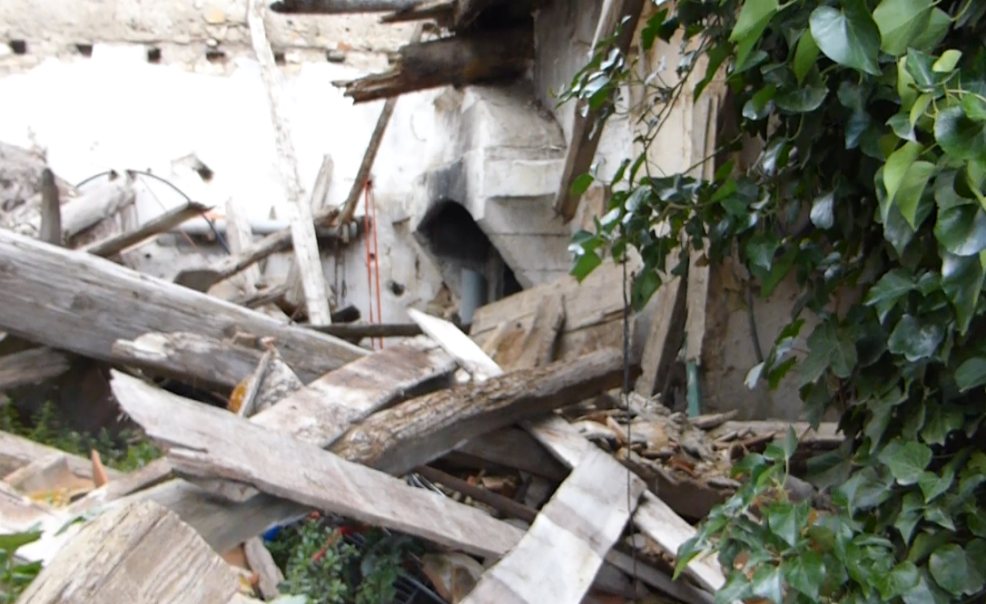
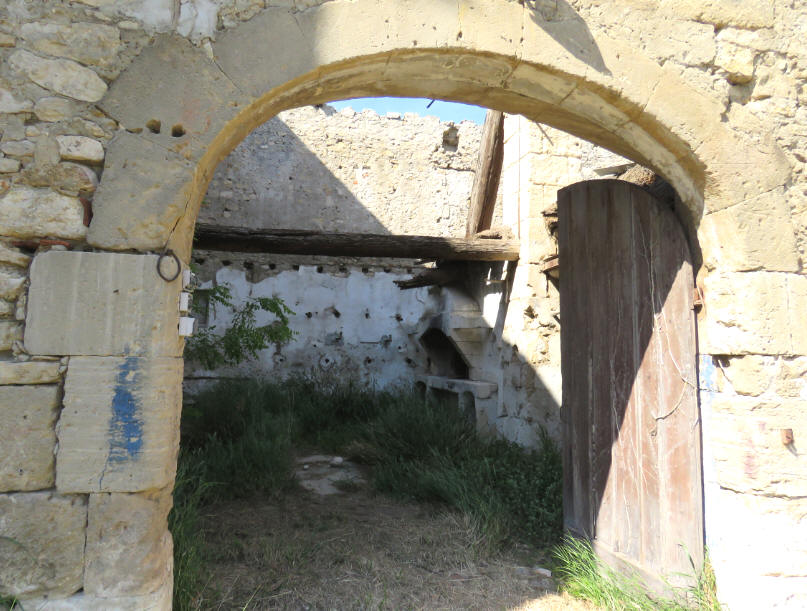
North wall of room 5
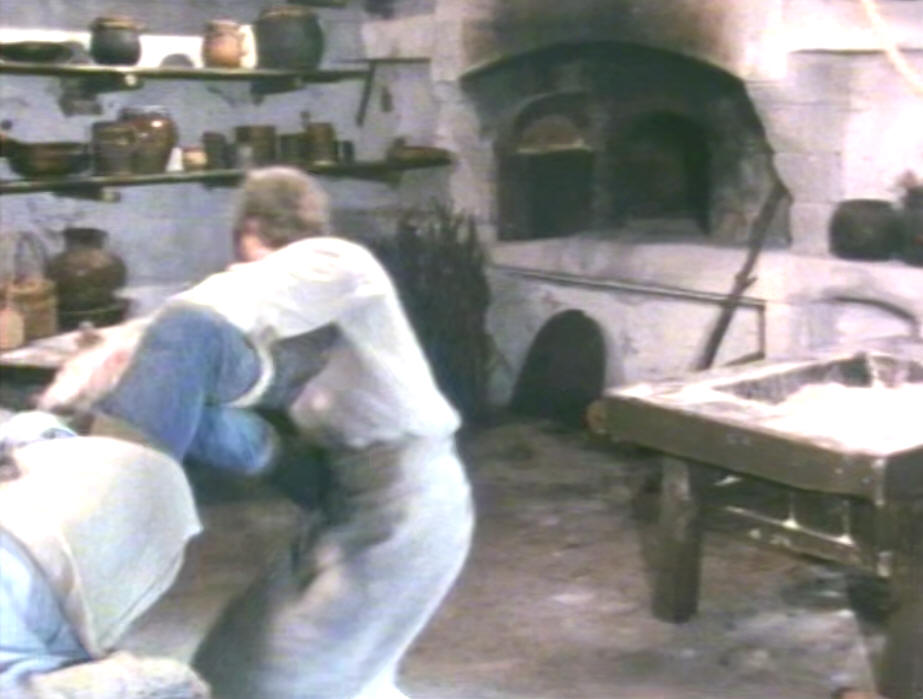
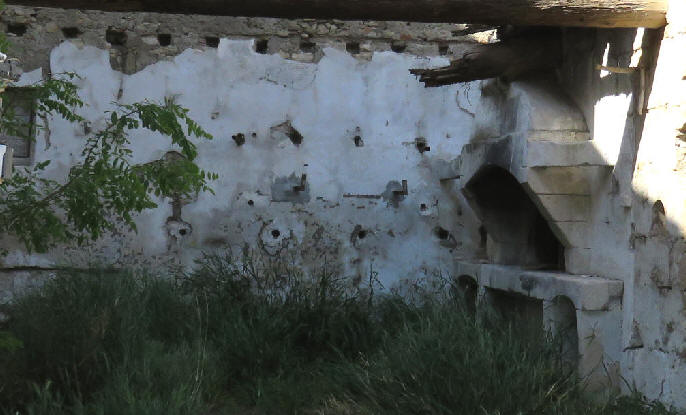
1987 This photo is turned a bit more to the left (left wall is attached to the
mainhouse)
2019
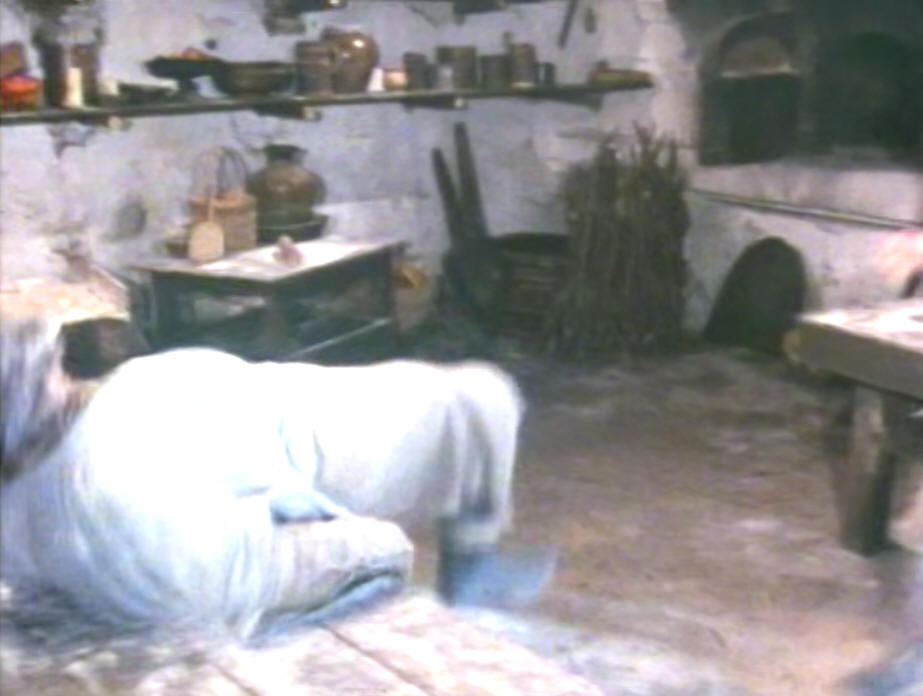
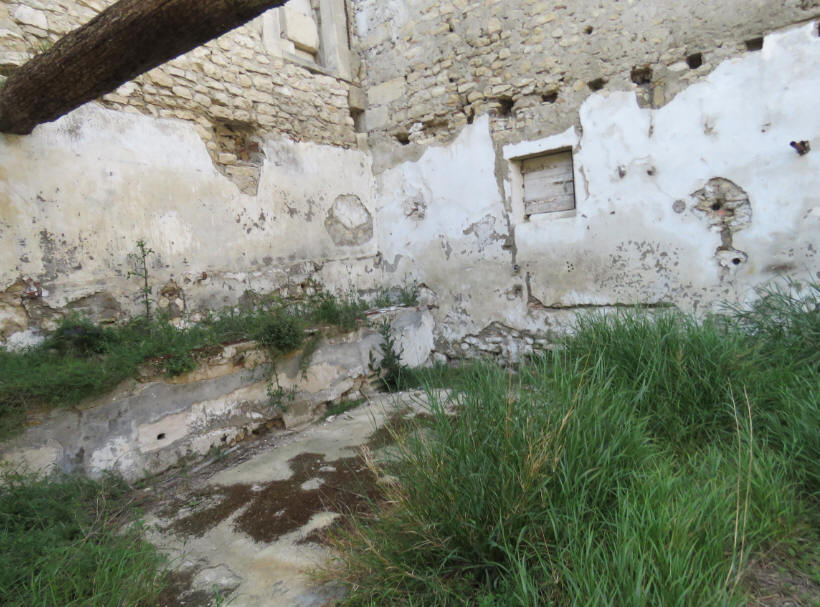
Porch of the mainhouse
Drinking game checkers

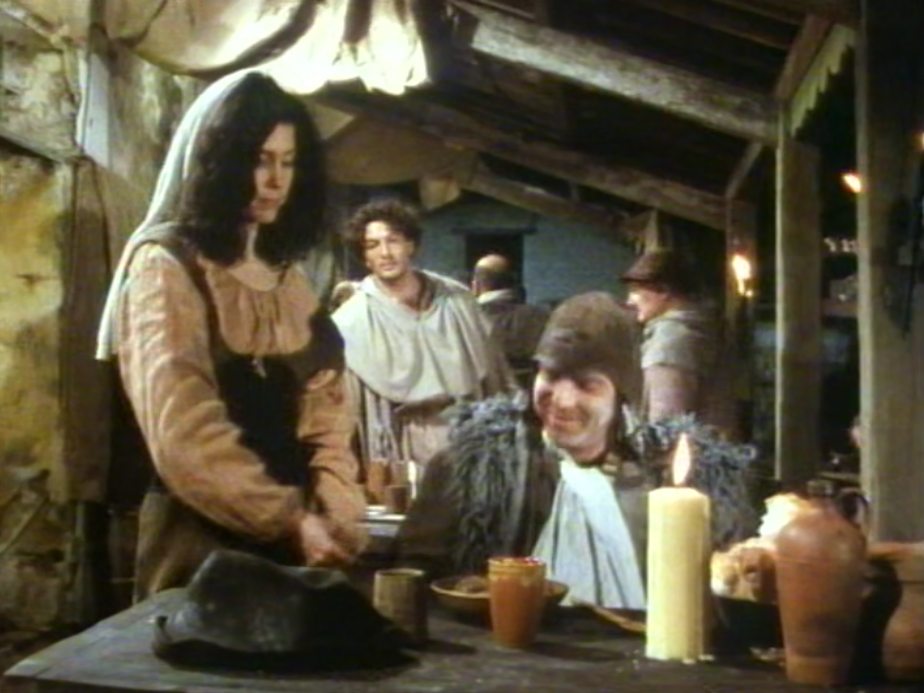
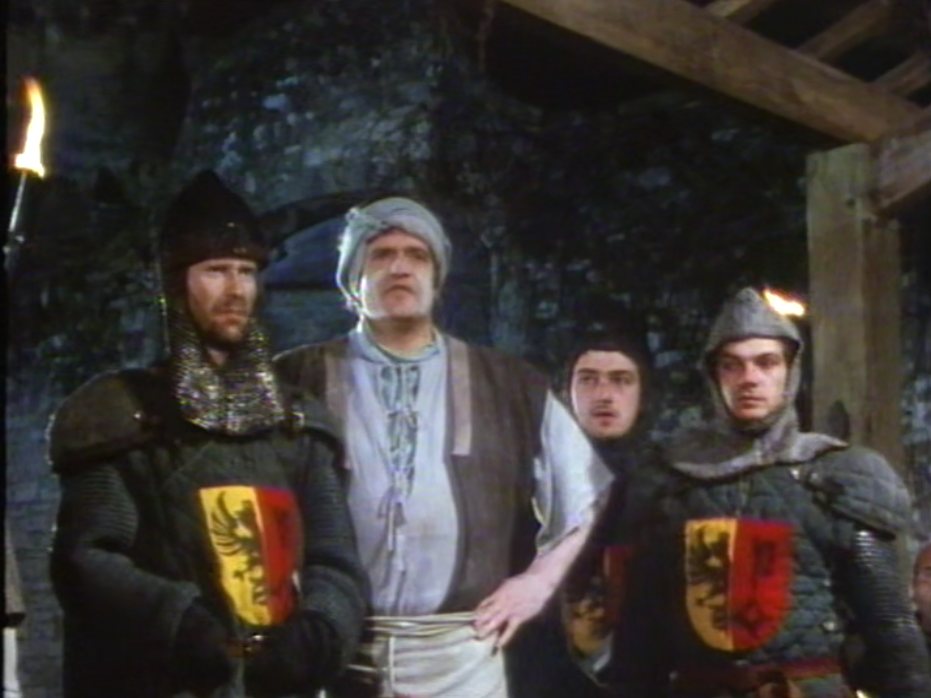
1987 The
porch is missed
2015
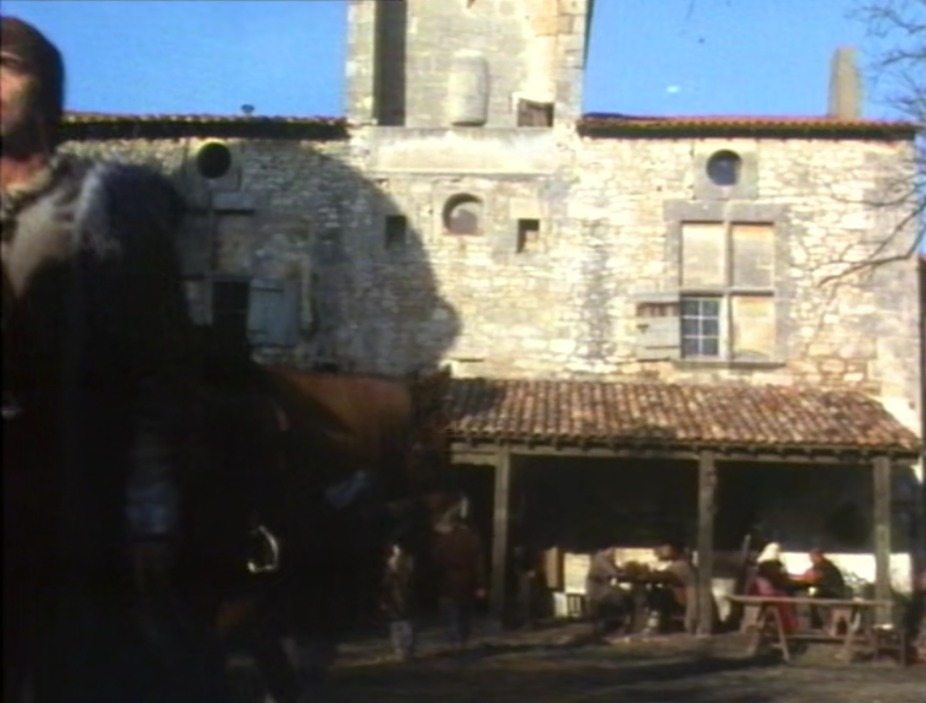
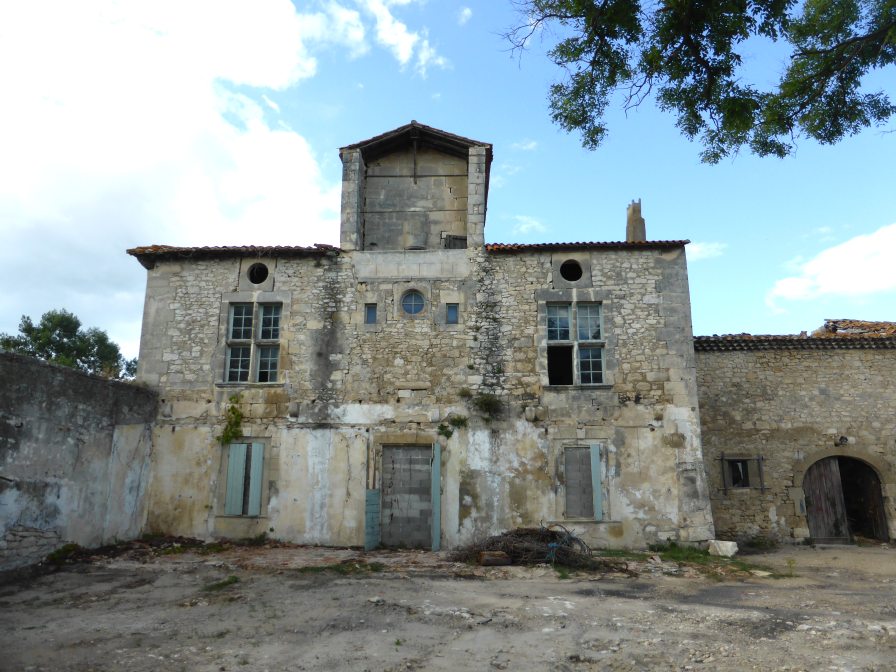

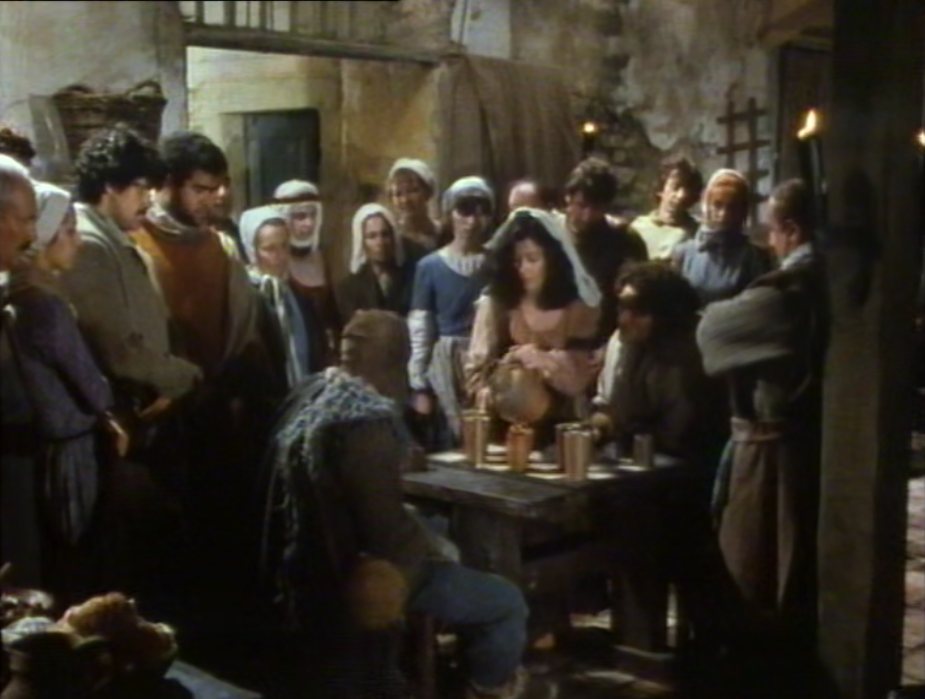
Compare: Scene from
The Electors
Message from Geneve. I think it is special
that people were able to decorate it so nicely.
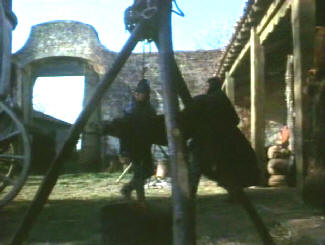
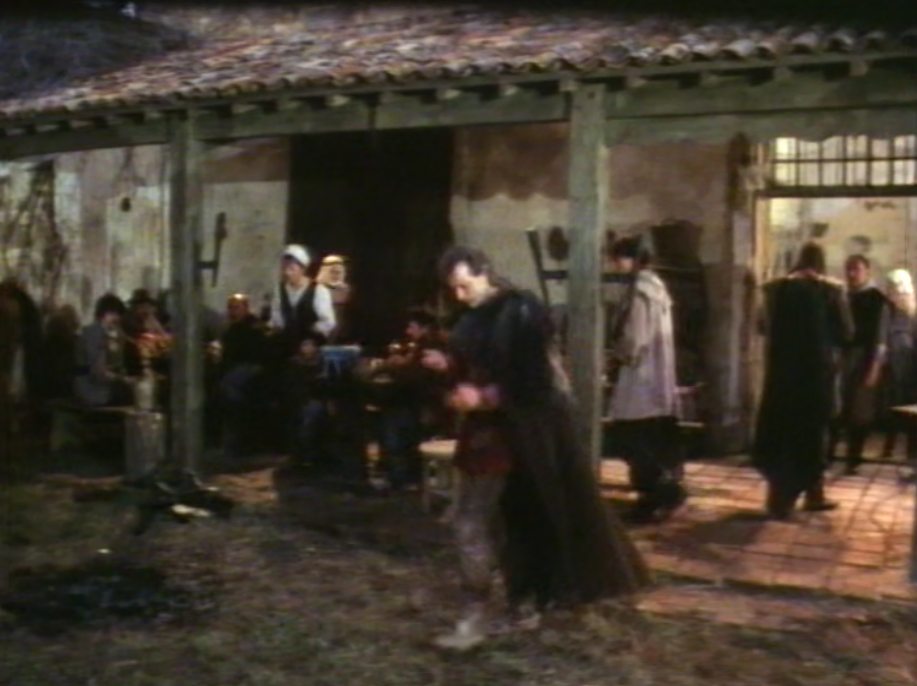
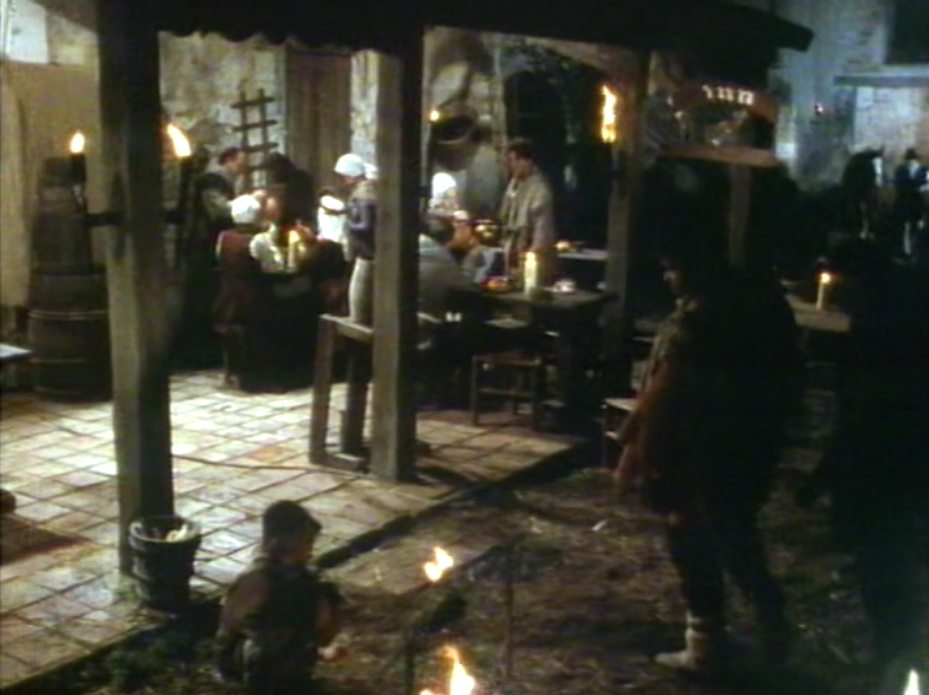
The nice porch of wood
have been completely destroyed.
A sad sight.
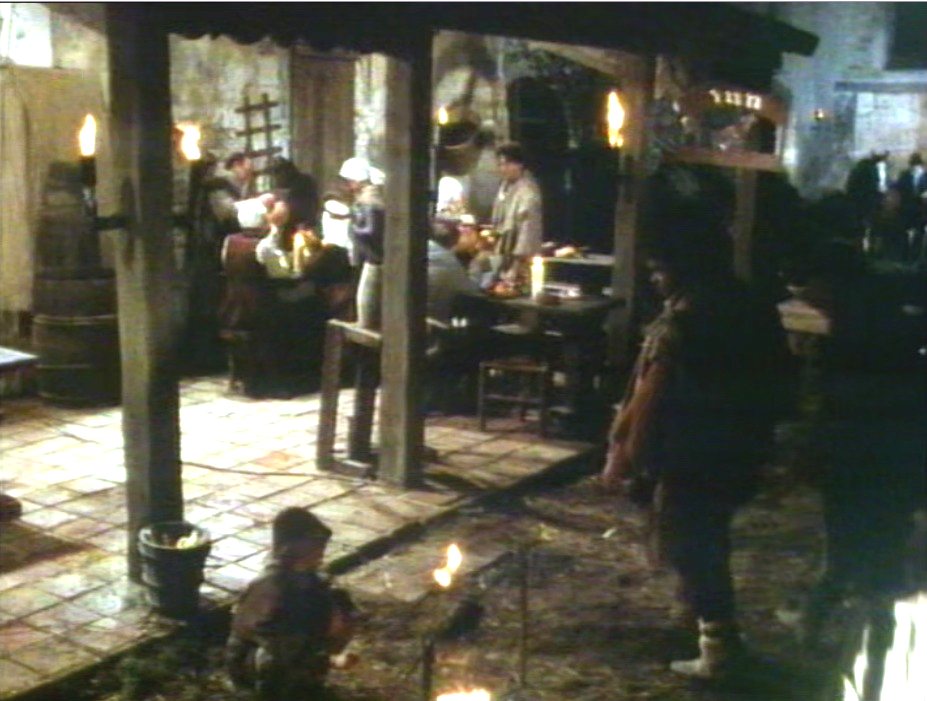
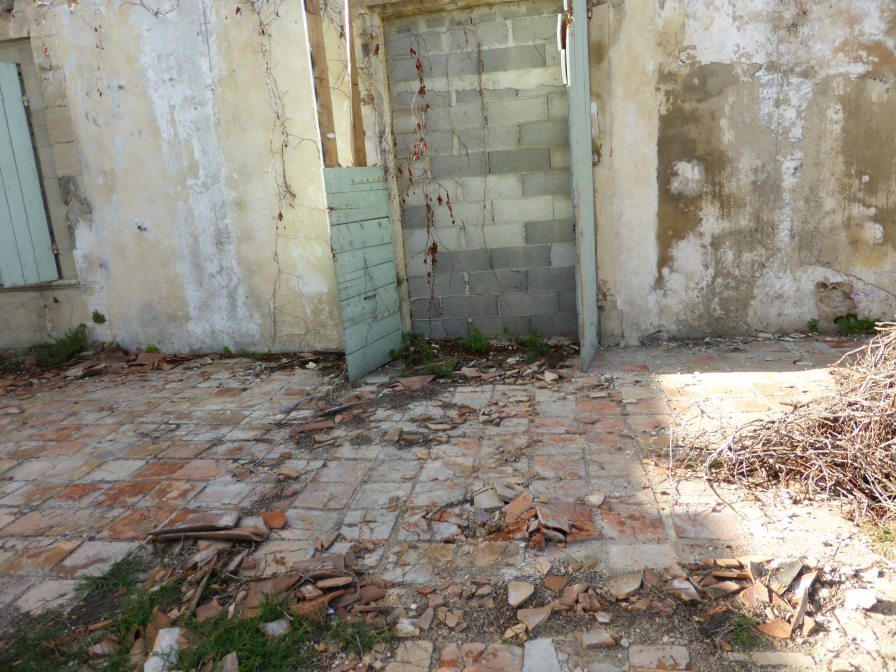
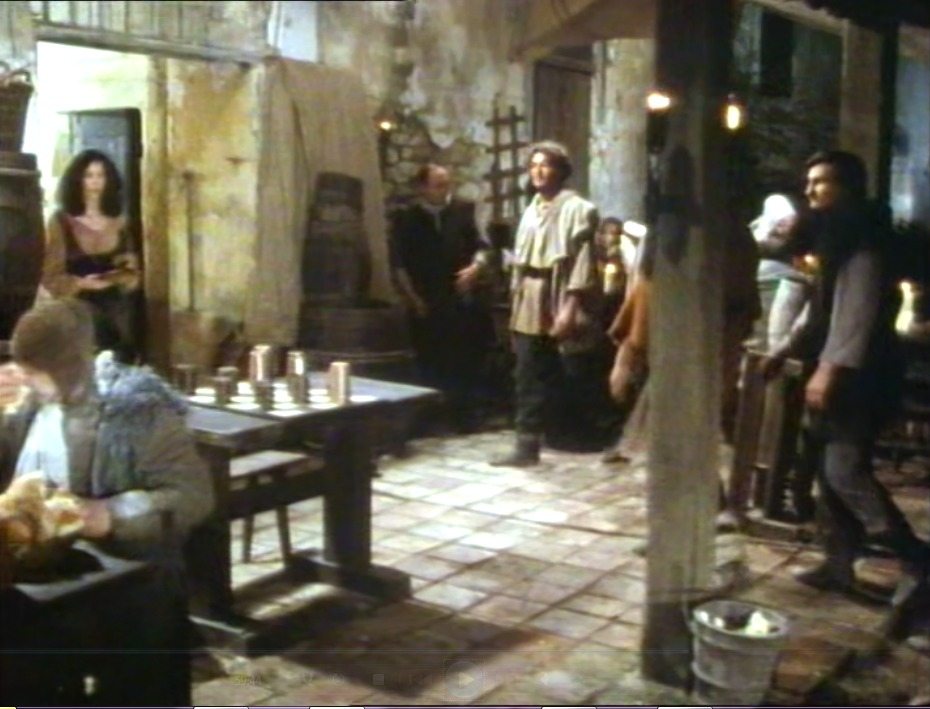
The buildings you see in the distance
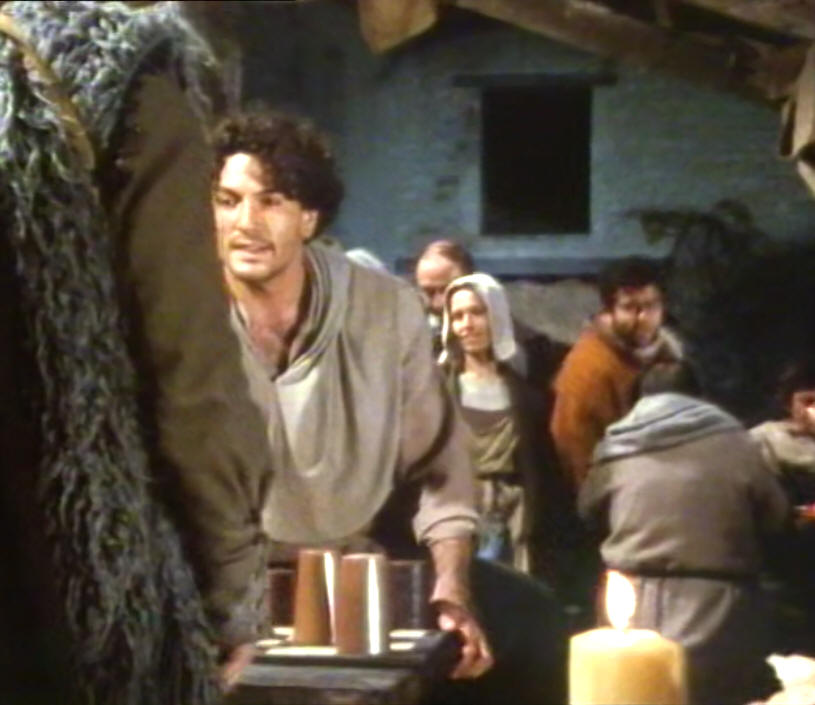
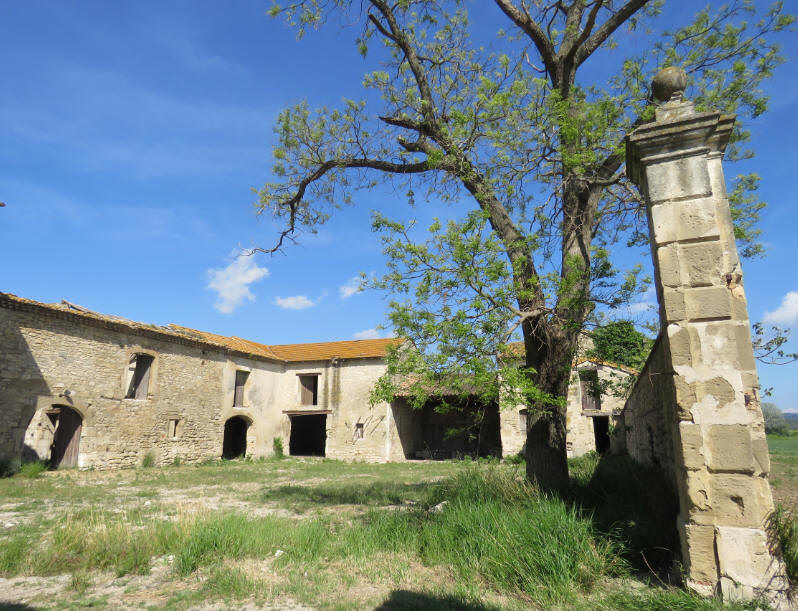
Seen from down under the porch of the main house, you can
see this building in the distance.
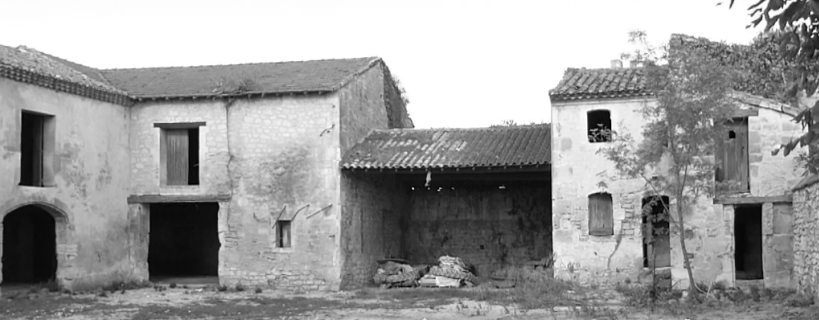
What happened or what just didn't happen?
Despite the
fact that the building was already in decline during the shooting, it was cozy
to sit under the porch, but there is nothing left of it.
Maybe the owner uses
it as storage place and tries to keep out squatters in this. I hope it may
one day become a beautiful "Bed and breakfast"
like so many in the area. Clean
sprayed yellow stones and some beautiful flowers. This can be really
beautiful, but should not be left to its
fate any longer because it will soon
collapse in its entirety. That has already happened with a portion.




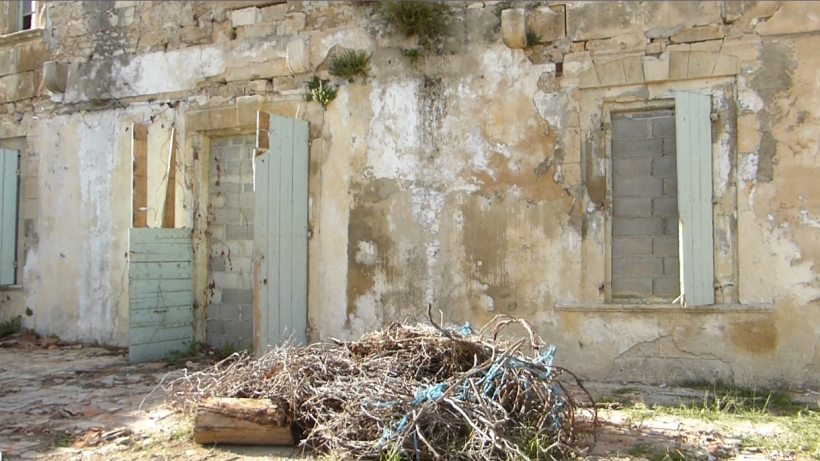
The scenes are all shot on ground level, You can see
that on the ceilings. This is wood contruction and on ground level the ceiling
are arcades of stone.
This room
on the first floor
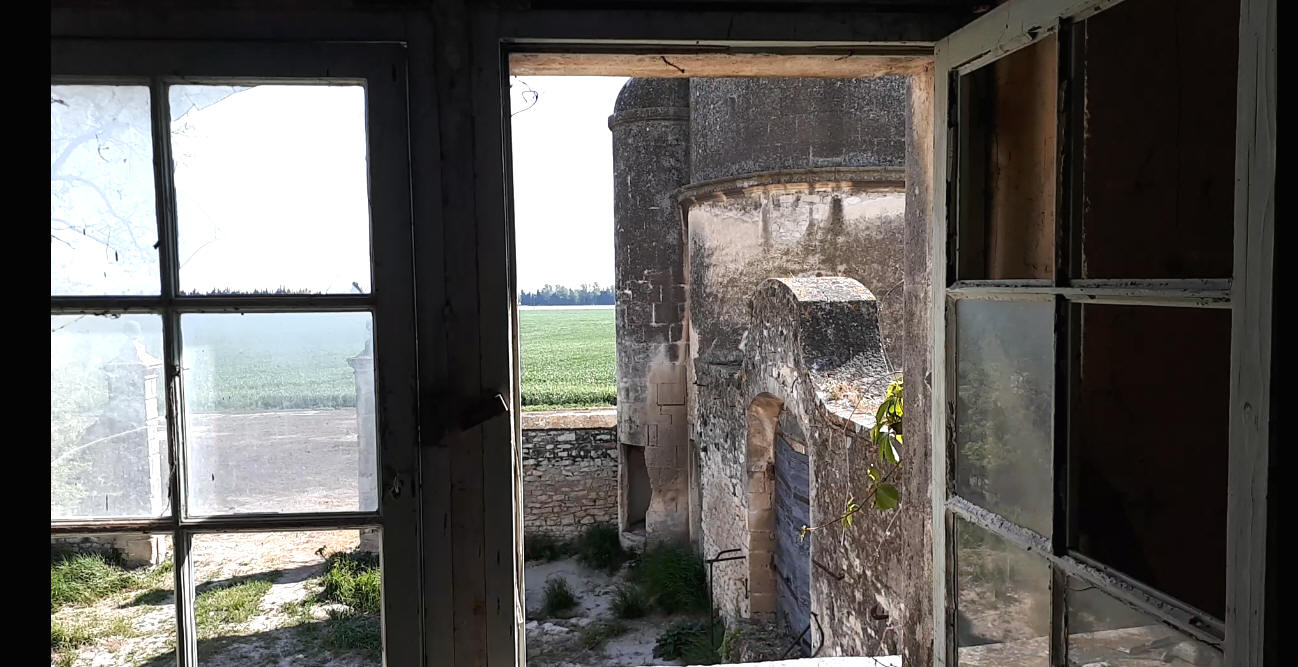
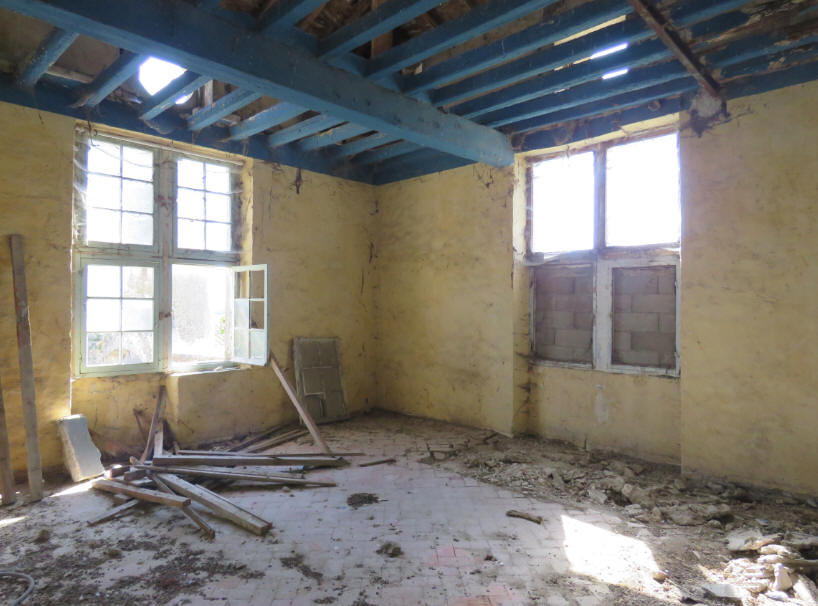
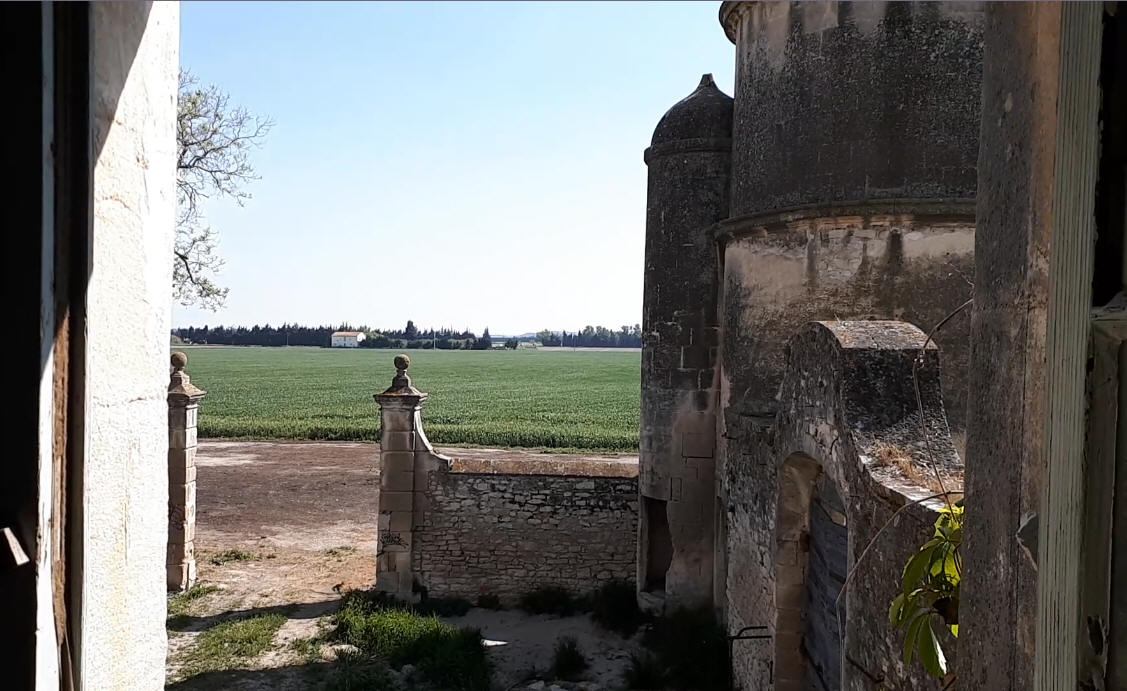

Farmhouse Episode 43 'Message from Geneva'
The room
with the red door.
Scene: Tell at the wrong address.
Location: Street in Les Baux, The old town,
but interior
of the farmhouse
1987 2014
2014
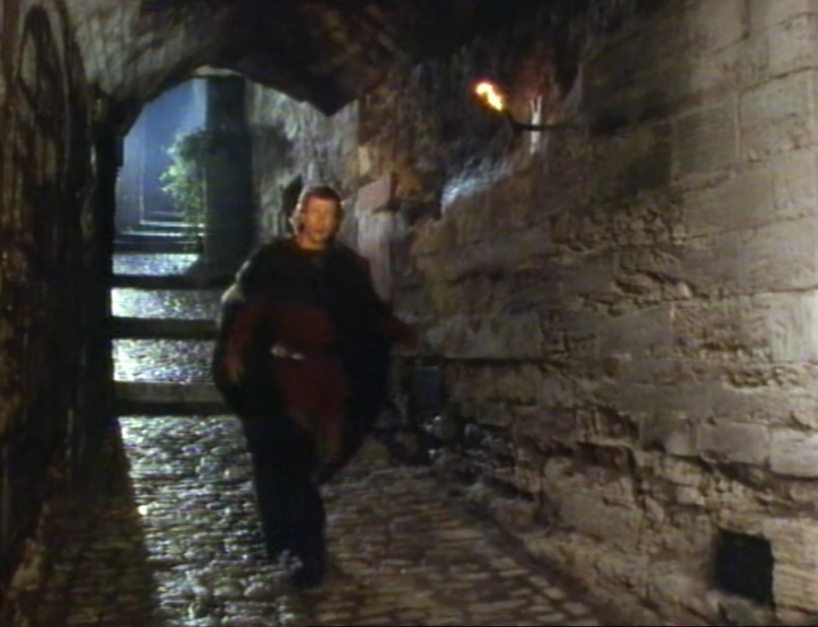
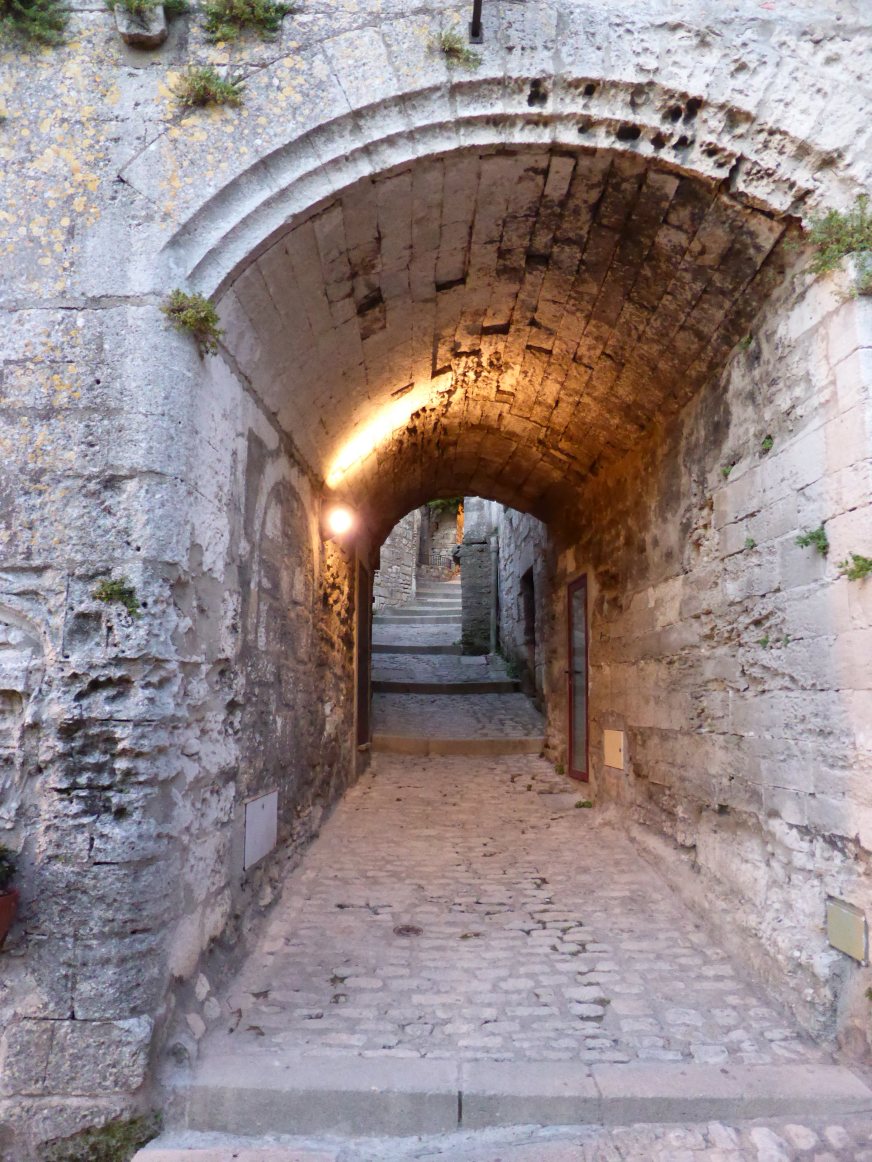
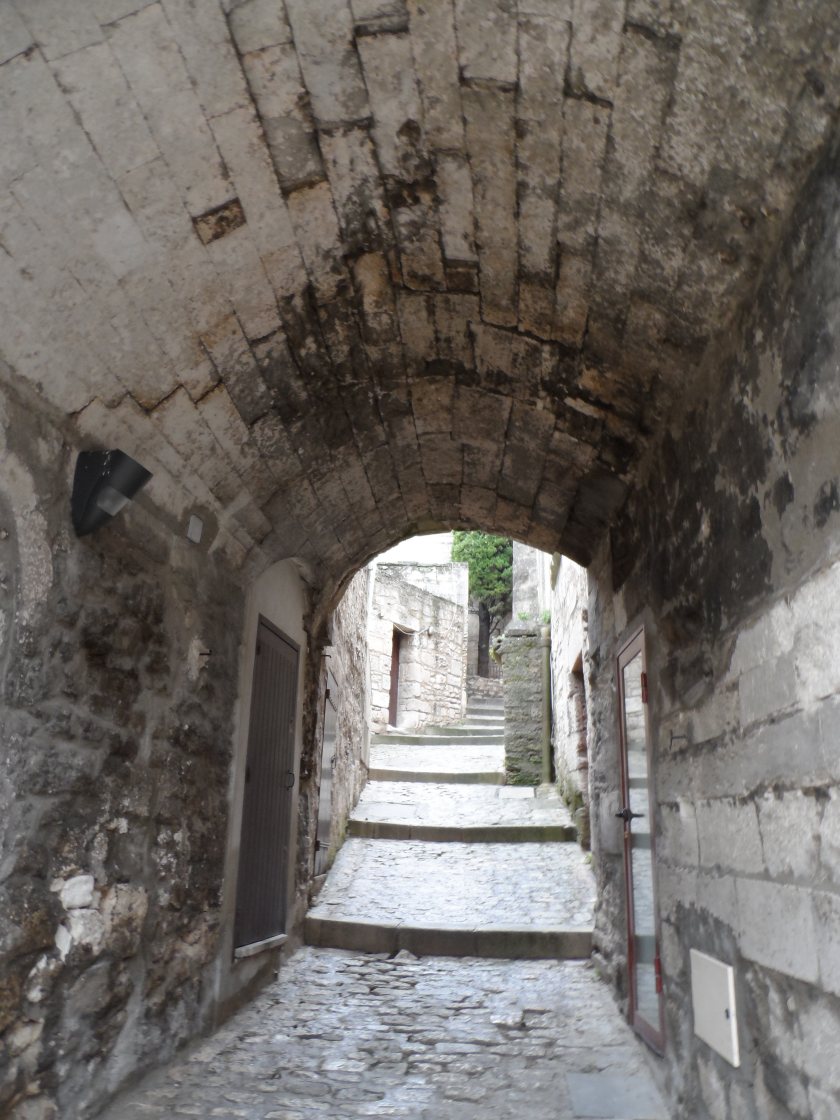
1987
2014
2014
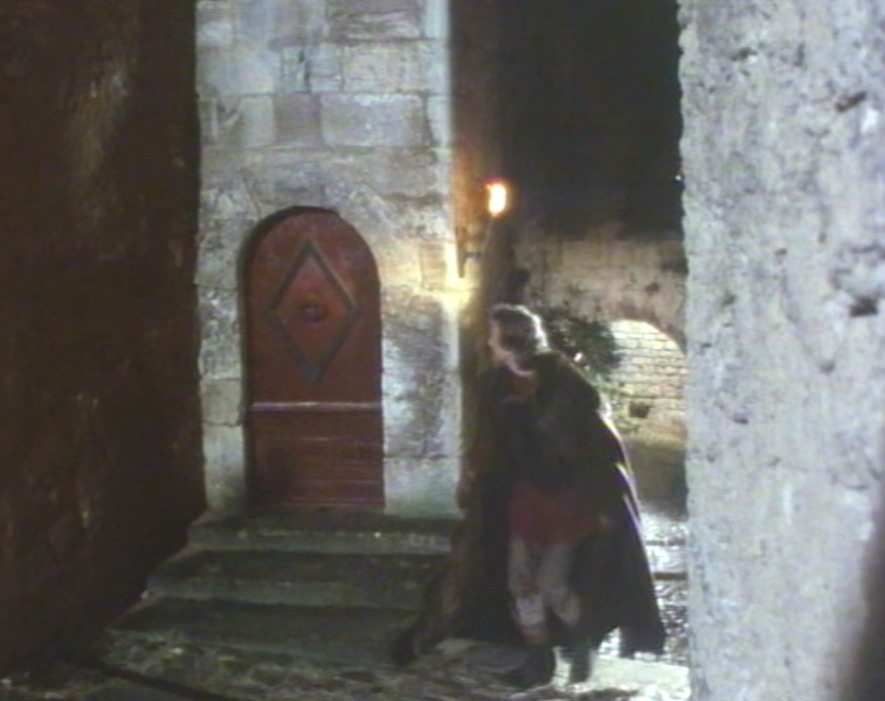

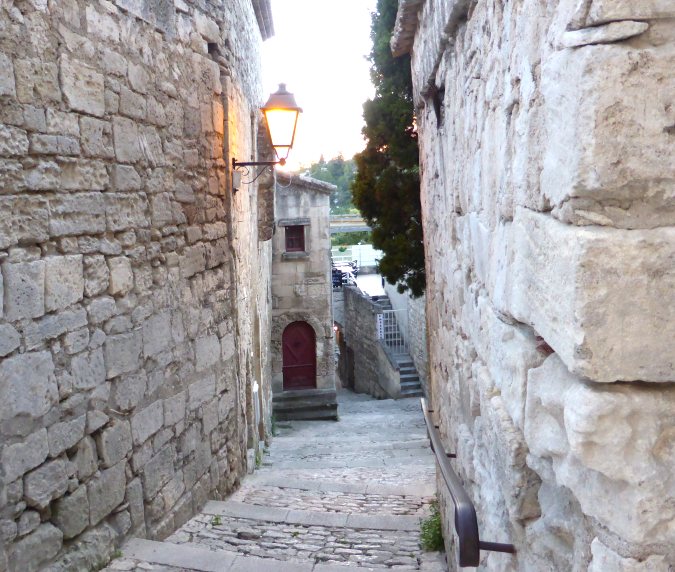
The red characteristic door in Les Baux. In Crossbow they
entered another door, perhaps the old farmhouse. I recognize parts of the farmhouse near
Arles,
take a look more below. Anyway the bended doorpost doesn't correspondend
with the red door in Les Baux. So this man below opened another door.
The meeting with Marcel Renault
This
actor I spotted recently in Outlander
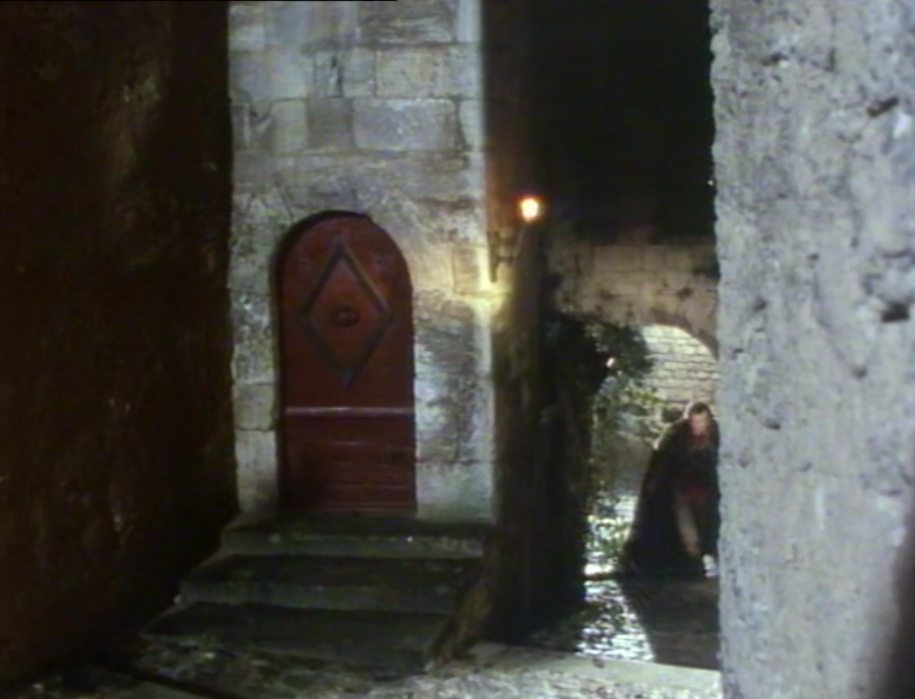
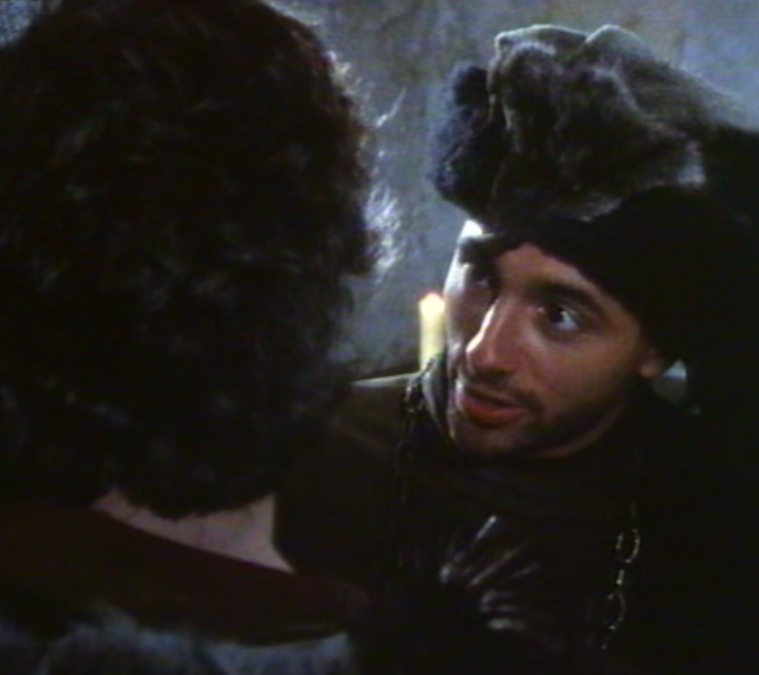
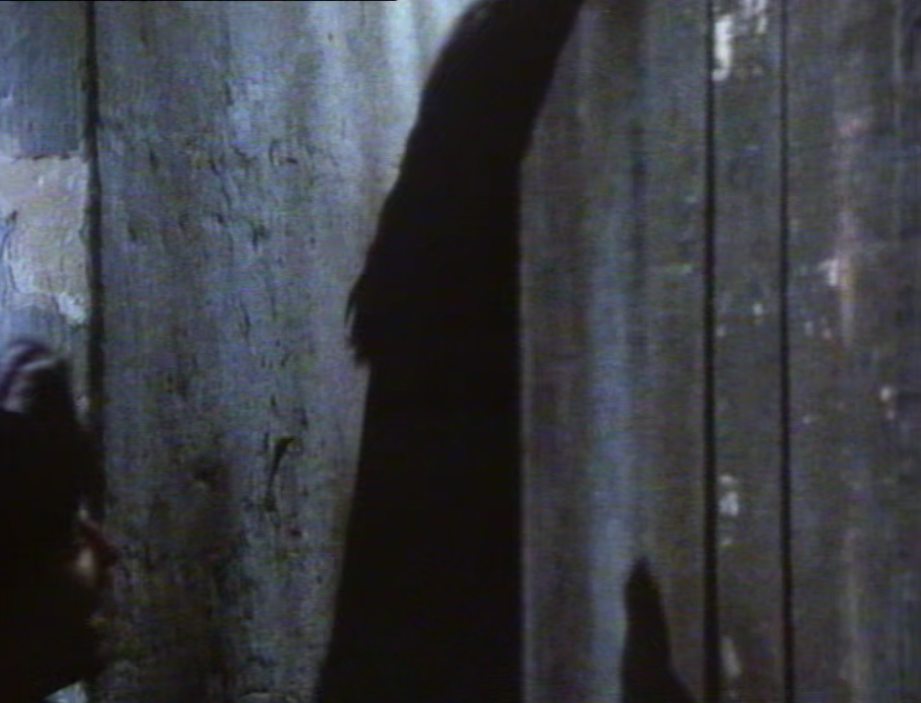
Switching to another door
Another door, not the red one and perhaps even another location, like the farmhouse. They were filming there already for another scene of this
episode
(Message from
Geneve).
Scene: Tell moved the table towards
the soldiers and they fell out of the window. We think we do recognize the roof and parts of the window.
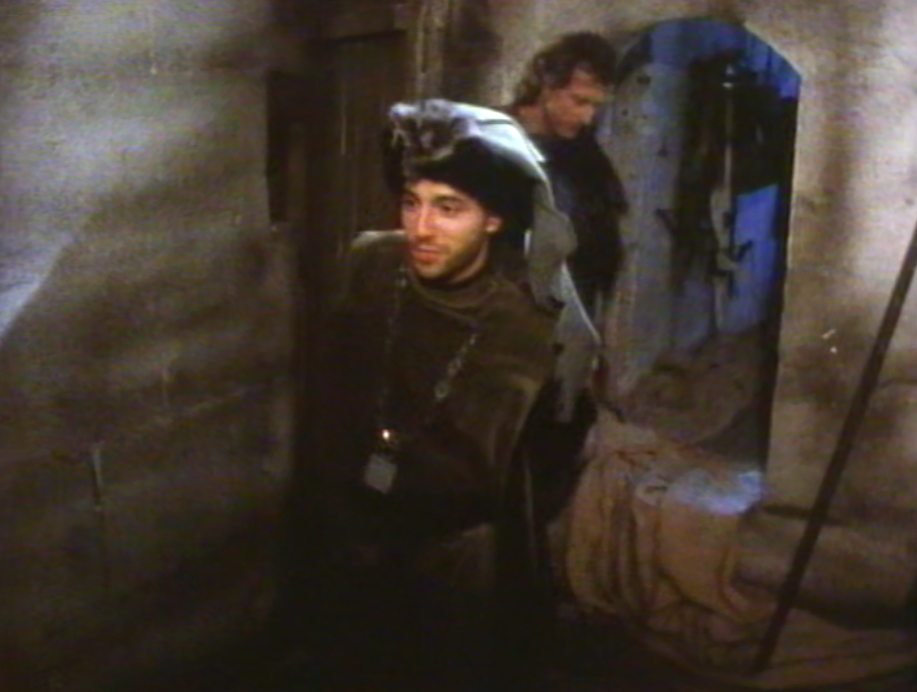
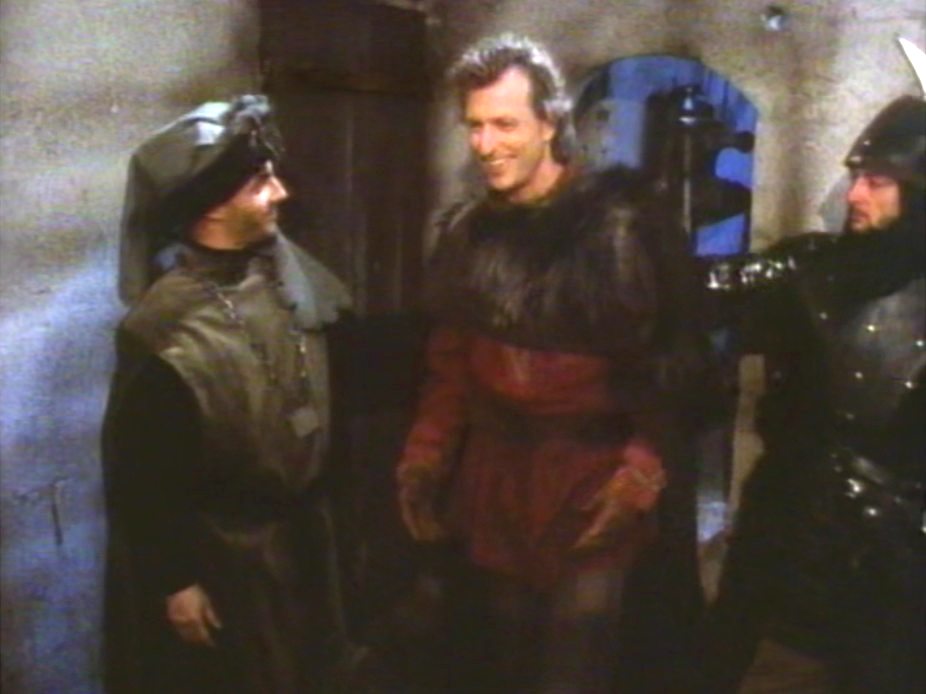
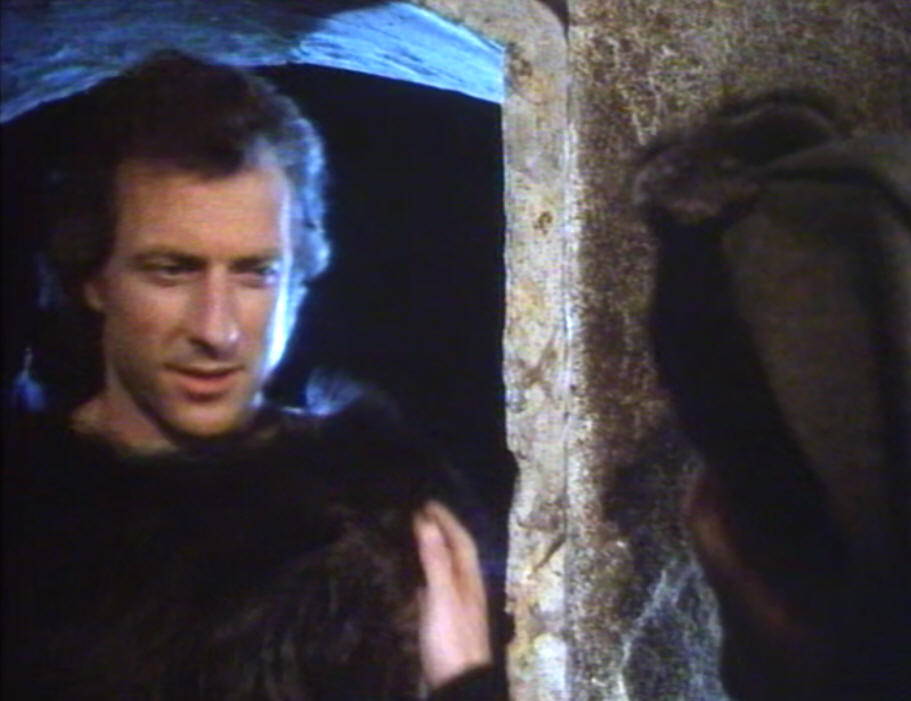
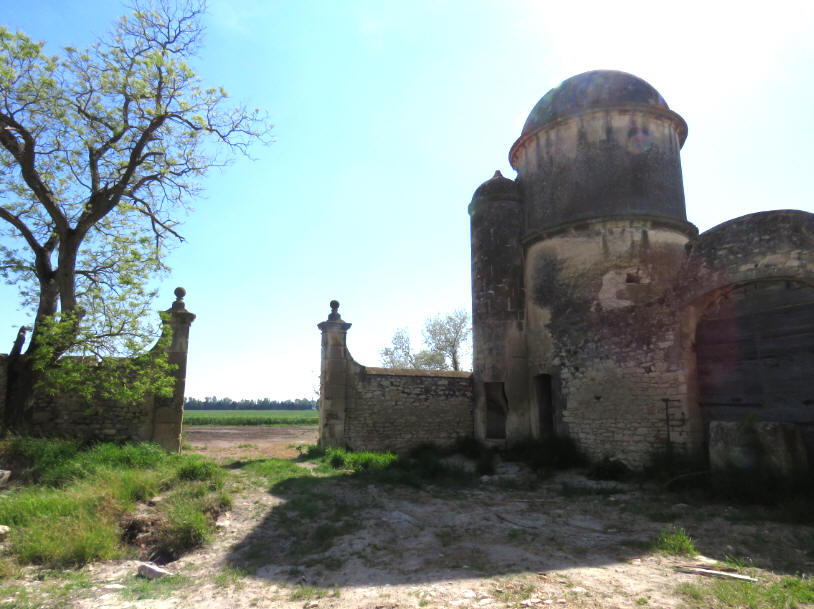
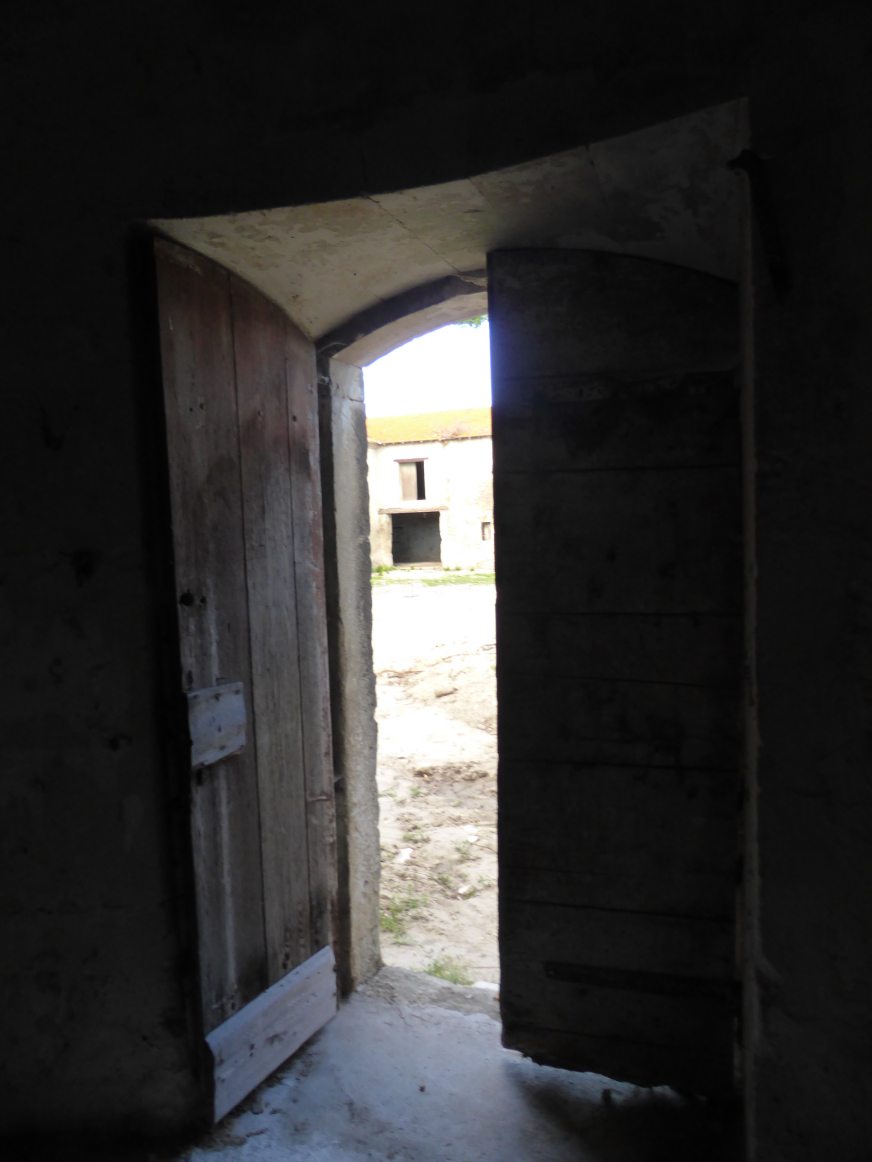
Is it the entrance of the tower/silo
of the farmhouse? It seems
like it but the interior doesn't correspond.
I have no idea about this place. I have't seen this interior
before. Is it
ultimately still les Baux, exept the falling through the window? I don't
recognize it.
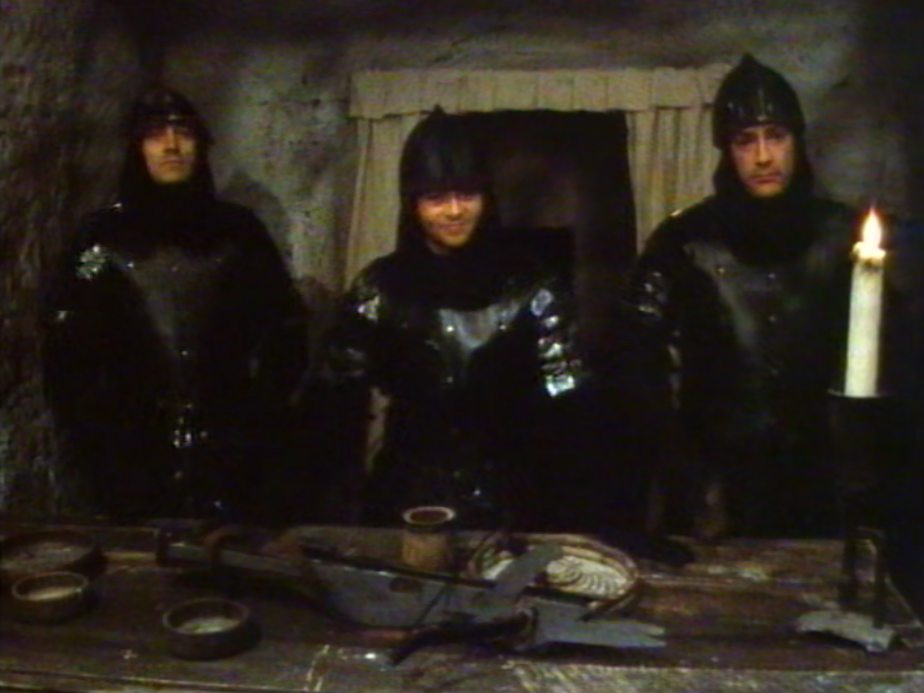
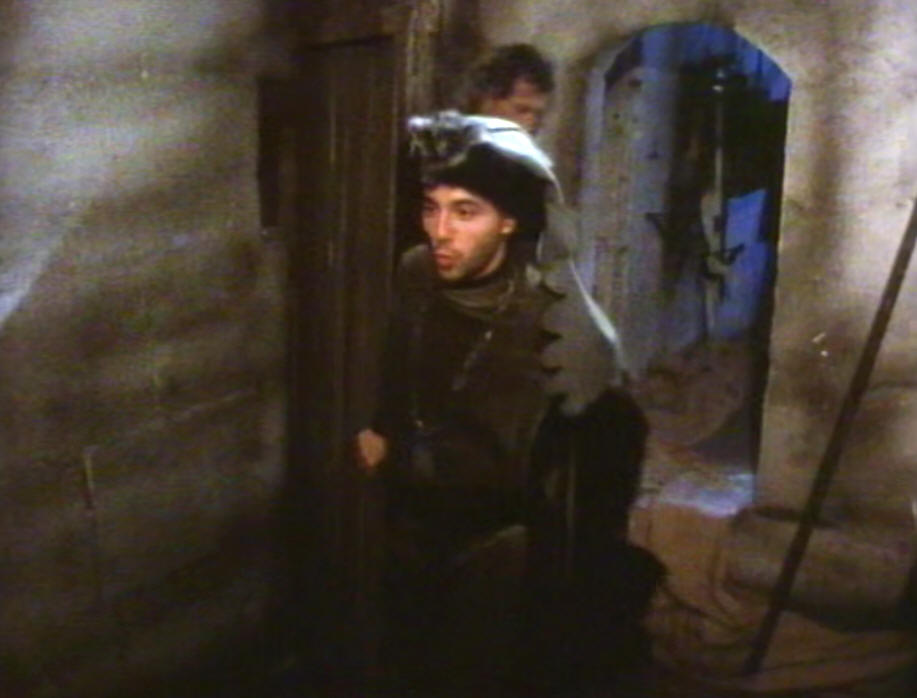
I presume next scene: In this
soldier's room is shot upstairs, above this one.
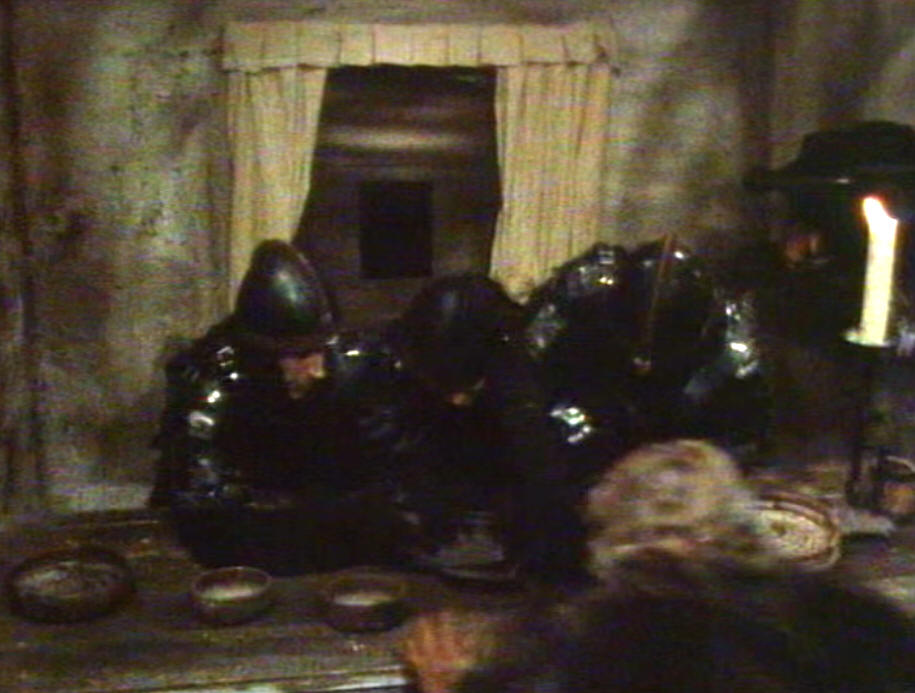
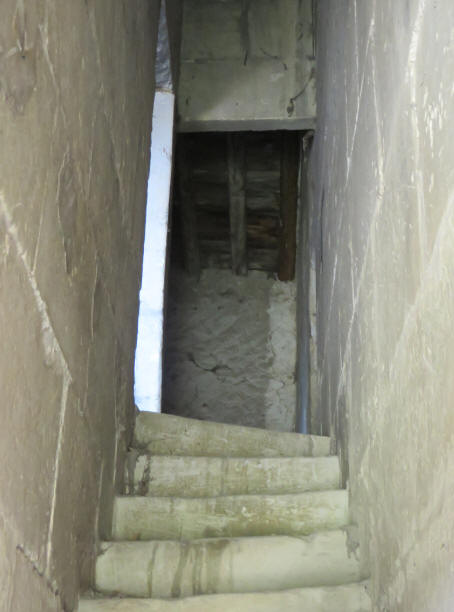
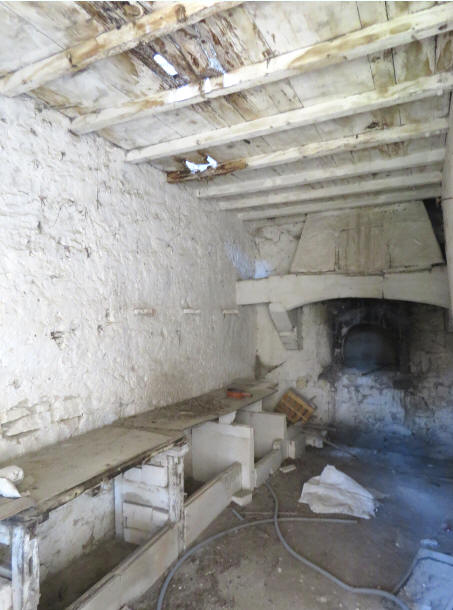
The fall through
the window is for sure filmed in the farmhouse. This little building has
the stairs and the small room upstairs.
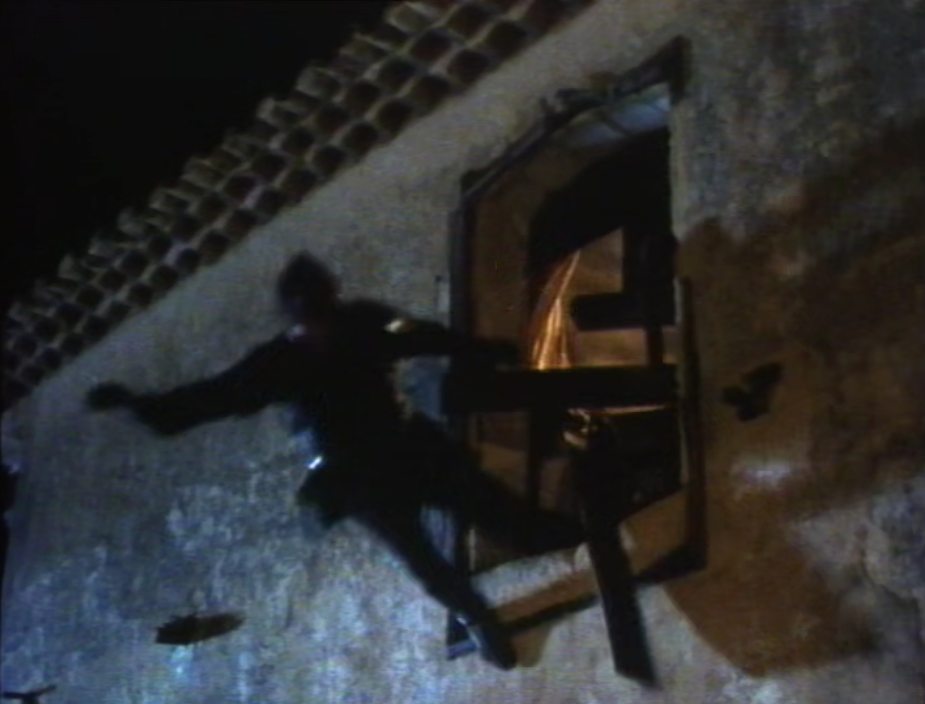
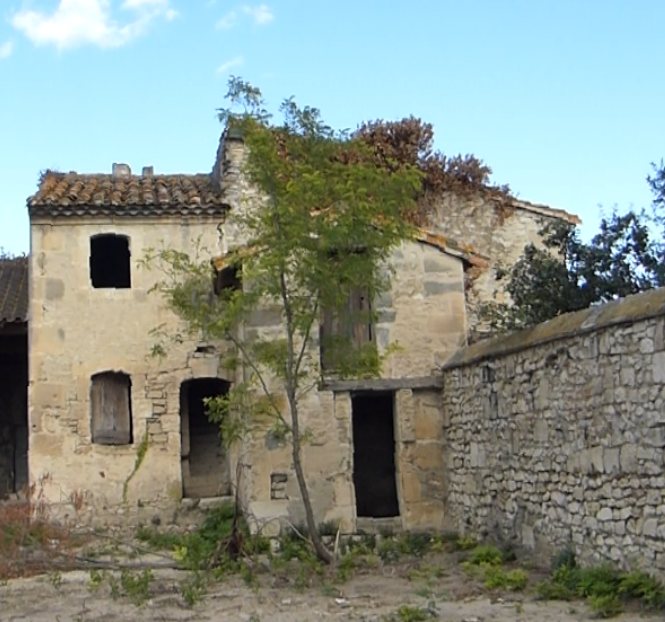
It can almost be every window in this ruined farmhouse. Perhaps this is the window the soldiers fell
through (window above room 5)
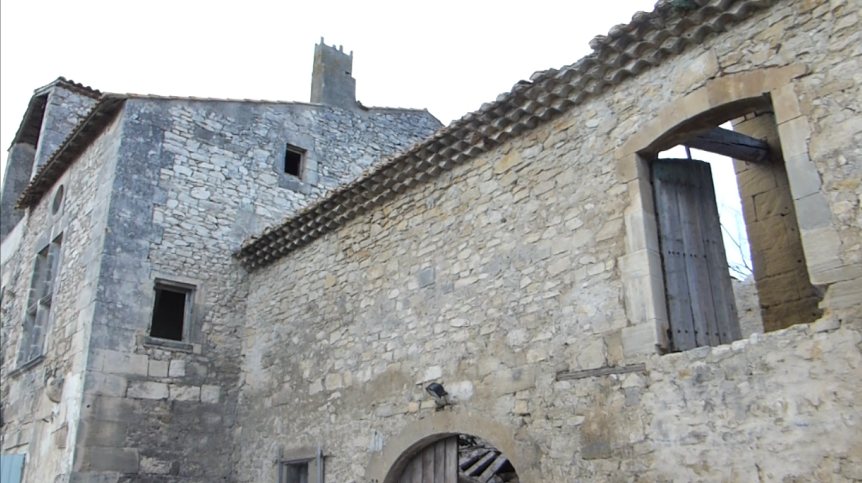
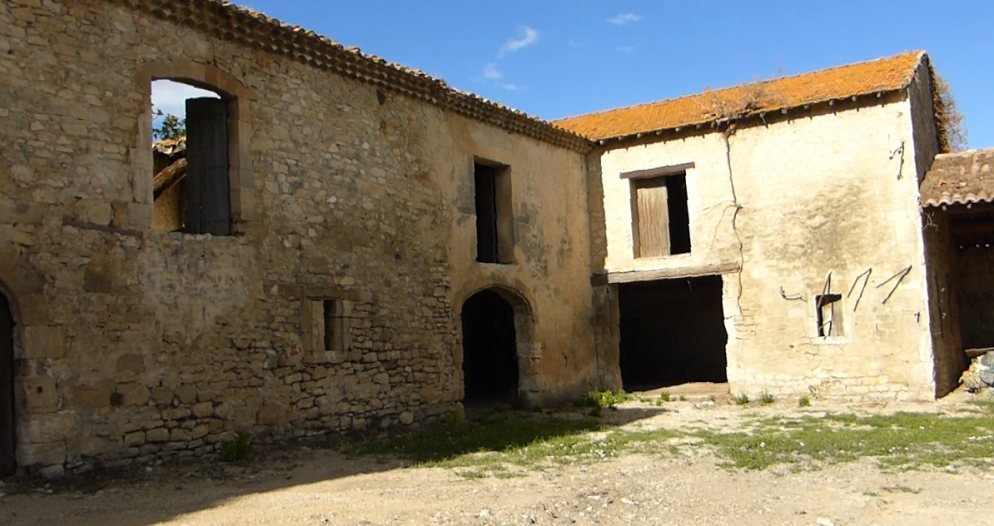
The west gate
Around the building
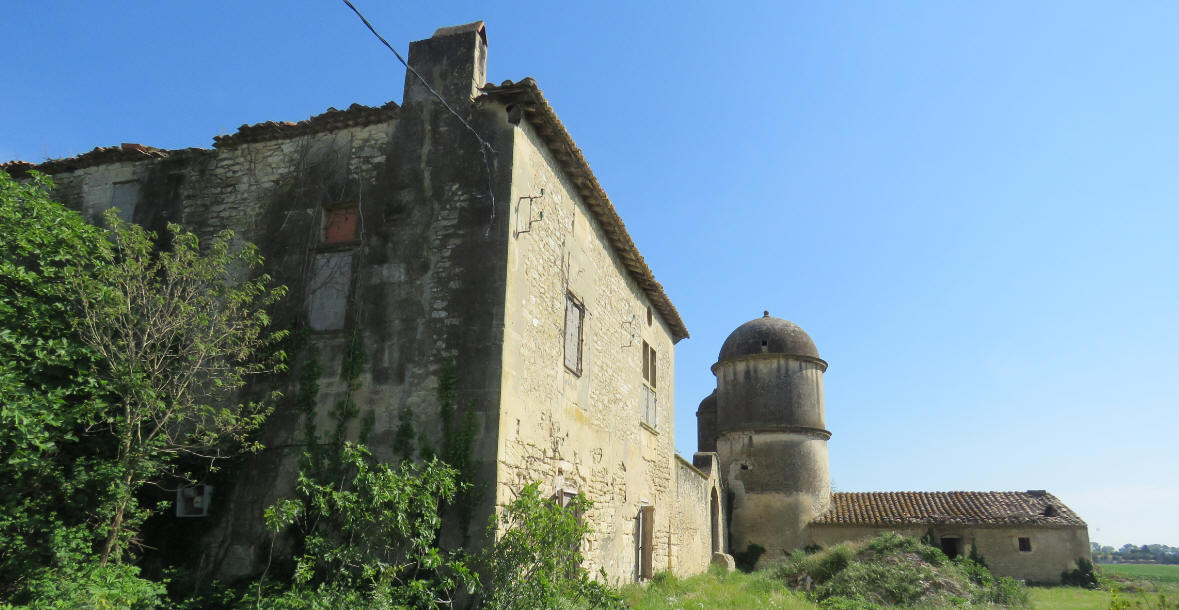
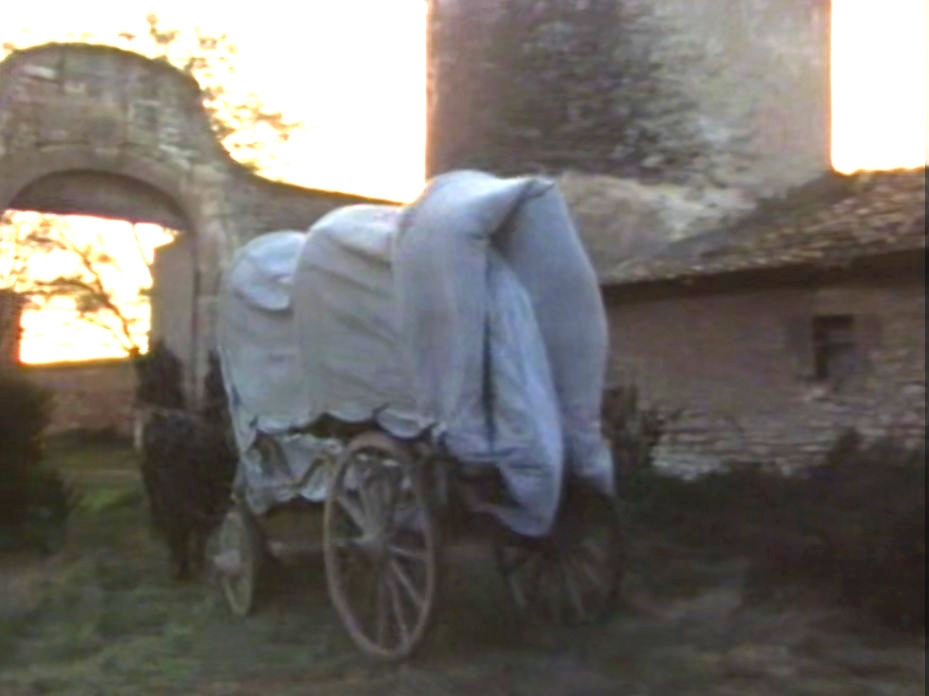
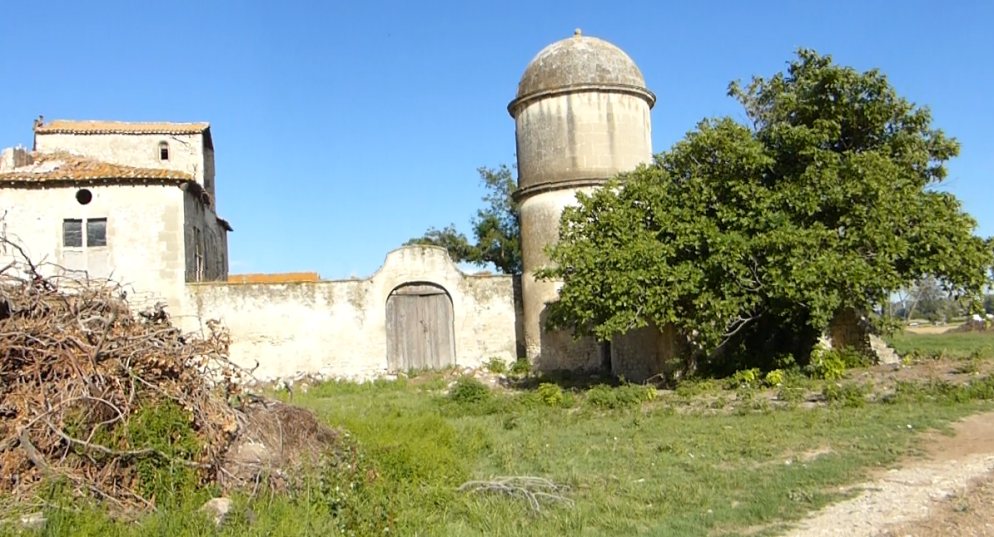

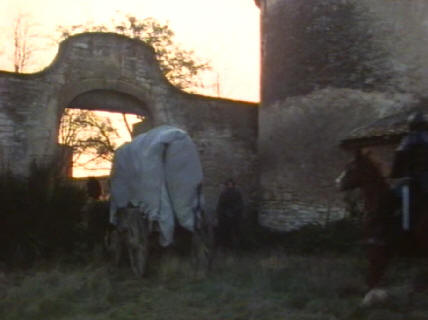
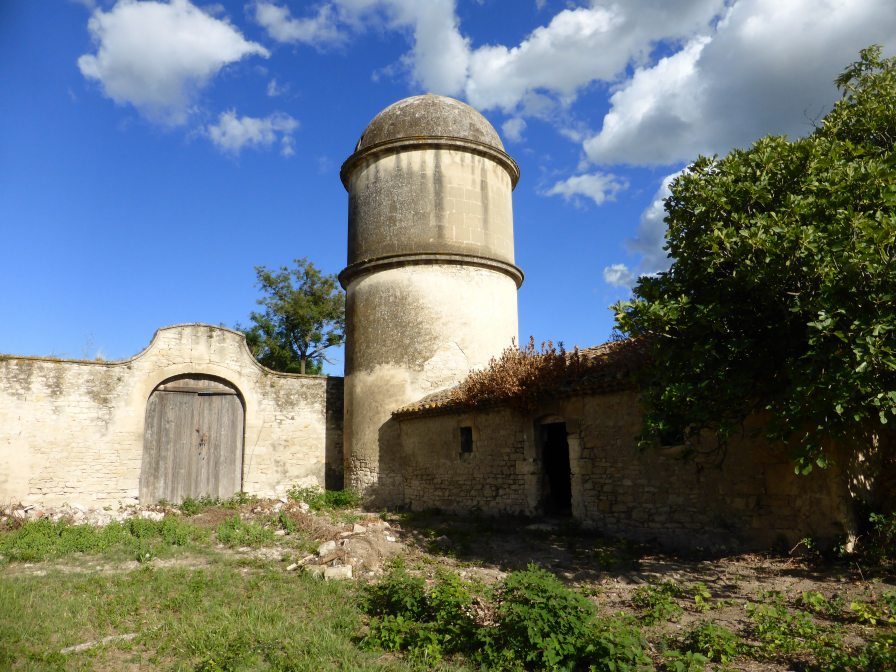
Below the whole building
in one row.

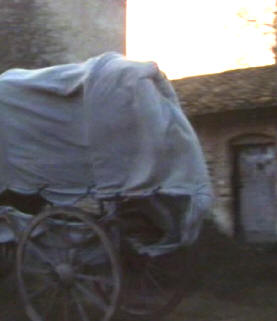
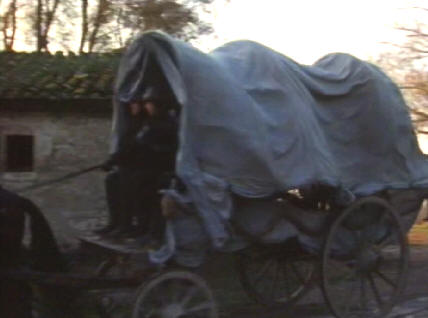
Horse and carriage went around this building.
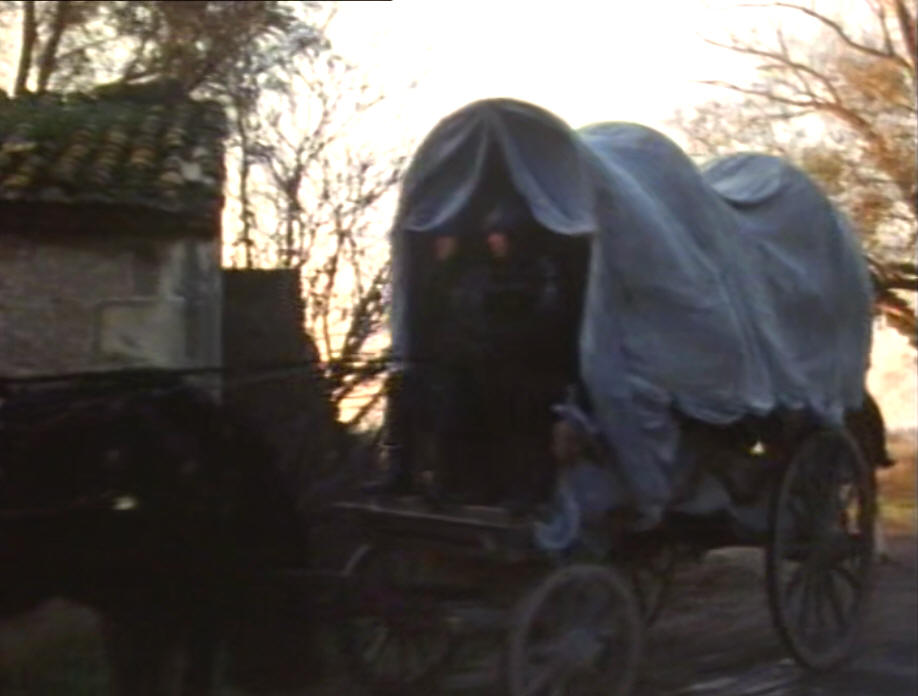
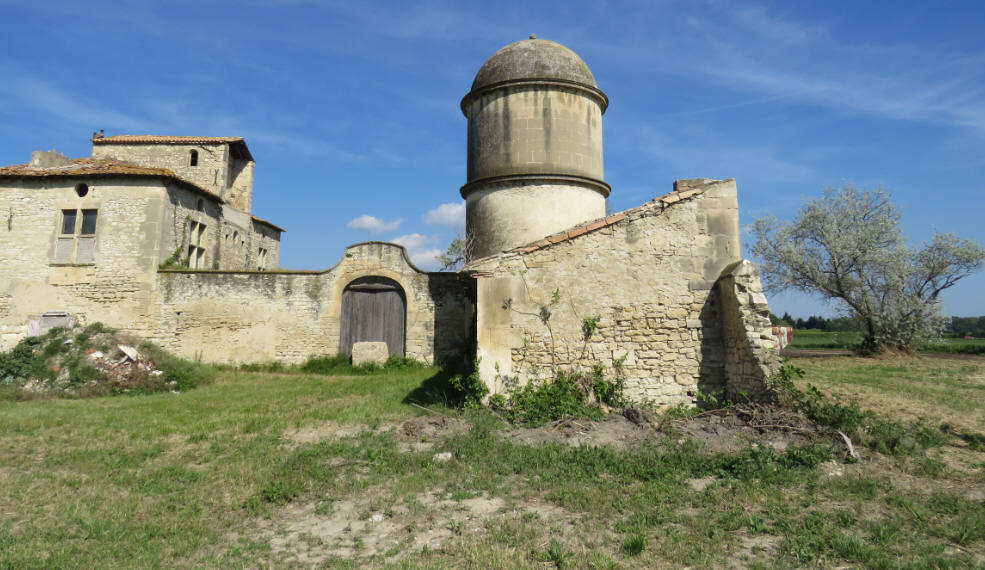
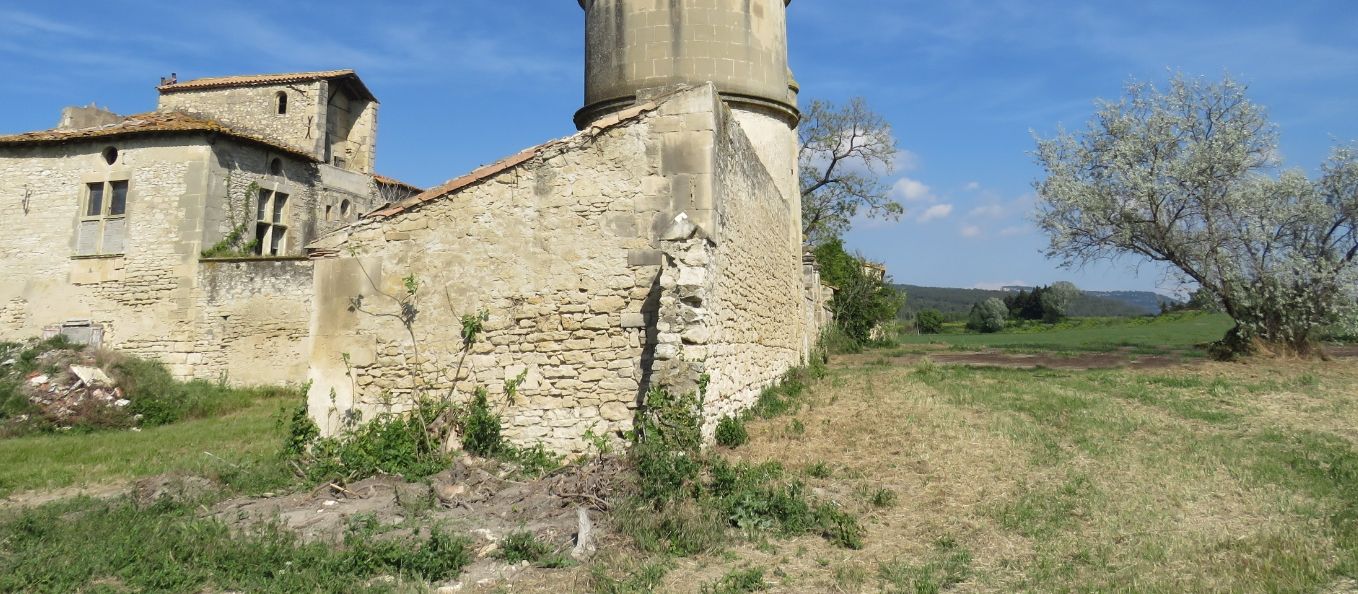
The outside This is the building they ride around, you can recognize the door. The inside
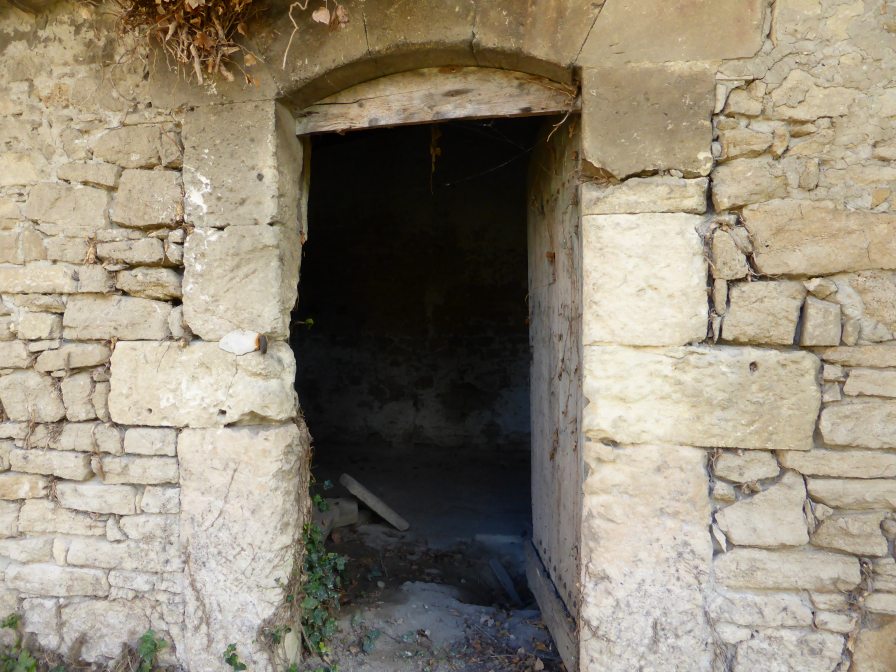
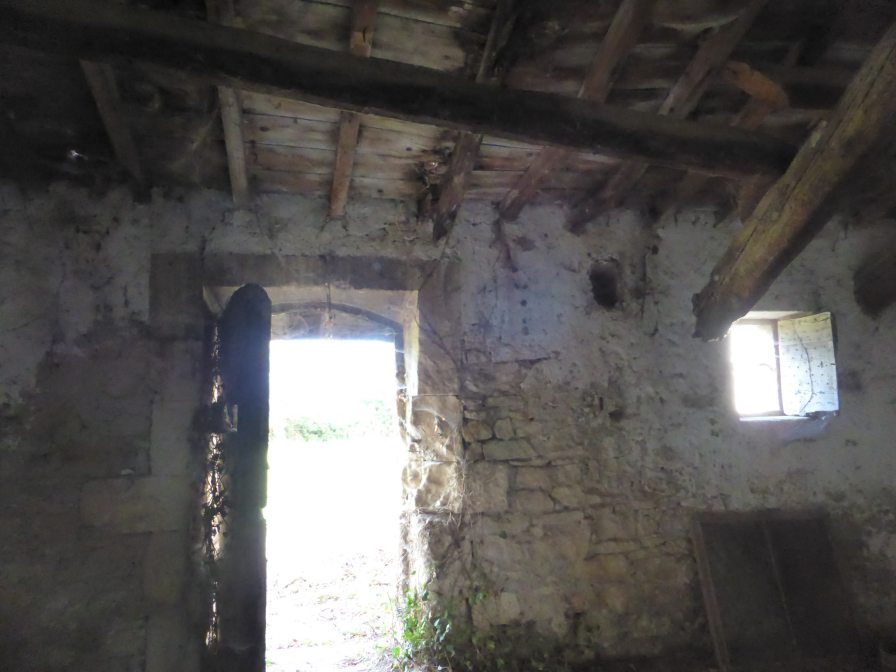
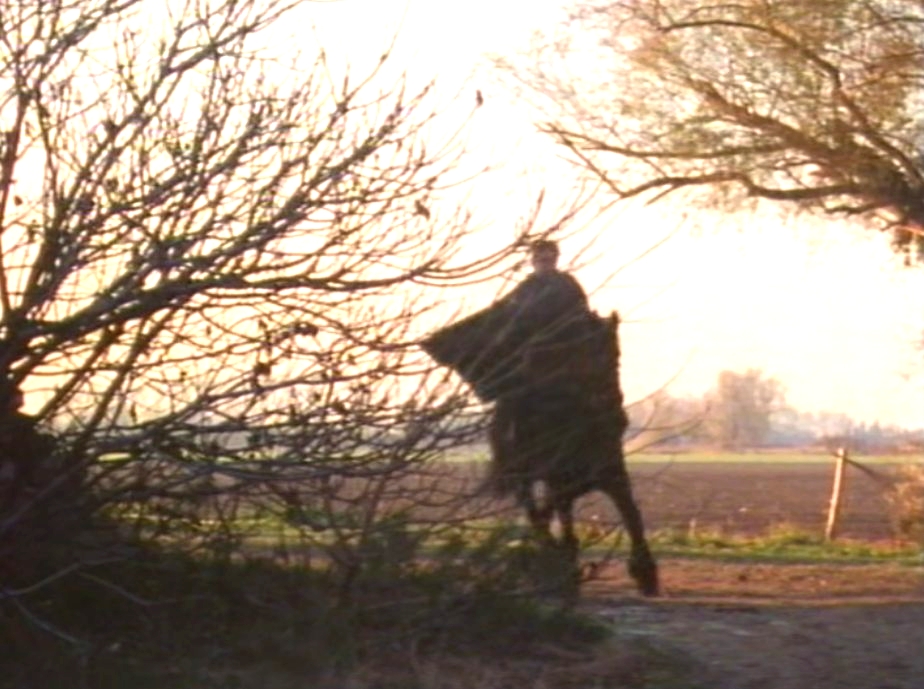
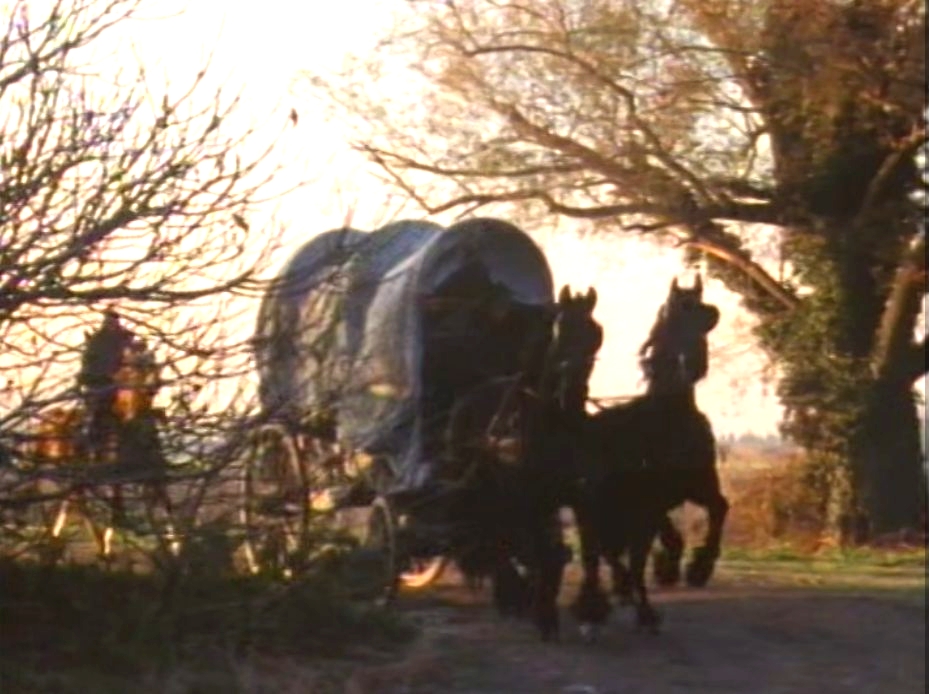
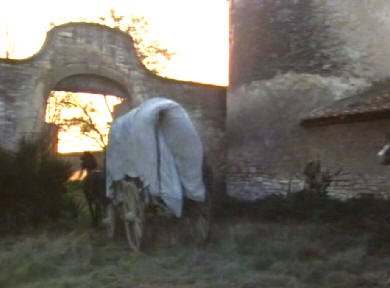
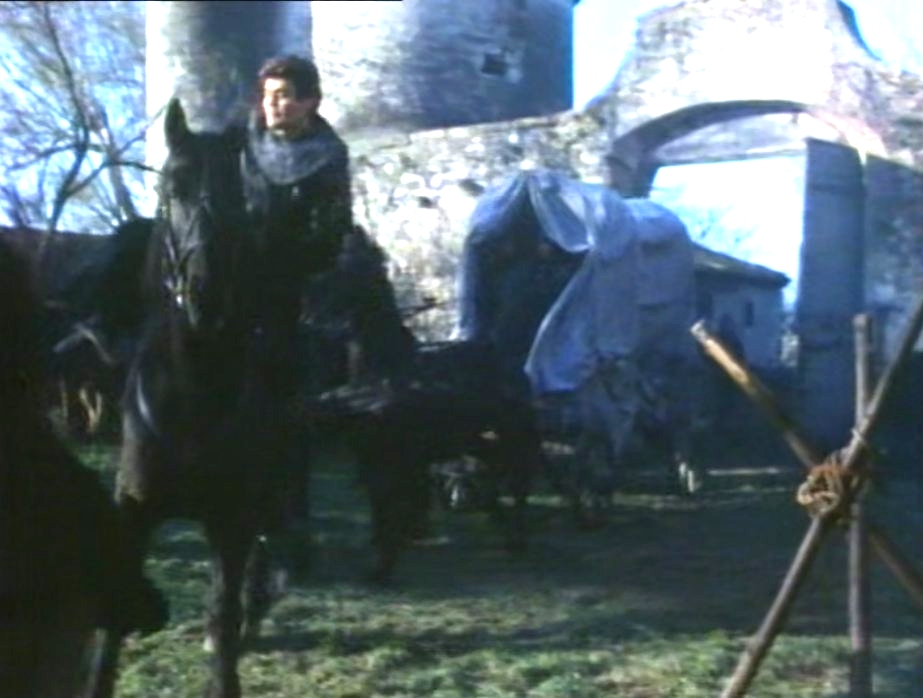
The south gate
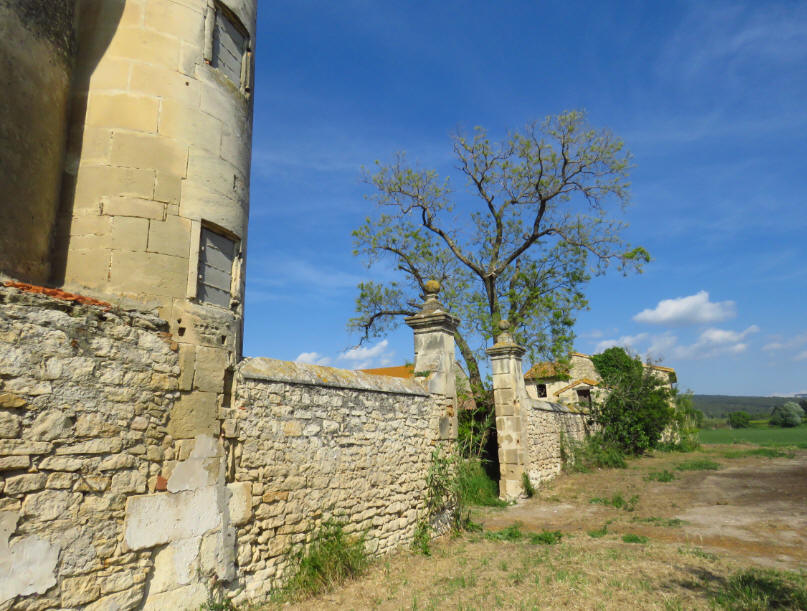
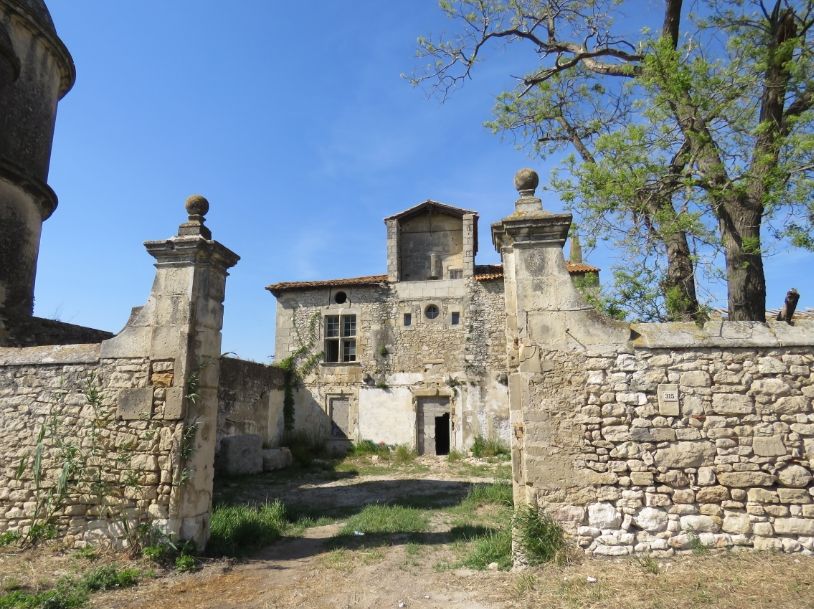
The arrival
at the gate

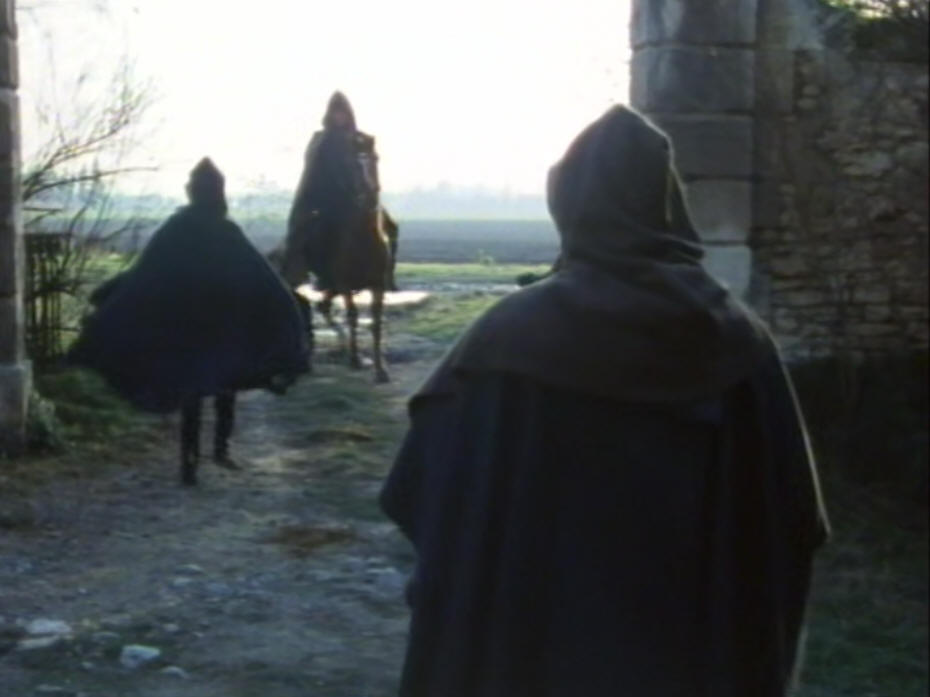
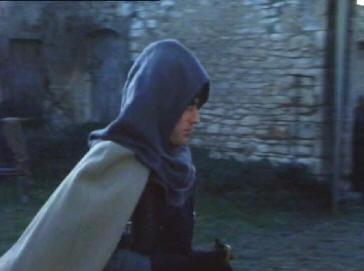



Departure
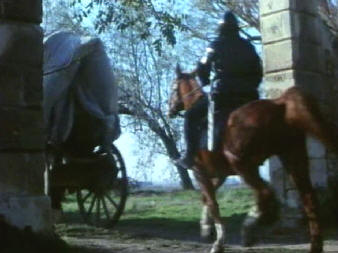
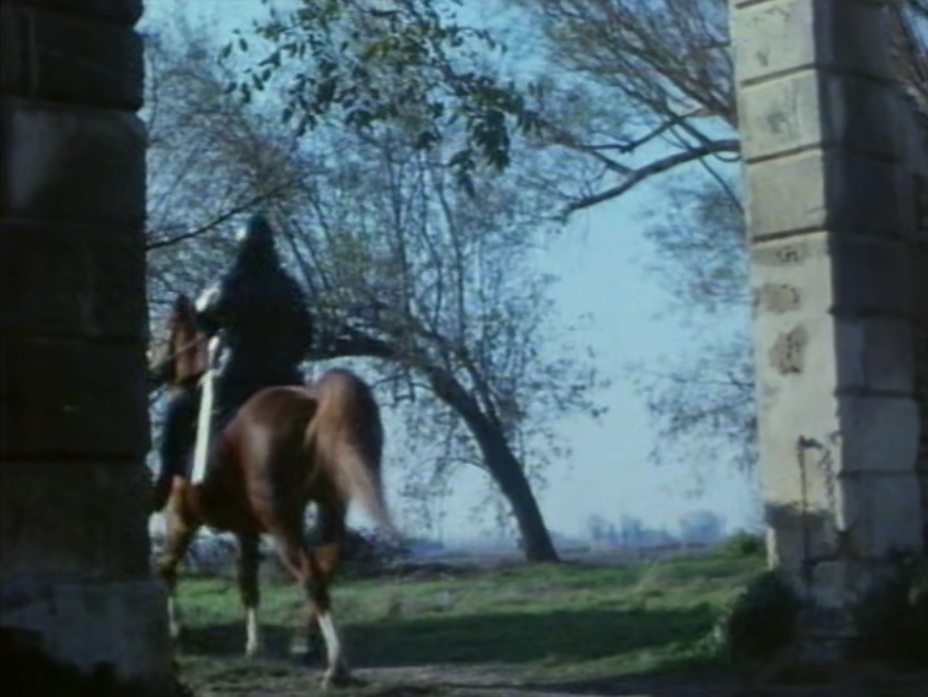
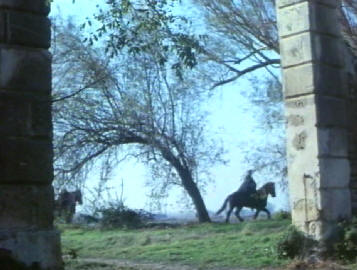
To compare
1987 The Electors 44 2015
Message to Geneva 43
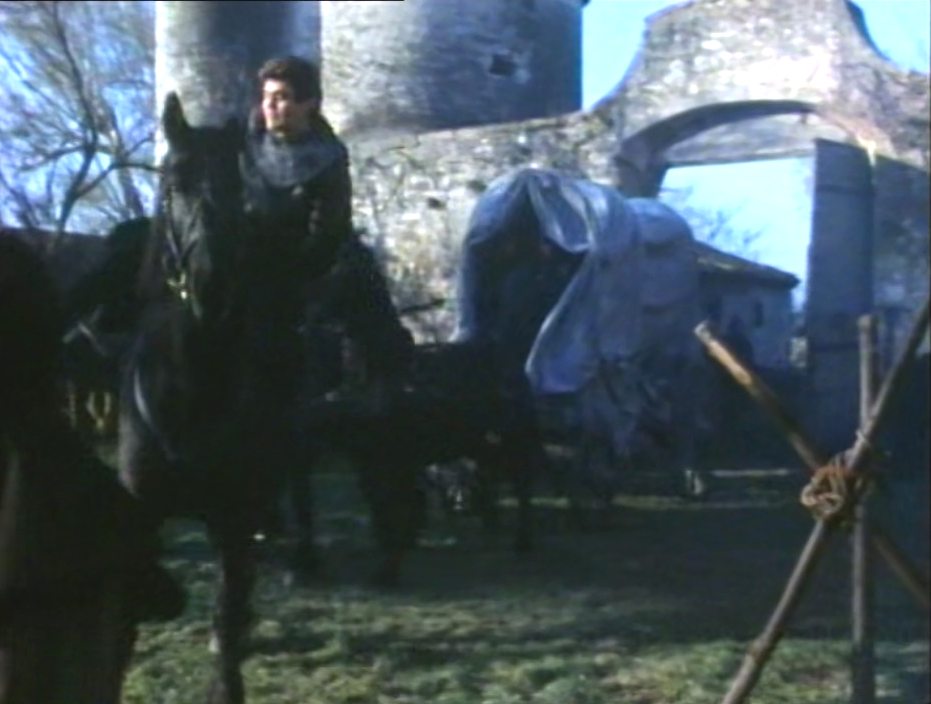

Church Saint Vincent
Square Saint Vincent Les Baux with the exterior of the
bakery
beside it (message of Gevene) and in this same episode the
execution scene with the axes.
Saint Vincent
Chapelle des pénitents blancs
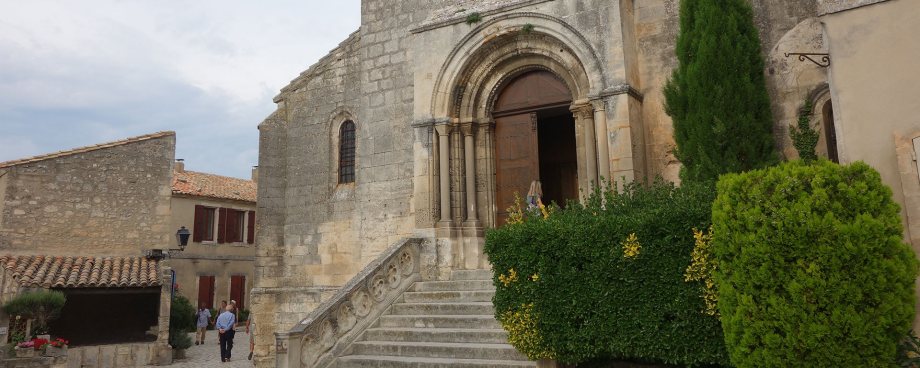
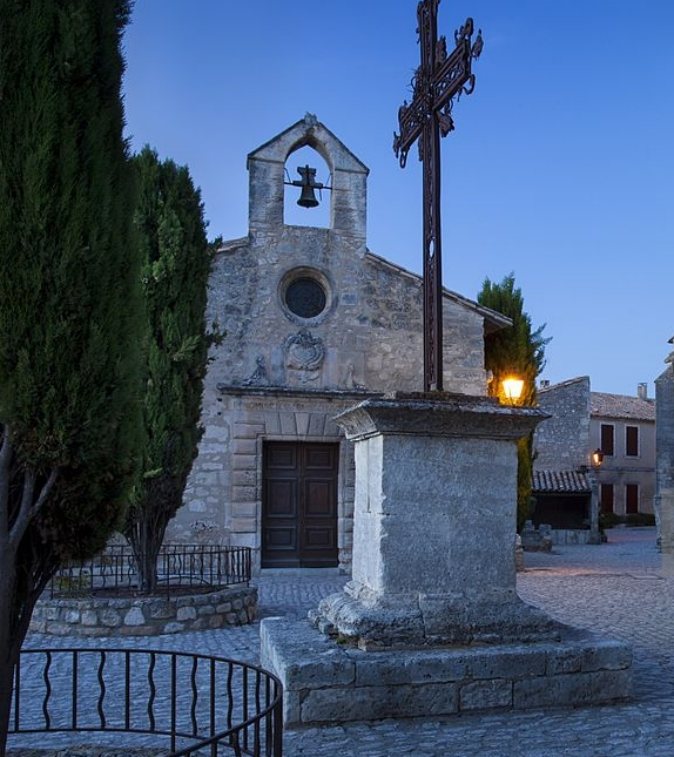
Church interior of Saint Vincent Les Baux.
As far as we know, these interiors of both churches, are not in scenes.
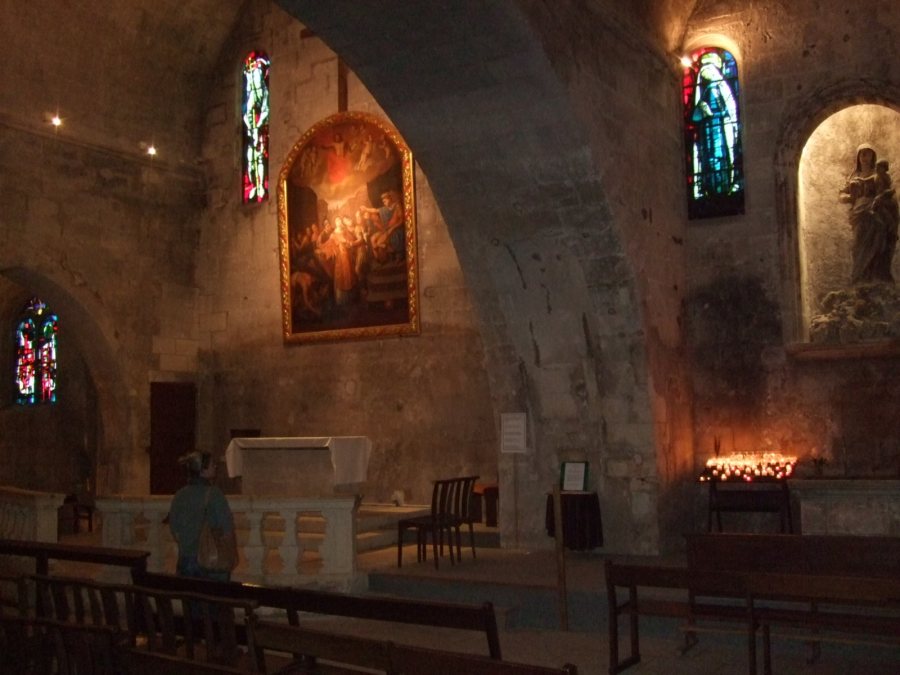
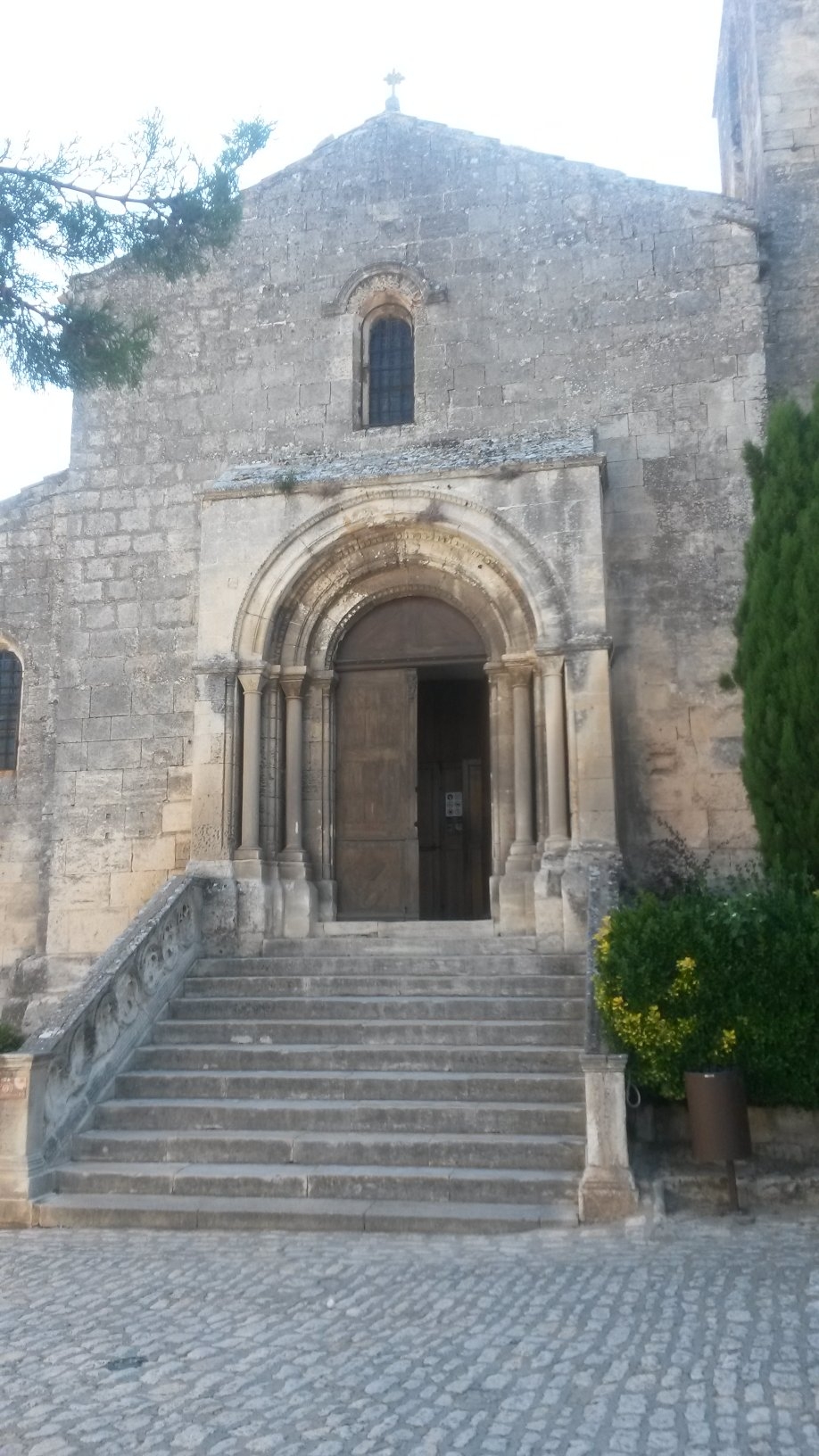
Square Saint Vincent
1988 Message from Geneva 2019
2014
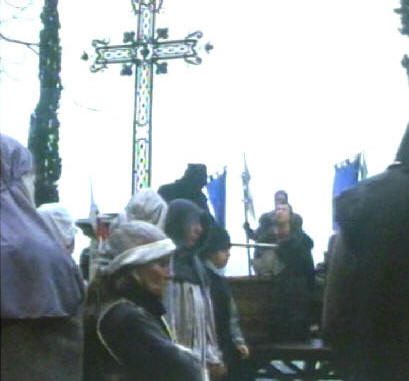

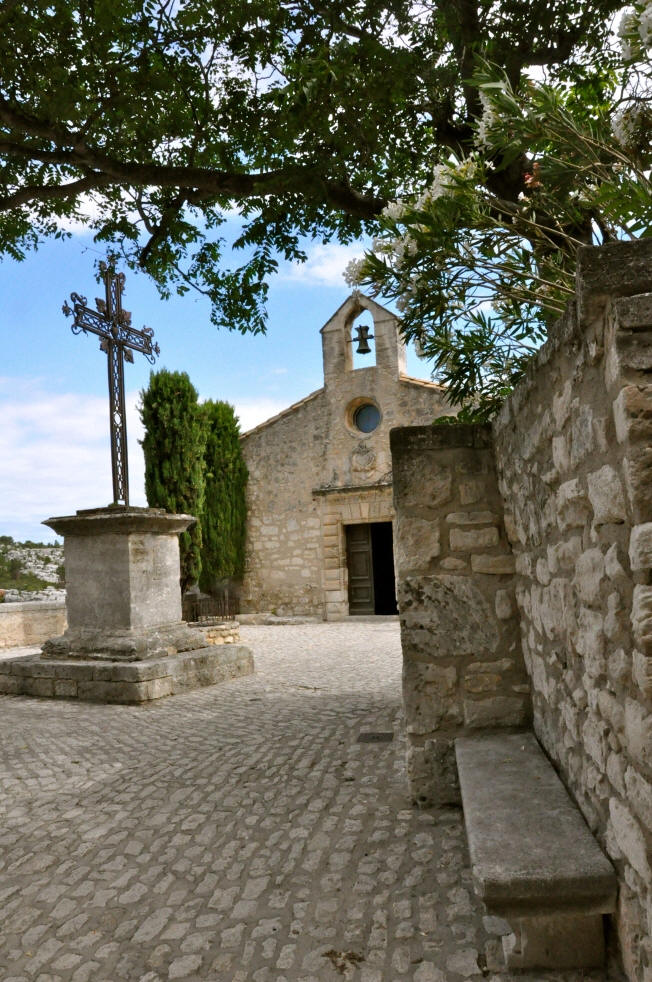
2014
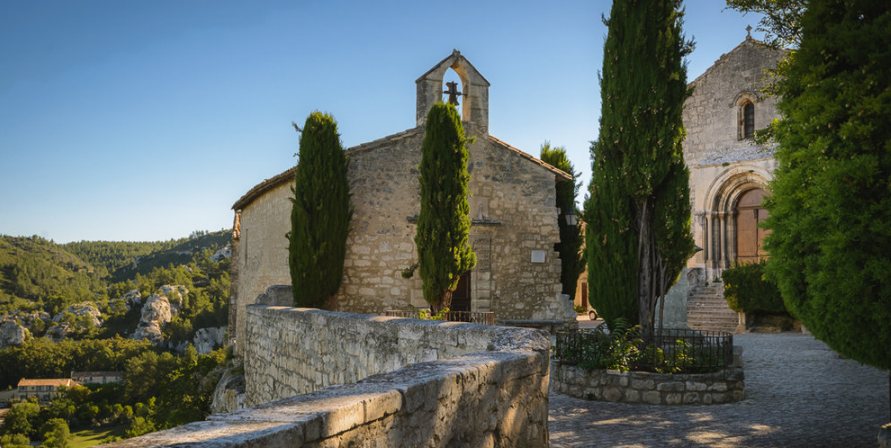
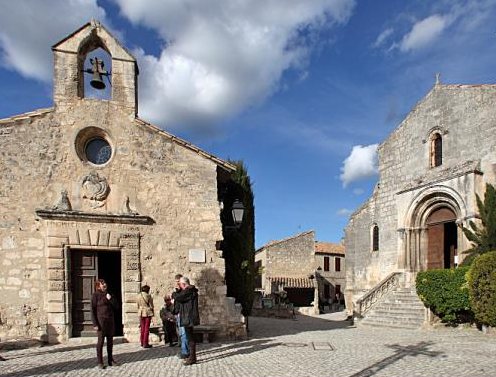
1987 Scene Message from Geneve 2014 Chapelle
des penitents Blanc
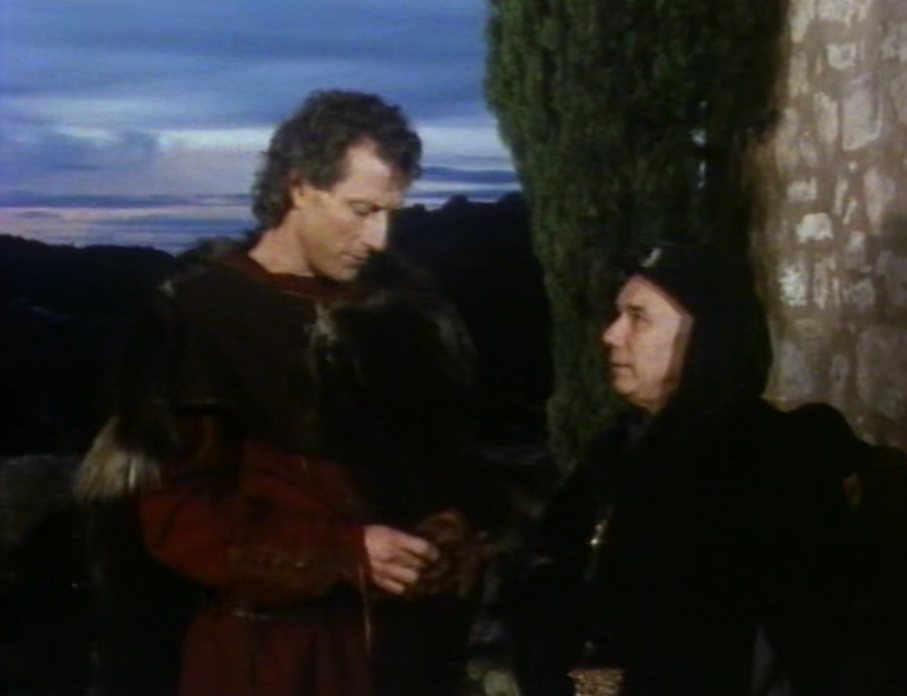
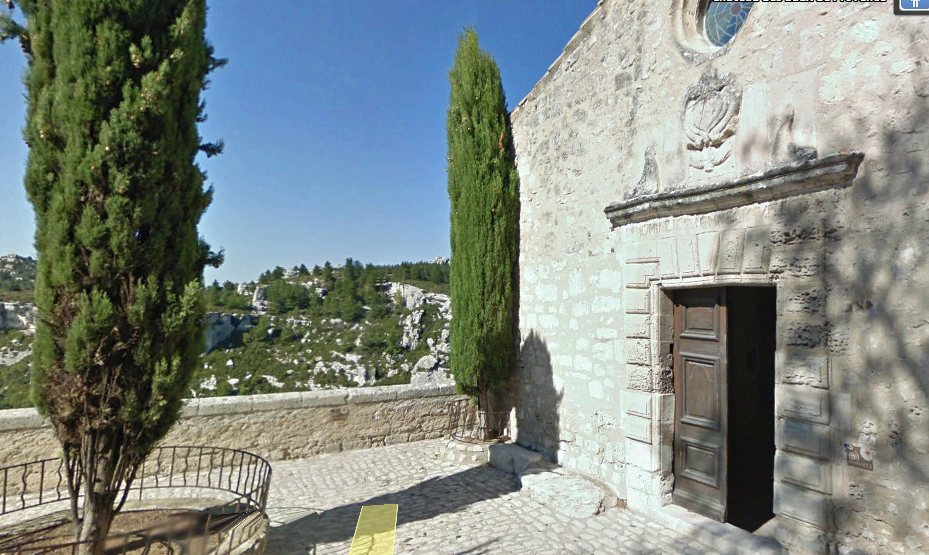
The end scene of message of Geneve is also filmed around the corner on place de
eglise Saint Vincent Right below: the seat of stone is still there but placed on
the other side of the door.
See a row above on the right picture (behind the
group of people). Below: the sofa is moved to the other side of the door and is
still there. Same door, same cypress tree. Nothing changed.
2014 Scene Message from Geneve
2018 photo from C. Petit
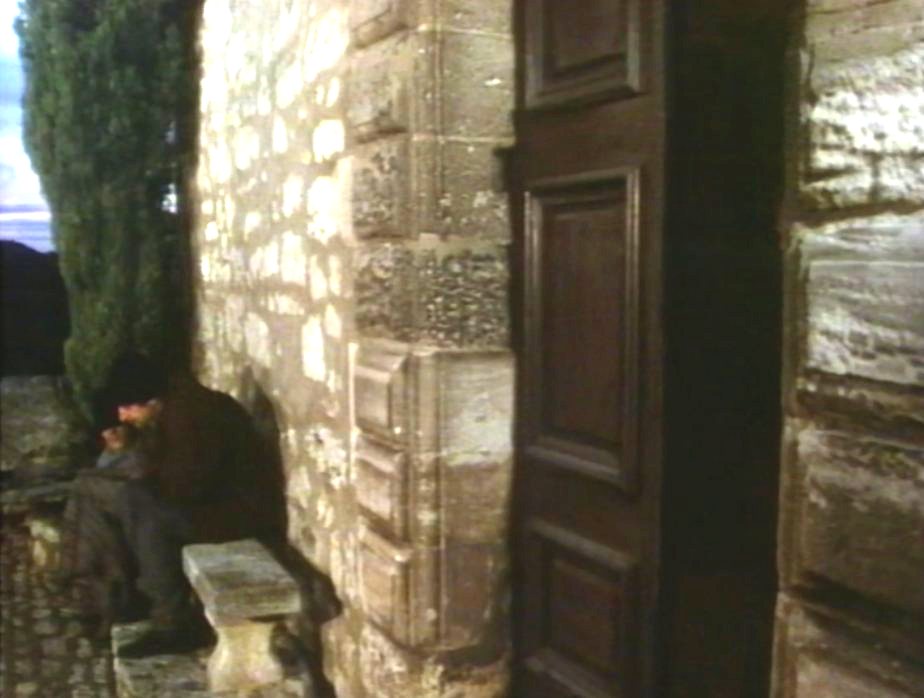
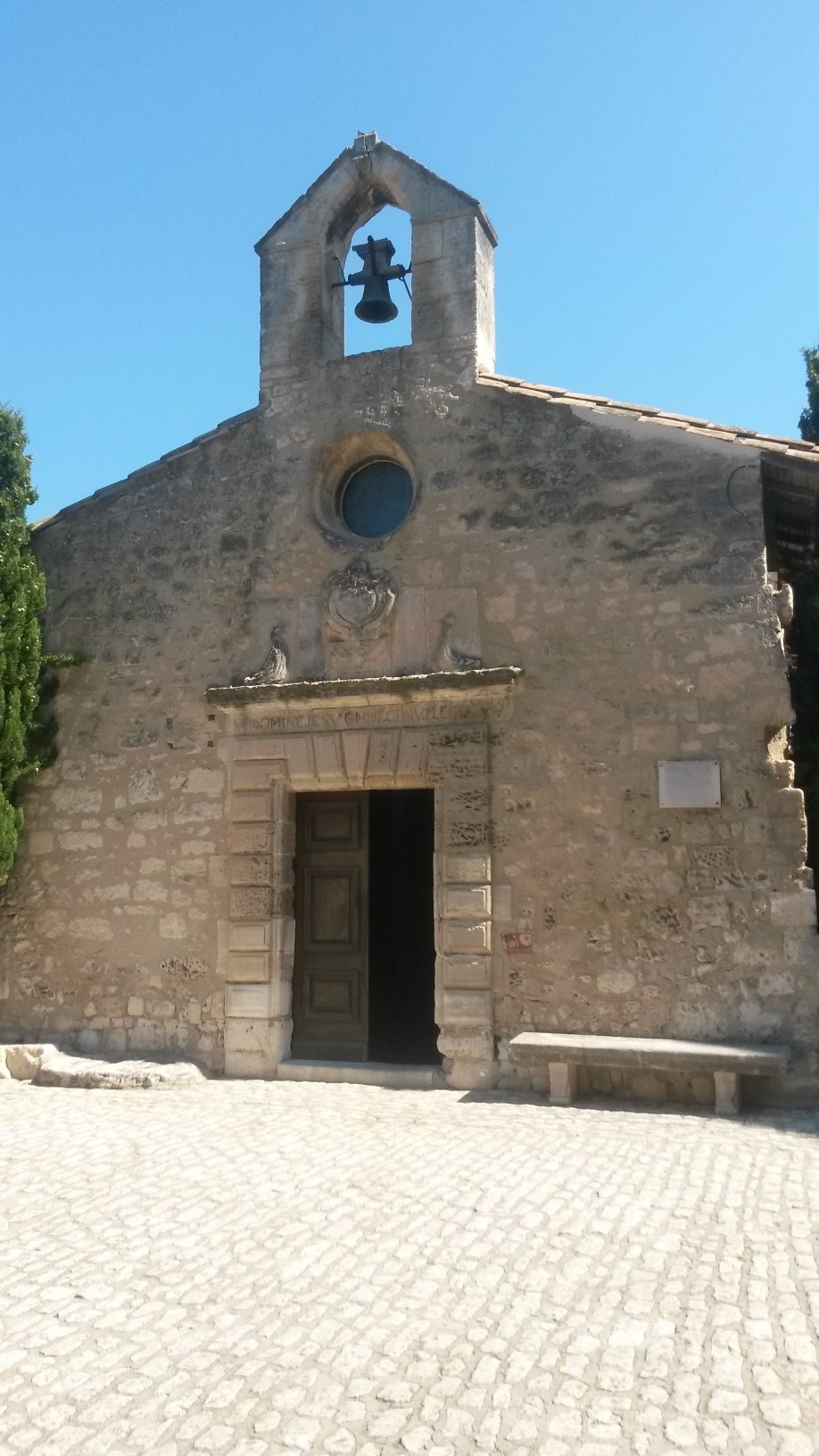
1987
2018
2018
The view
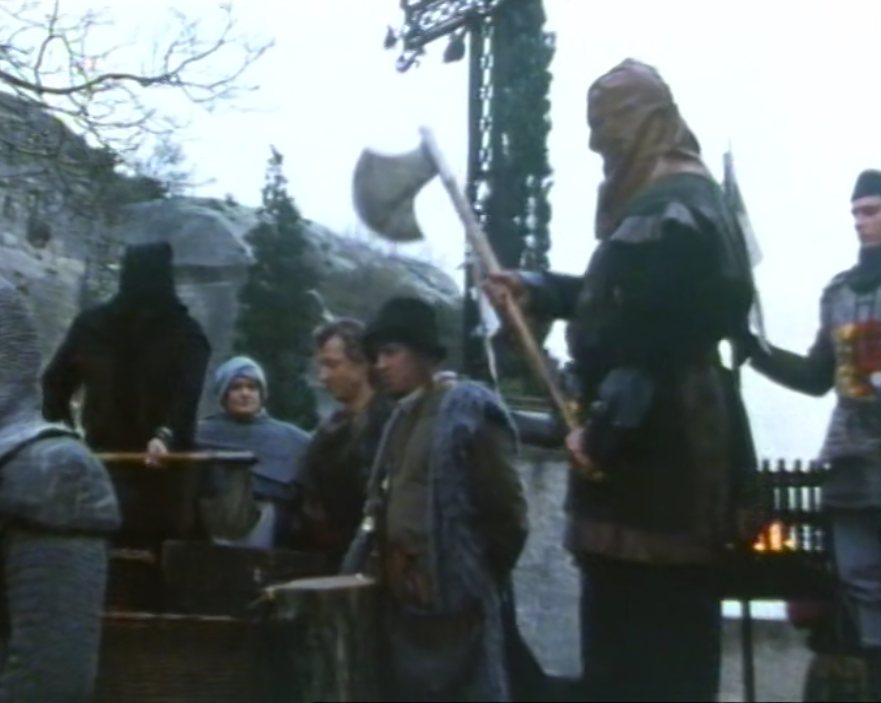
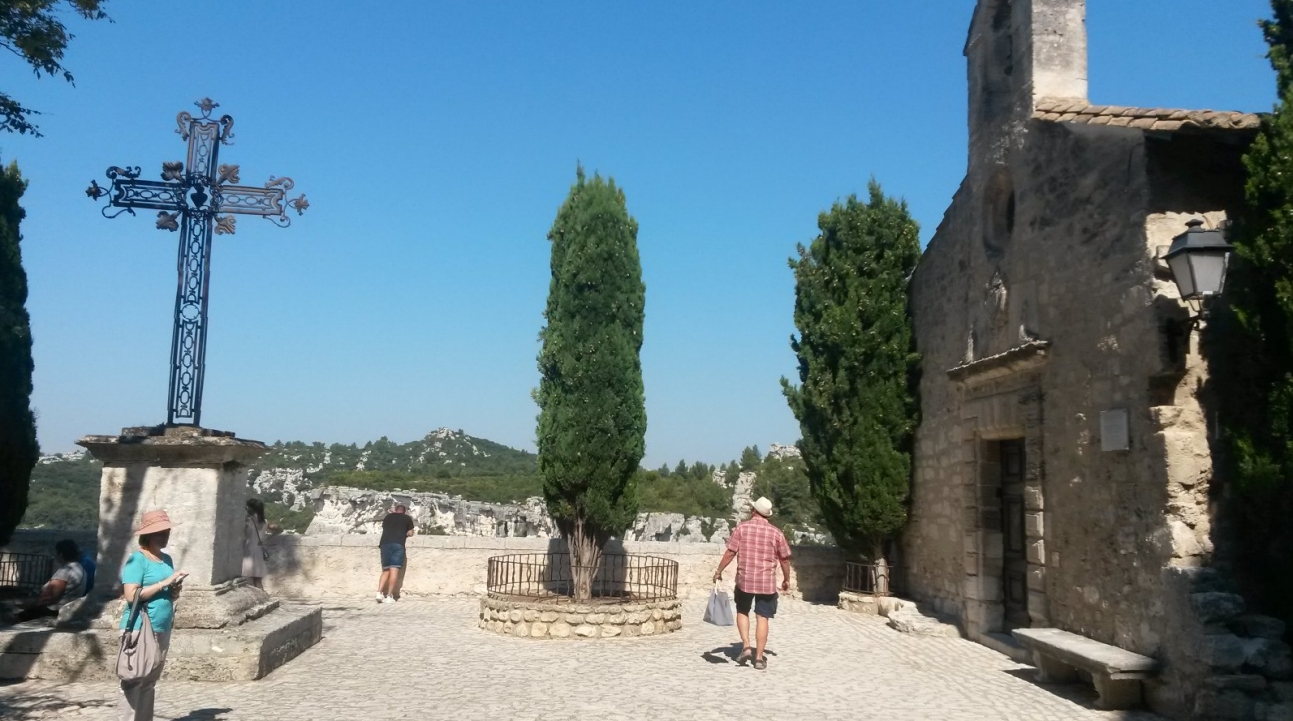
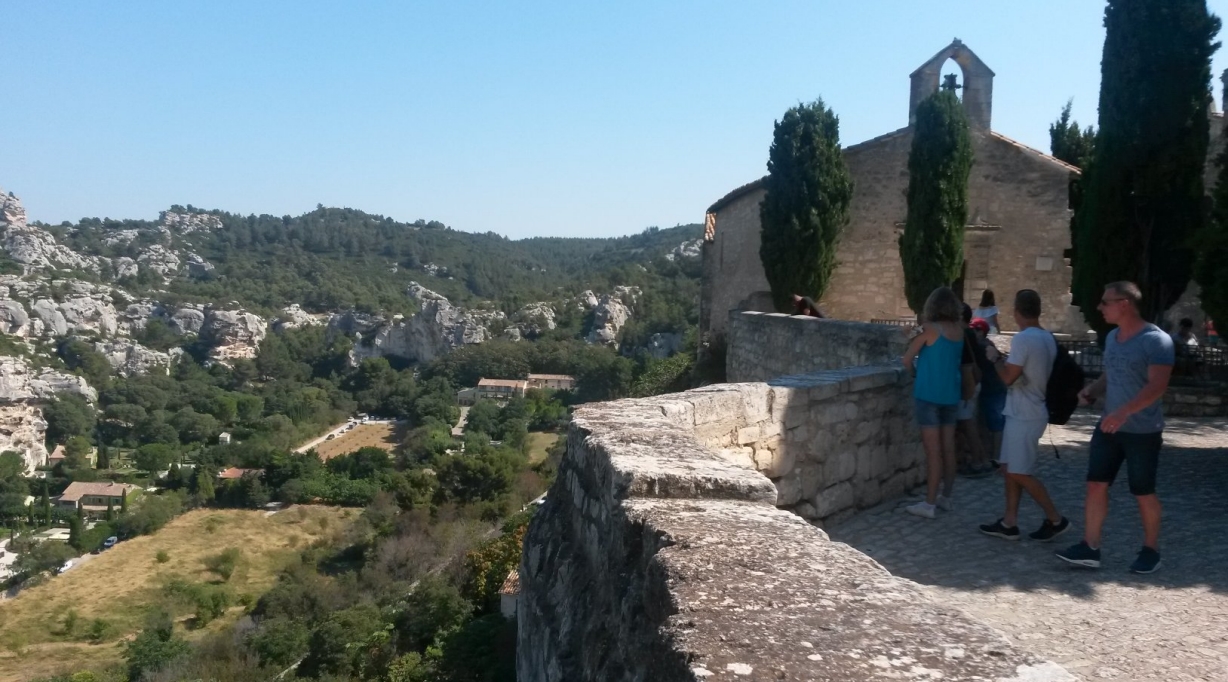
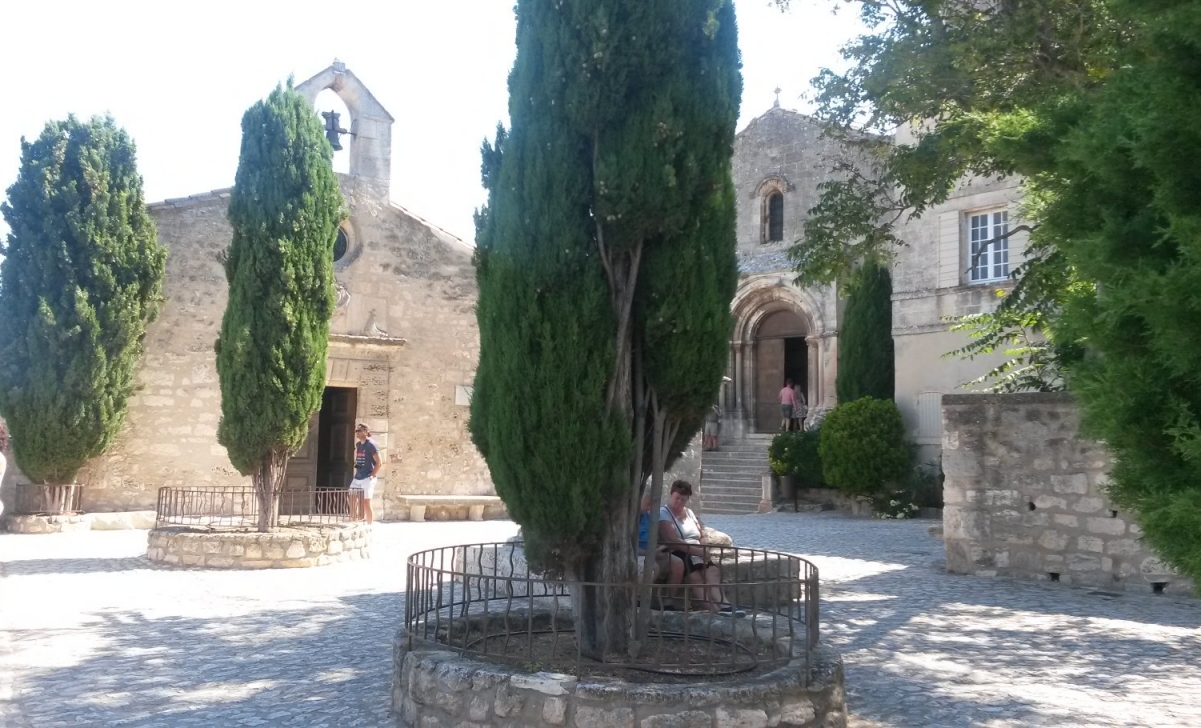
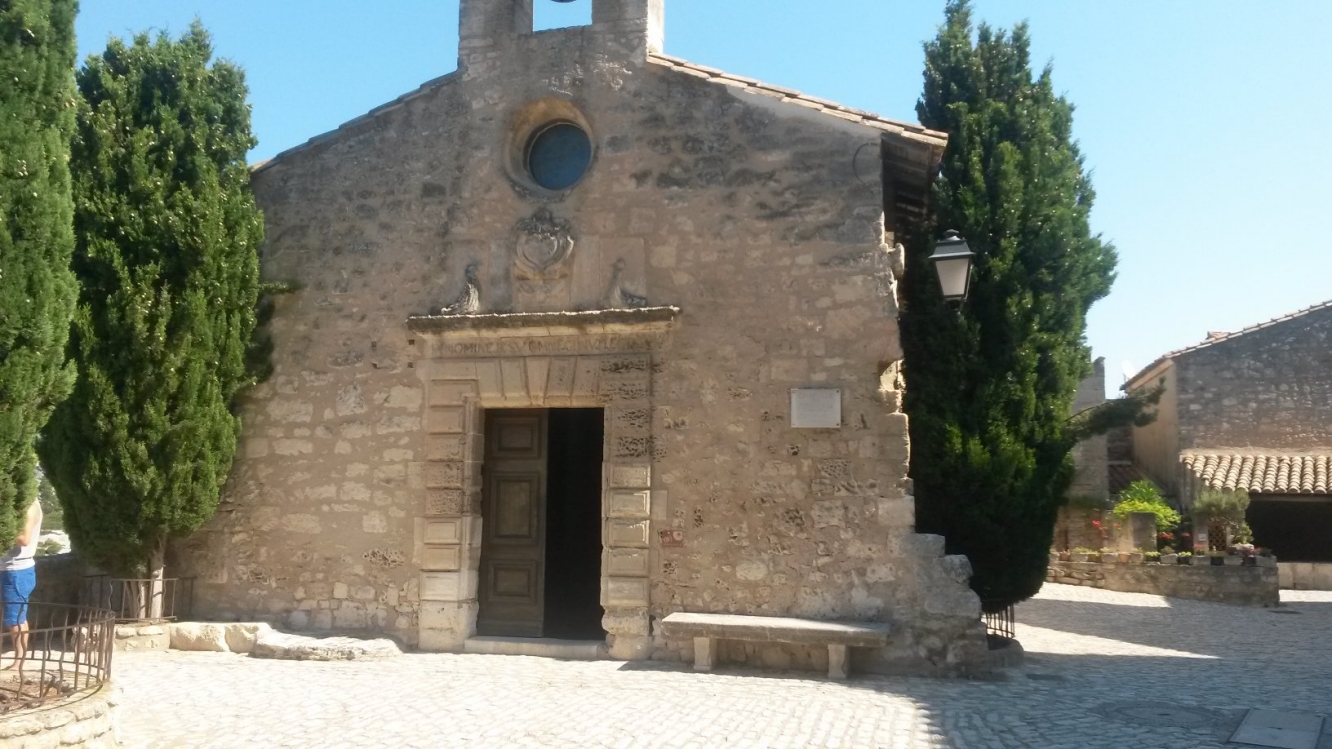
Extra photos and information about Les Baux


The
Post Tenebras Lux window.
On one of
the still standing facades is a typical "mullioned" window of renaissance
architecture surmounted
by the inscription post tenebras lux - 1571", literally
"after darkness,light - 1571", which is nothing but a Protestant motto.

The Bakehouse
The bakehouse had
three rooms on the ground floor. The one on the left contains the oven
and, to its right, a sink with a drainage hole. A window, which still
has
the remains of its mullions and transoms, opens onto the Château
street.
The first of the house’s three rooms currently takes the form of a
terrace, but it is in fact the
remains of this room, now open to the sky.
The paved floor, finely carved stones and the cornice decorated with
acanthus leaves bear testament to the quality of the
Renaissance architecture of the building. Above the door, you can see the remnants
of a staircase leading to an upper story that no longer exists.
The Climate.
The Temperature and the Mistral
The climate in Les Baux-de-Provence, as
in the rest of the Alpilles, is considered Mediterranean. The winters are mild
and dry and summers hot and dry. The average
maximum temperature is in July and
August (29 °C) with the lowest average minimum temperature in December and
January (+ 3 °C). The wettest month is January with an
average of 7 days of rain
against two days in July.
The Alpilles region receives more rainfall than the shores of the Mediterranean:
500 mm / year in Camargue against 600 to
700 mm / year in Les Baux.
FROST: Major frosts are rare but were more frequent in the 19th century as evidenced by
the numerous occasions of the freezing of the Rhône which
has been virtually
unknown since then. MISTRAL: The
mistral violently blows
from the north or north-west especially in winter and spring. The Alpilles
deflect the wind but it
blows in Les Baux almost as strong as in the north of the
chain. The mistral blows strongly 100 days a year on average and less strong on
83 days lesving only 182 days a year
without wind.
There are two types of Mistral: the
"white mistral" on clear days and the "black mistral", rarer, which is
accompanied by rain.
The Ancien régime
Les Baux, together with Provence, was then attached to the crown of France.
Under the rule of the Manville family, the village became a center of
Protestantism and even
tried a rebellion against the crown. In 1631, tired
of conflict, the people negotiated with the king for the redemption of the
castle territory and the right to dismantle the fortifications,
"which were a
refuge for rebels".
Louis XIII consented on 5 August
[In 1642 the town was offered the
Grimaldi family as a
marquisate in favour of
Hercule de Grimaldi, Prince
of Monaco (1642-1780). The title Marquis of
Baux is still carried by the Prince of Monaco. Administratively, the town is
entirely French and the title of Marquis of Baux is
traditionally given to the
heir to the throne of
Monaco.
Jacques, the son of the current Prince of Monaco
Albert II, carries among his many titles that of Marquis of Baux.
Today
Les Baux is now given over entirely to the tourist trade, relying on a
reputation as one of the most picturesque villages in France. Its population of
22 in the
old village is a fraction of its peak population of over 4000, and many of its buildings (in particular the castle) are picturesque
ruins. A new
archeological area
of the "Baux" was discovered in 1986 by the student
Thomas Bain, permitting the archeologists to reconstitute the site.
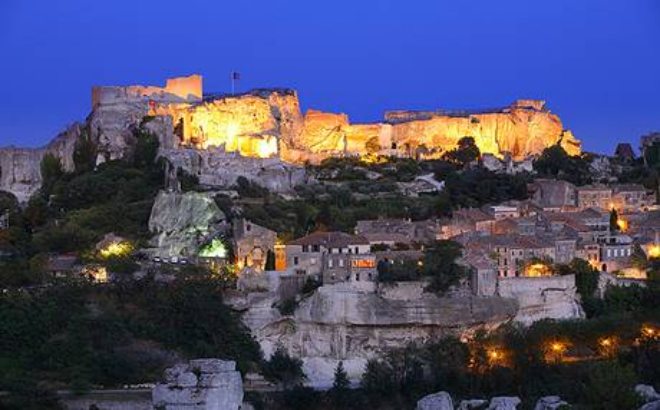
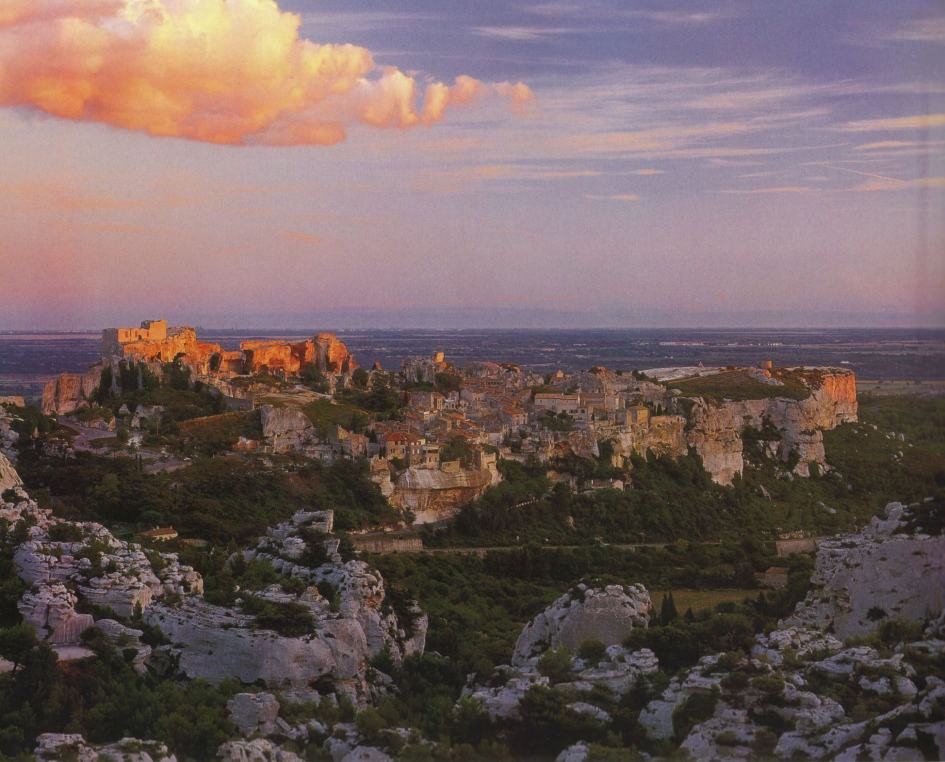
The whole area has been updated and
modernized. I heard The area was around 70 ties in ruins. There are many more
paths that
wheelchairs and walkers can use. In summer there are often art
exhibits and medieval demonstrations. Replica War Machines, including several
trebuchets, a
ballista, and a battering
ram. On 1 April 2007 three new catapults capable of firing joined them: a 16
metre high Trebuchet said to be
the largest in France,
a
Manganel, and a Couillard. These three
machines perform firing demonstrations every day with real ammunition.
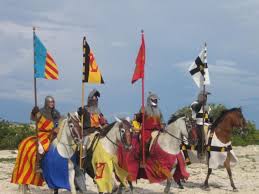
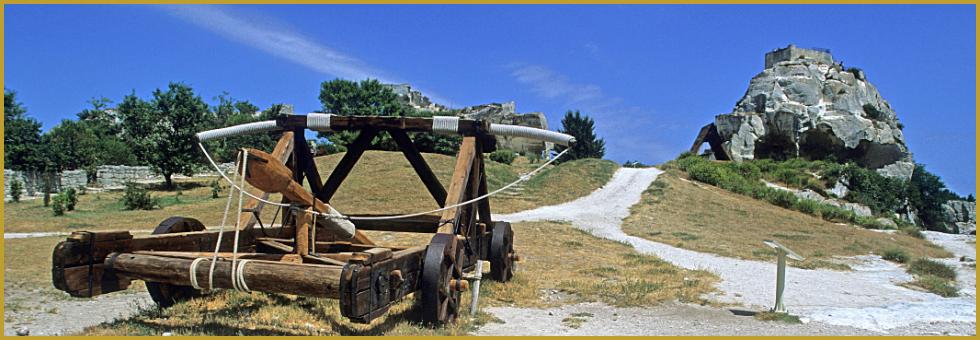
In the
Château des Baux demonstrations of huge
catapults (a
Trebuchet,
a
Couillard also called a biffa, and a
Mangonel)
are given every day from April to September.
The Trebuchet
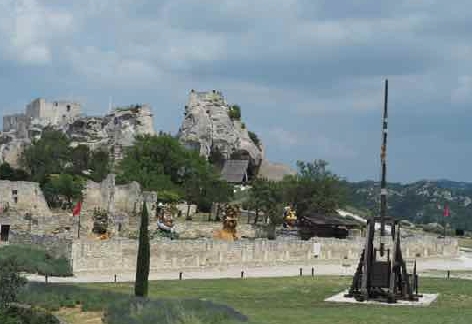
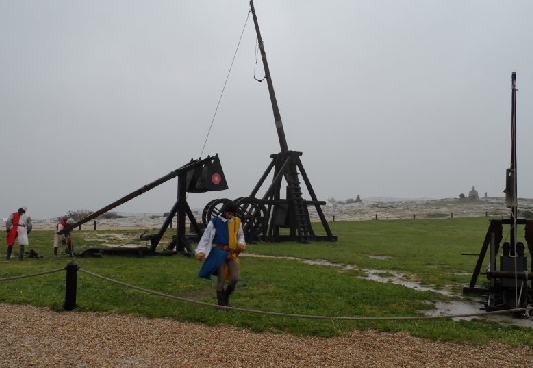
Le Trebuchet was a siege weapon and it was certainly one of the most famous
weapons. Designed like a catapult or sling, its lever arm system would have
allowed boulders
weighing 50 to 100 kg to be fired over a range of 200 metres
he trebuchet at the Château des Baux measures
16 metres in height. As powerful as it is accurate. As it weighs 7
tonnes,
60 soldiers would have been required to install and operate it.
This trebuchet is a unique model which has a quarry-wheel arming system, in
place of the usual winch system.
The Trebuchet was part of a
range of formidable machines used to attack the walls of fortified sites during
sieges. It is a sort of giant catapult, capable of launching projectiles
using a
lever with a counterweight at the end. Campaign catapults were pulled on
travelling carriages; fixed catapults would have been built at the actual site
of the siege.
The Battering Ram
The Battering Ram was used to smash into fortress walls
and crack them, in hopes that the wall would collapse.This solid beam, suspended
horizontally from a framework by
ropes or chains often had an iron head at the
end of it. Using the ropes attached to the ends, the soldiers would give it a
backwards and forwards motion. The battering ram
and the soldiers manouvring it
were protected by peaked roof known as the 'canopy' which was covered in
non-combustible materials, such as fresh animal hides, dung or sods of earth.
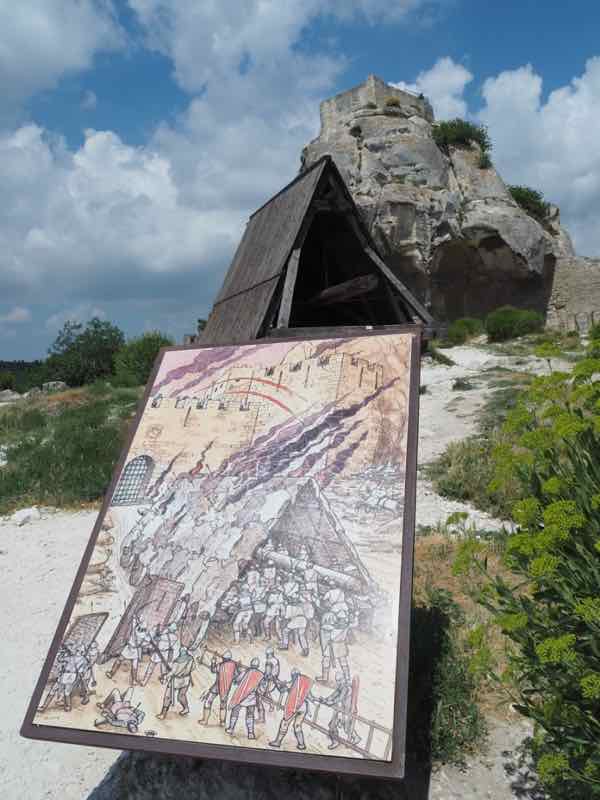

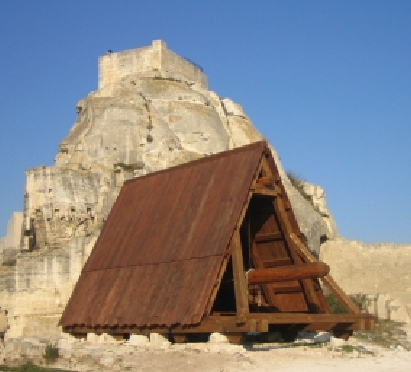
The Ballista
The Ballista was another catapult-like device that could project rocks or items
weighing 20 to 60 pounds on fire. Later it fired arrows like a huge Crossbow.
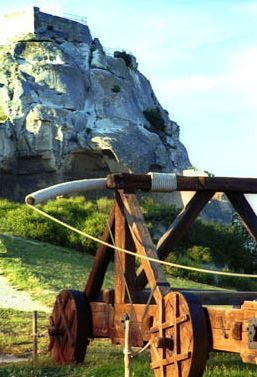
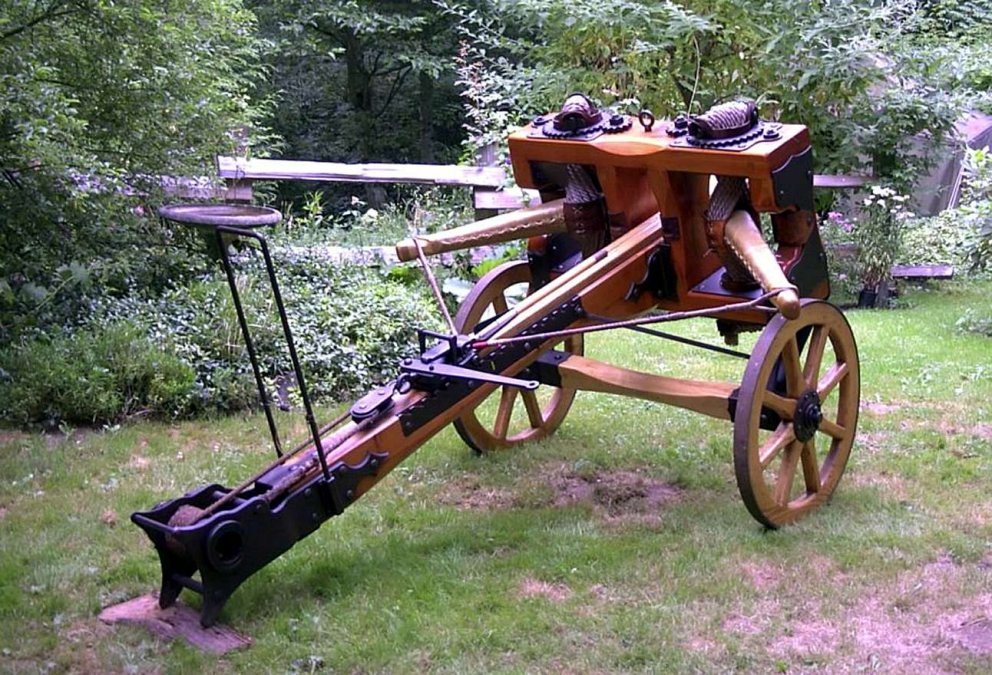
The ballista belongs to the catapult family,
like the trebuchet, and dates from the 12th century. It consists of a lever arm
with a receptacle at the end that holds the projectiles. It was
operated by pulling on the end of the lever arm, with traction being facilitated
by the addition of a counterweight. This formidable device was thus able to
project one 10 to 30 kg boulder
a minute. This Ballista could have fired rocks,
rotting carcasses or Greek fire. Greek fire was a mixture of saltpetre, sulphur,
resin and other fusible materials that would stick to objects
and burn them, and
was much feared in the Middle Ages. Water was unable to extinguish it and only
sand or wet earth had any effect. Large ballistae were assembled and
disassembled on site. Some were developed to fire arrows. Being attacked by fire was especially onerous
as there weren’t fire departments in medieval times that could quickly put out
the fires.
The Couillard
The Couillard was used between the 14th
and 16th centuries. This counterweight machine has two articulated
troughs, which make the device easier to handle by
effectively dividing the load
in two. The counterweights on the first couillards were large leather sacks
filled with earth. Later, they were replaced by troughs made from
wood and
riveted iron and filled with metal. For a long time, this machine’s performance
allowed it to compete with gunpowder artillery, thanks to its rate of fire and
the small
crew required to operate it (4 to 8 people).
This siege engine could fire boulders 35 to 180
metres at a rate of 10 per hour.
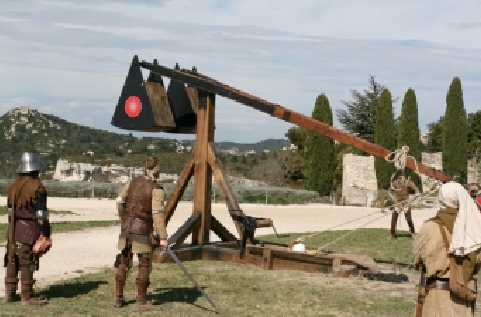
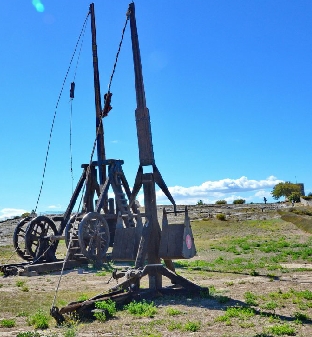
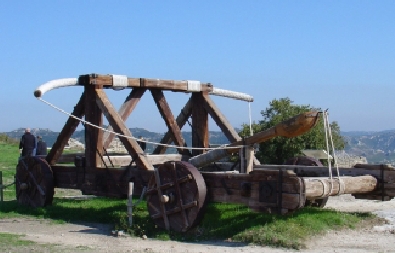
Water
The upper town in Les Baux had neither well nor
spring. Private or public cisterns collected drain-water. The townspeople would fetch their water
from a
place called Carita in the valley, passing through the porte d'Eyguieres, or
watergate. In 1868, a cistern covering 882 c.m. was built in
a
square in front of the Church of Saint Vincent. Rainwater was collected on
this paved area, or impluvium, which covers almost 3000 sq. m.
Olive trees
Olive trees have grown around the mediterranean
rim since
prehistoric times, but it was
the Phocaeans who began cultivating
olive trees in the
Provence ca
600 BC. At the end of the 18th century, the olive
industry was in full flower, although a number of
bitter frosts in 1789 and 1956
killed
off over 80 percent of the trees. It was then that the grape vine
acclimatising to the difficult rocky soil, was introduced, partly
supplanting the olive tree.
Today, some 13 estates in the Les baux valley are
planted with 340 hectares of vines. The olive trees were replanted and today,
olive groves
containing over 290.000 trees produce olives for the table and for
oil, which is pressed in the valley's mills.
At the edge of the old town of Les Baux
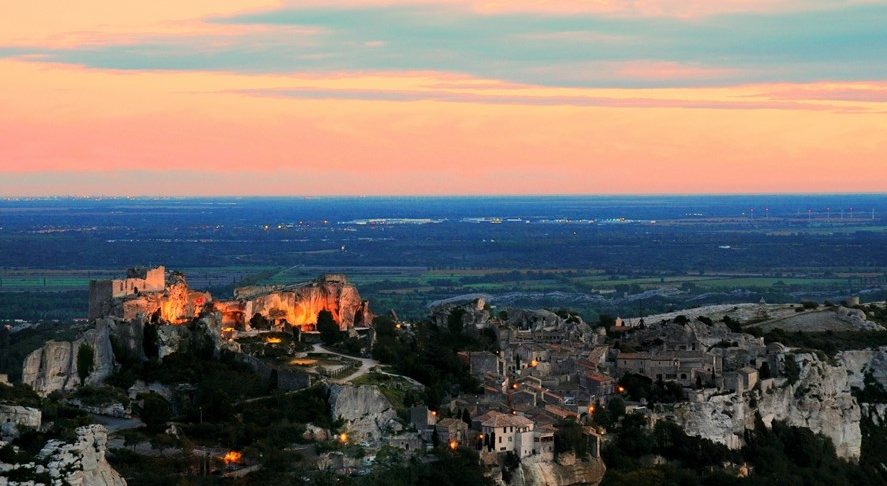
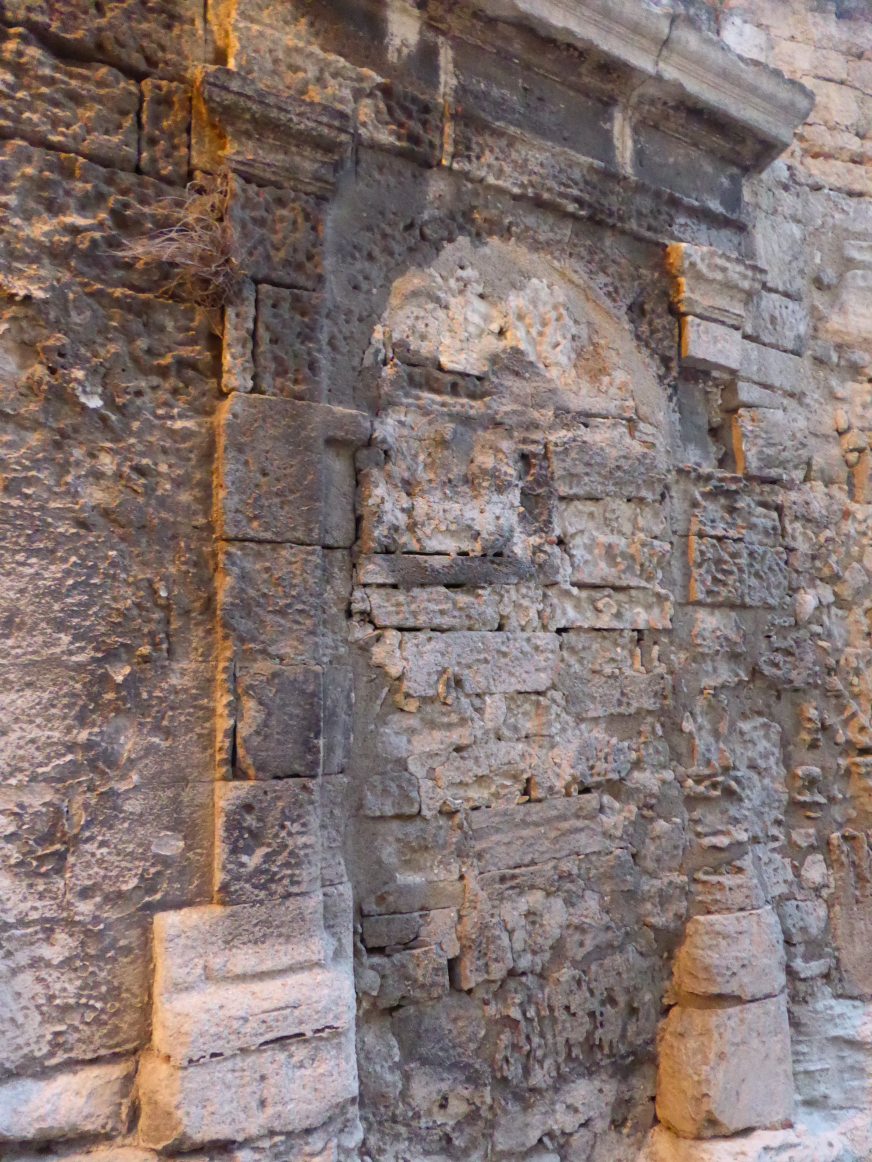
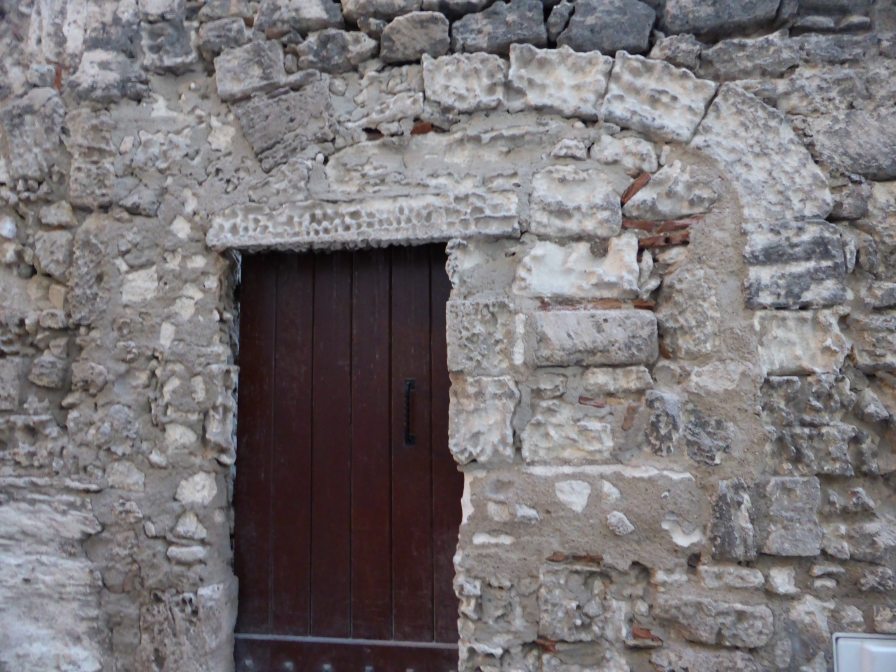
Les Carrières de Lumières
Located 500 metres from the
village of Les Baux-de-Provence, the Carrières de Lumières site has become one
of the most visited in Provence. Built inside old quarries, a sound and light
show
is projected on 14 meter high walls highlighting the mineral aspect of the
place. Great names in art have already covered the walls, floors and ceilings of
this unique place in France. These
include Michelangelo, Leonardo da Vinci and
Raphael: The Giants of the Renaissance (2015), Chagall, Dreams of a Summer Night
(2016), Bosch, Breughel, Arcimboldo, Fantastique et
Merveilleux (2017), Picasso
(2018) and van Gogh (2019) It's almost a must! In busy periods it is
preferable to make a reservation or to take into account a long queue.
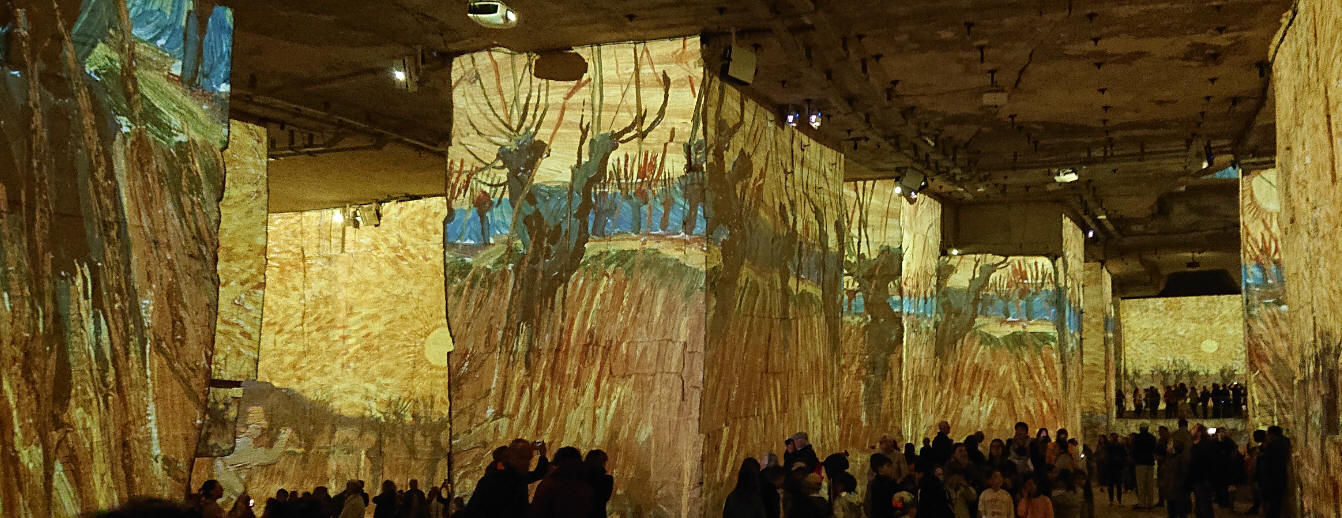
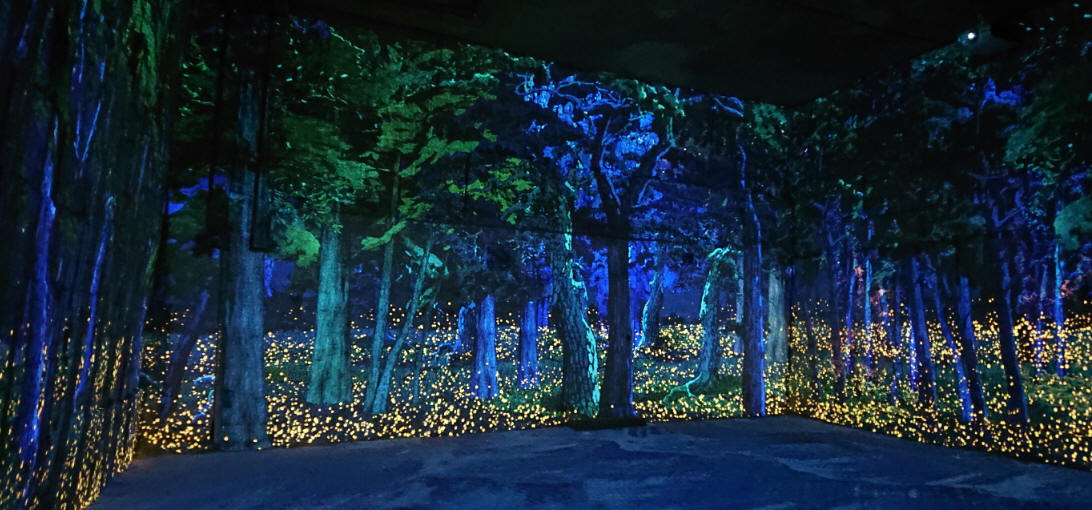
We felt enchanted
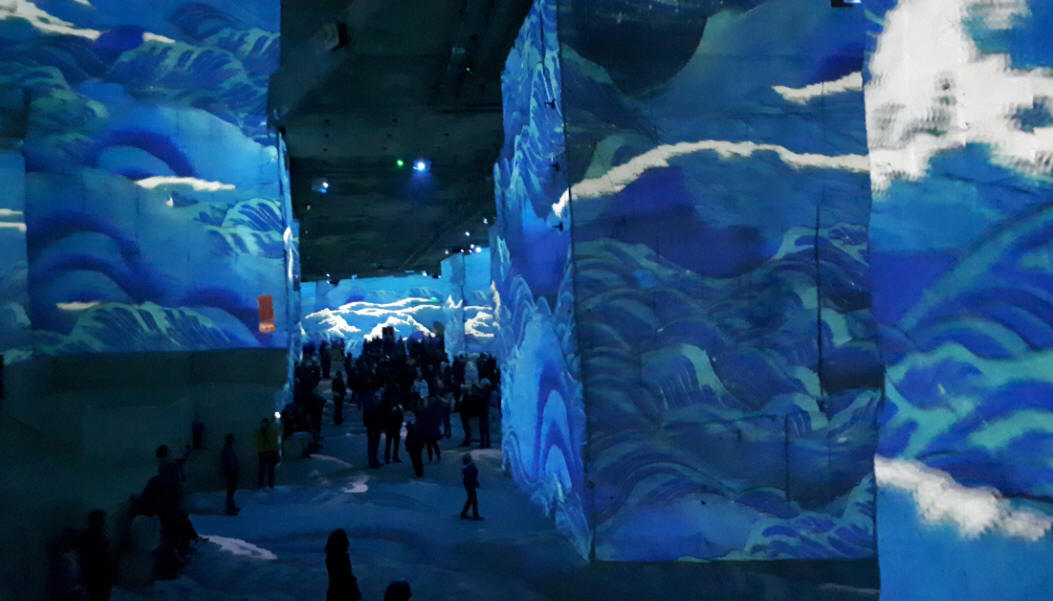

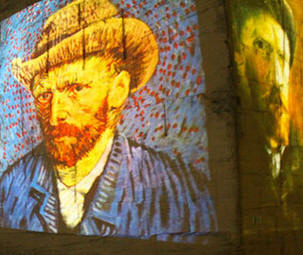
One of these grooves, Les Carrières de Lumières, now serves as a kind of
multimedia exhibition space where every year a spectacle of light and sound can
be admired.
You will be immersed in beautiful images with matching music in an
area of 7,000 m2. The video below gives you an impression. Click
here
to watch.
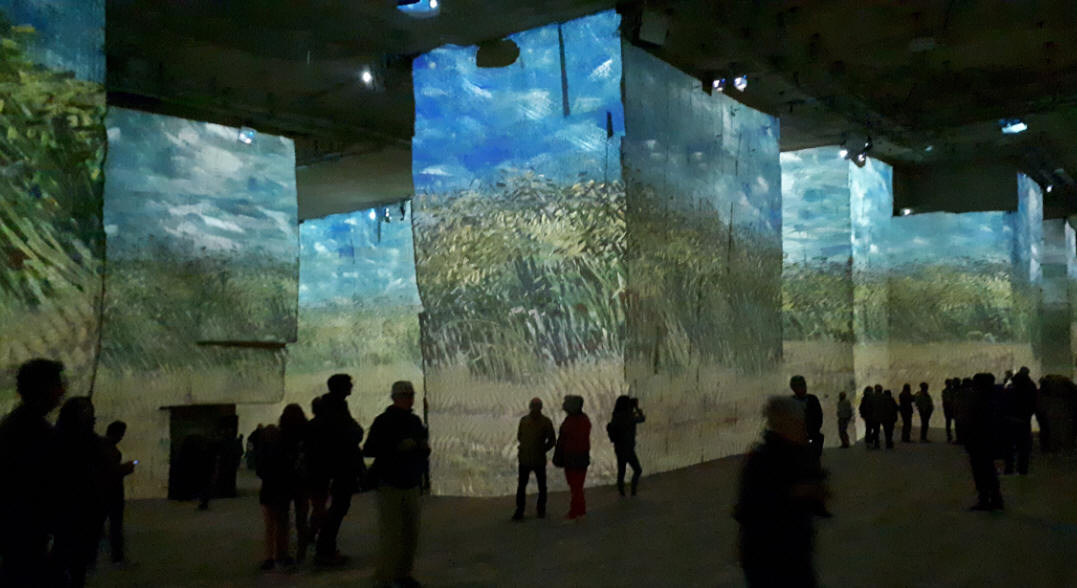
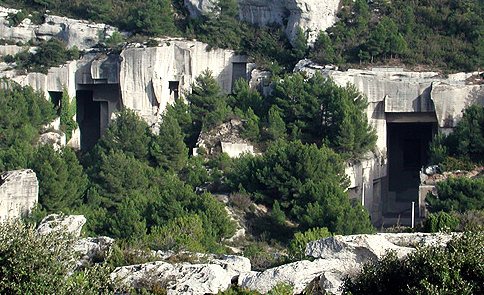
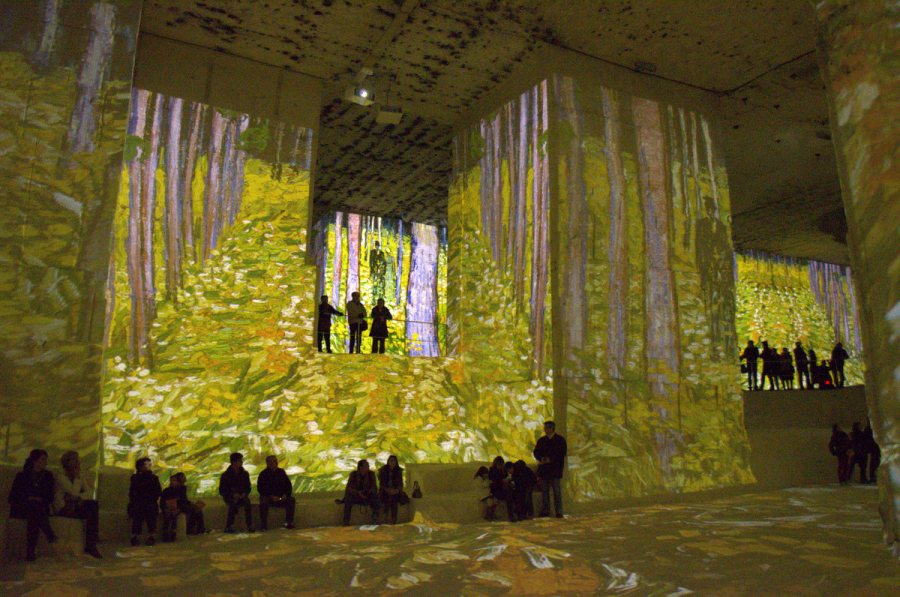



There has
been a show “Gauguin - Van Gogh, painters of colour”,
created by Gianfranco Iannuzzi with Renato Gatto and
Massimiliano Siccardi.
The aim of this show is to show the
links between
Paul
Gauguin and Vincent Van Gogh
and to analyse their very different ways of using
colour. The show touches on their two careers, which had a number of
similarities:
both started out painting landscapes in northern Europe (Brittany
for Gauguin and the Netherlands for Van Gogh) before returning to the South of
France, later reaching an explosion of
colour inspired by the Pacific islands
for Gauguin and northern France for Van Gogh. The seven sequences of this show
transport visitors in music to the colourful world of these two painters
and
submerge them in a world of images, where paintings come to life before their
very eyes. Between each show, visitors can enjoy a five minute show called “Metamorphoses”.
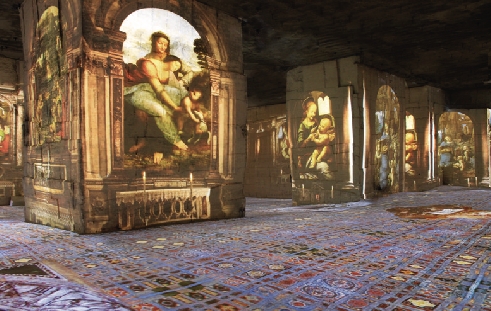
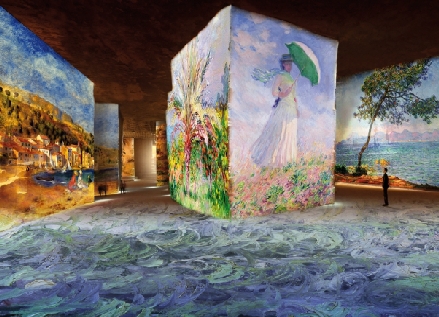
It
takes us on a journey into elements and matter. This screening
transports you inside the Carrières, to the heart of the mineral
world; the sequences all link together to explain different
elements: earthquake, volcanic eruption, lava flow, ash, clouds,
thunderstorms, lightning, heavy rain, sea, waterfalls, tropical
forest, flowering plants, right through to stars and outer
space,
echoing the “Gauguin - Van Gogh,
the colour painters” show. Truly unique shows In the heart of
Alpilles, the monumental “Carrières de Lumières” host
extraordinary multimedia
shows which are unique in the world.
Spectators are
totally immersed in the image projected onto all the surfaces of the rock. The
ground is completely covered, too, and becomes a vast carpet of images.
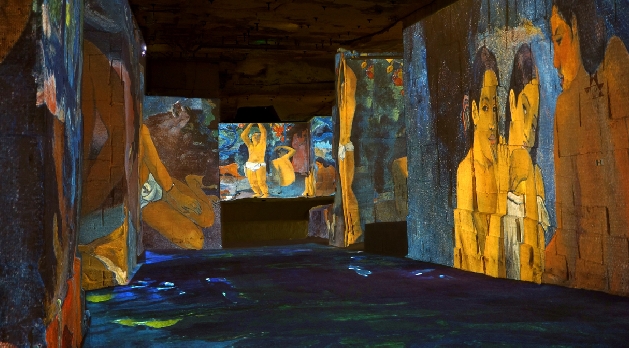
Above:
Paul Gauguin and below
Vincent van Gogh with his
lost painting a few
years ago discovered: Montmajour abbey.
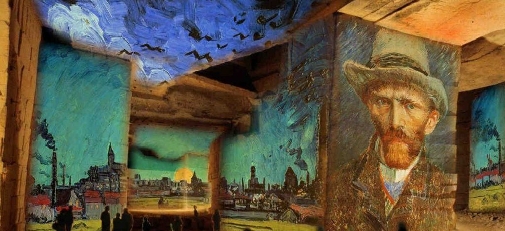

The Carrières de Lumières is the setting
for masterpieces created by
Leonardo da Vinci, Michelangelo, and Raphael
between the late 15th century and early 16th century in
Florence, Milan and Rome.
Set in motion by means of high-performance technology that
tailors music and images to completely permeate the enclosure, the digitised
works of art
come alive on the floor and on the quarry walls which are
transformed into gigantic picture rails. For thirty minutes or so, the spectator
is invited to roam freely around the quarry
site (7000 m2) for a dynamic visit.
Guided throughout the show by excerpts of carefully selected music, he will
rediscover such remarkable works as the Annunciation, the Virgin
and
Child with St. Anne, the
Mona Lisa and The Last Supper
by Leonardo da Vinci (1442-1519); The Young Woman with Unicorn, The School
of Athens and the Triumph of Galatea
by Raphael (1483-1520); the ceiling
vault of the Sistine Chapel and The Last Judgment by Michelangelo. Below: Leonardo Davinci in 2015.
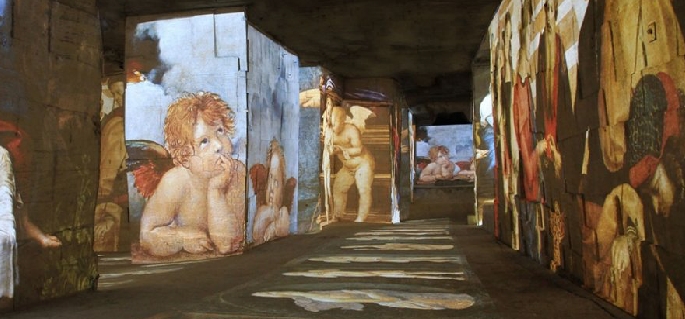
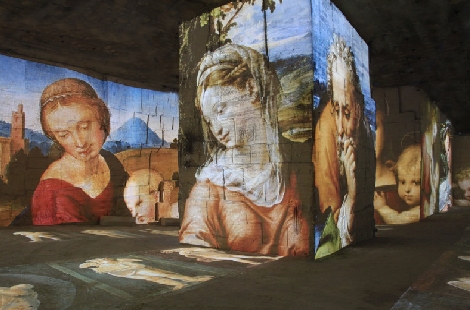
The spectacle offers a
moving face to face with portraits that display their perfection in fine detail
on the quarry walls, whereas the
frescoes impress as much by their monumental
dimensions as by the extraordinary gallery of characters
which populates them.
During the show, certain details of the frescoes that normally decorate the
walls and vaults of churches,
villas and Italian palaces, are specially
highlighted in the Quarries thanks to
digital technology, offering the visitor a
unique opportunity to see them as never before.
The Entrance
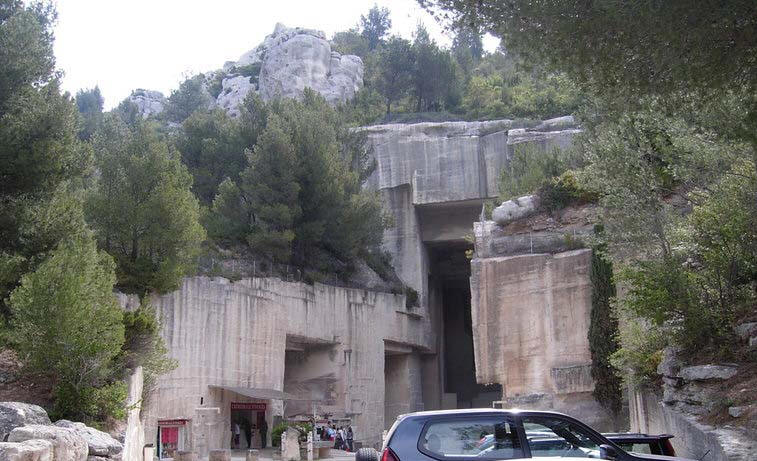
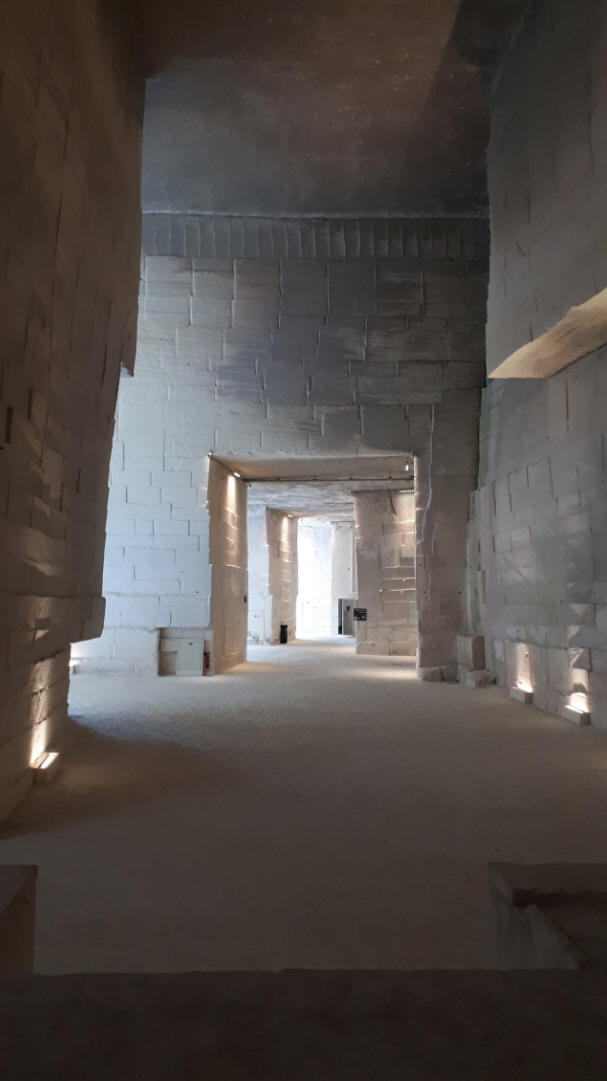
From 6th March 2015
to 3rd January 2016, the Carrières de Lumières (Quarries of Light) at Les
Baux-de- Provence continue their artistic adventure with a unique multimedia
show:
Michelangelo, Leonardo da Vinci, Raphael. Giants of the Renaissance.
Produced by Culturespaces and directed by Gianfranco Iannuzzi, Renato Gatto and
Massimiliano Siccardi,
this new spectacle offers a unique opportunity to view
the greatest masterpieces of the Italian Renaissance from a new perspective,
scanned and projected onto the monumental quarry surfaces.
Accompanied by music, the visitor is led to an encounter with the
greatest masters of Italian painting
for an extraordinary experience, capable of stimulating emotions as strong as
they are surprising.
A view of Les
Baux


In the cozy streets of Les Baux.
On top of the castle looking over the Alpilles.
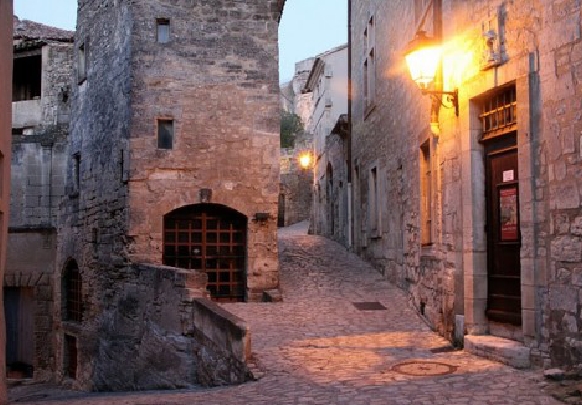
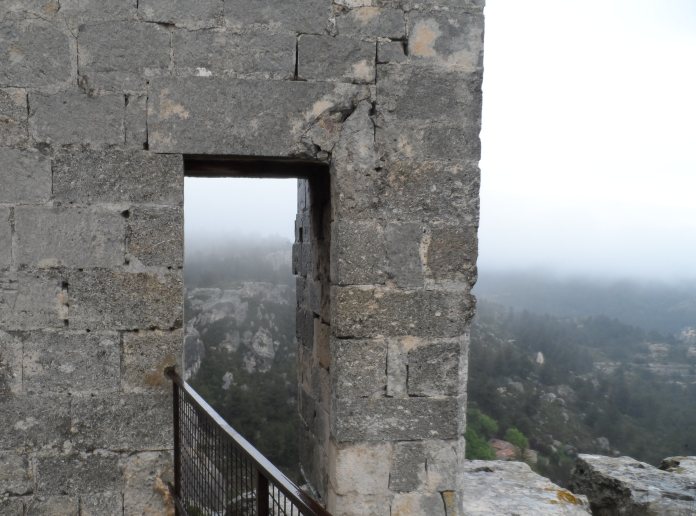
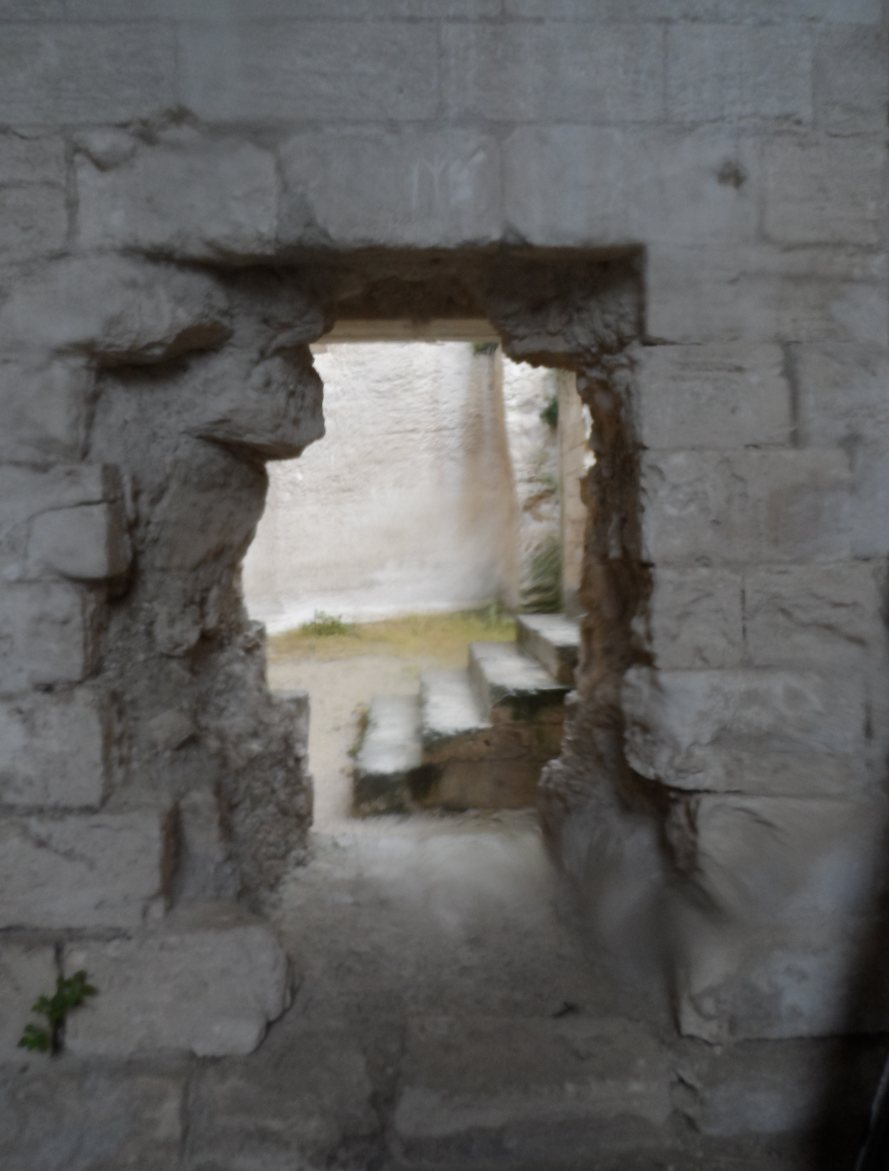
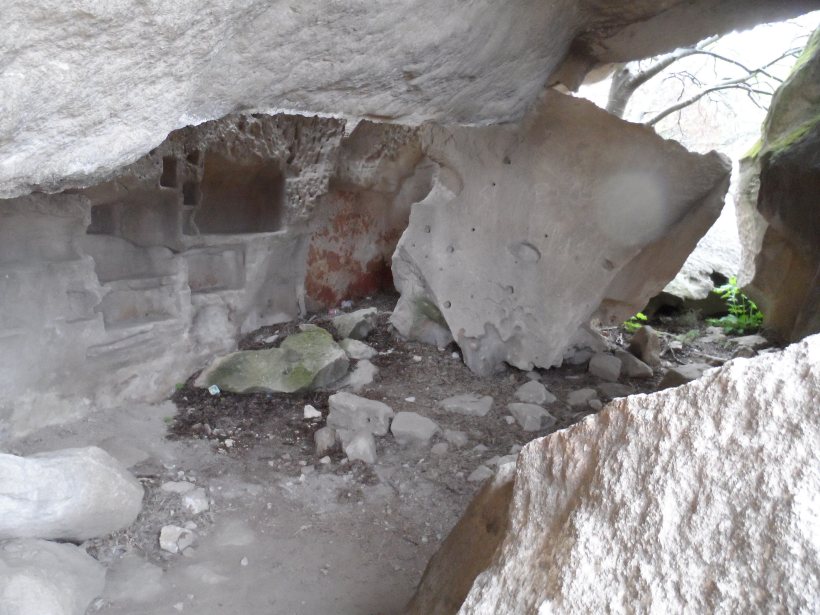
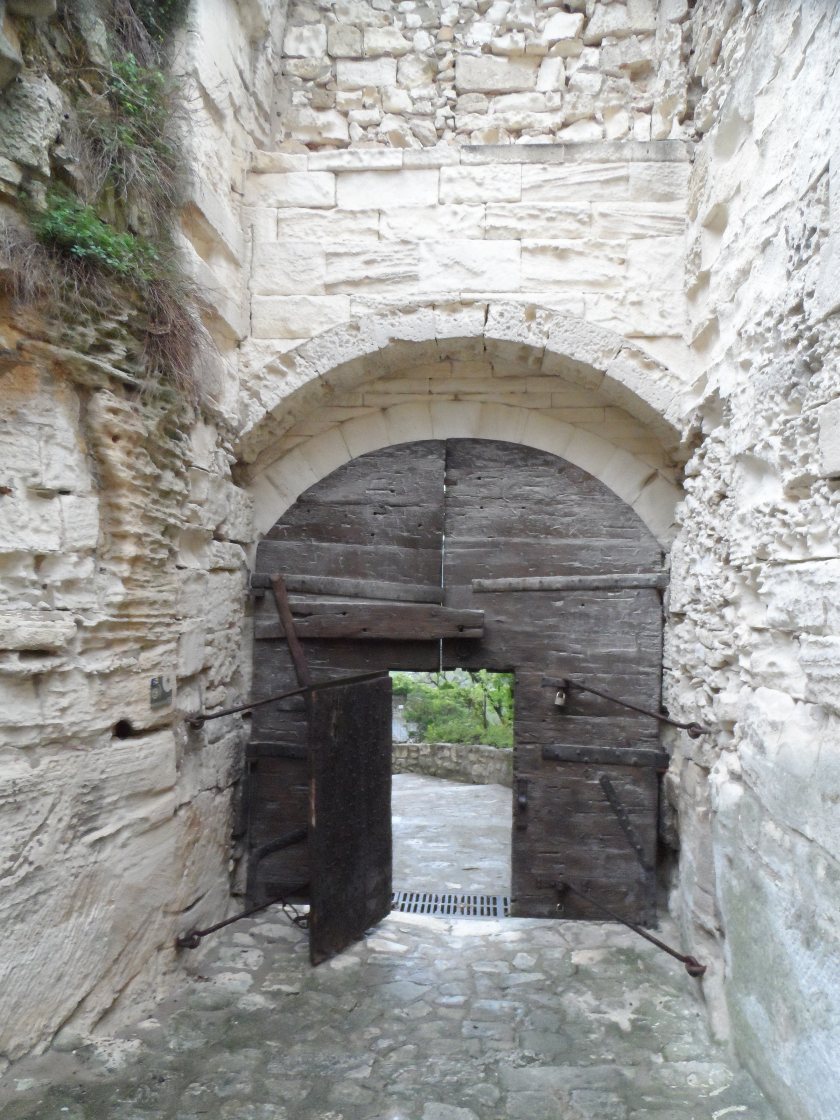
The shops
There
are shops with local ancient weaponery, all kinds of herbs, souvenirs and
restaurants etc. These certain shops you see in many ancient toeristic villages.
Lavender products
Soaps in all types of scents 2019 this knight is the same as 'Johan the
Red Knight' (comic in Belgium and Holland)
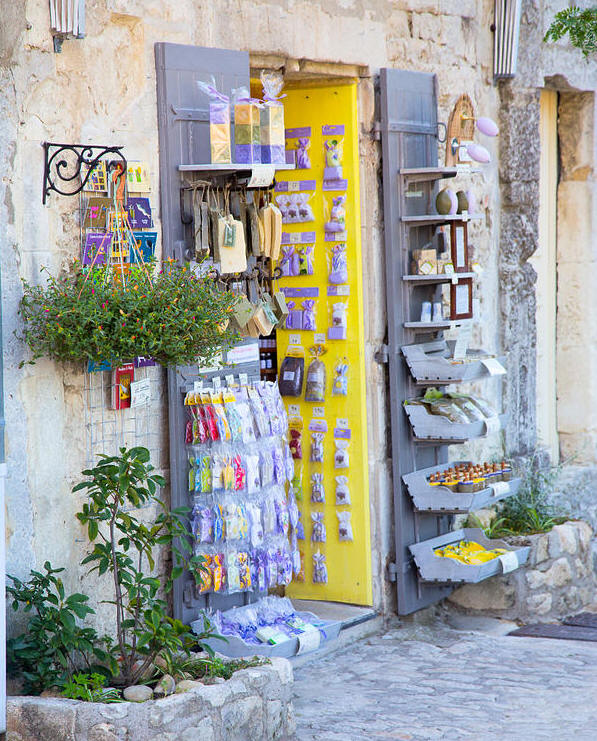
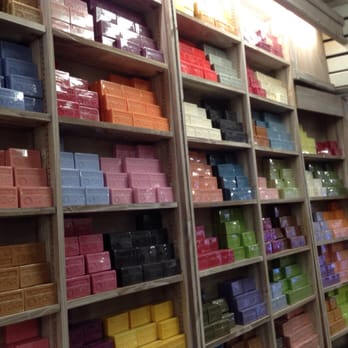
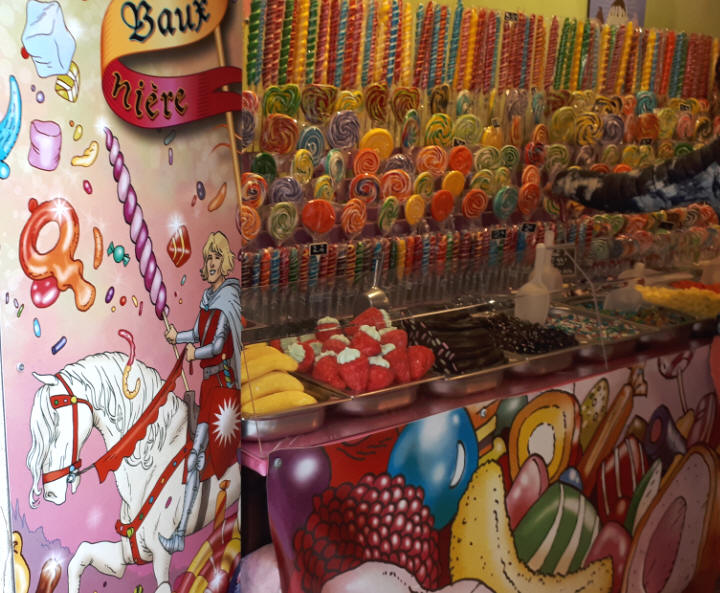
The giant candy
shop, the weapon replica shops and soap shop.
They have several branches
in medieval tourist villages such as Carcassonne. These chips always tast better! ;)
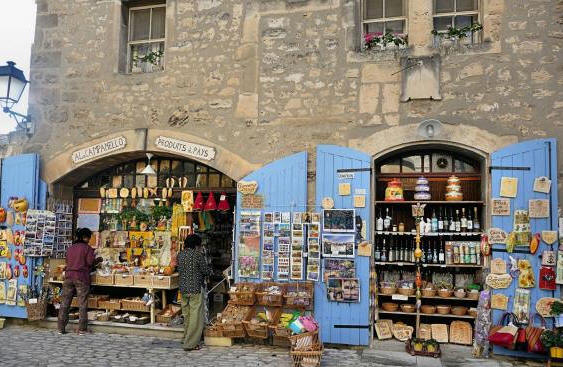
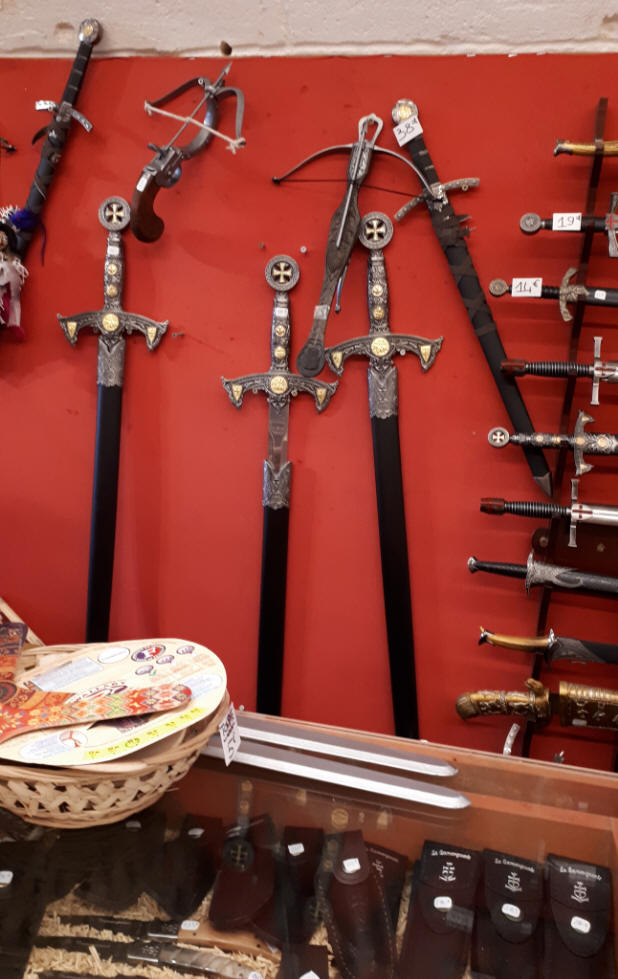
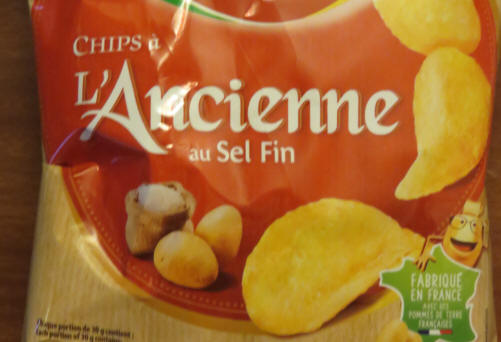
A chapel under the castle Cave dwellings
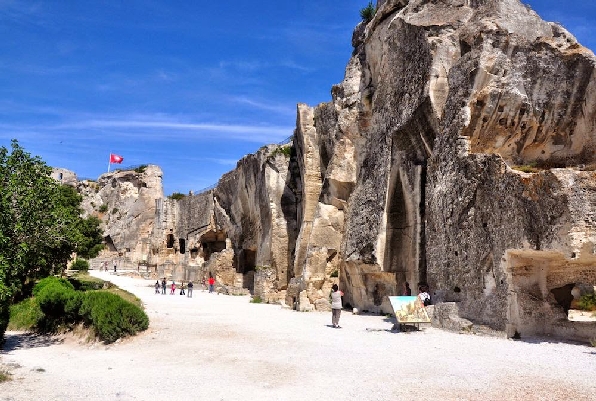
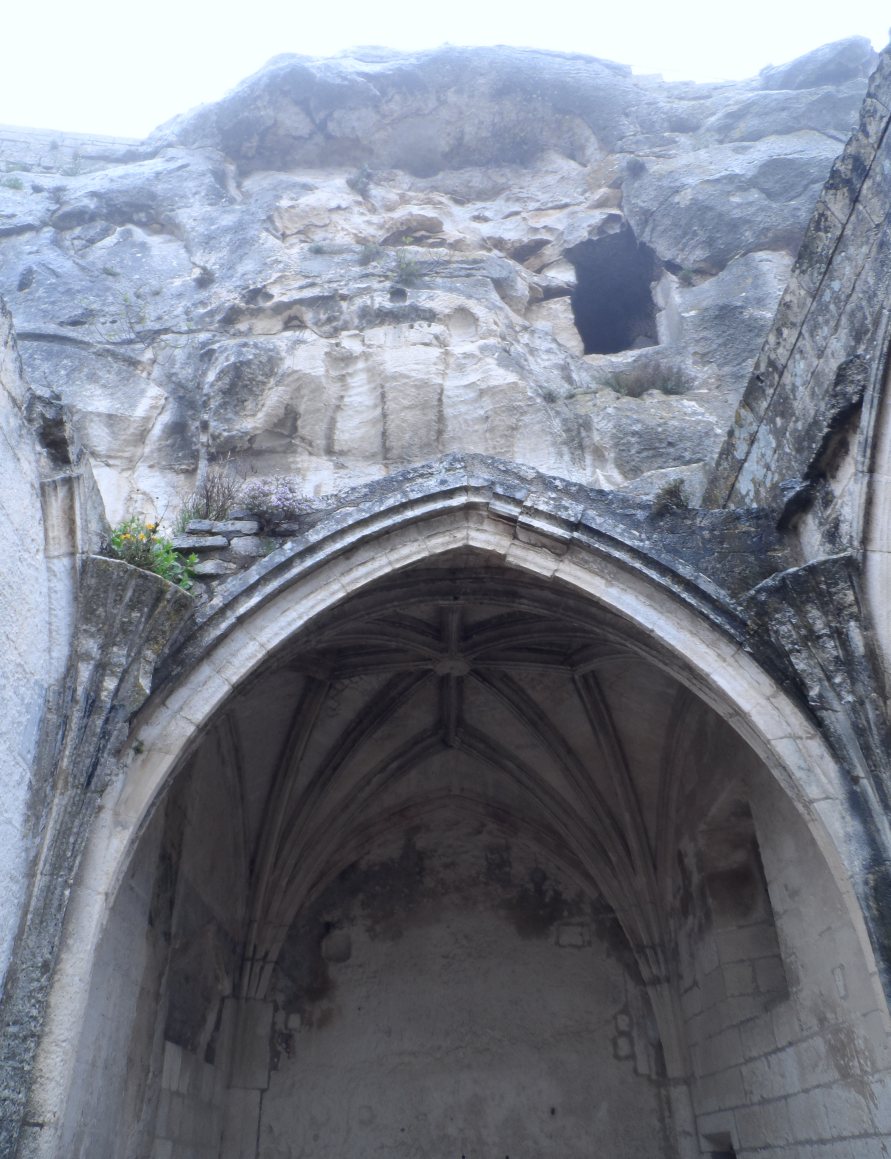
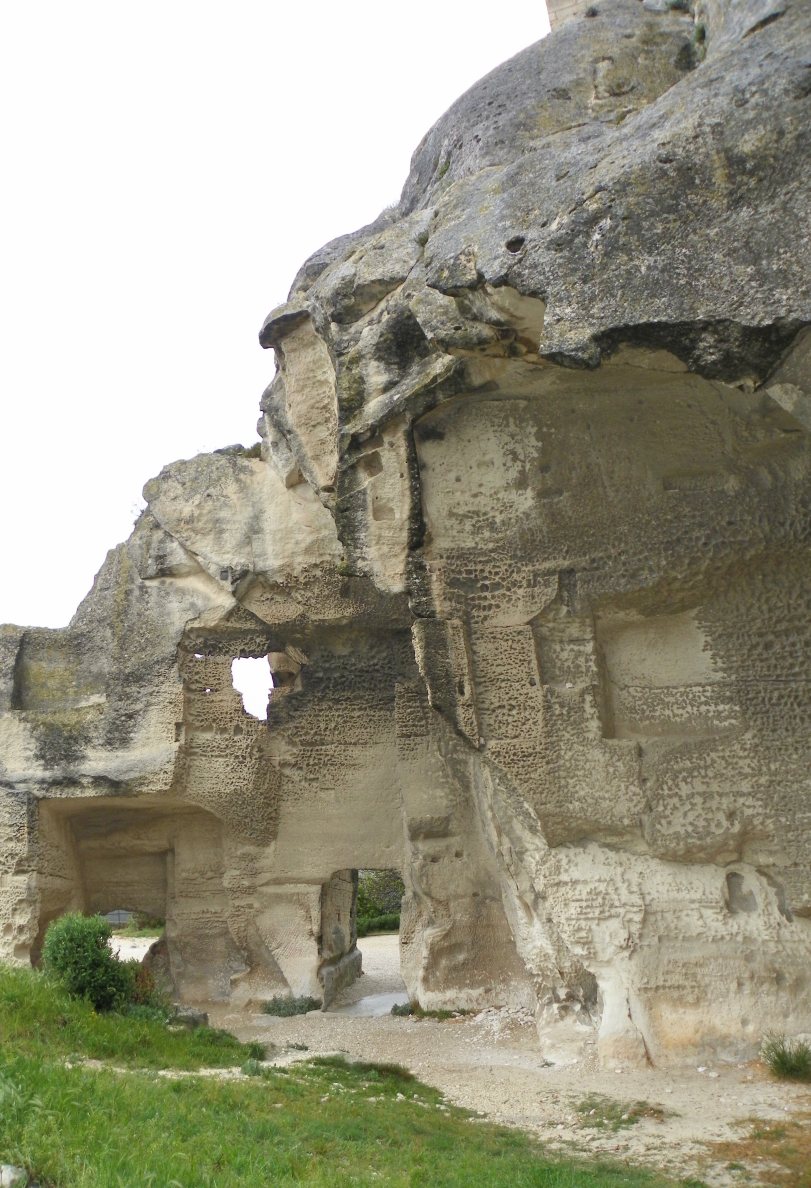
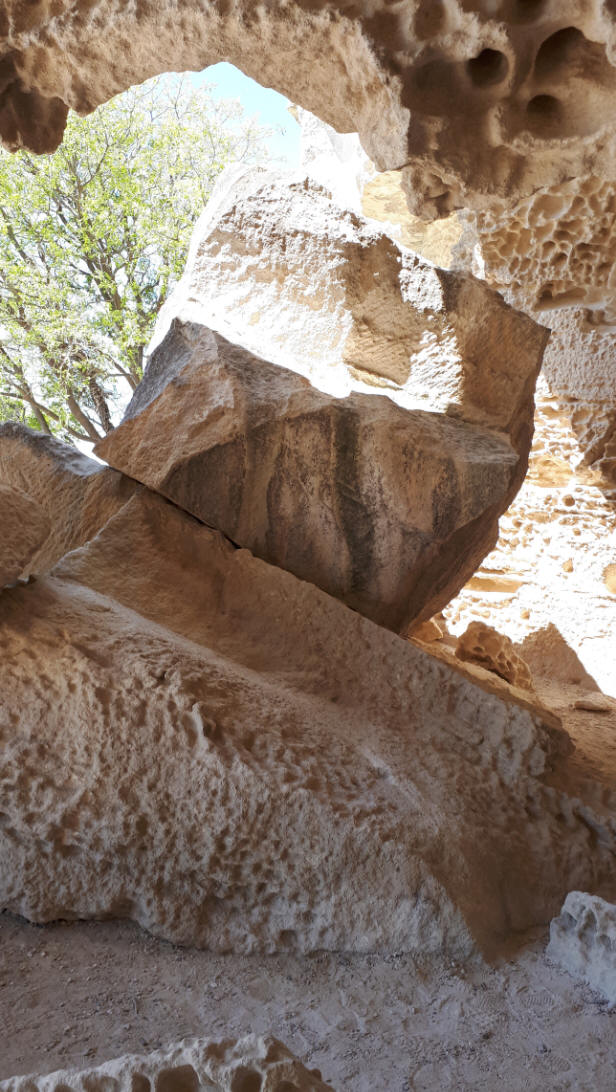
Some shots
in the moonlight.
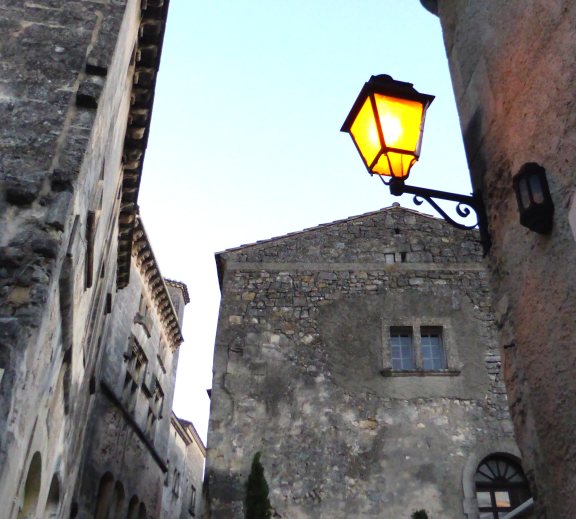
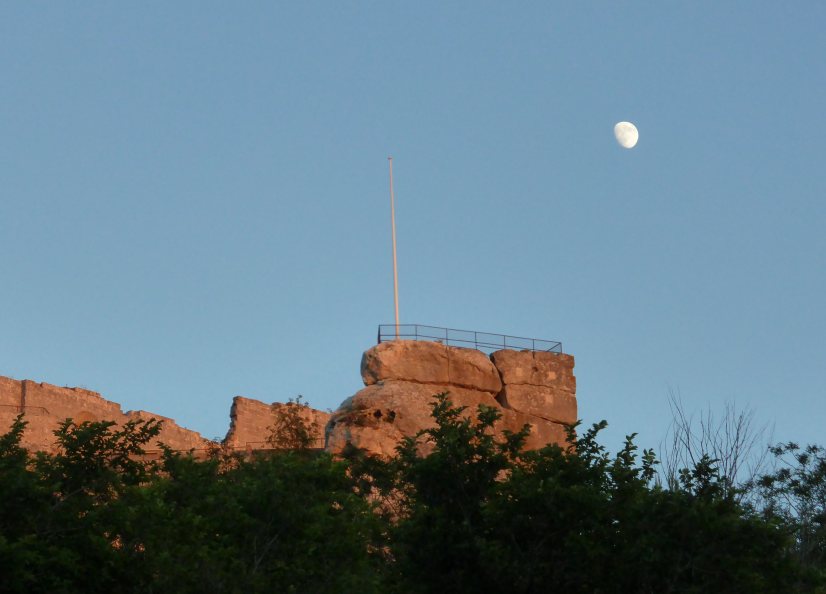

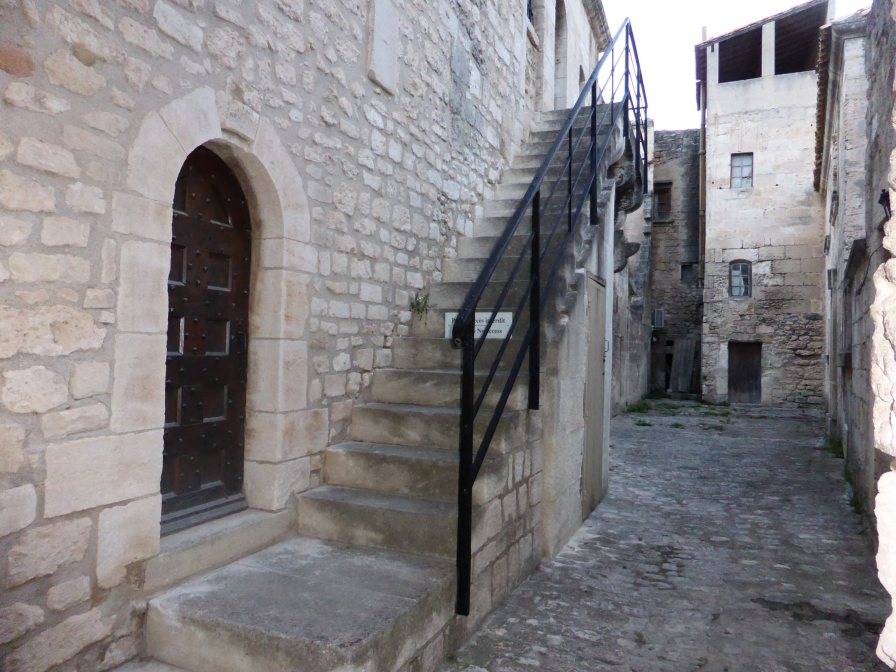
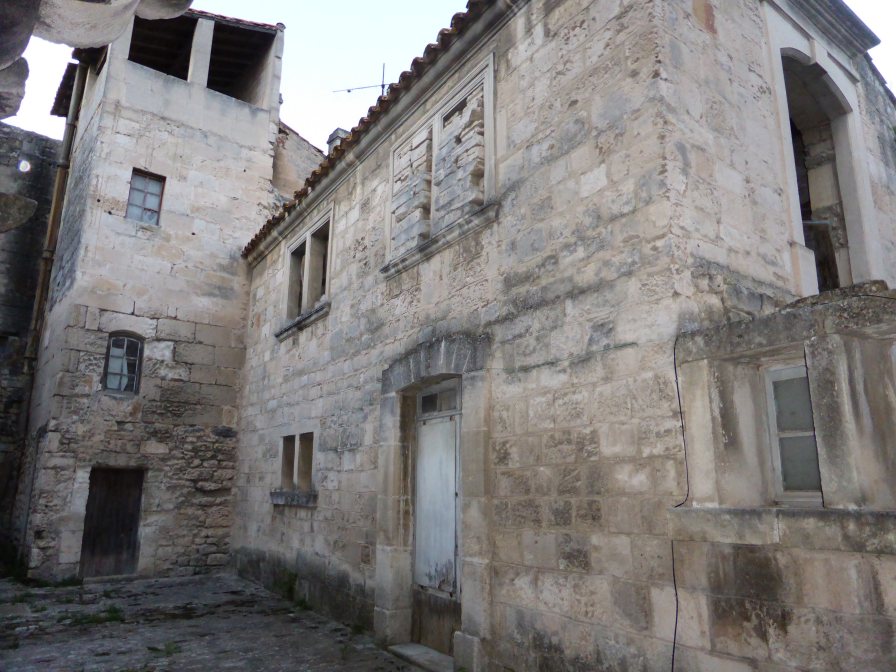
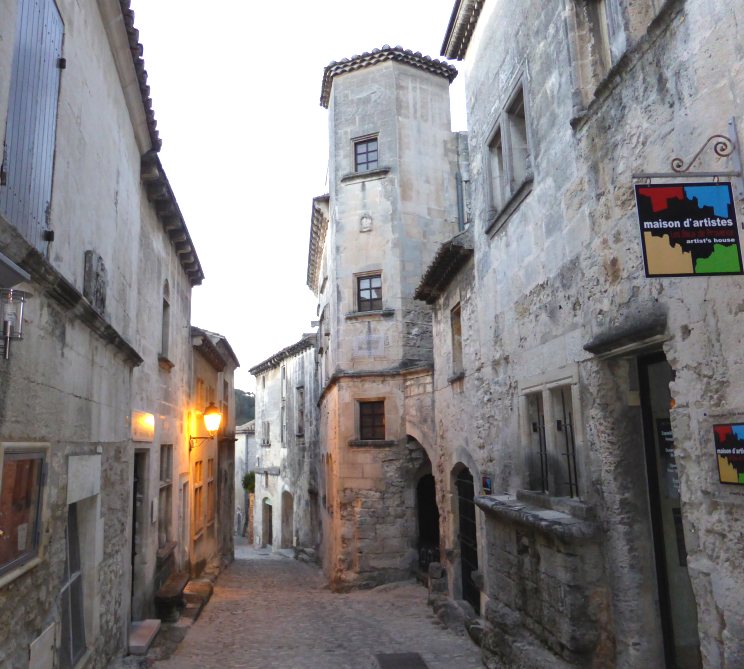
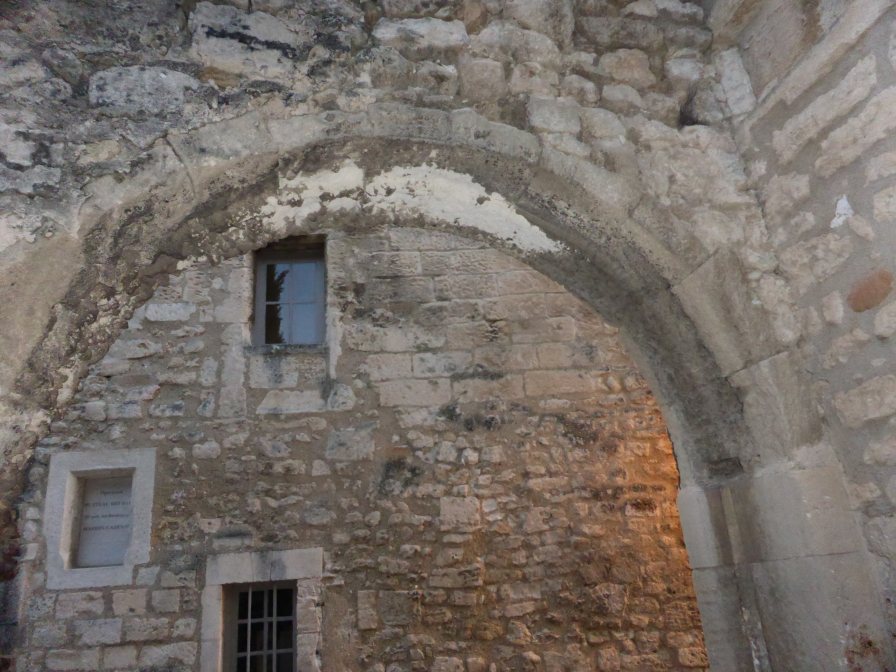
Three photos of Les Baux, 2018 made by fan C. Petit.
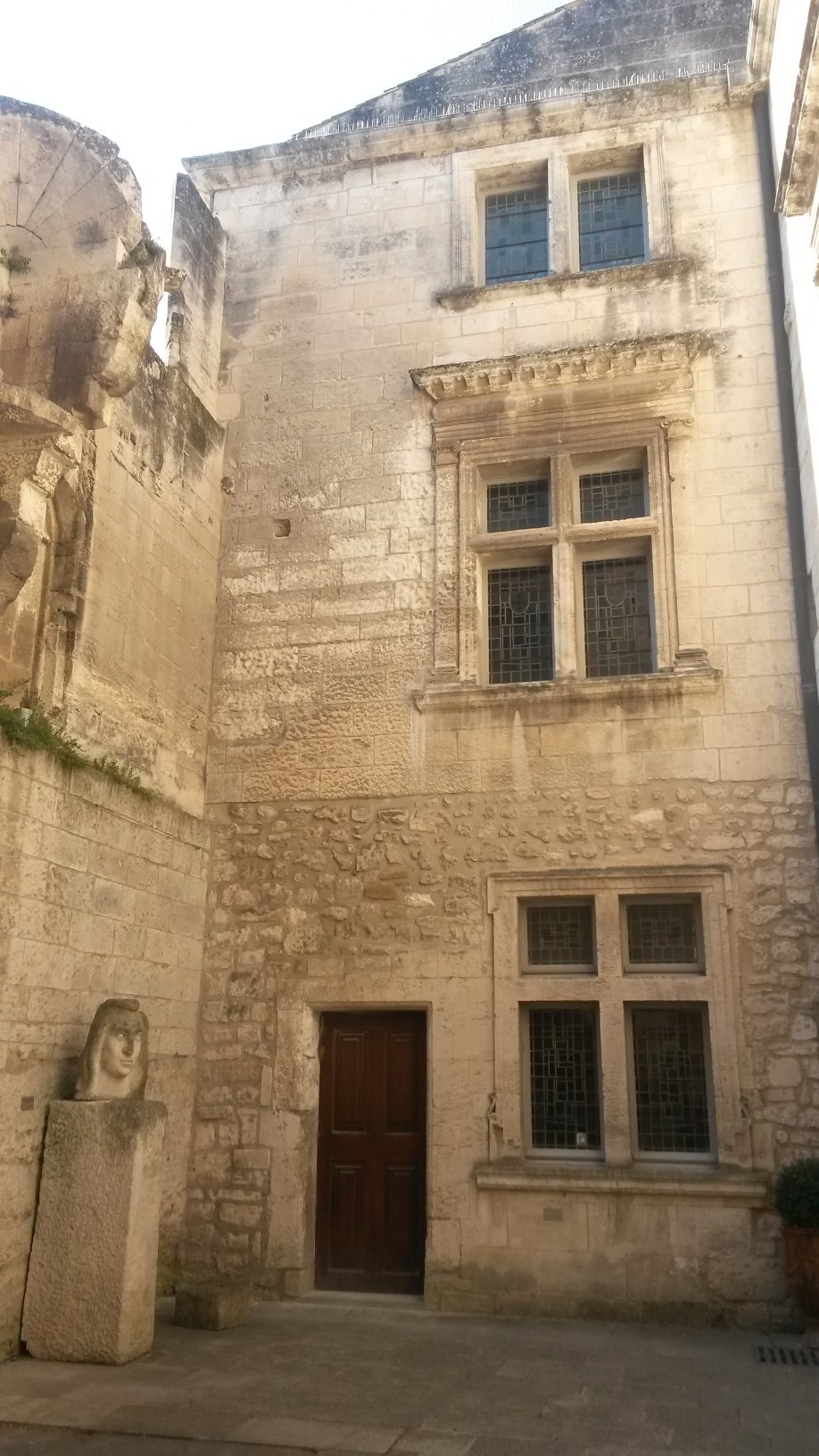
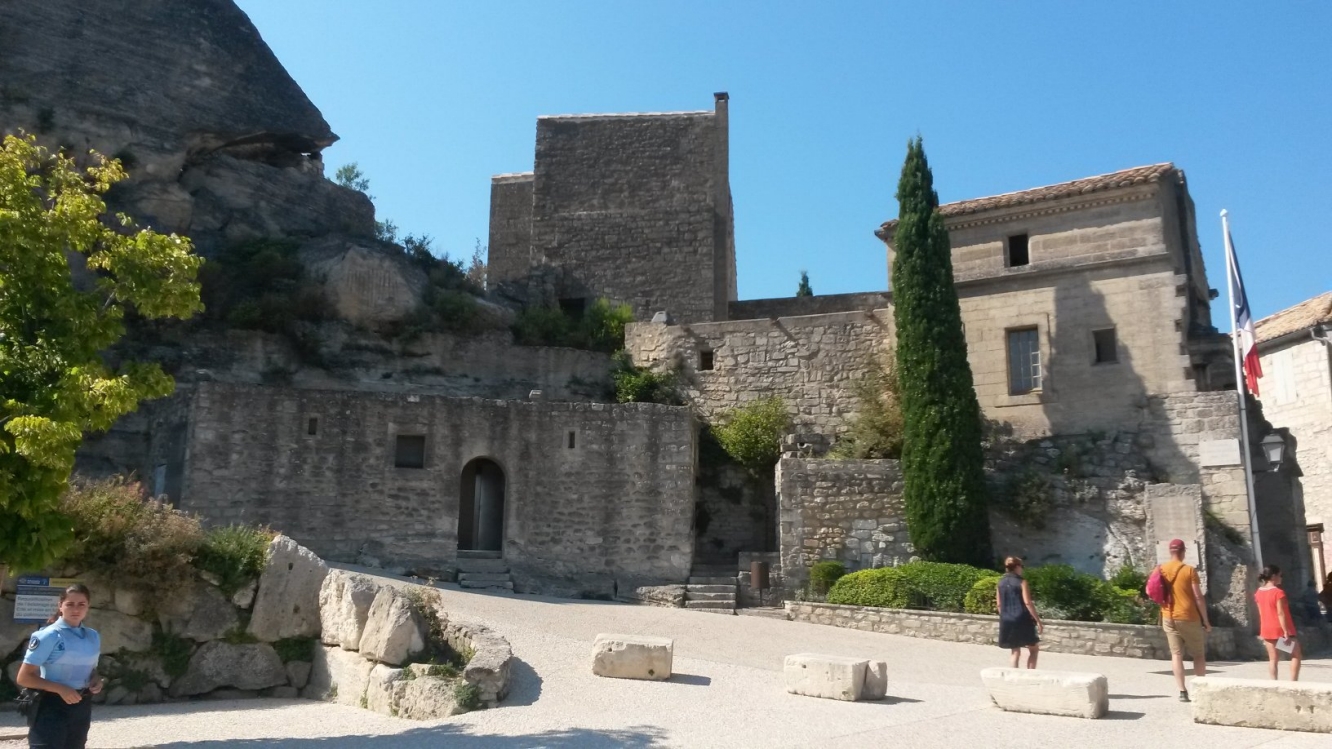
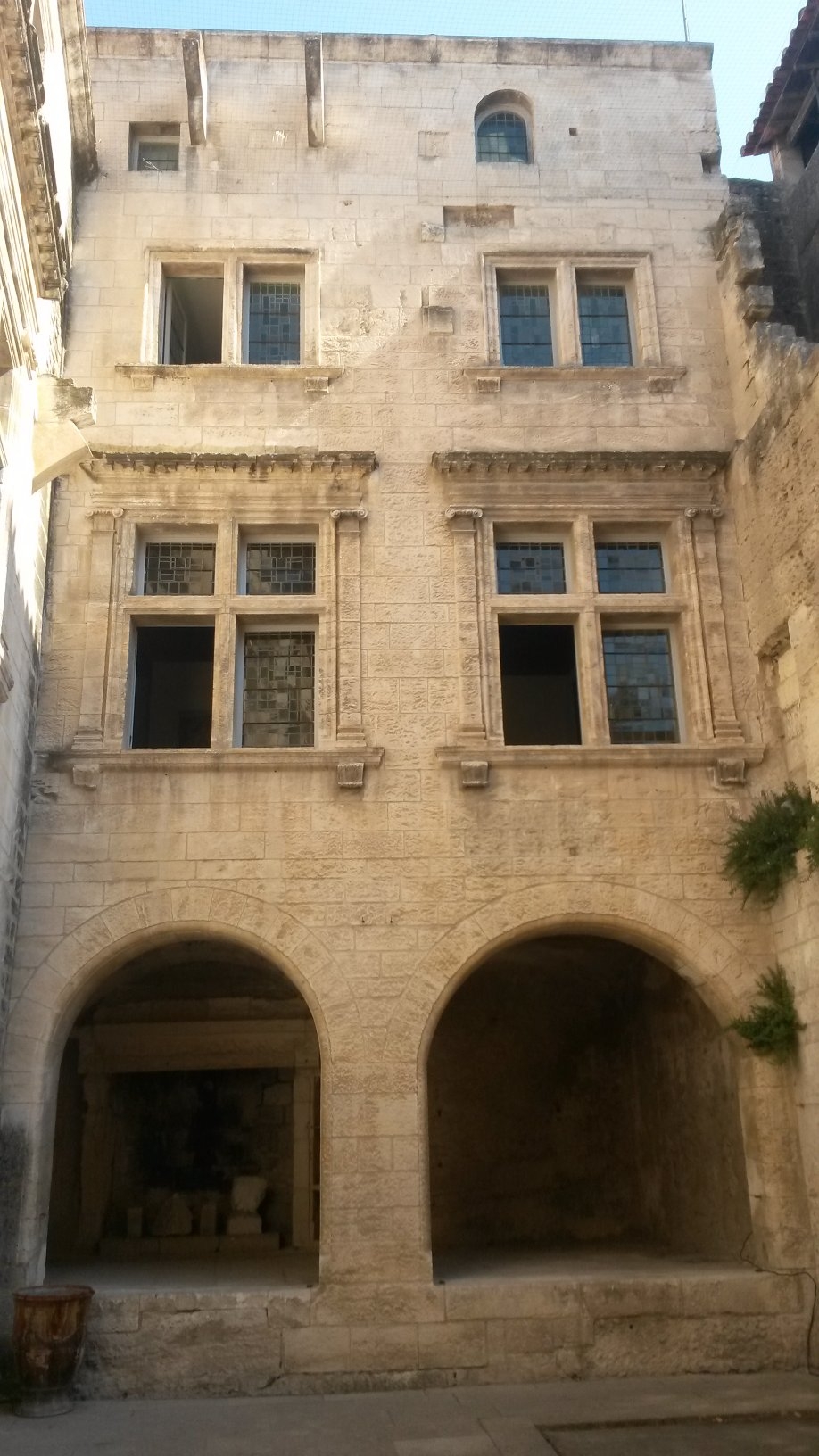
Flora
The flora in the commune is mainly
xerophytic and
Mediterranean
Phytochorion. The
botanist Bernard Girerd counted 800 plant species in 1992.
Apart from
the summer snowflake (Leucojum
aestivum) and Hélianthème (Helianthemum
lavandulaefolium), are found at the bottom of the valleys.
Fauna
Many animal species nest in the Alpilles
and can be seen in the commune. The most famous is the
Bonelli's eagle, a
protected species, as well as the
Egyptian vulture, the
lesser kestrel
and the
Eurasian eagle-owl. The arid rocks are home to a species of
lizard emblematic of the
Alpilles: the
ocellated lizard which is
also considered threatened and protected.
Birds
Some people do come to the castle just to see the Alpine
Accentors. There can be seen more birds like the wallcreeper and the
European
Eagle Owl can be spotted in this surroundings. Sometimes they even come from
other countries. There are a lot more birds to see.
Alpine Accetor
The Wallcreeper European Eagle Owl
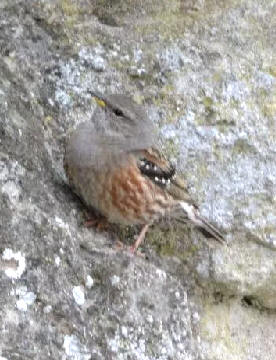
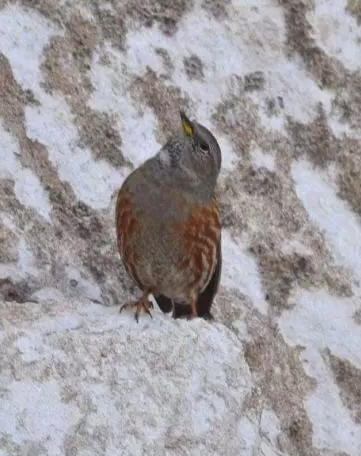
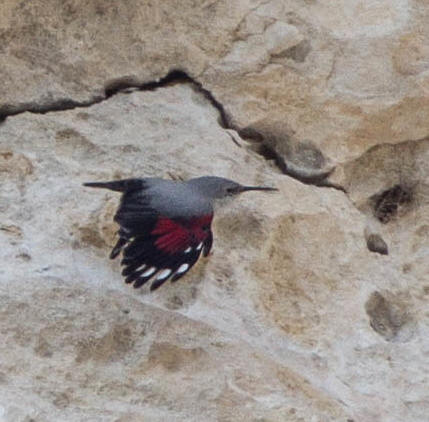


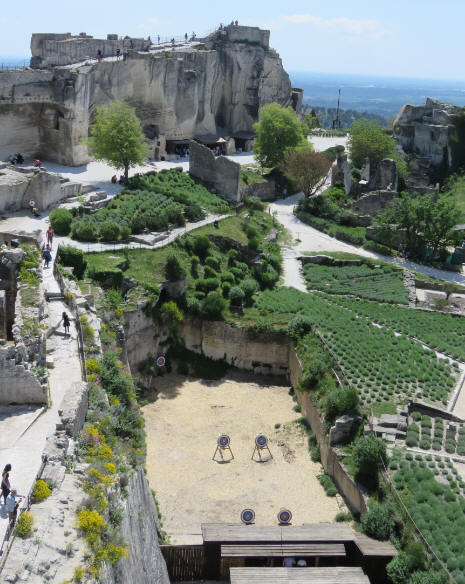
During a heavy
mistral and thunderstorm 2012 We just survived ;)
2019, much better on a sunny day!
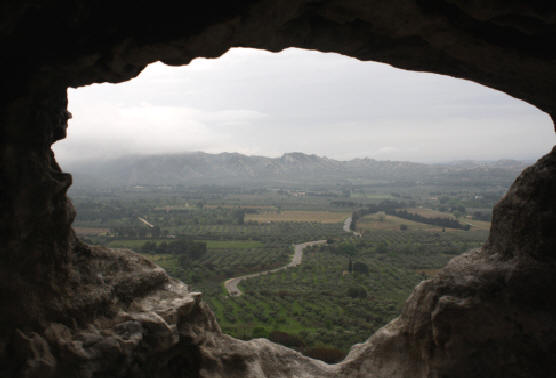
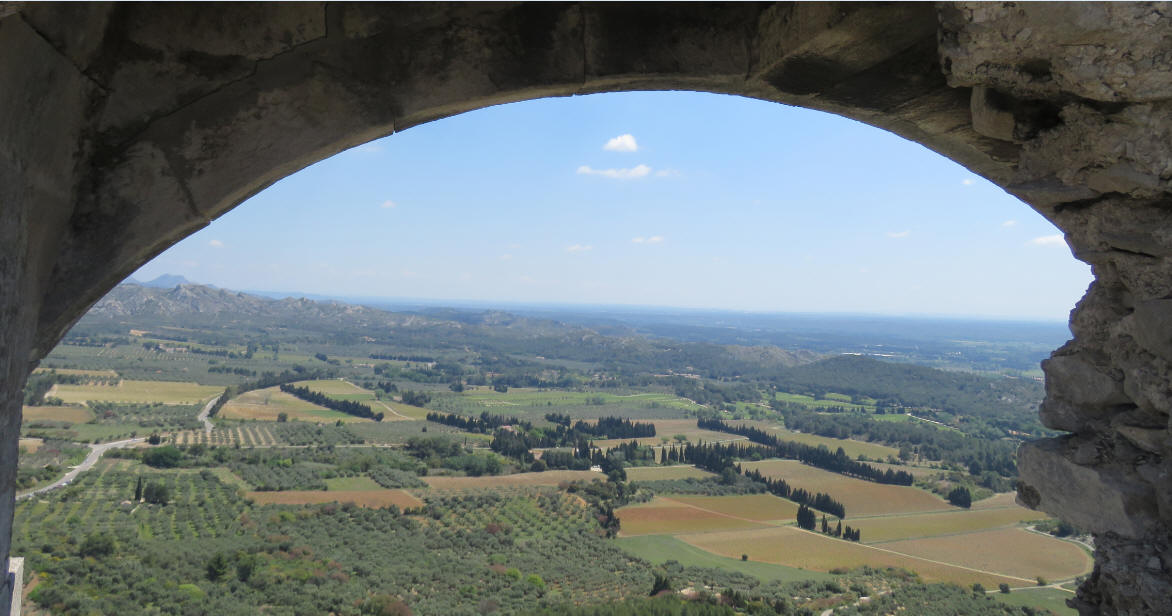
One morning we were alone in Les Baux. Rain didn't bother us. Through the fog and rain, we saw and heard no thunderstorms approaching,
until it was too late and there was such a bang that the whole castle really shook and creaked. But I'd rather be there when the weather is nice ;)
Herbes and craftsmanship at Les
Baux
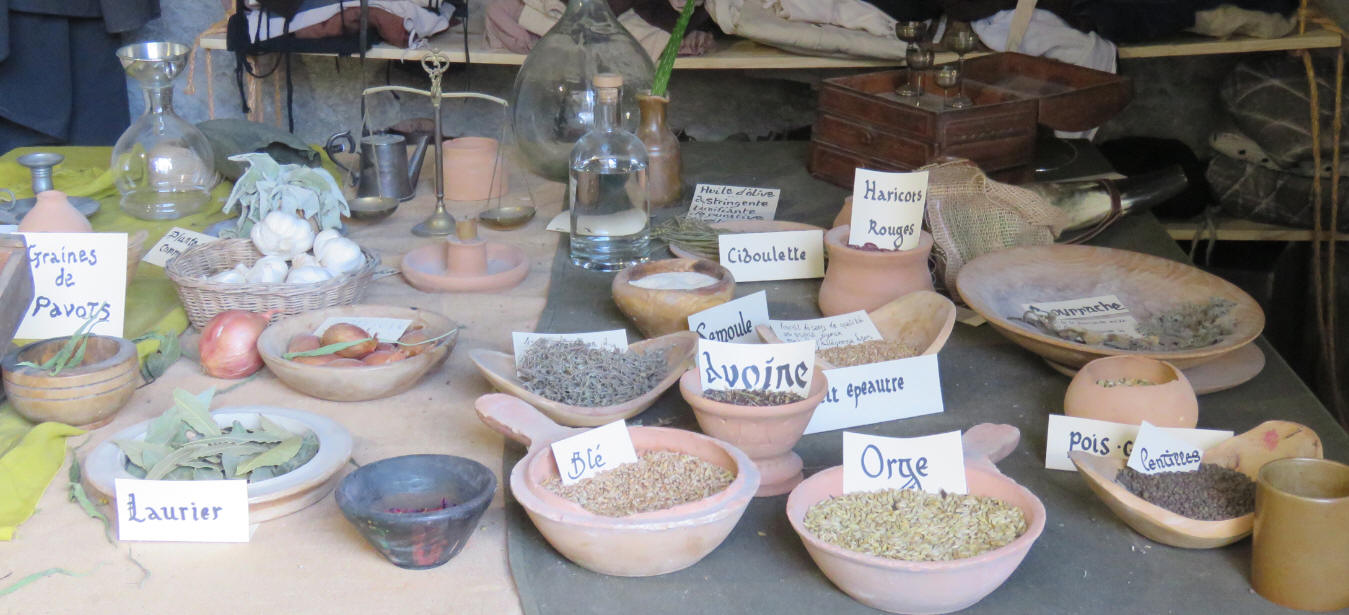
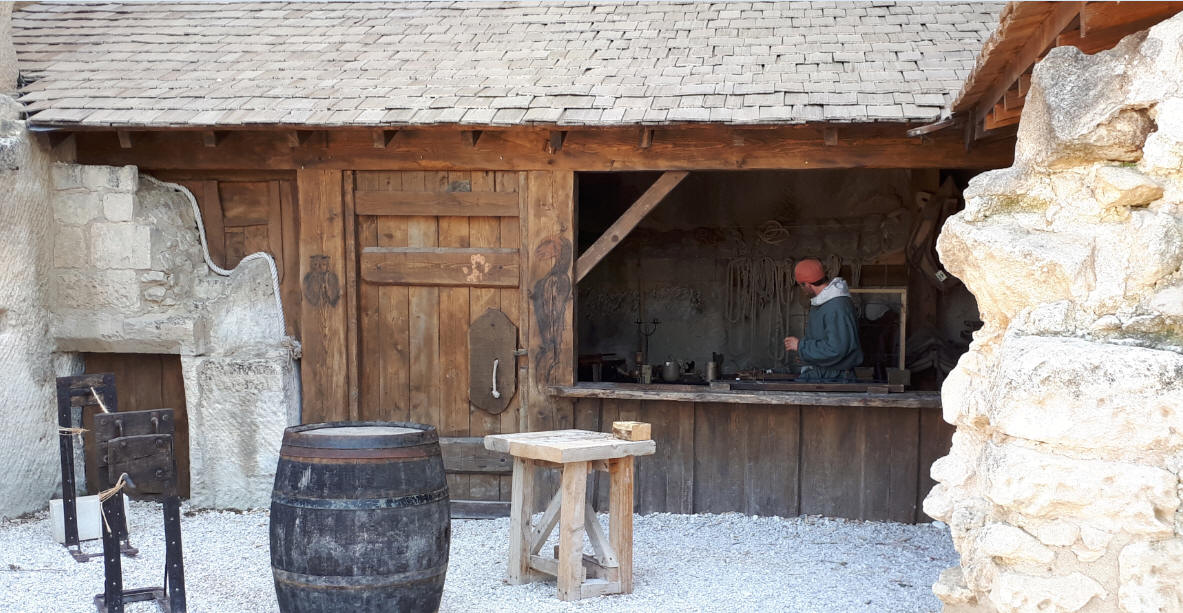
Forging
and ancient leather processing in
Les Baux
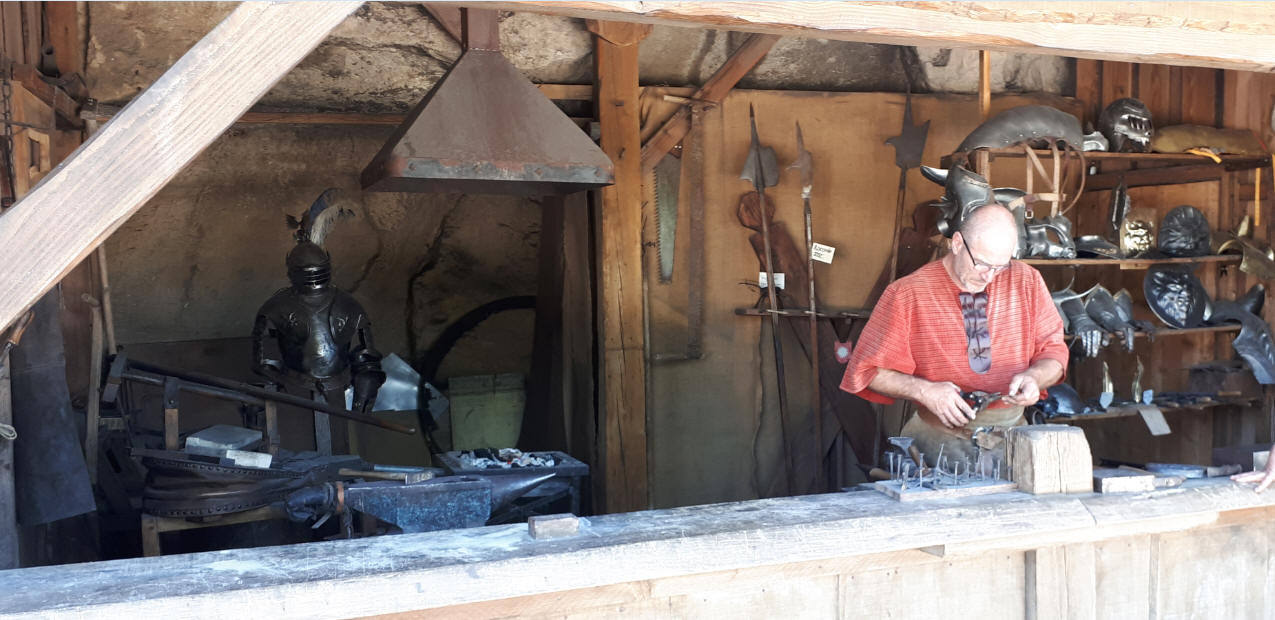
Les Baux was built directly into the rock


The ruins of the Château
des Baux can be visited by the public. Around the castle are various replicas of
'machines', which were used in the Middle Ages for the siege of a castle.
There
is, among other things, the greatest joy in France (16 meters high). There are
regular demonstrations where you can see how these weapons were used. Les Médiévales des Baux
are from April 4 to September 27, during the weekends,
during school holidays and on public holidays you can experience what life in
the castle was like during the Middle Ages.
There are also various demonstrations with the weapons from that time and you can try a few yourself.
In the surroundings of Les Baux, remains have been found of human habitation
dating back to 6,000 BC. In quarries around Les Baux, limestone was extracted
from the beginning of the era.
The castle, built by the lords of Baux in the 11th to 13th centuries on a bare
limestone rock of 900 meters long and 200 meters wide. Eighty villages were
checked from here. The Lords of Baux later
also carried other titles, such as
Prince of Orange and Viscount of Marseille. The castle Les Baux had a heyday
until the last descendant of the family of the lords of Baux died in the 15th
century.
May 2019
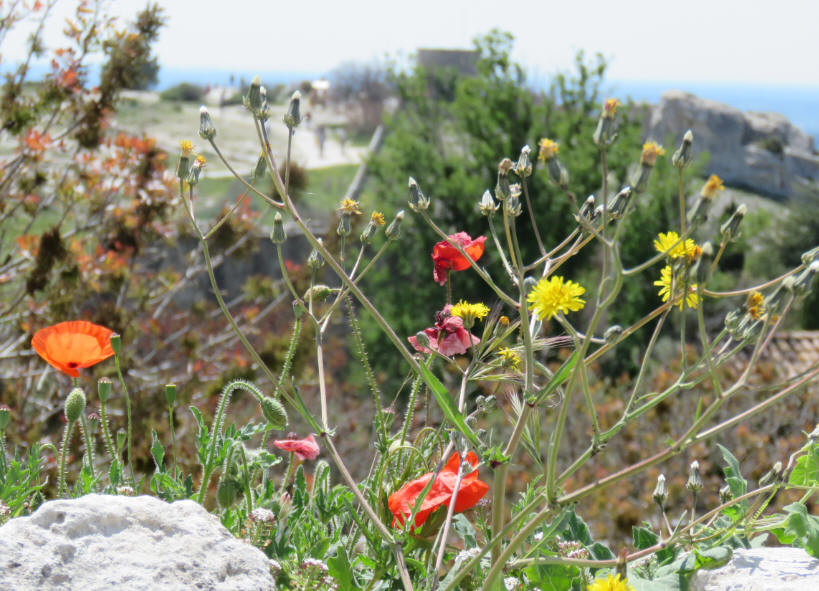
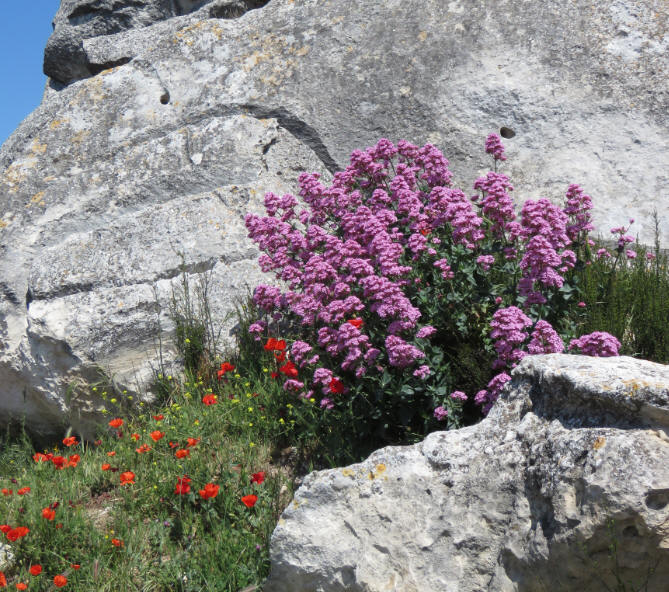
Les Baux then comes under the rule of the Manville family, which is attached to
the crown of France. The village became a center of Protestantism and revolted
against
the French king. In 1632, Cardinal Richelieu ordered the demolition of
the castle, leaving only a ruin.
From 1642, Les Baux becomes the property of the princes of Monaco.
The Prince of
Monaco has since then, among many others, the title Marquis of Les Baux. Restored
houses with shops and boutiques along the rough-paved streets
(Rues and Calades). The stores sell clothing, crafts, Provencal specialties, souvenirs and gifts.
Extra photos of the farmhouse
My fingers are itching to clean and restore the
place. I'm sure this wasn't a small paradise while crossbow was filming here
but the walls yellow stone is so dirty and the roofs
so bad and that affected
the woodconstructions more and more. I''m so sure this could be a great place
when it's renovated. I hope one day it will be a bed and breakfast for
instance
with the original elements, cleaned and with nice flowers and plants.
This place has unique elements you can't find somewhere else, the place deserves
a
restart.
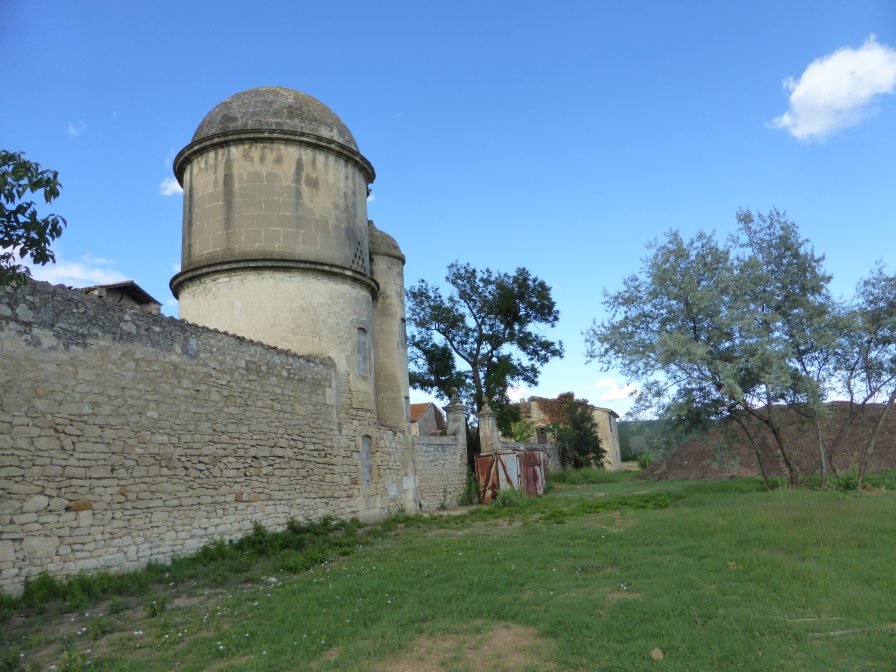

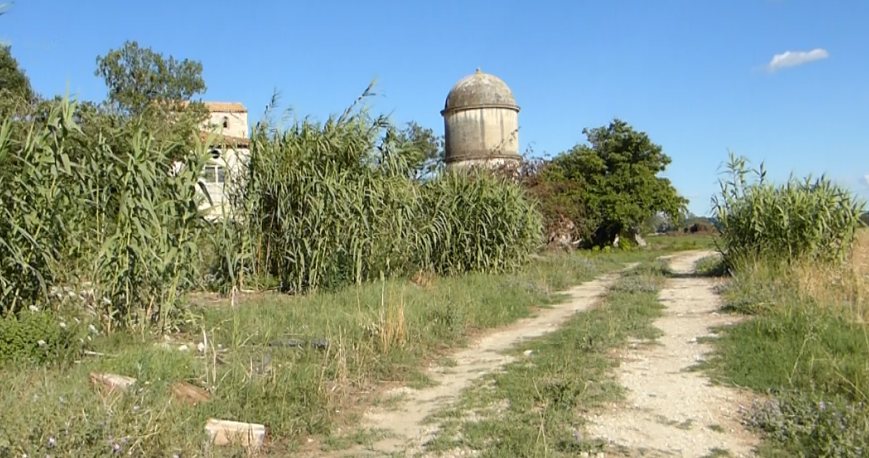
I was happy to discover this building. Will Lyman told
us the road. If he hadn't told us, we never found it! The road was long but finally we recognized it.
But
our
happiness turned because the state was so bad! Via Google earth I look each year
to this building but It's not getting better.. Ofcourse it's still very
recognizable.
It has a hidden beauty but also a lot of sadness hanging around. The
roofs are damaged, the wooden veranda porch is completely vanished and the
terracefloor
totally
damaged. From a distance it looks stunning, but when you are getting
closer you can see the stones are dirty and some of them are loose.
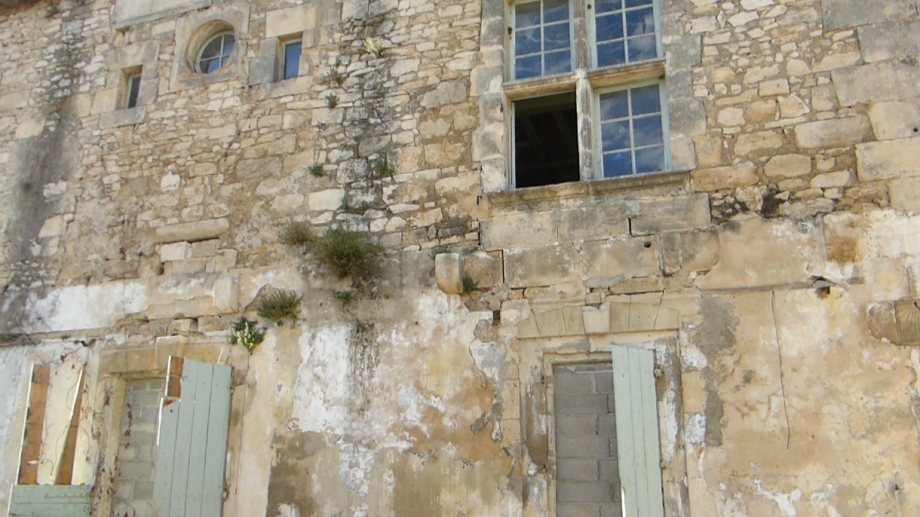

When the sun is behind the clouds for a
moment the place looks haunted. This place had no private signs, there were more people who
stopped the car and took photos.
It's a special building there isn't a second
one of it in the area, with these double towers and the beautiful two impressive porches. It's
sad to say it's lost it's beauty.
Unfortunately I don't have hystorical information about this old farmhouse. It
has a dovecote in the tower and a wall around it, I guess for protection.
A sad ruined farmhouse, could be so beautiful when cleaned
up to return the clean yellow stone color. It sure needs restoration. When the roof is leaking
like this,
the wood construction will
be damaged soon. That already happenend to many parts in this farm. I hope somebody
will turn this place into a wonderful hotel or
bed and breakfast. The location
is perfect. That happenend to many
other buildings in the area. The
porch with glazed old tiles is broken.
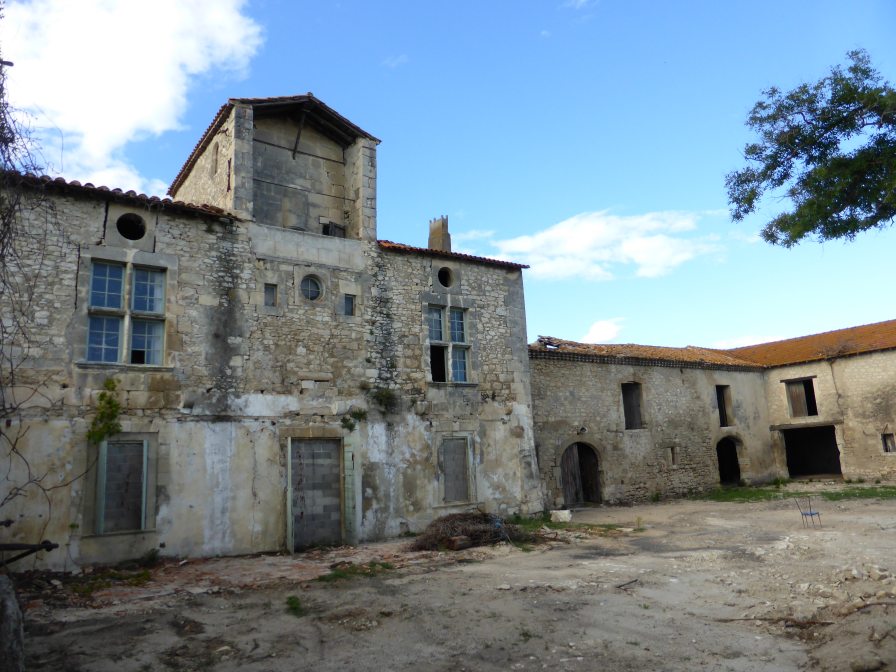
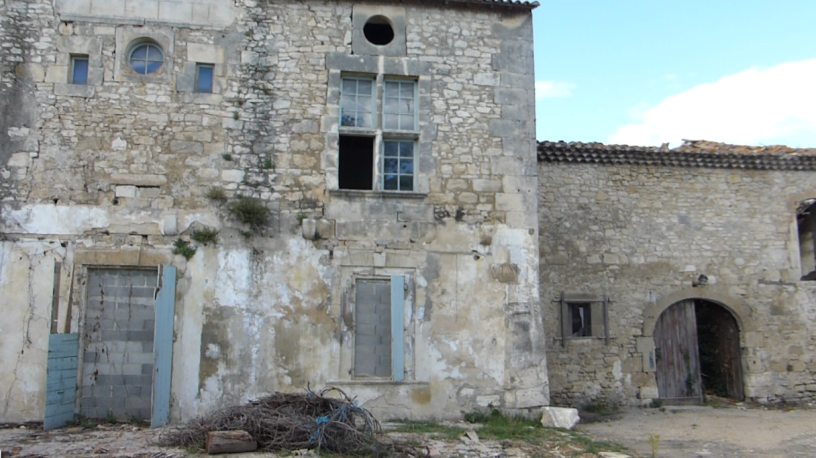
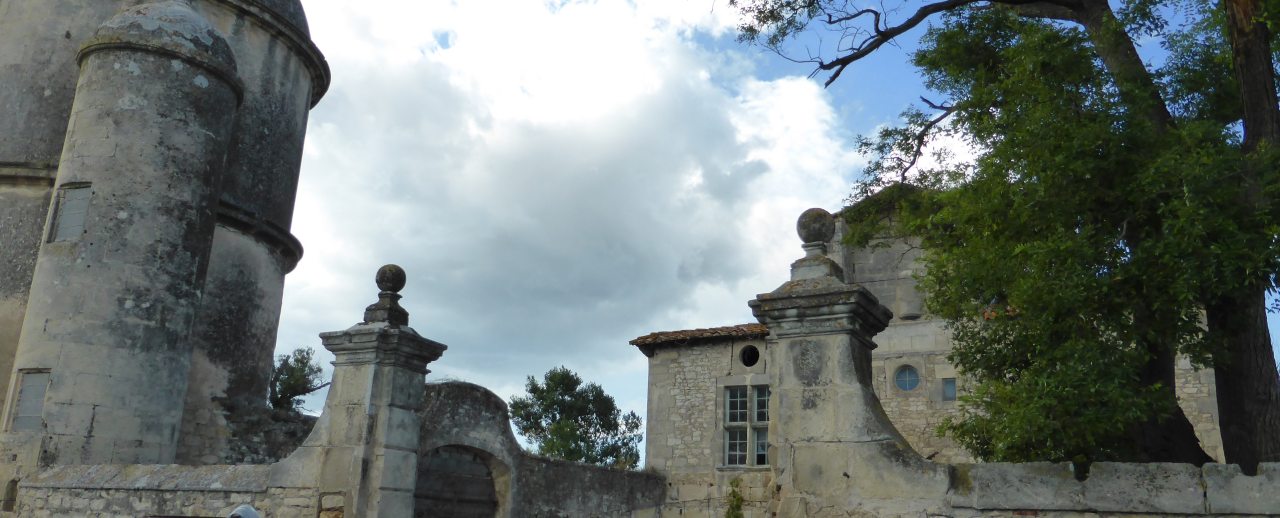
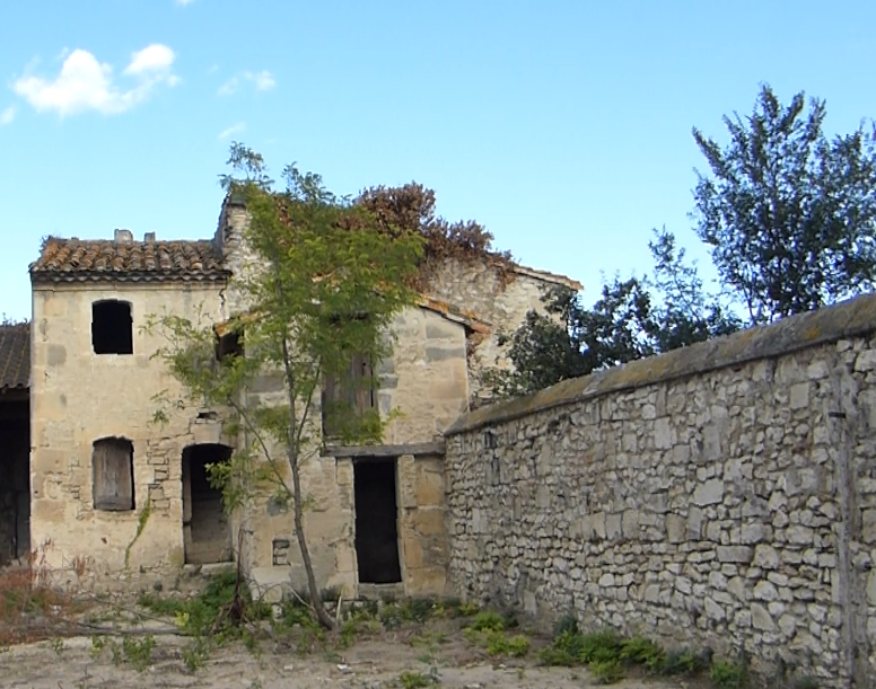
Desolated, but not totally...There is a
dish antenna. It's the question who needs this in a totally nailed mainhouse?
It's not a cozy livingroom atmosphere.
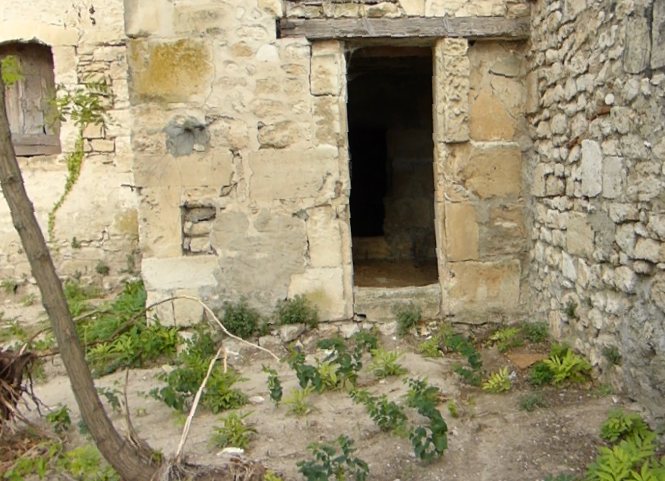

The smaller tower has a beautiful stairs. Look at the open
door. In the top of the tower are dovecotes and
a wood construction.
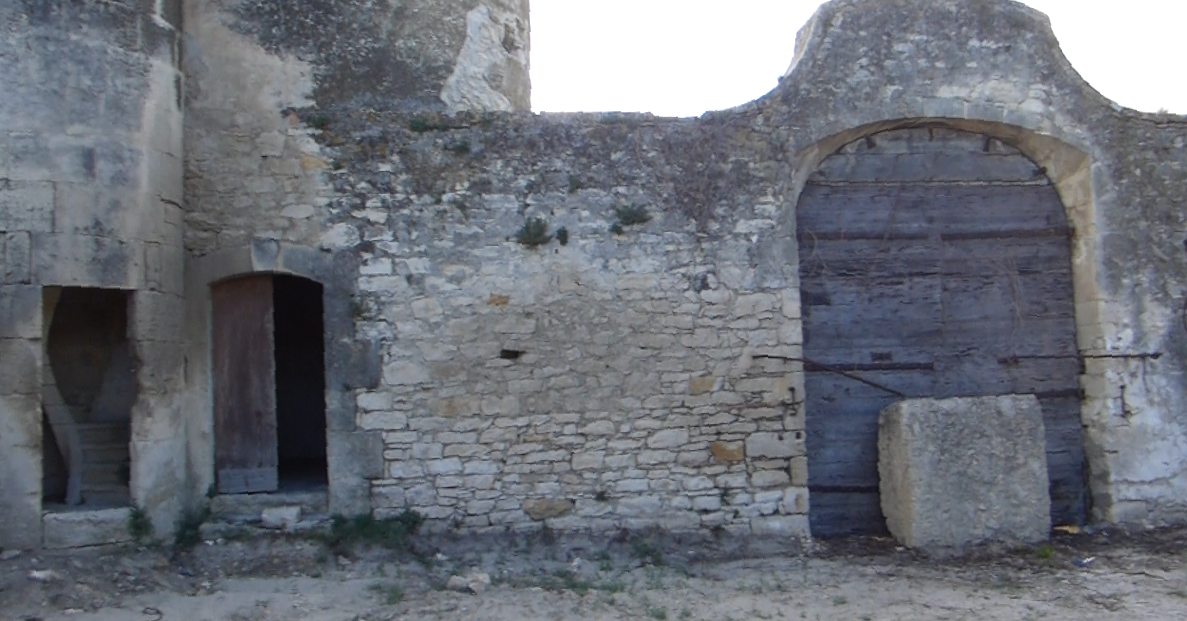

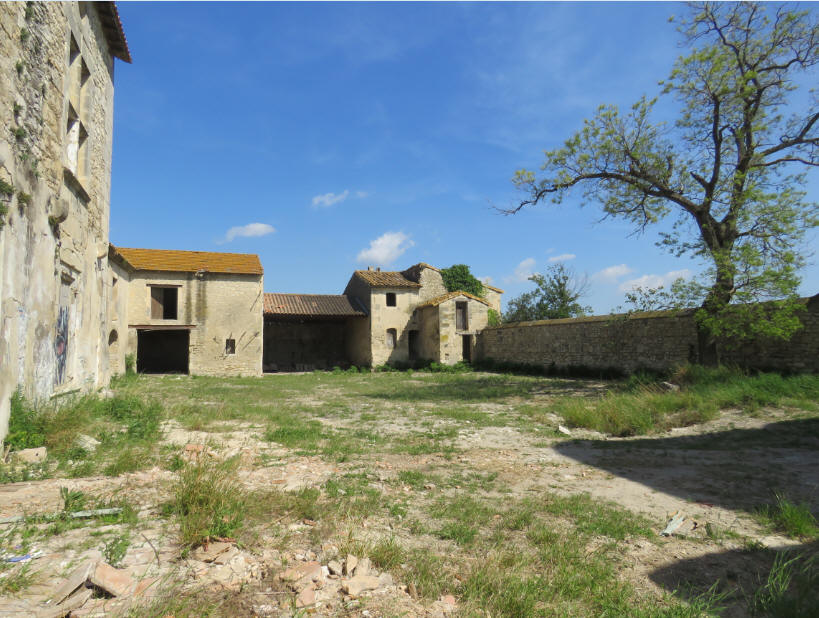
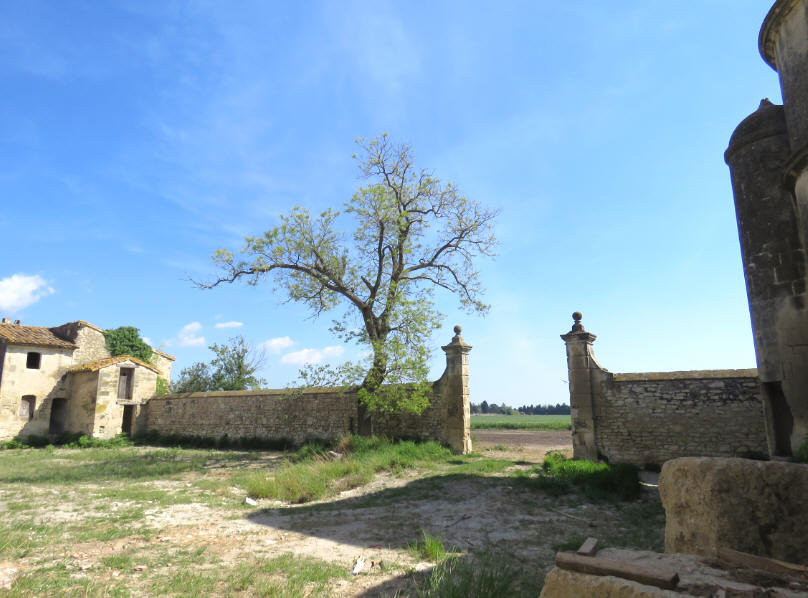
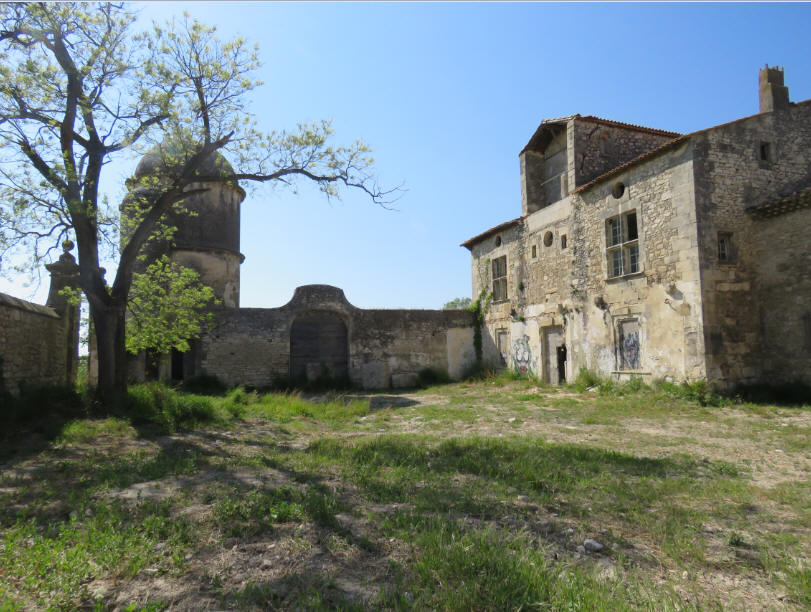
Before
it maybe disappears due to water damage or in the worst case demolition, because
it remains so neglected...here are some more pictures of the many rooms.
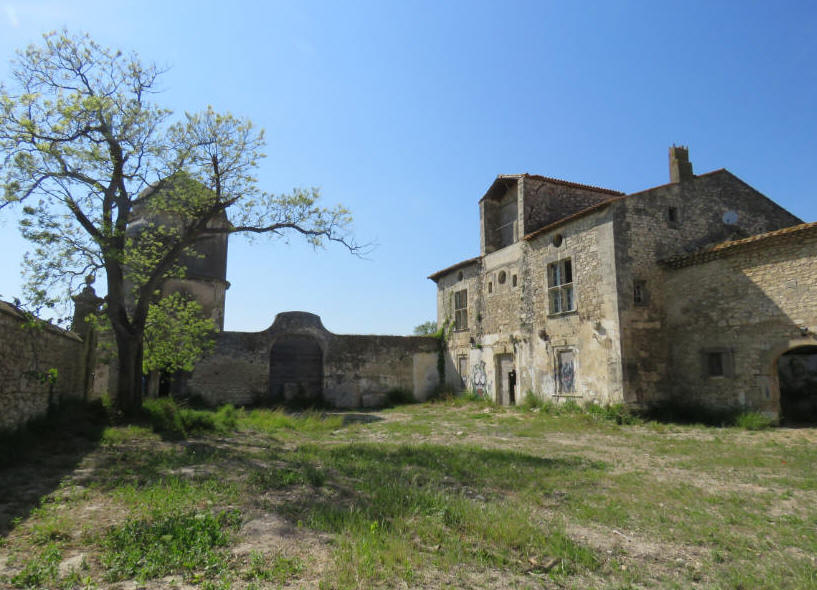
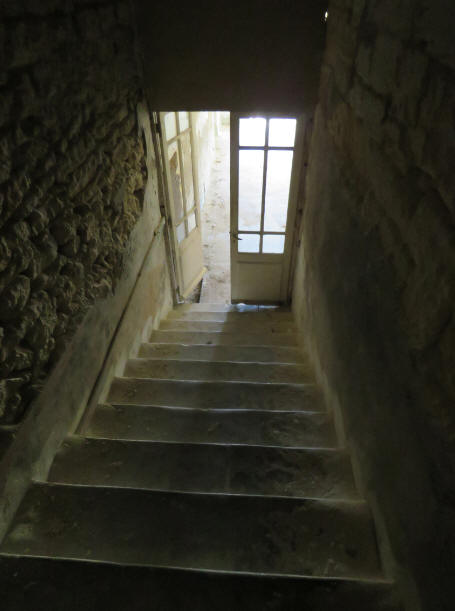
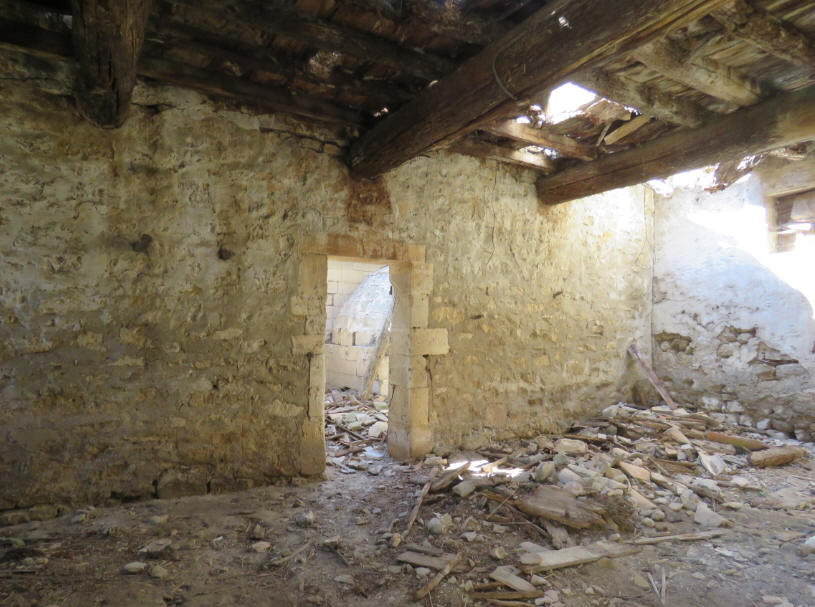
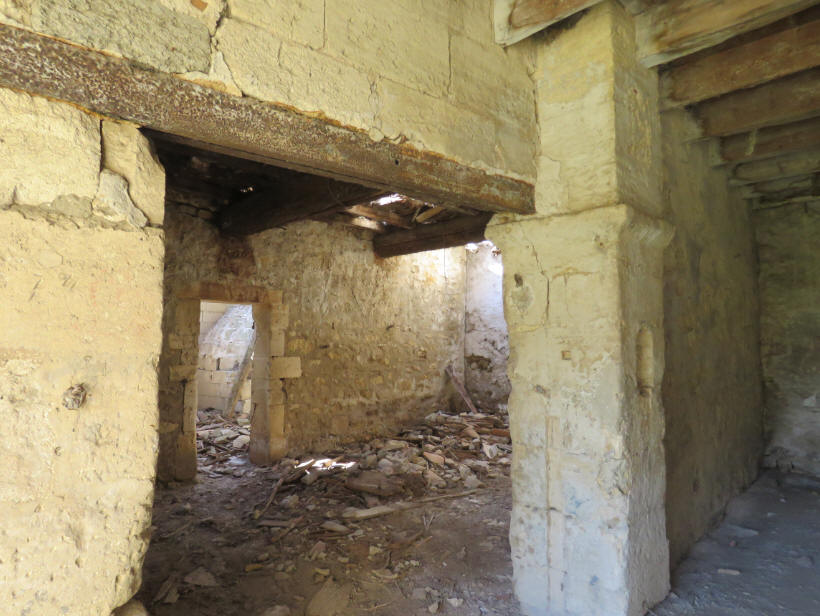
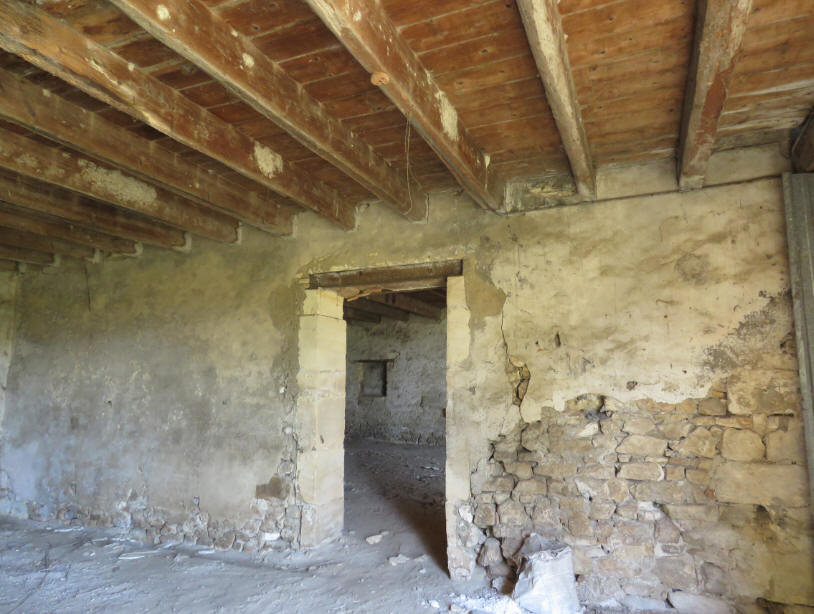
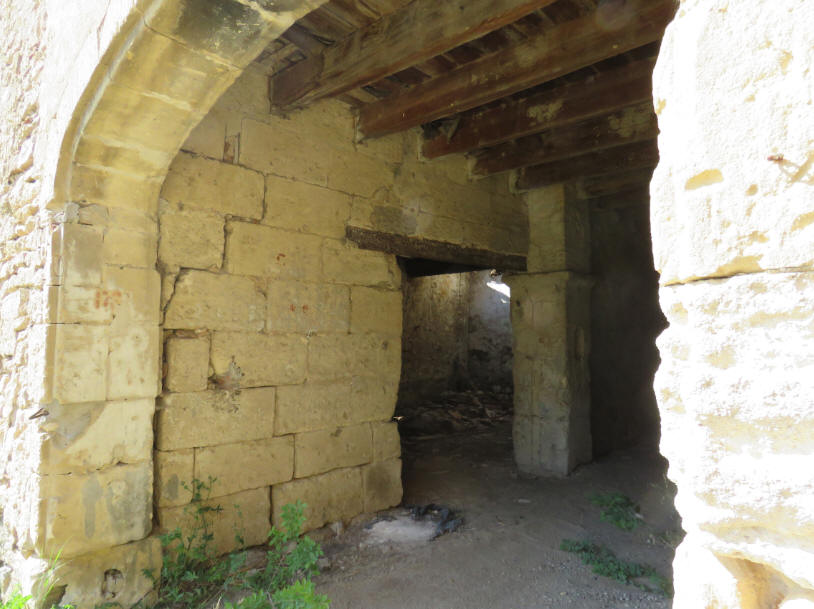
Danger of collapse 2015
Next to the main building a ruined roof. This farm is dangerous to enter.
Because
the roof has not been repaired in years and also has no plastic sheets, the roof
has become wetter and eventually collapsed.
The rest will follow I'm afraid. This was one of two places on
the property where the
bakery scene
was shot. In the main house and this building next door. Shame.
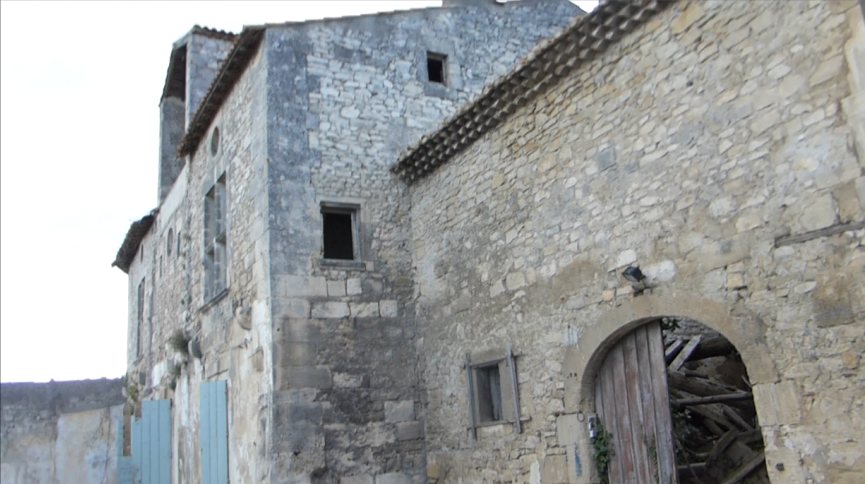
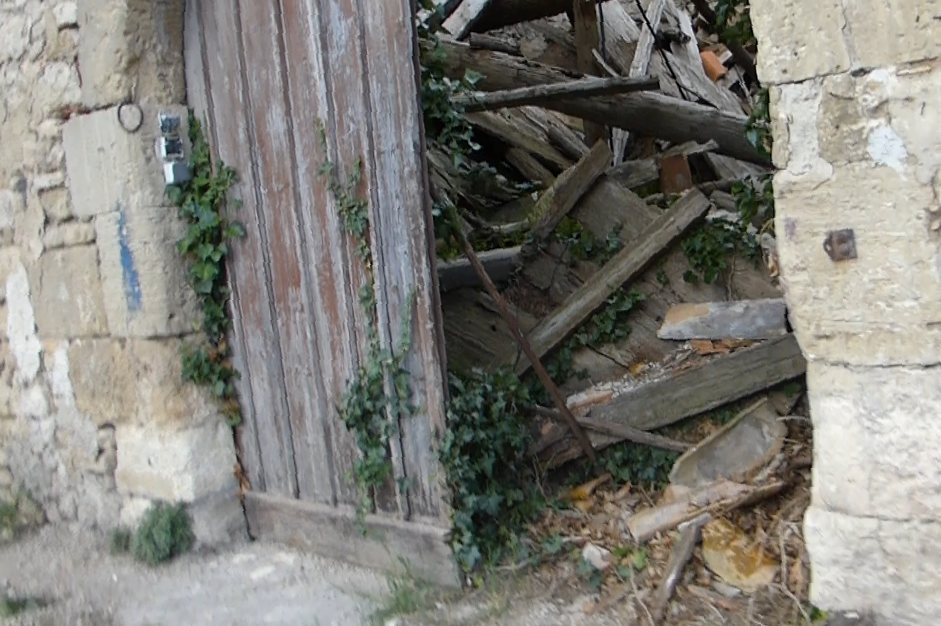
What a
shame. Comparing the photos of the last 5 year...I have never seen one
improvenment. Even not a start..where there's a wil there is a way, we say..
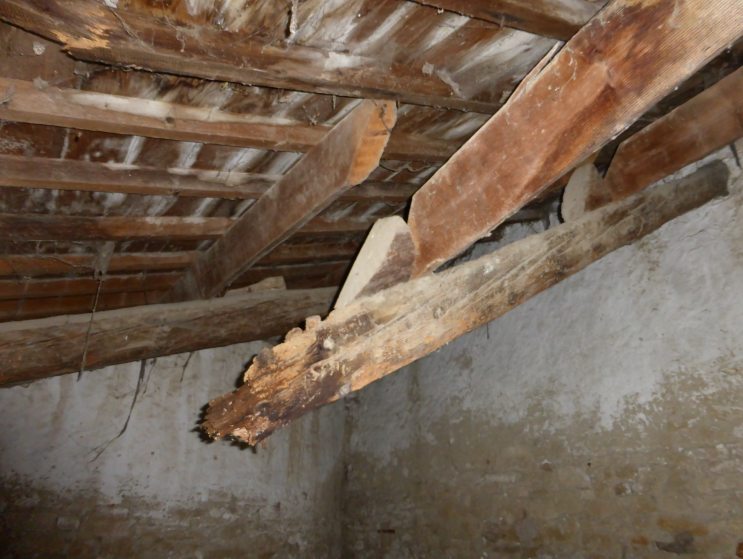
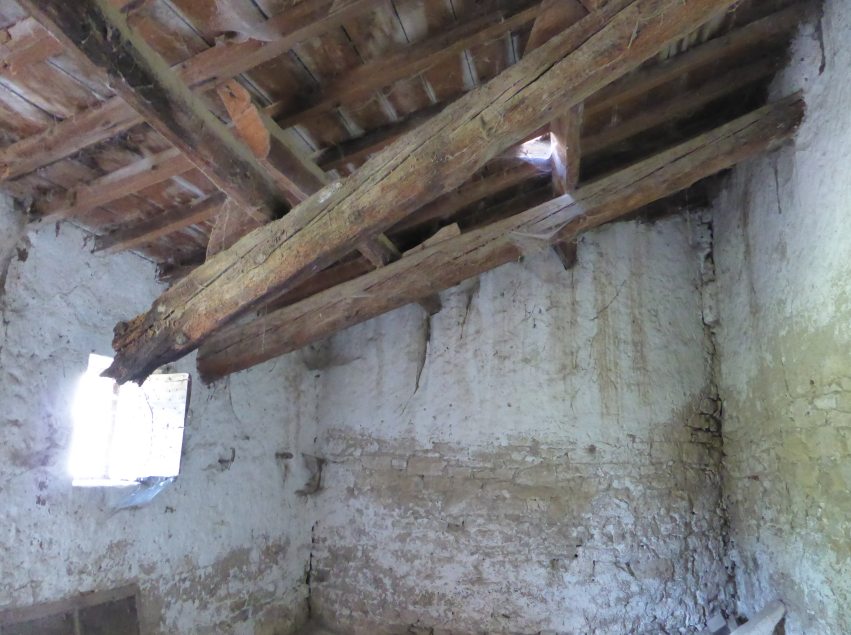

How idyllic...if you don't
look at the photos right above....
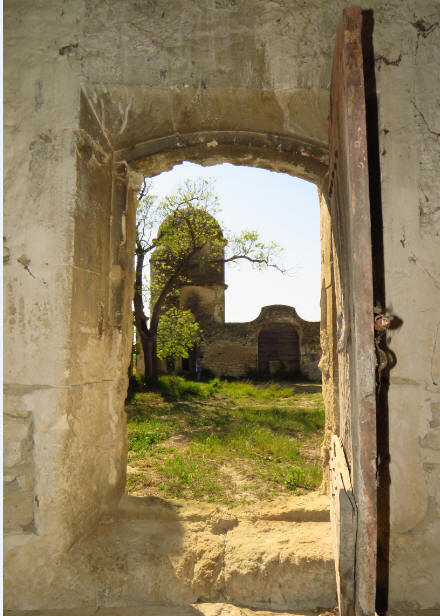

I think this is a very unique building
as have never seen a second one with a walled garden and two towers with traces
of a dovecote.
This was a stately farm and the walls were perhaps for
protection? Were the tower(s) a grain store, a silo, a dovecote, or both



















































































































































































































































































































































































